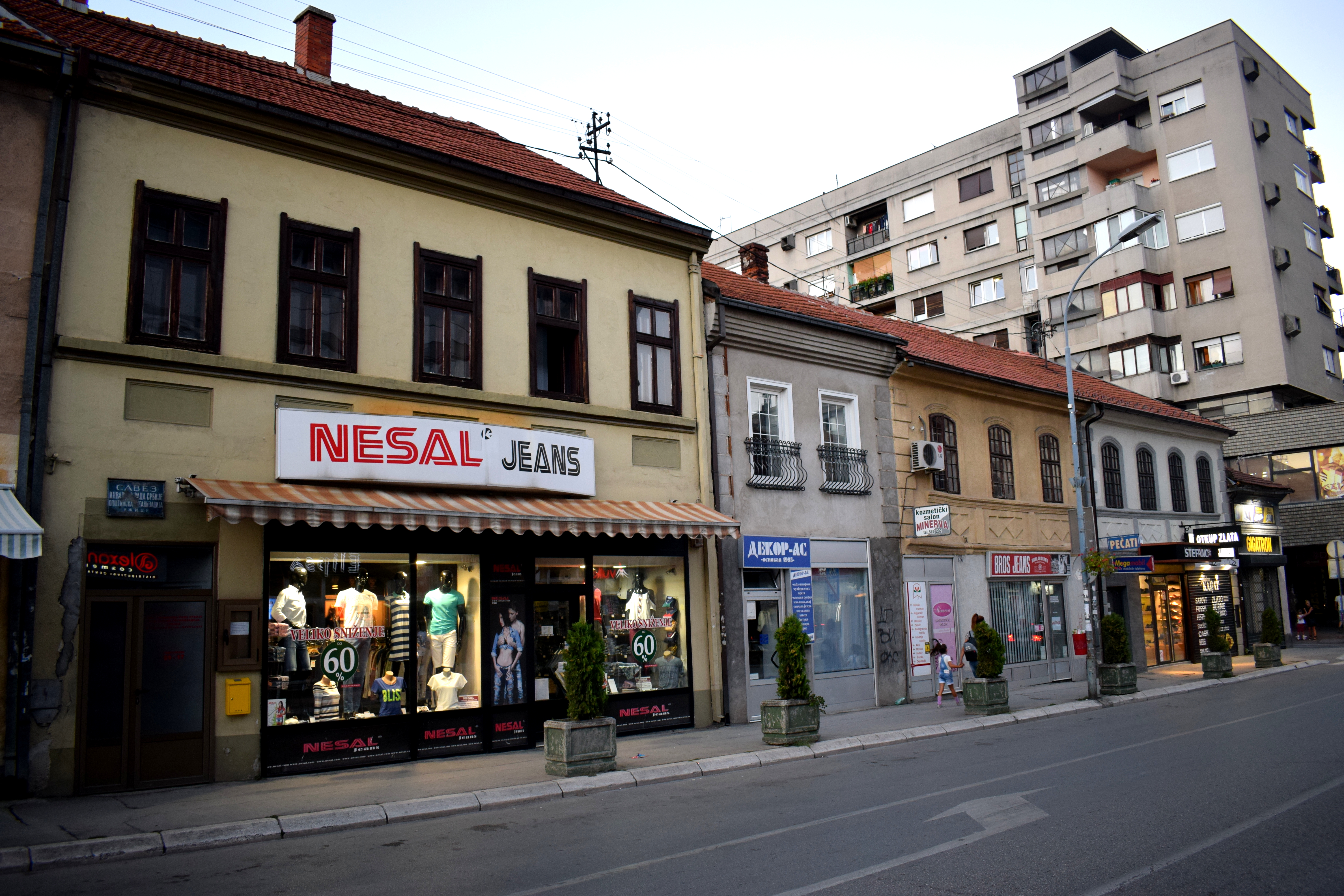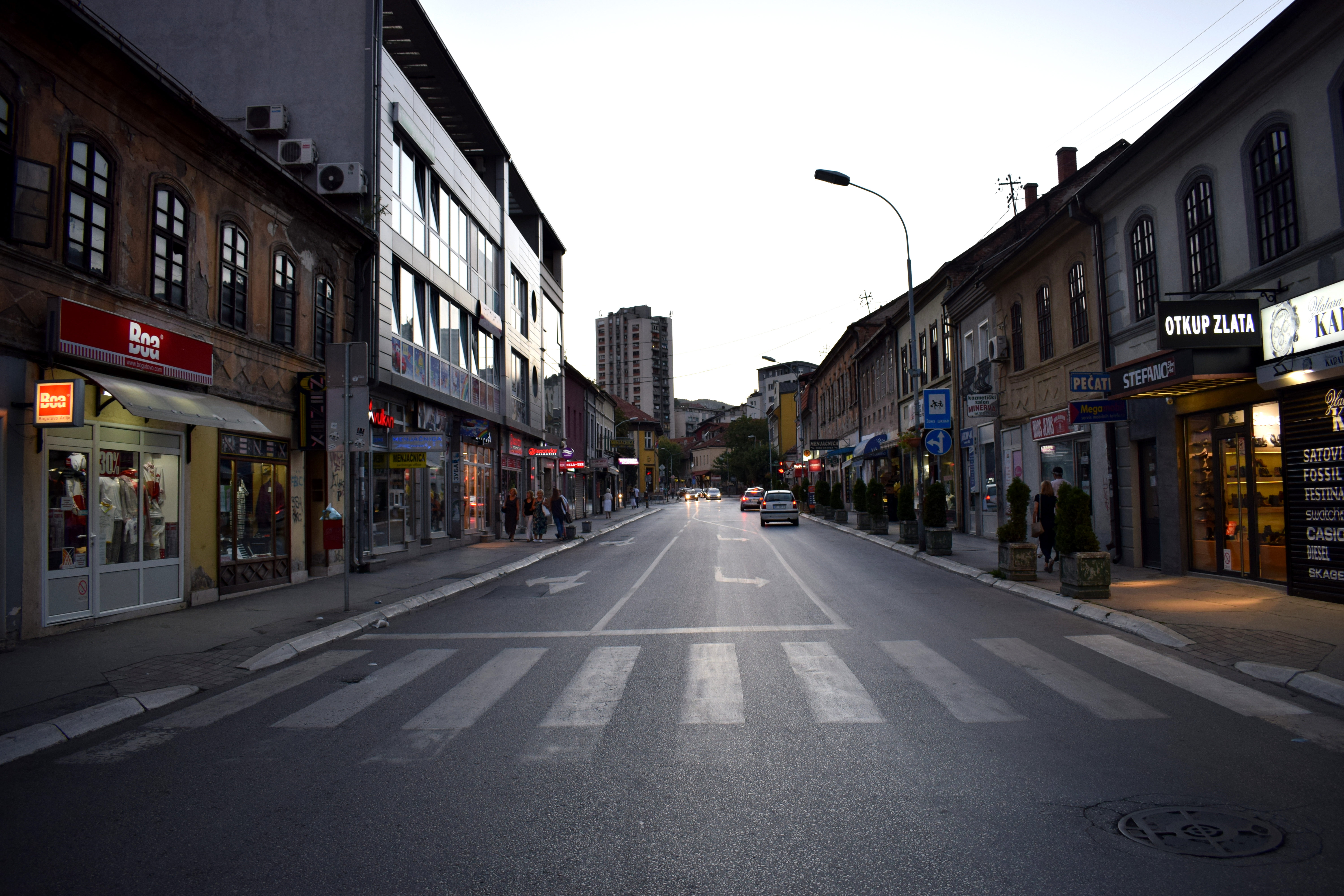The Boris Nemtsov March: Three Years On
Three years ago Russia’s leading opposition figure Boris Nemtsov was shot on a bridge just outside the Kremlin.
Five people have been charged with his murder, although substantial evidence indicates that other people were responsible for his death.
On Sunday Russians came out to march in honor of the slain critic. Boris Nemtsov led protests against Putin in Moscow in 2011-2012. He later became an outspoken critic over Russia’s role in the Ukraine crisis and published a report on the $50 billion Sochi Olympics exposing widespread graft and corruption.
Between 7,000-8,000 people came out for the march with temperatures hovering at -15 degrees Celsius.
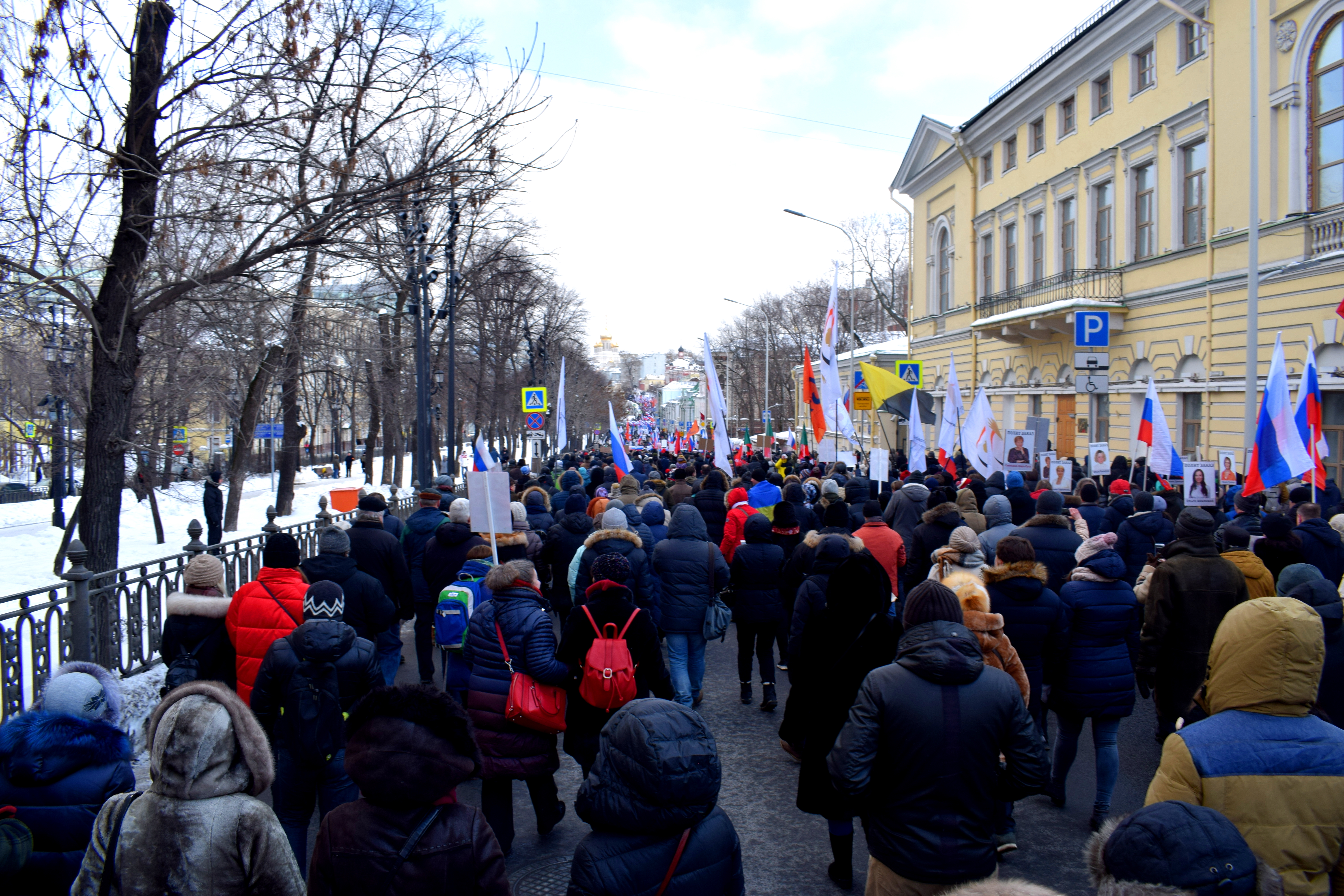 People came carrying pictures of Boris Nemtsov and waving Russian flags.
People came carrying pictures of Boris Nemtsov and waving Russian flags.
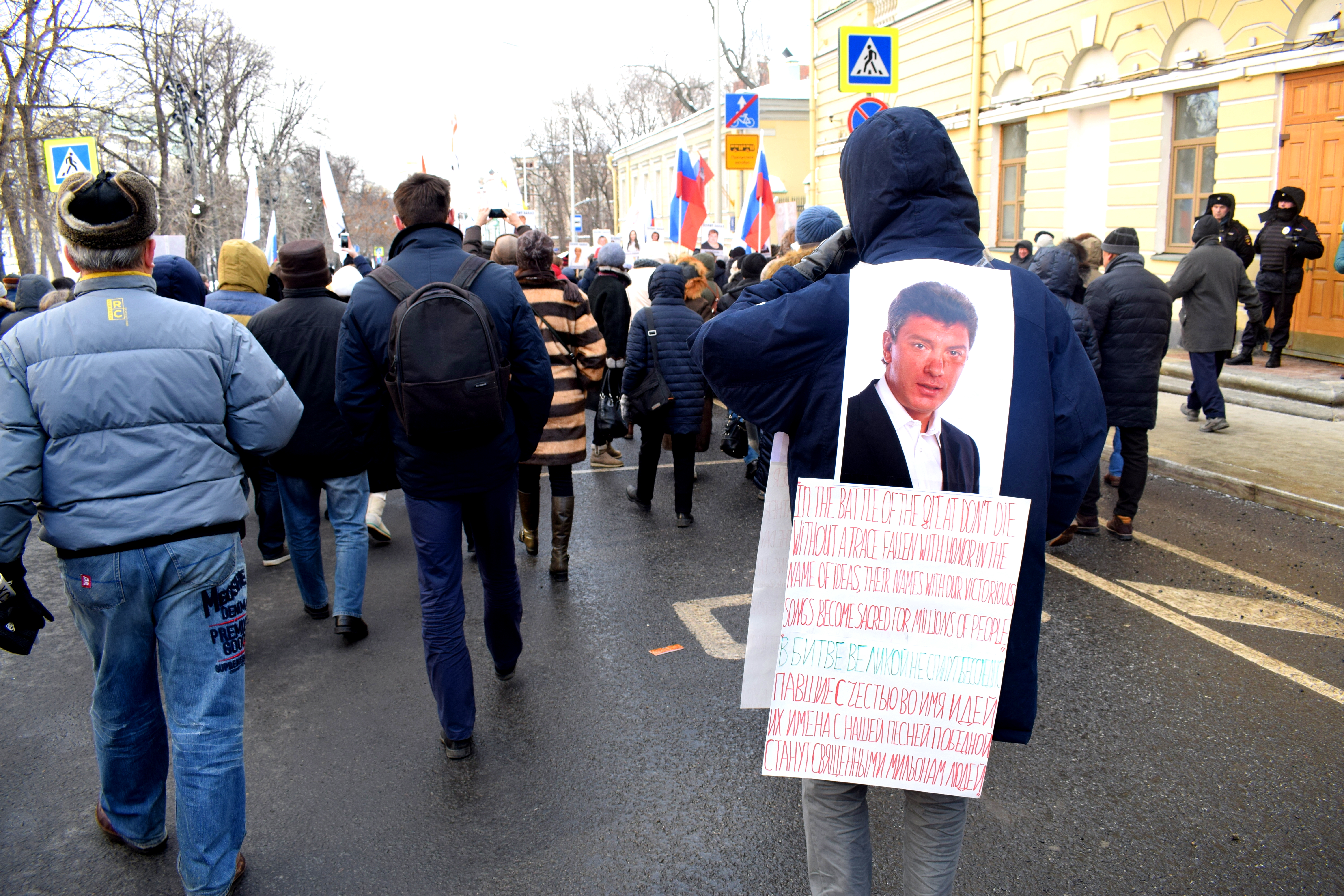 Police had prepared for 30,000 people to show up, although much less people ended up coming. Police put the number at 4,000 people while others said the number was closer to 7,000-8,000.
Police had prepared for 30,000 people to show up, although much less people ended up coming. Police put the number at 4,000 people while others said the number was closer to 7,000-8,000.
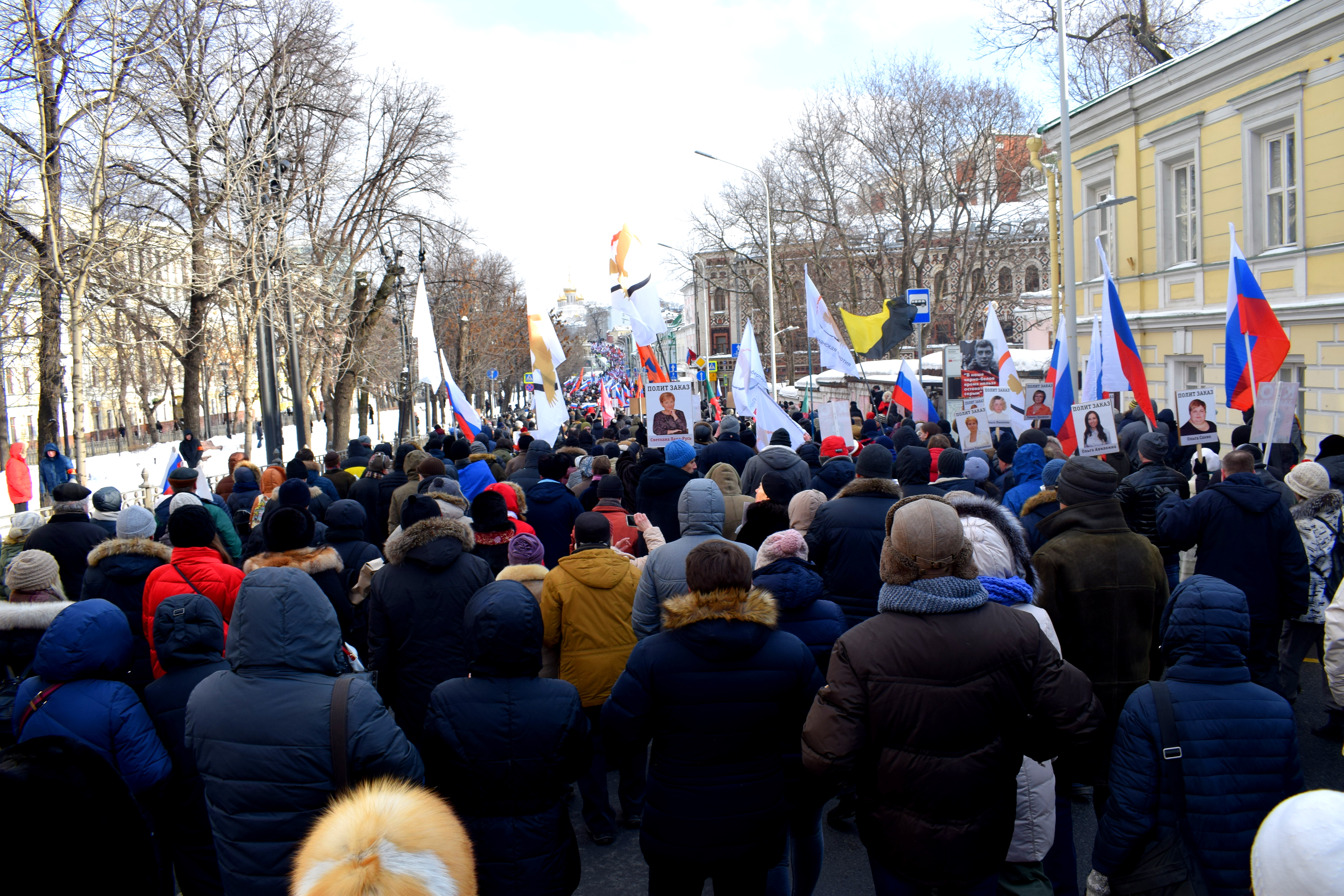 “Killed for freedom.”
“Killed for freedom.”
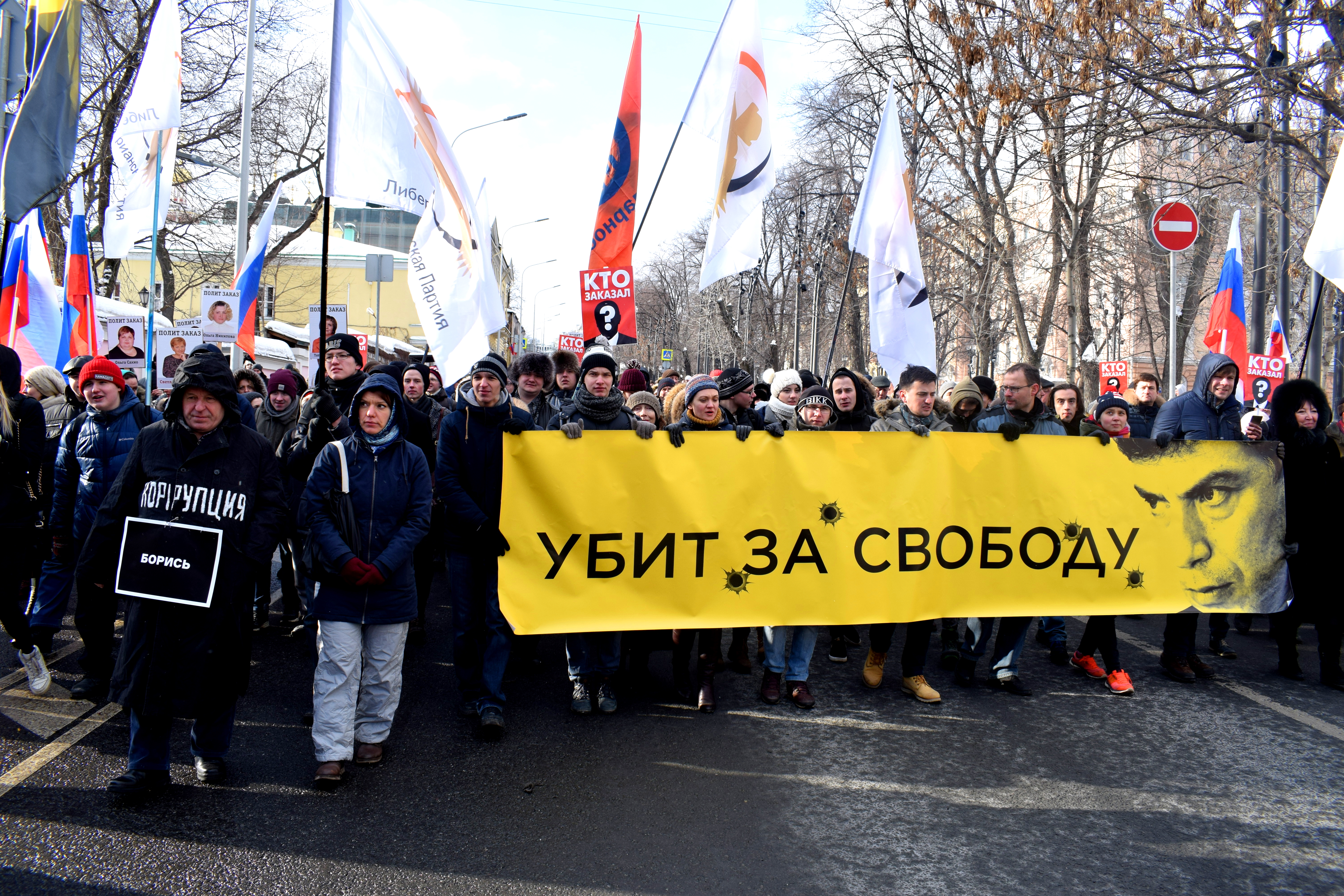 On the left: “Fight every day. Against persecution, repression and fabricated charges.”
On the left: “Fight every day. Against persecution, repression and fabricated charges.”
On the right: “Freedom for antifascists.”
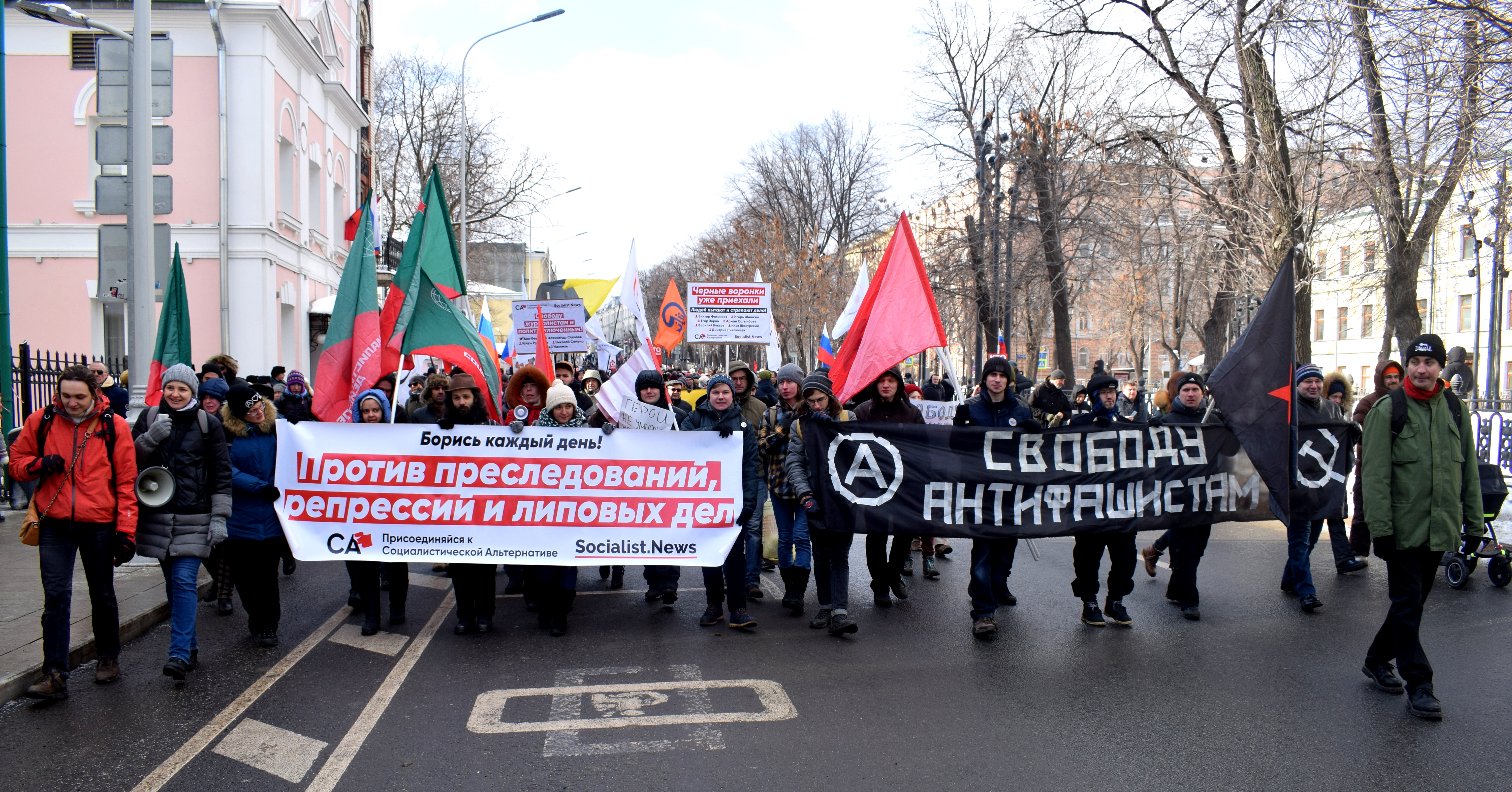 Unlike protests in Europe or North America where anybody walking by can join, in Moscow police cornered off a section of the city so only those that knew about the march and joined it at the beginning could attend. People walking by on side streets were not allowed to join. This tactic keeps the numbers and publicity of opposition events down.
Unlike protests in Europe or North America where anybody walking by can join, in Moscow police cornered off a section of the city so only those that knew about the march and joined it at the beginning could attend. People walking by on side streets were not allowed to join. This tactic keeps the numbers and publicity of opposition events down.
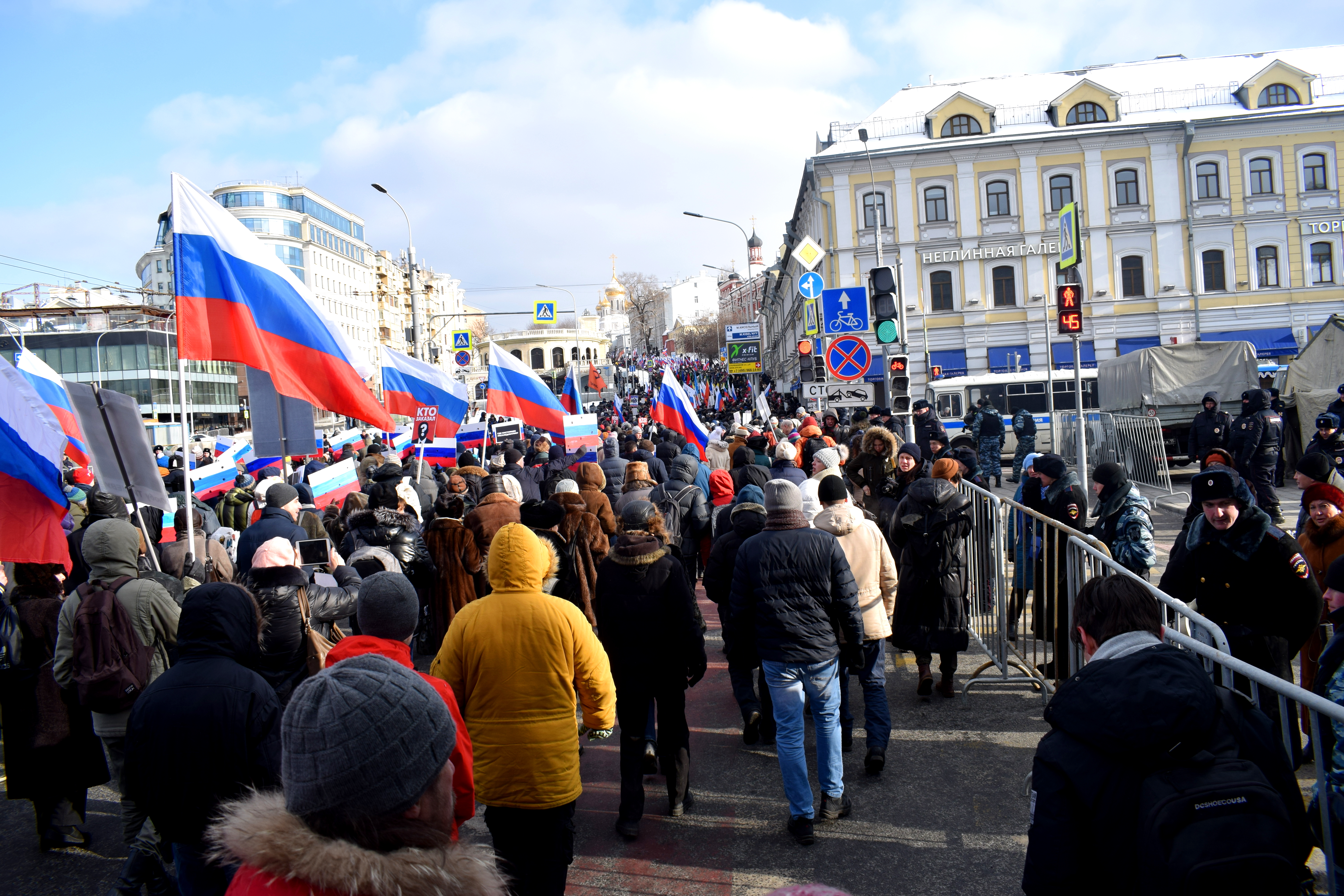 The flag of the Solidarnost Party, a liberal democratic political party founded by Boris Nemtsov, Garry Kasparov and other well-known opposition parties in 2008.
The flag of the Solidarnost Party, a liberal democratic political party founded by Boris Nemtsov, Garry Kasparov and other well-known opposition parties in 2008.
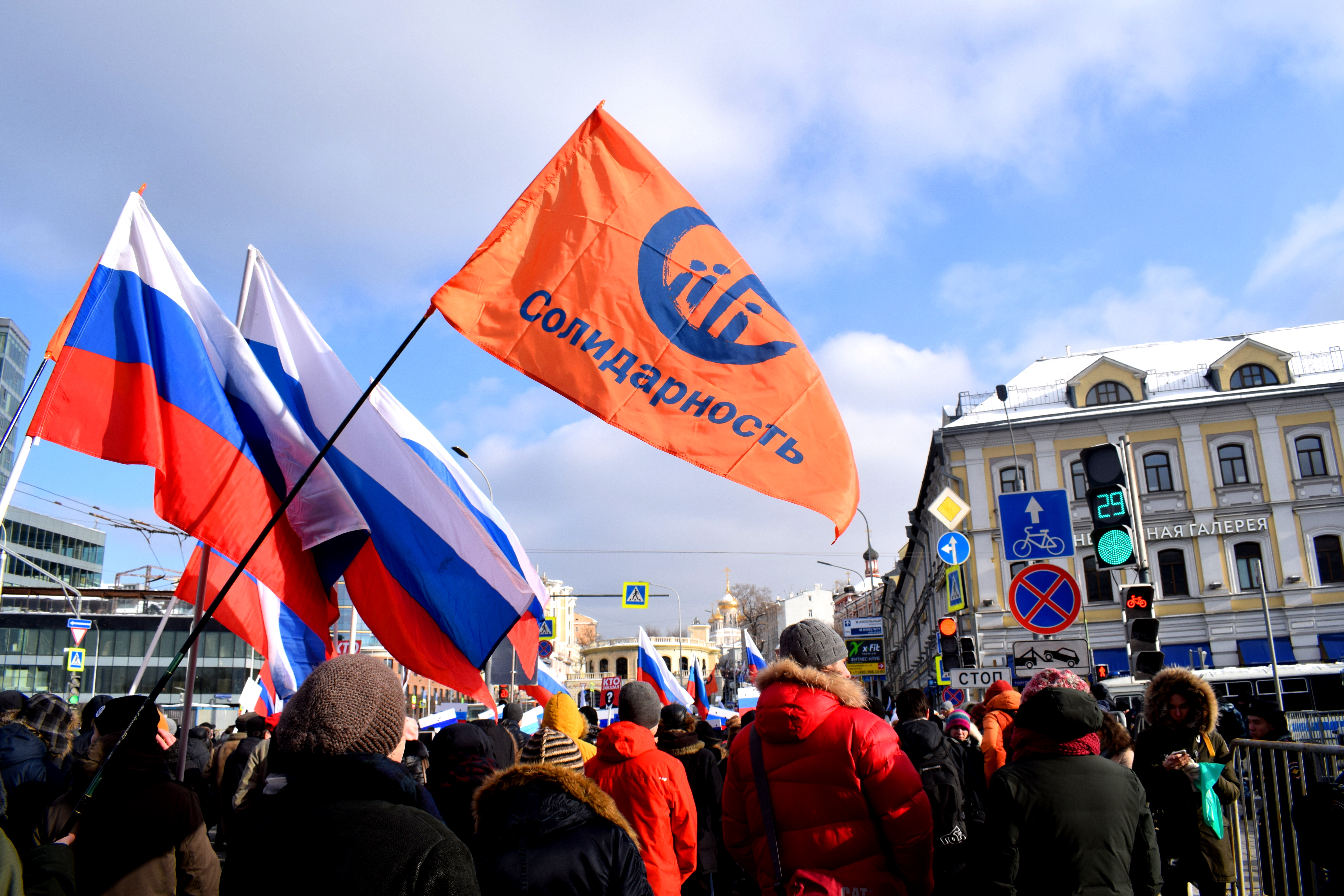 “No Words”
“No Words”
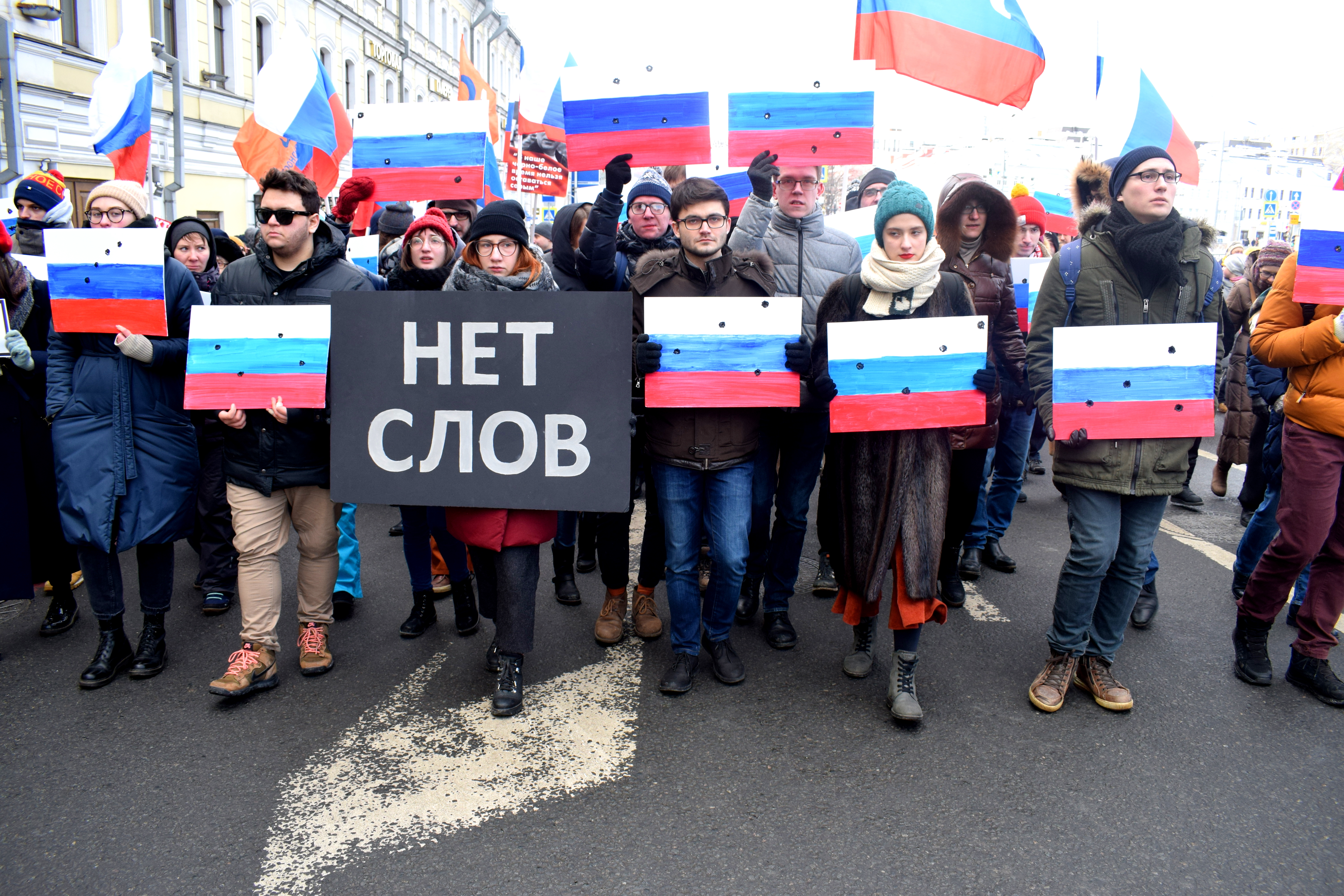 A Ukrainian flag amid a sea of Russian flags.
A Ukrainian flag amid a sea of Russian flags.
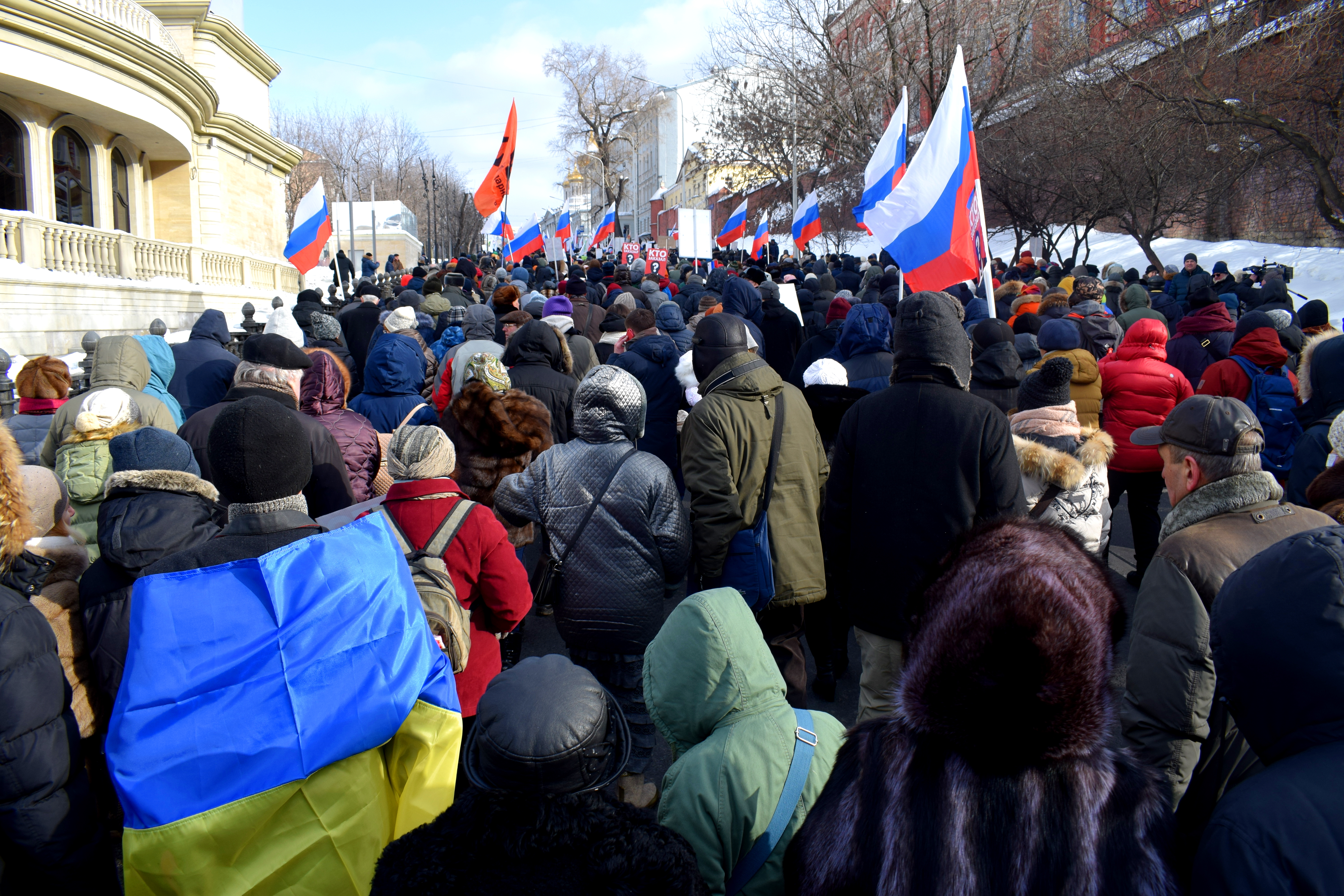 “Freedom nation republicanism”
“Freedom nation republicanism”
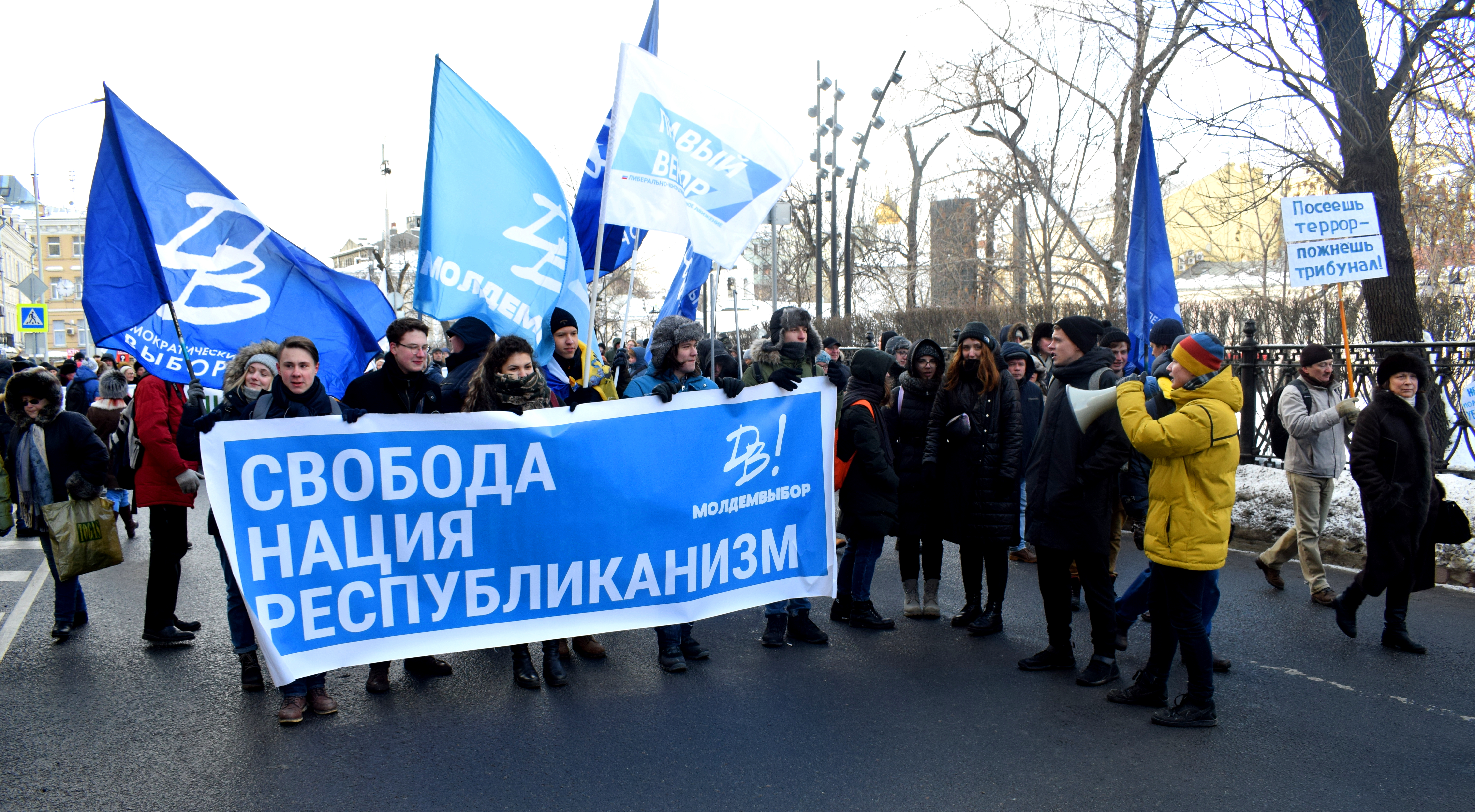 “Russian March opposes political terror.” Russian March is a gathering of Russian nationalists. Even they came out to voice their protest against the murder of the liberal critic, despite being on opposite sides of the political spectrum.
“Russian March opposes political terror.” Russian March is a gathering of Russian nationalists. Even they came out to voice their protest against the murder of the liberal critic, despite being on opposite sides of the political spectrum.
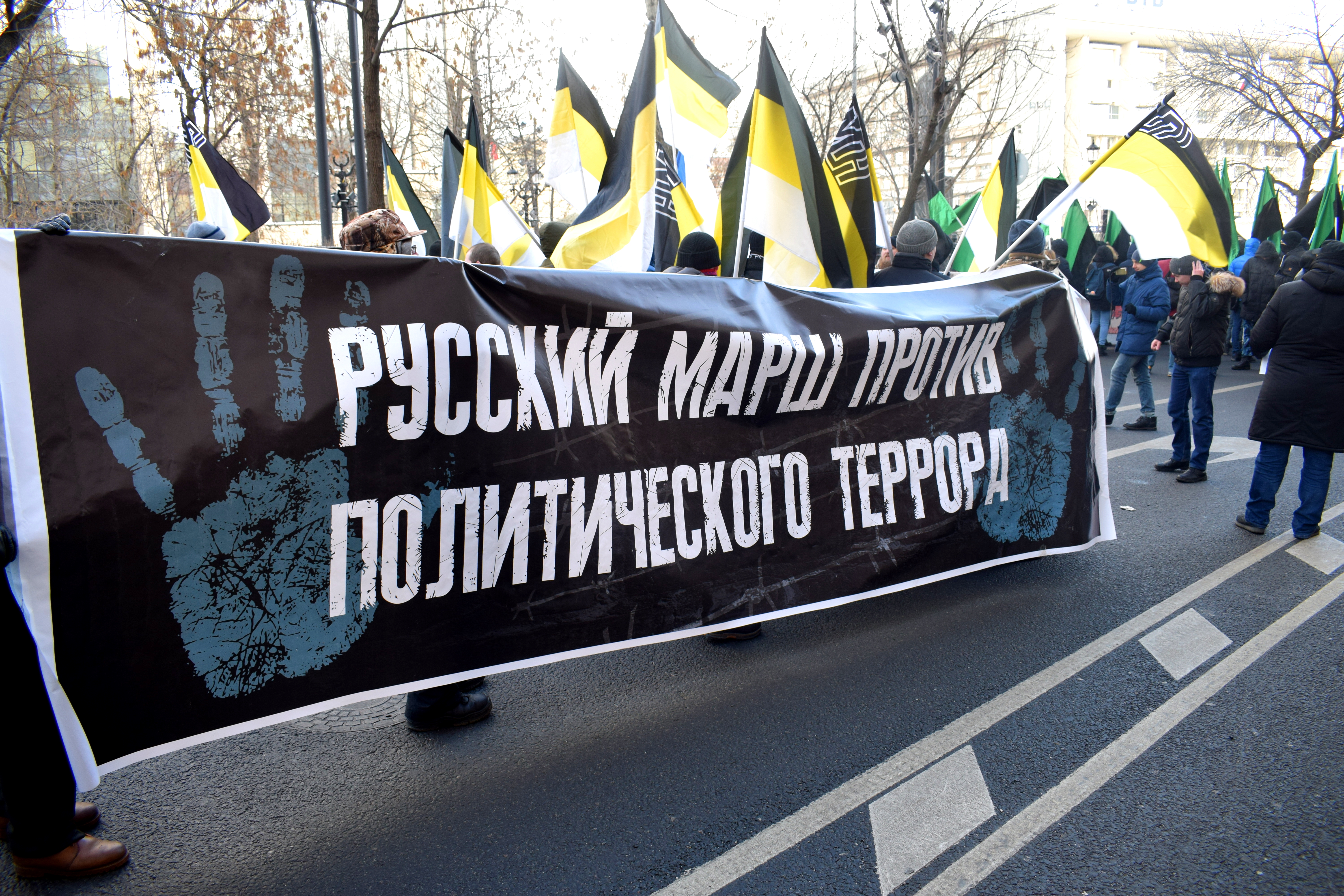 “The right sector opposes political repression.”
“The right sector opposes political repression.”
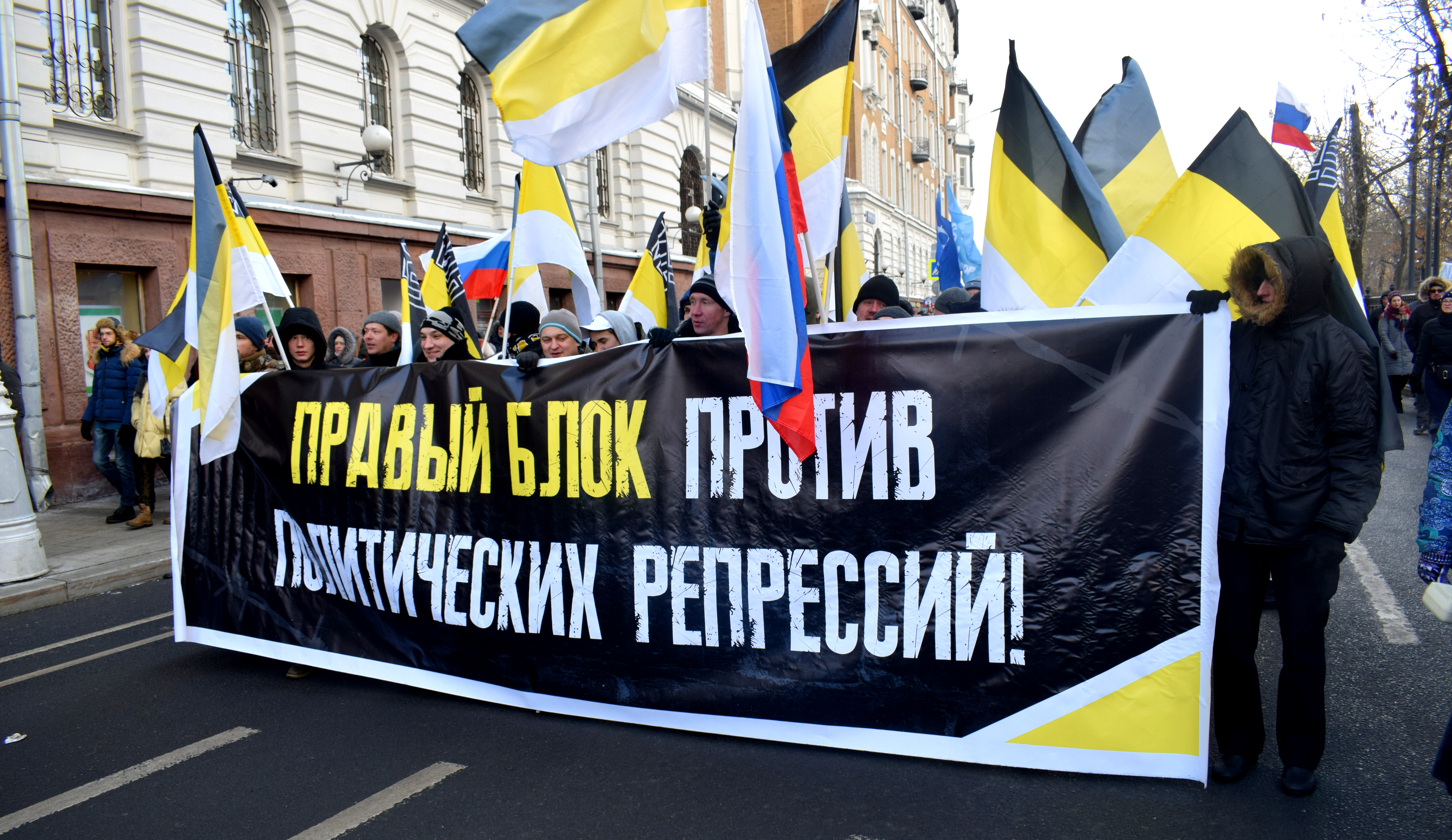 “We ourselves will build our motherland.”
“We ourselves will build our motherland.”
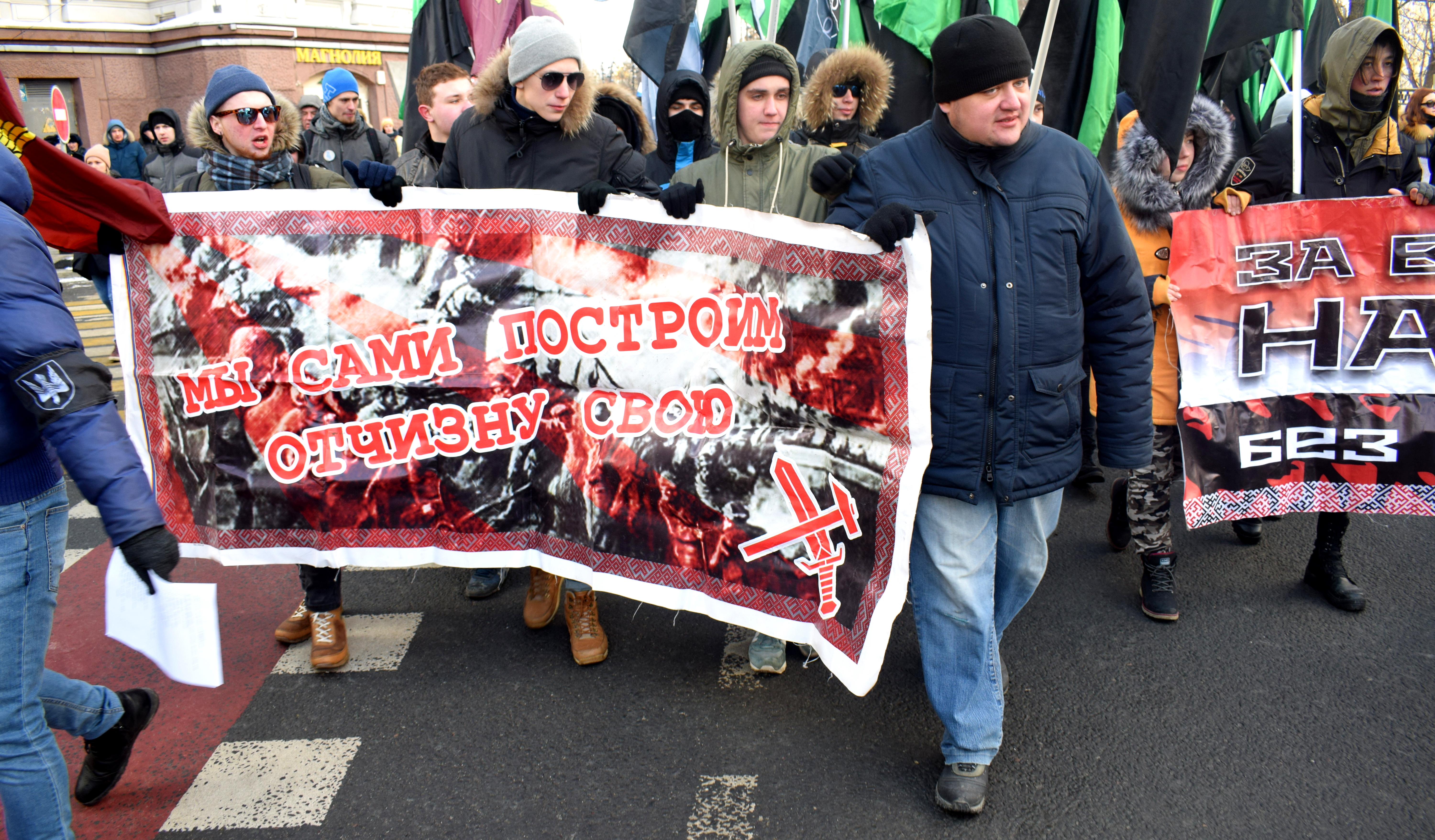 Approaching Sakharov Prospect where the majority of Russian marches and opposition meetings are held.
Approaching Sakharov Prospect where the majority of Russian marches and opposition meetings are held.
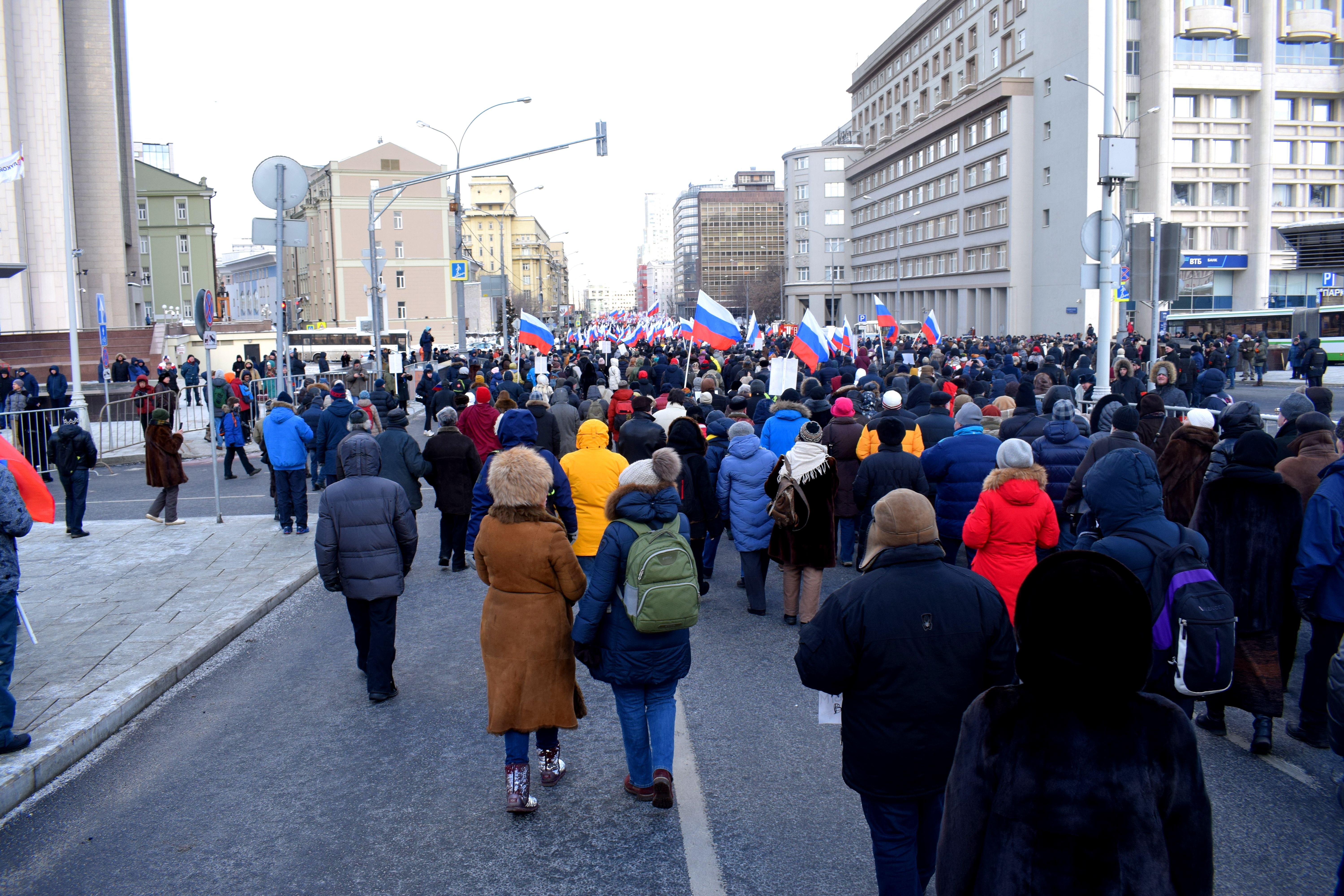
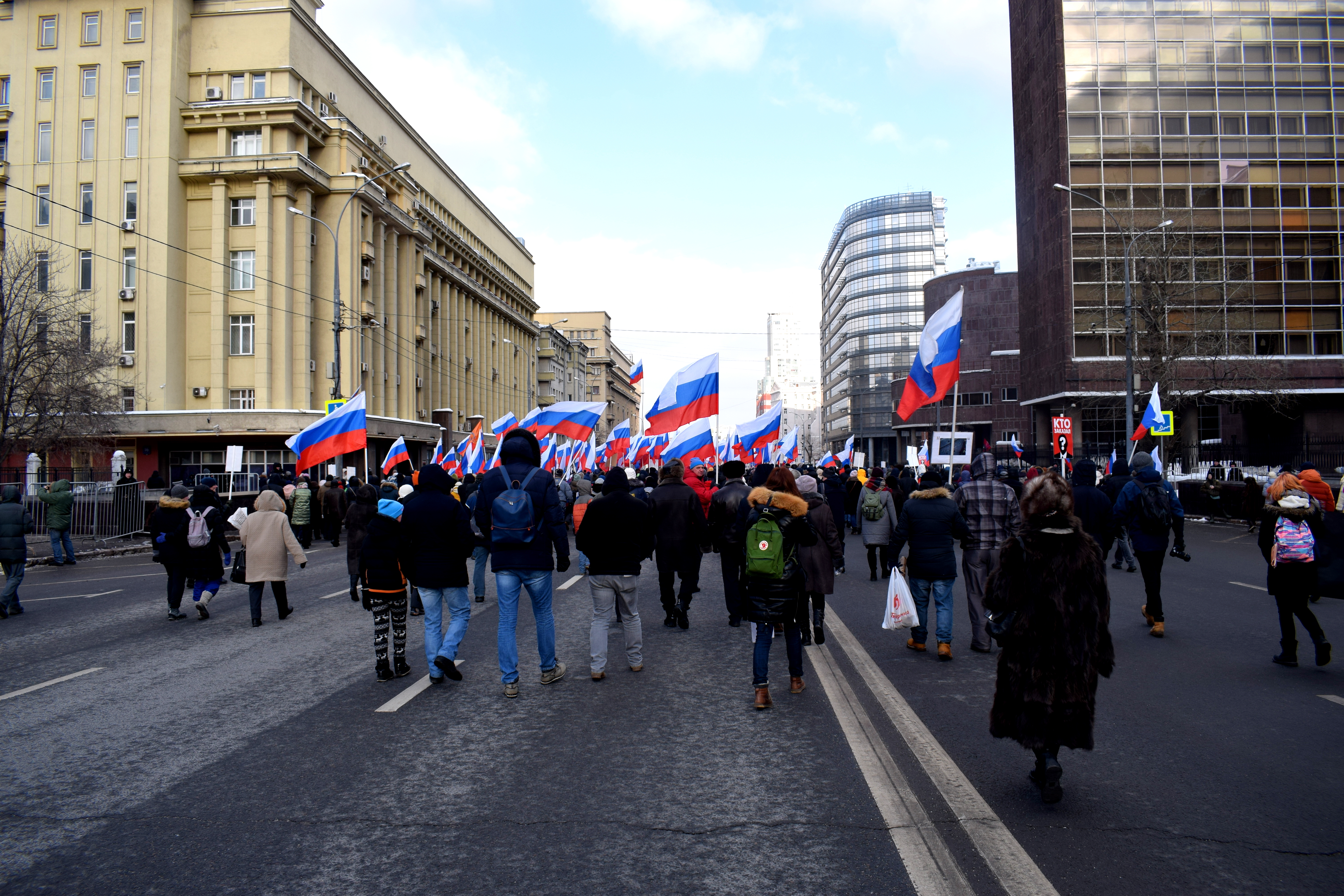 A balloon with Alexei Navalny’s logo on it surrounded by Russian flags. Alexei Navalny is Russia’s main opposition leader who has been banned from running for elections in March 2018 despite widespread popularity.
A balloon with Alexei Navalny’s logo on it surrounded by Russian flags. Alexei Navalny is Russia’s main opposition leader who has been banned from running for elections in March 2018 despite widespread popularity.
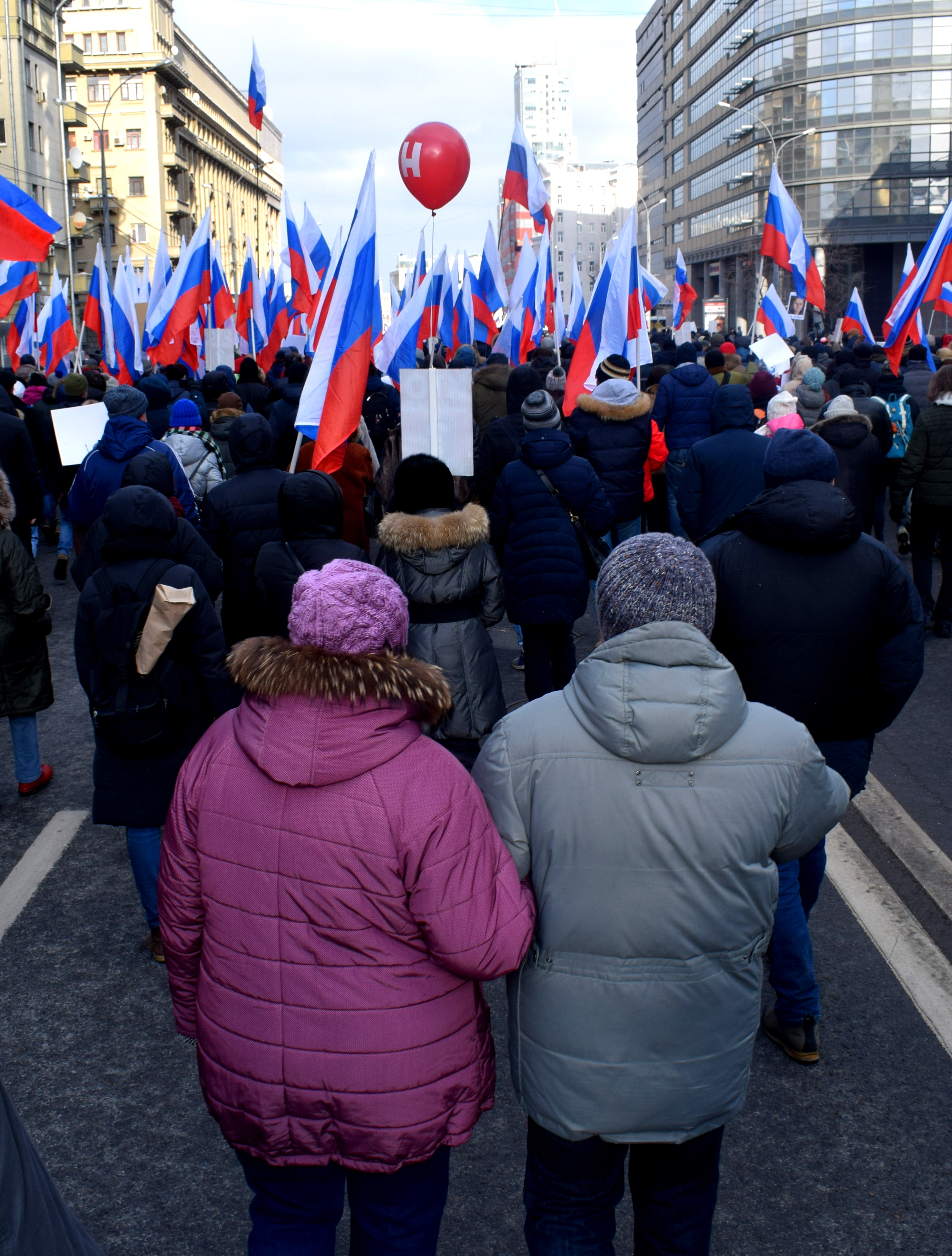 More Russian flags.
More Russian flags.
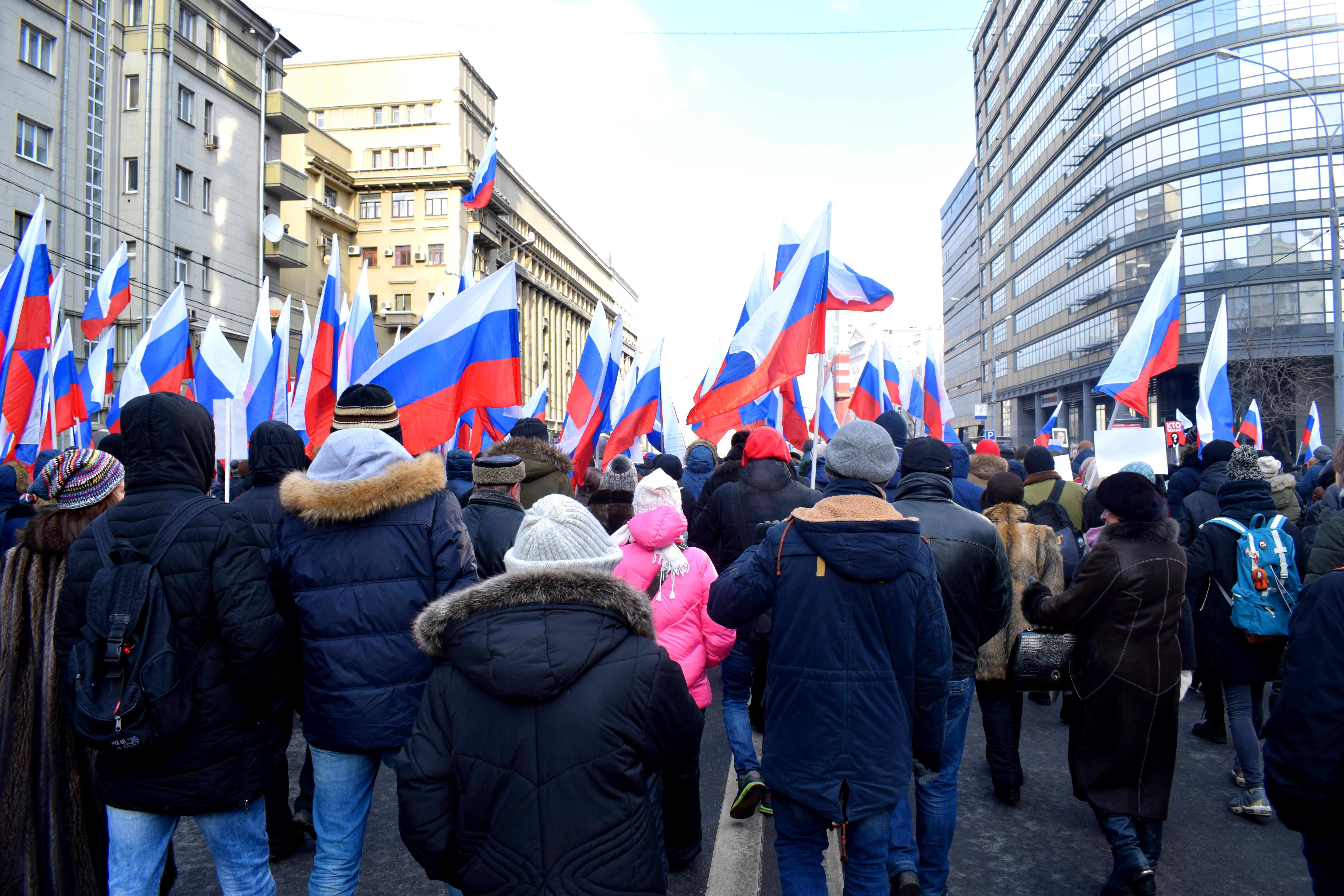
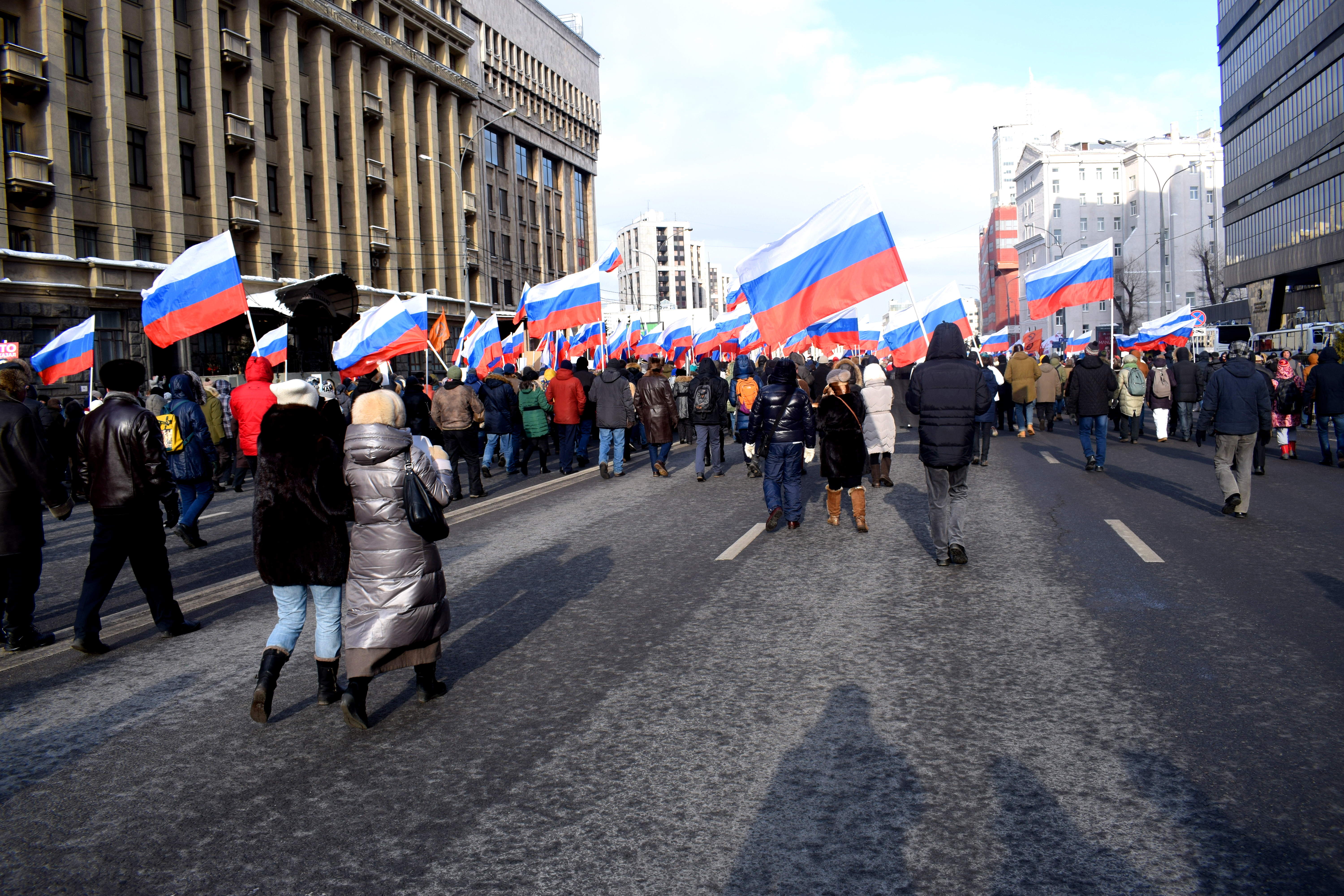
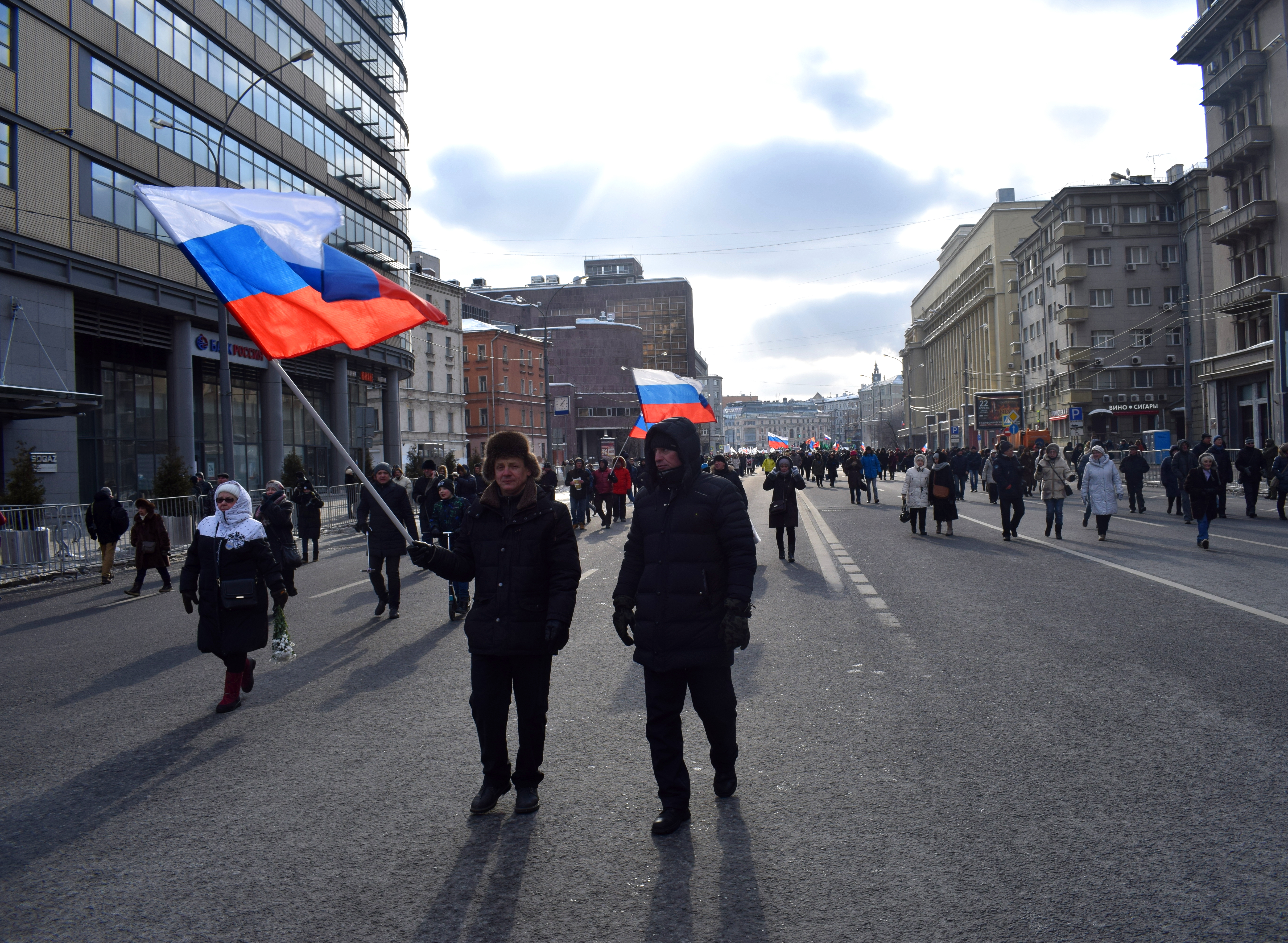 On the right there is a billboard that says ‘our choice.’ These billboards have popped up all over Moscow in recent weeks to encourage Russians to go to the polls and vote. Alexei Navalny, Russia’s most popular opposition leader, is calling for a boycott.
On the right there is a billboard that says ‘our choice.’ These billboards have popped up all over Moscow in recent weeks to encourage Russians to go to the polls and vote. Alexei Navalny, Russia’s most popular opposition leader, is calling for a boycott.
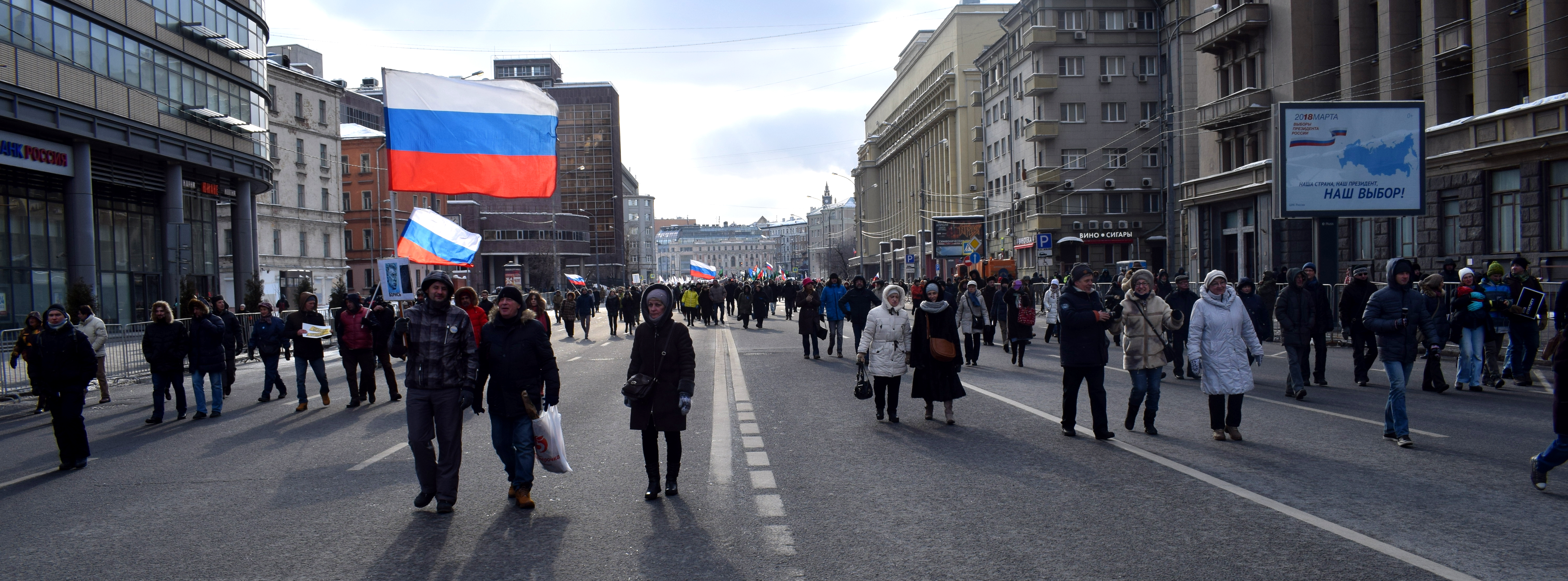 “In Russia there is a deficit of freedom, a deficit of justice.”
“In Russia there is a deficit of freedom, a deficit of justice.”
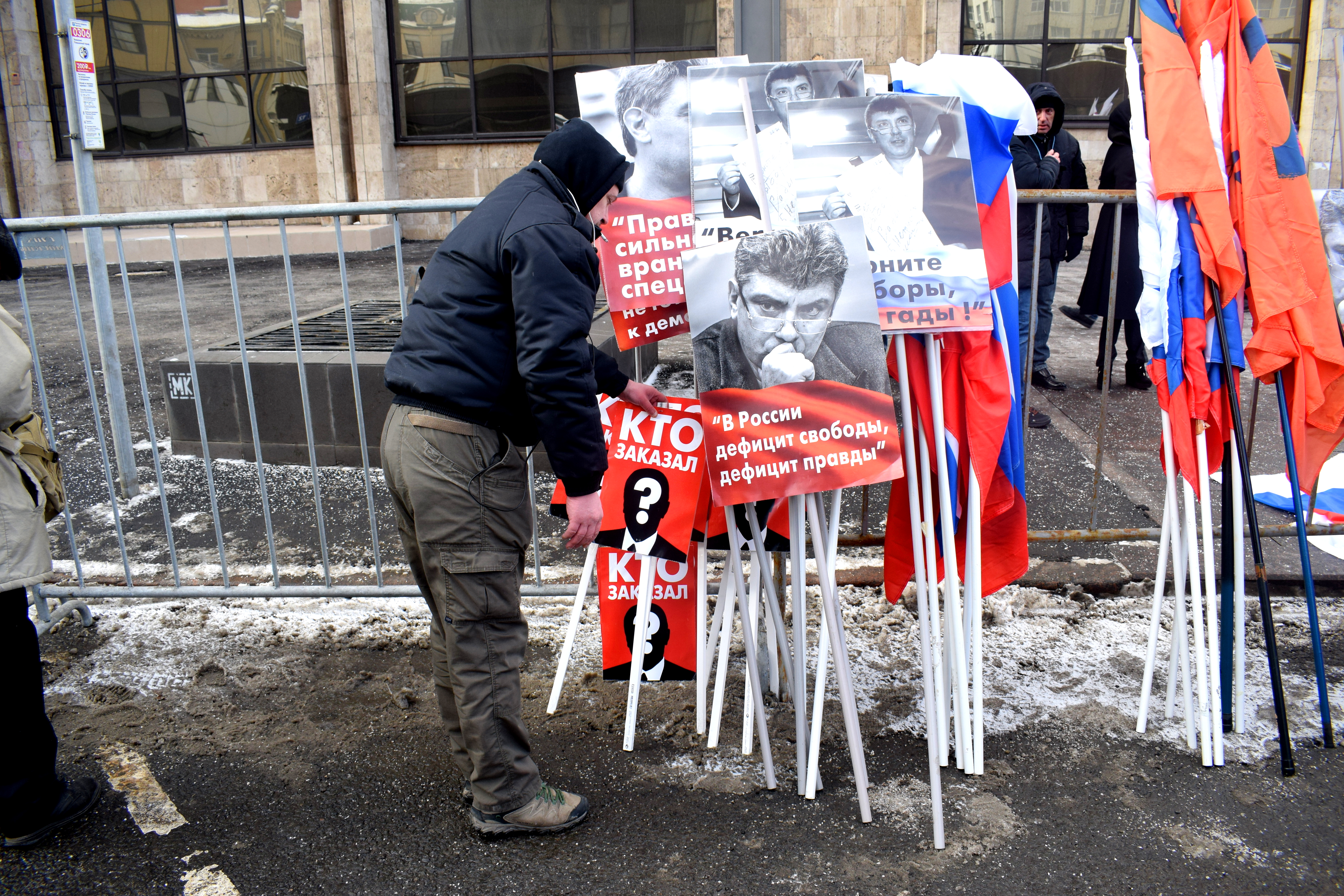 “The glorious descendants of honorable forefathers.”
“The glorious descendants of honorable forefathers.”
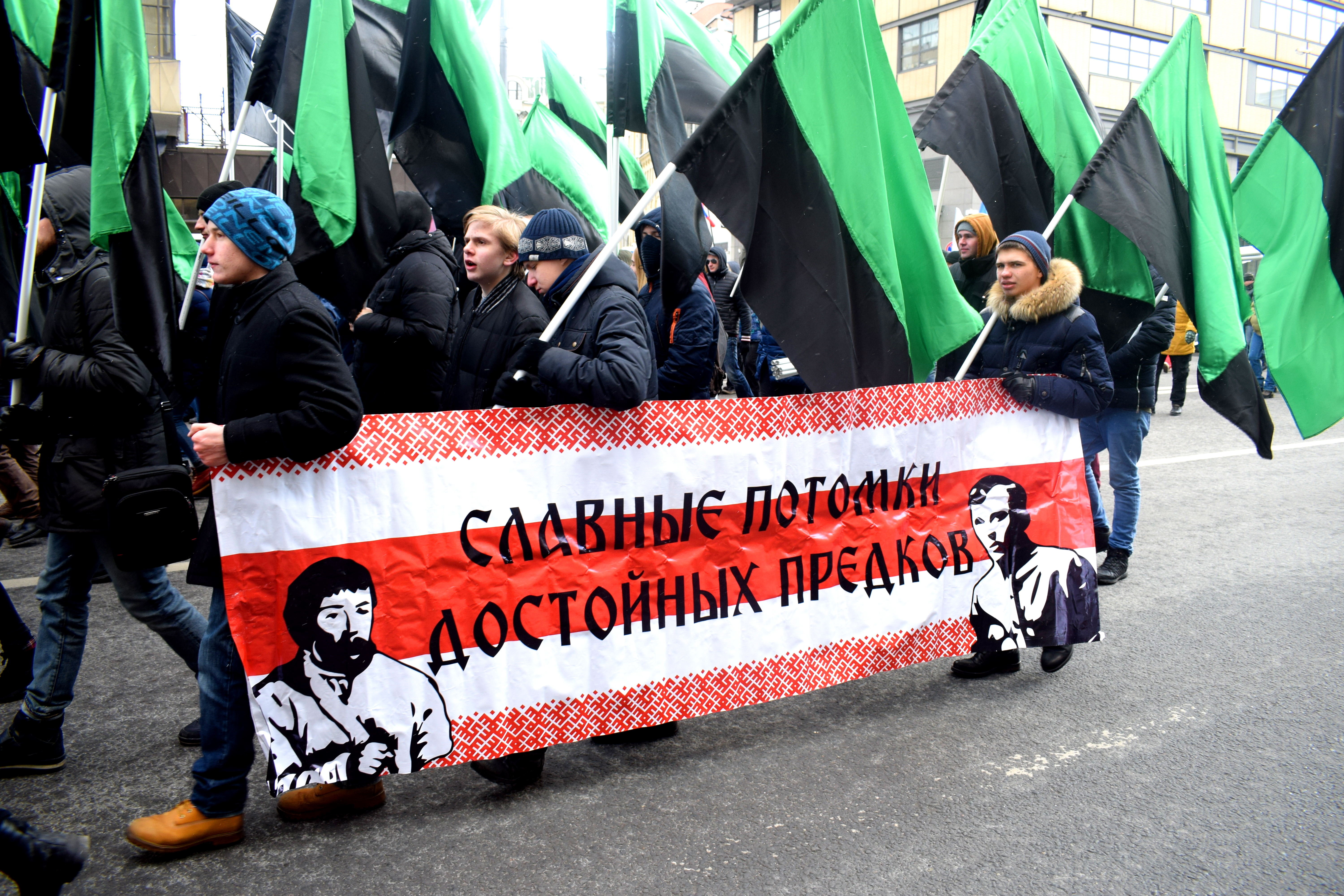 A reference to the American criminal film “Three Billboards Outside Ebbing, Missouri.” In the movie an angry mother rents out three billboards in the city to call attention to the unsolved murder of her daughter.
A reference to the American criminal film “Three Billboards Outside Ebbing, Missouri.” In the movie an angry mother rents out three billboards in the city to call attention to the unsolved murder of her daughter.
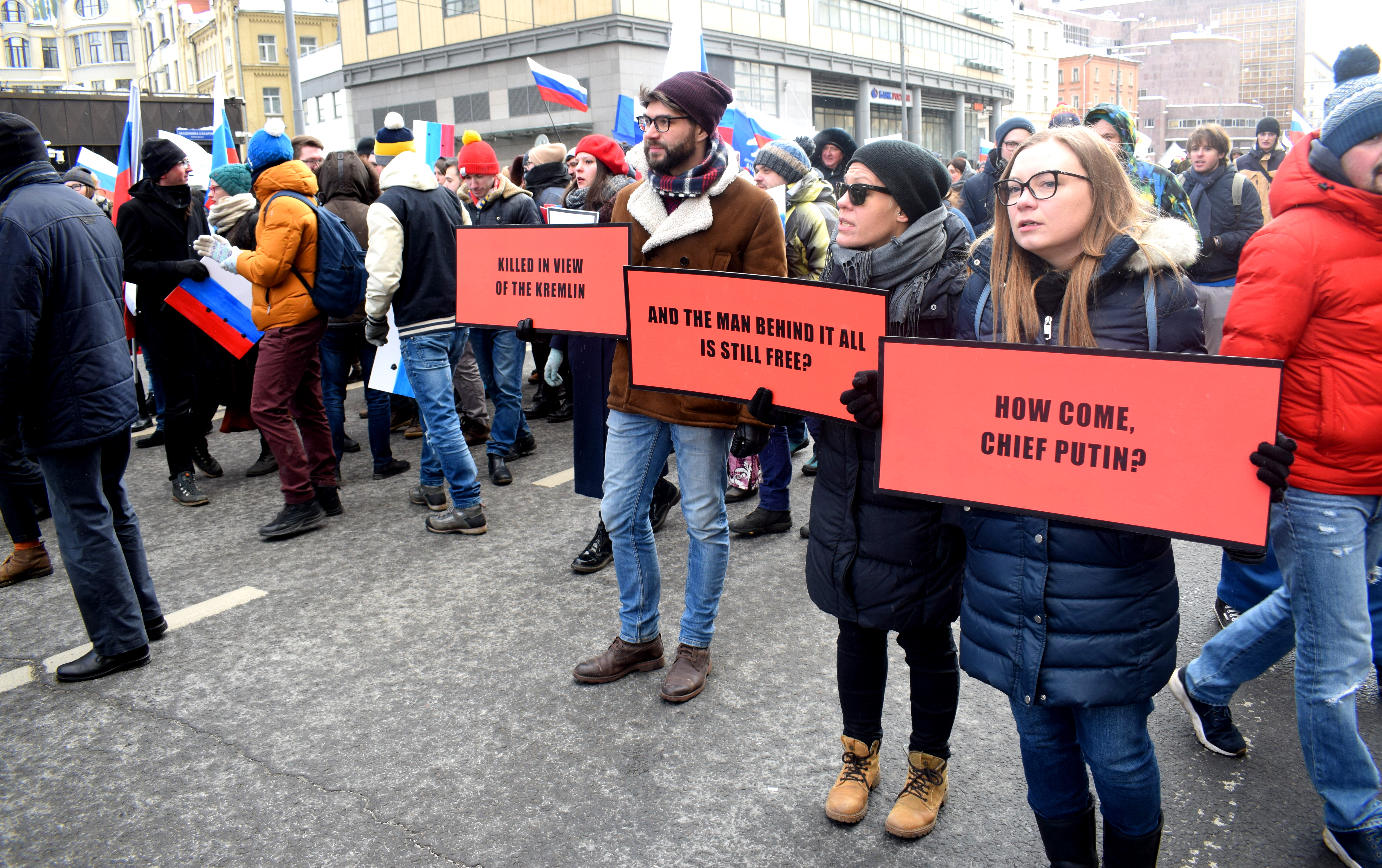 “Propaganda kills”
“Propaganda kills”
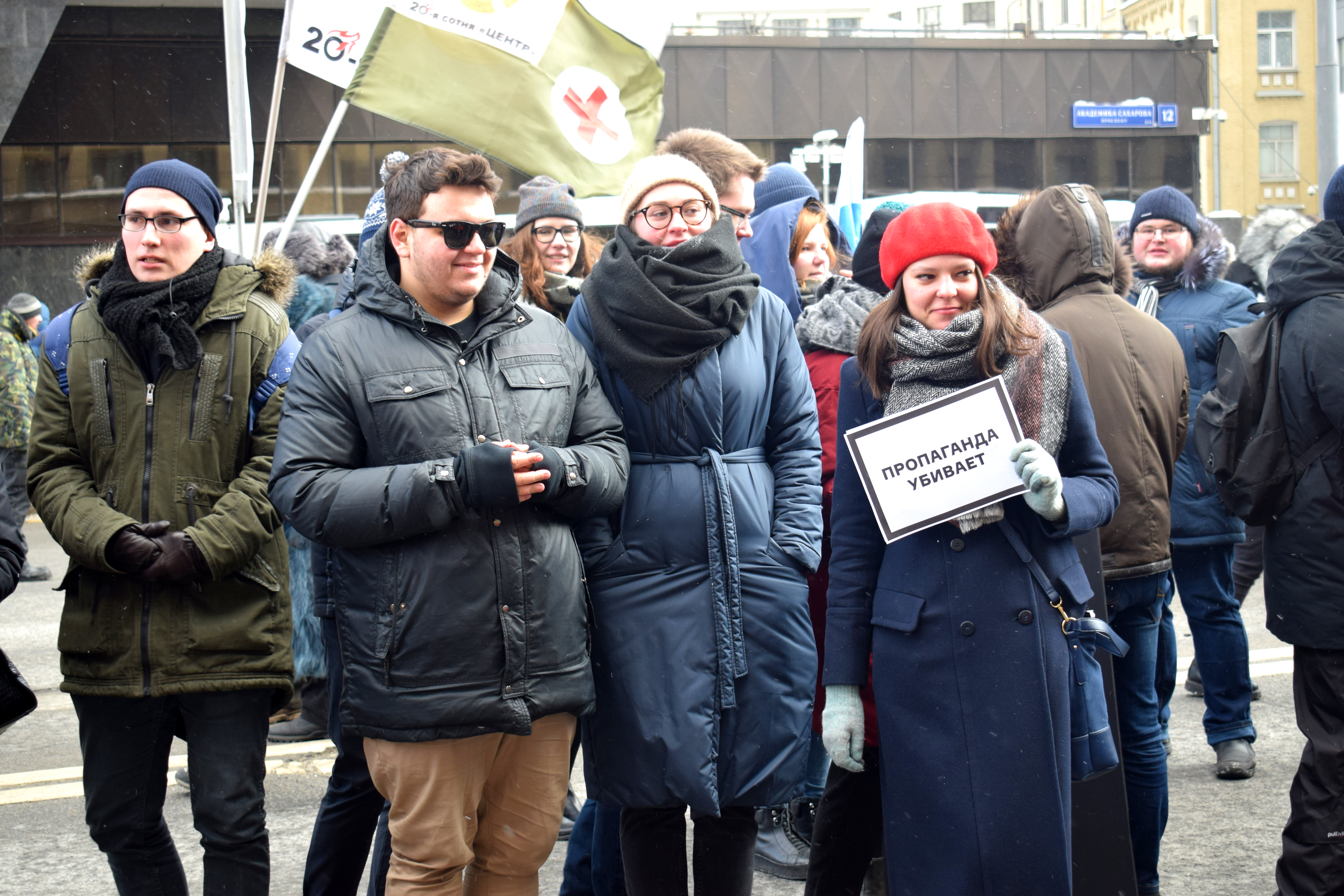 “Who ordered (it)?” While five Chechens have been found guilty for murdering Nemtsov, the man who ordered the killing has yet to be found.
“Who ordered (it)?” While five Chechens have been found guilty for murdering Nemtsov, the man who ordered the killing has yet to be found.
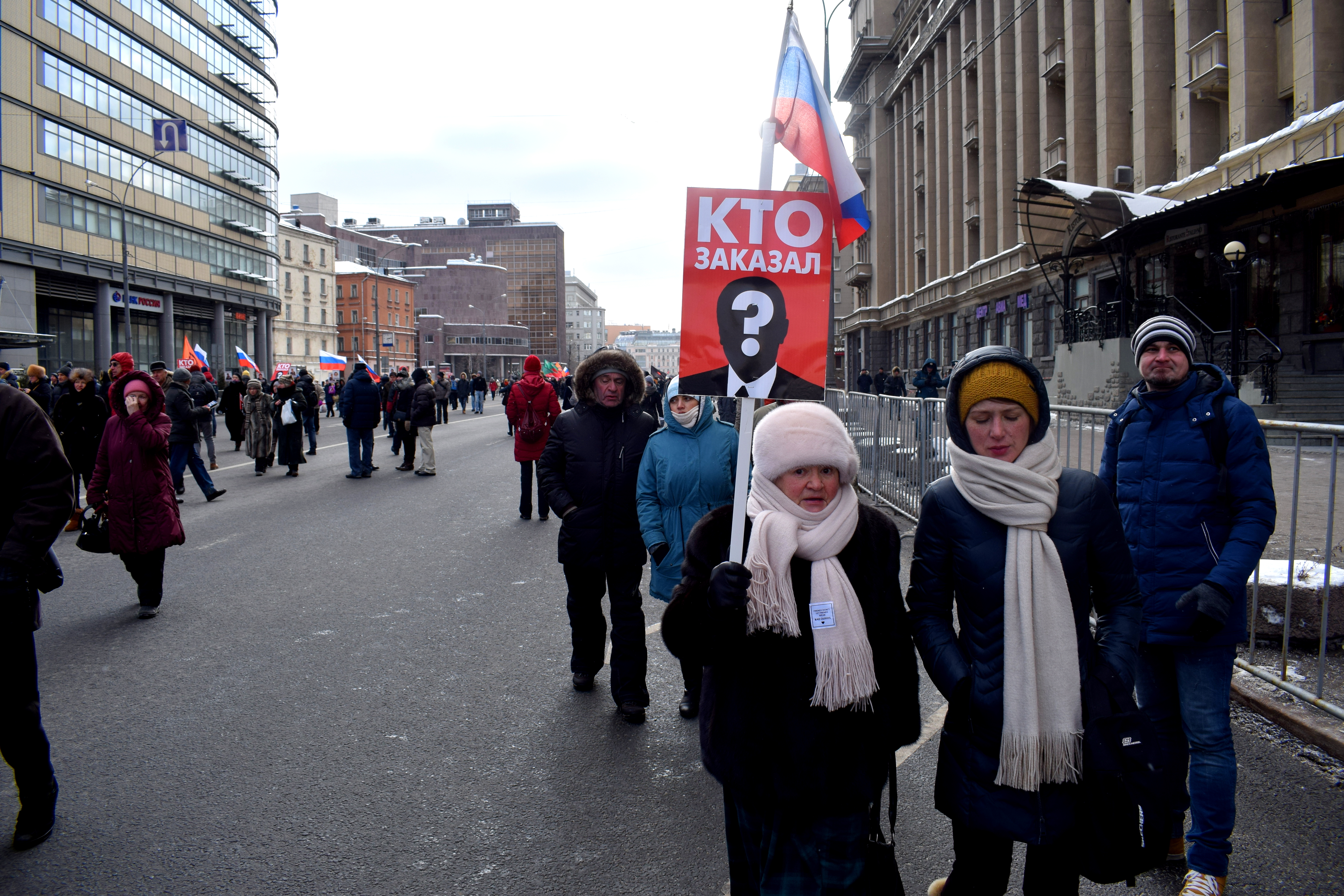 “Freedom to antifascists”
“Freedom to antifascists”
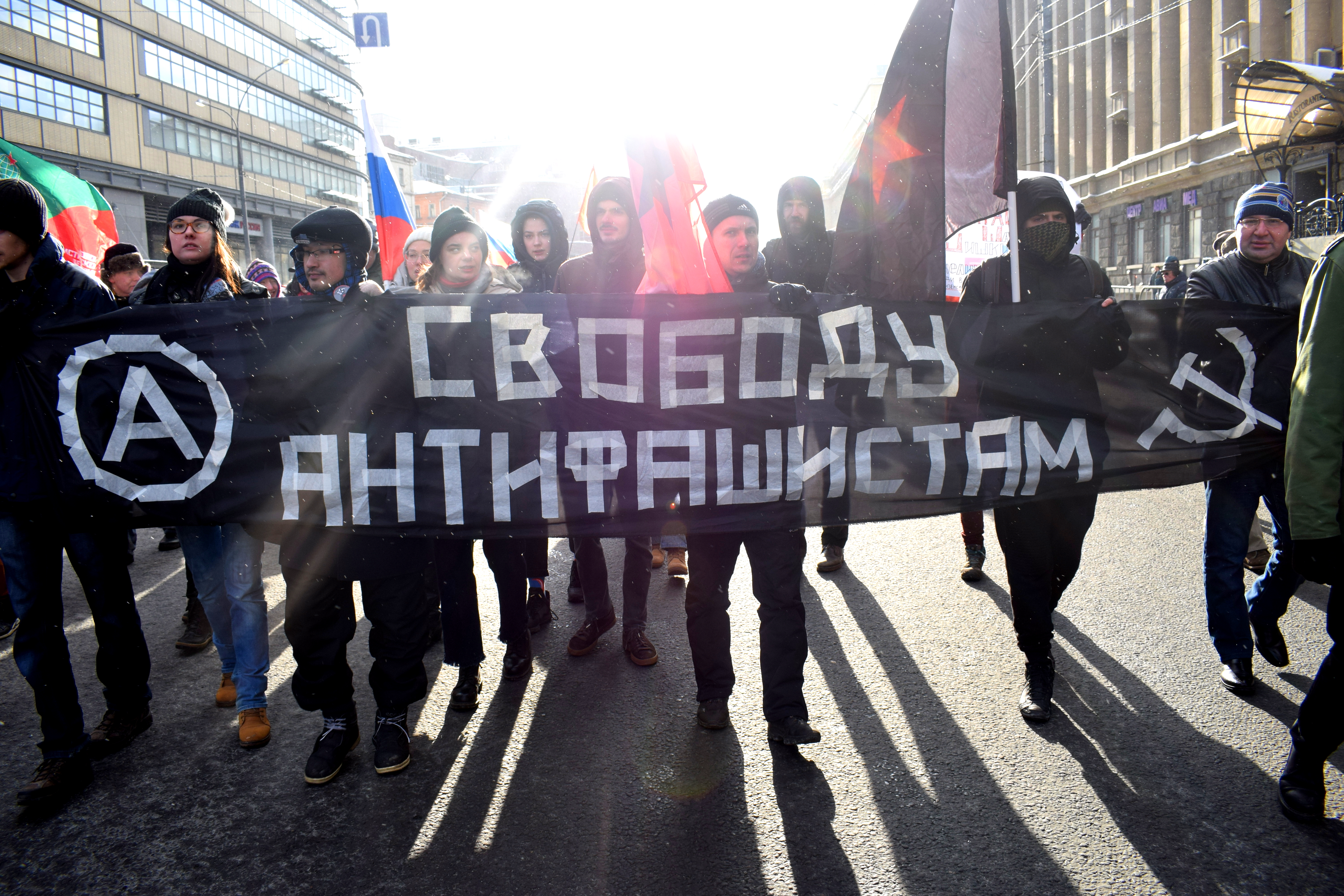 “Fight every day! Against persecution, repression and fabricated charges.”
“Fight every day! Against persecution, repression and fabricated charges.”
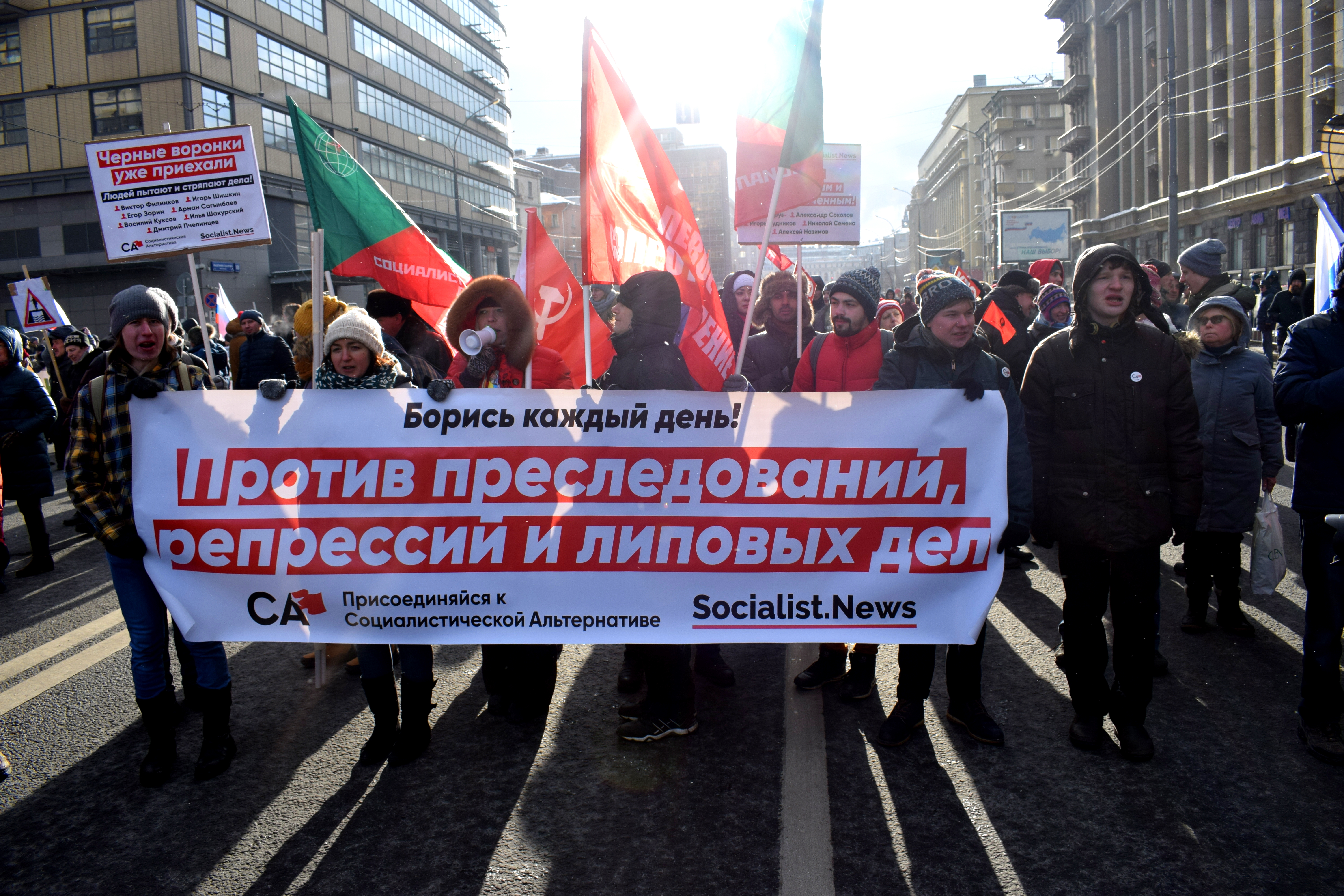 “I’m not afraid.”
“I’m not afraid.”
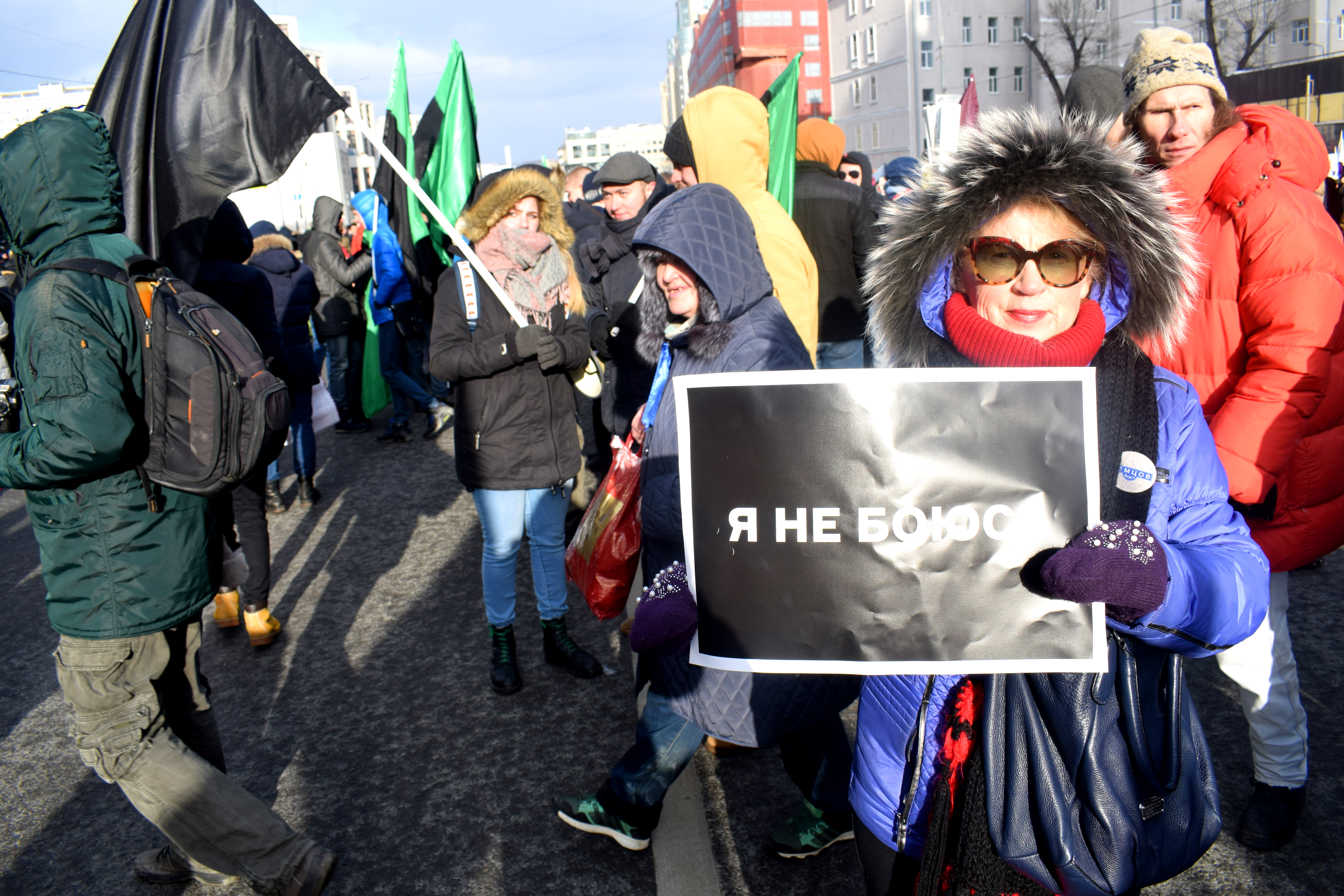 “For a Russia without Putin.”
“For a Russia without Putin.”
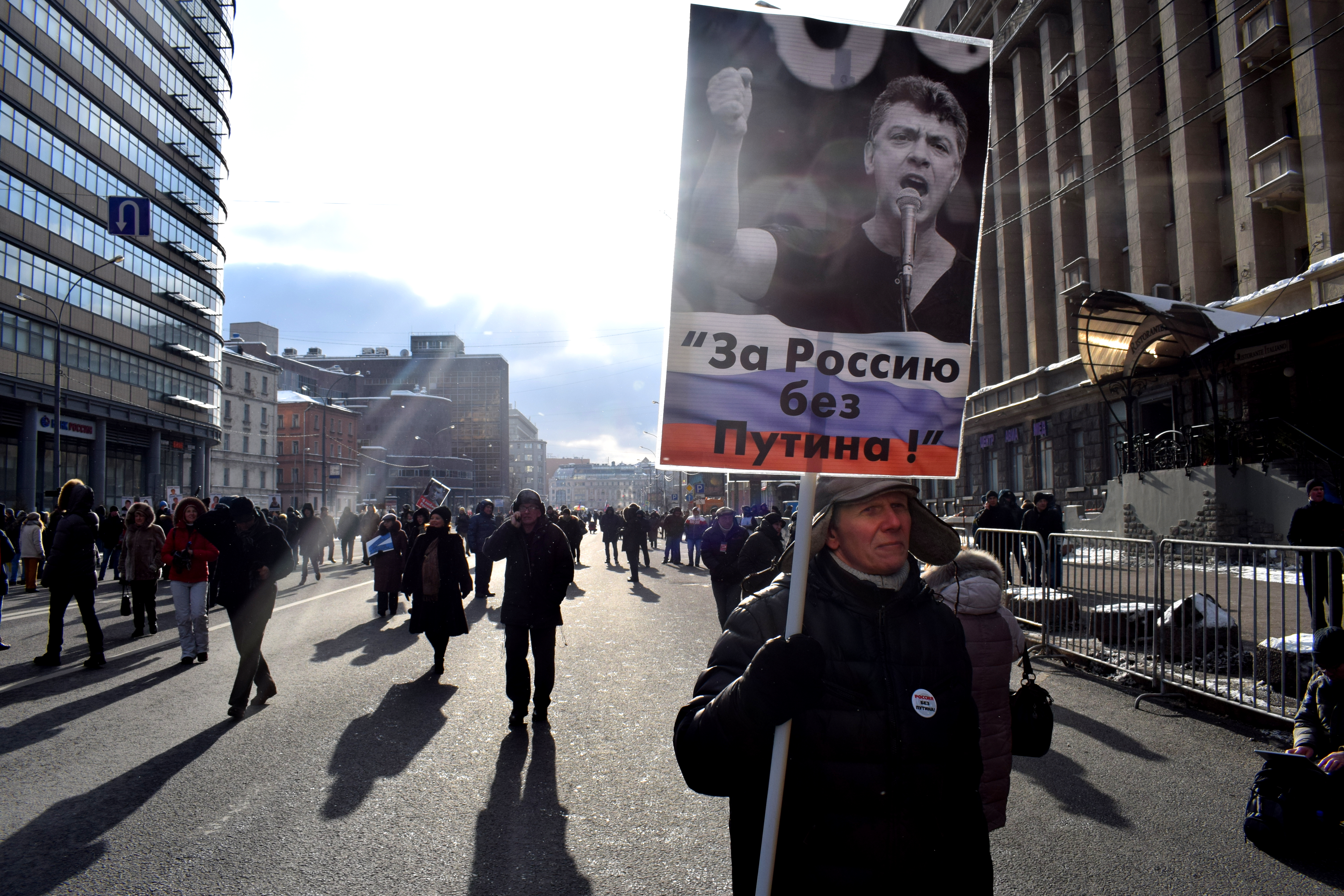 “I love Russia.”
“I love Russia.”
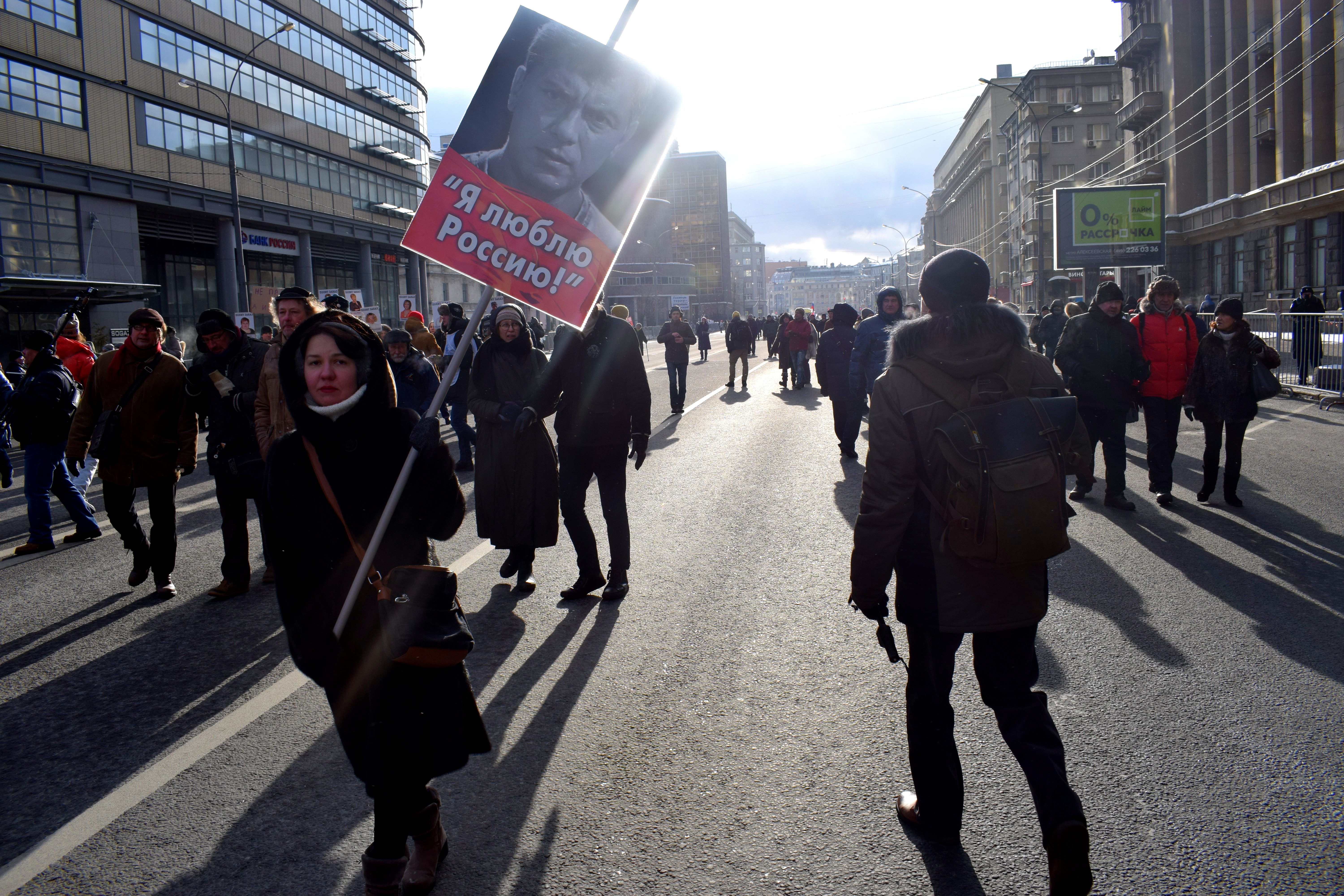 “Not simply a thief but also a killer.”
“Not simply a thief but also a killer.”
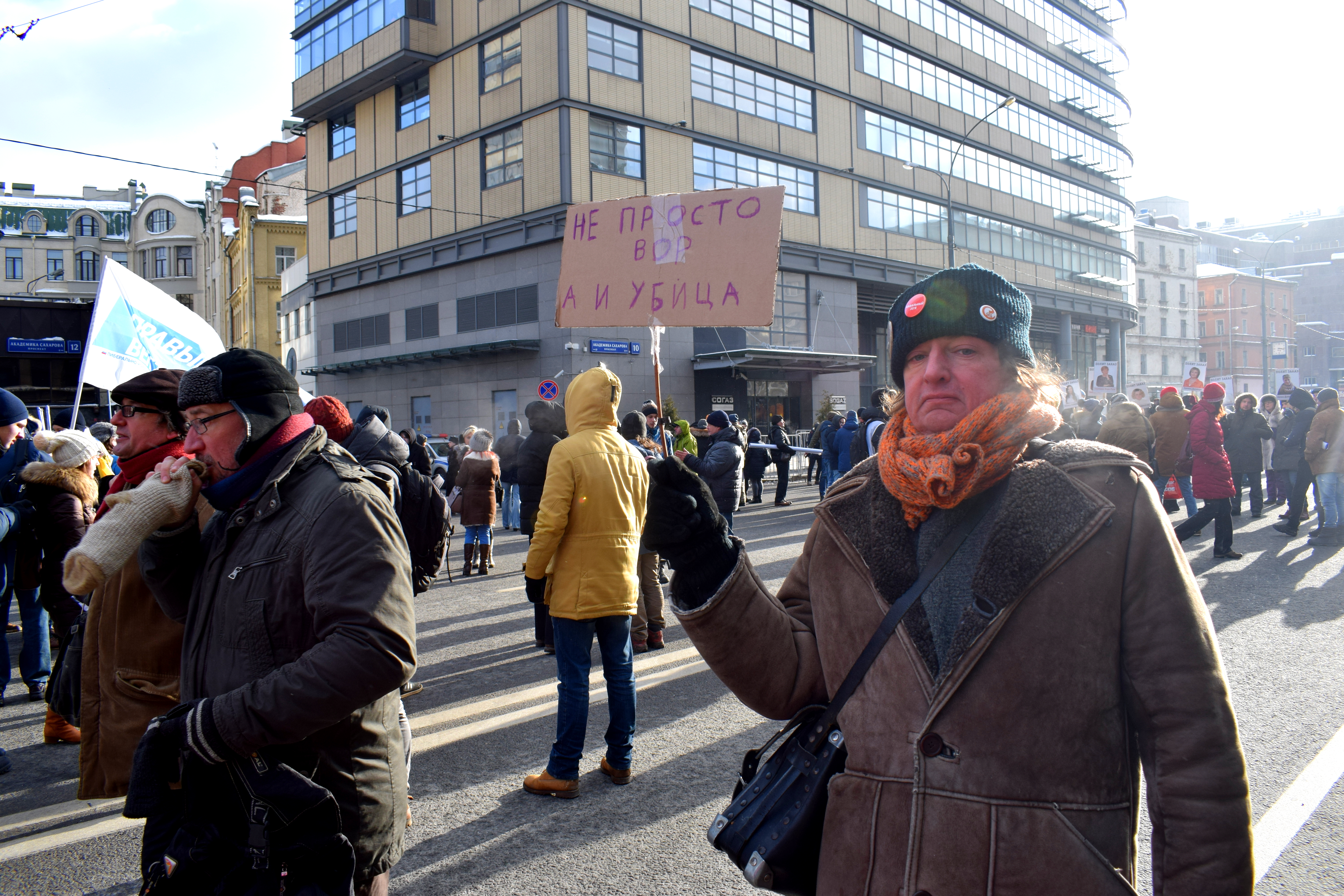 “Put him out.”
“Put him out.”
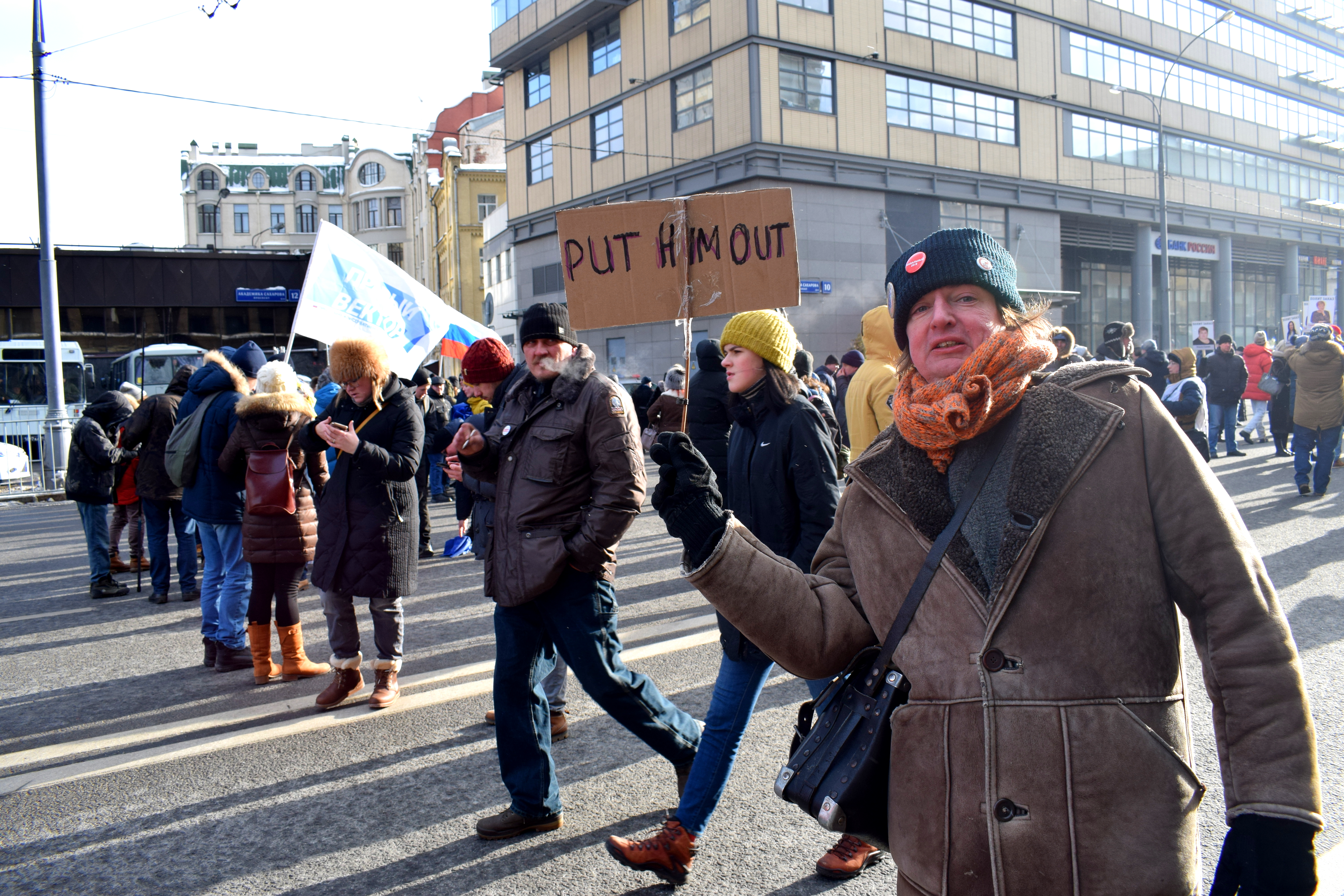 “You plant terror – you reap a tribunal.”
“You plant terror – you reap a tribunal.”
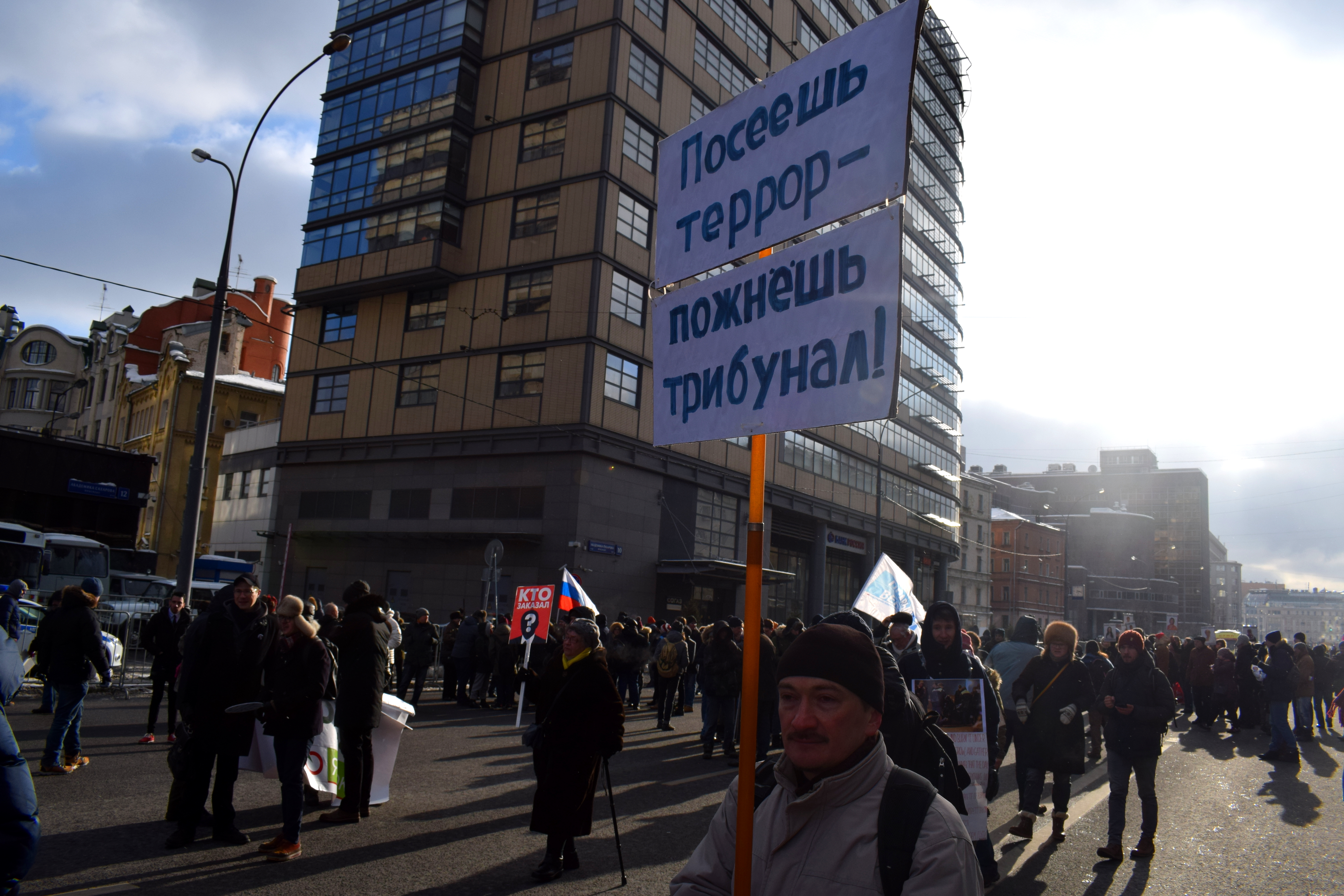 “Nemtsov Bridge”
“Nemtsov Bridge”
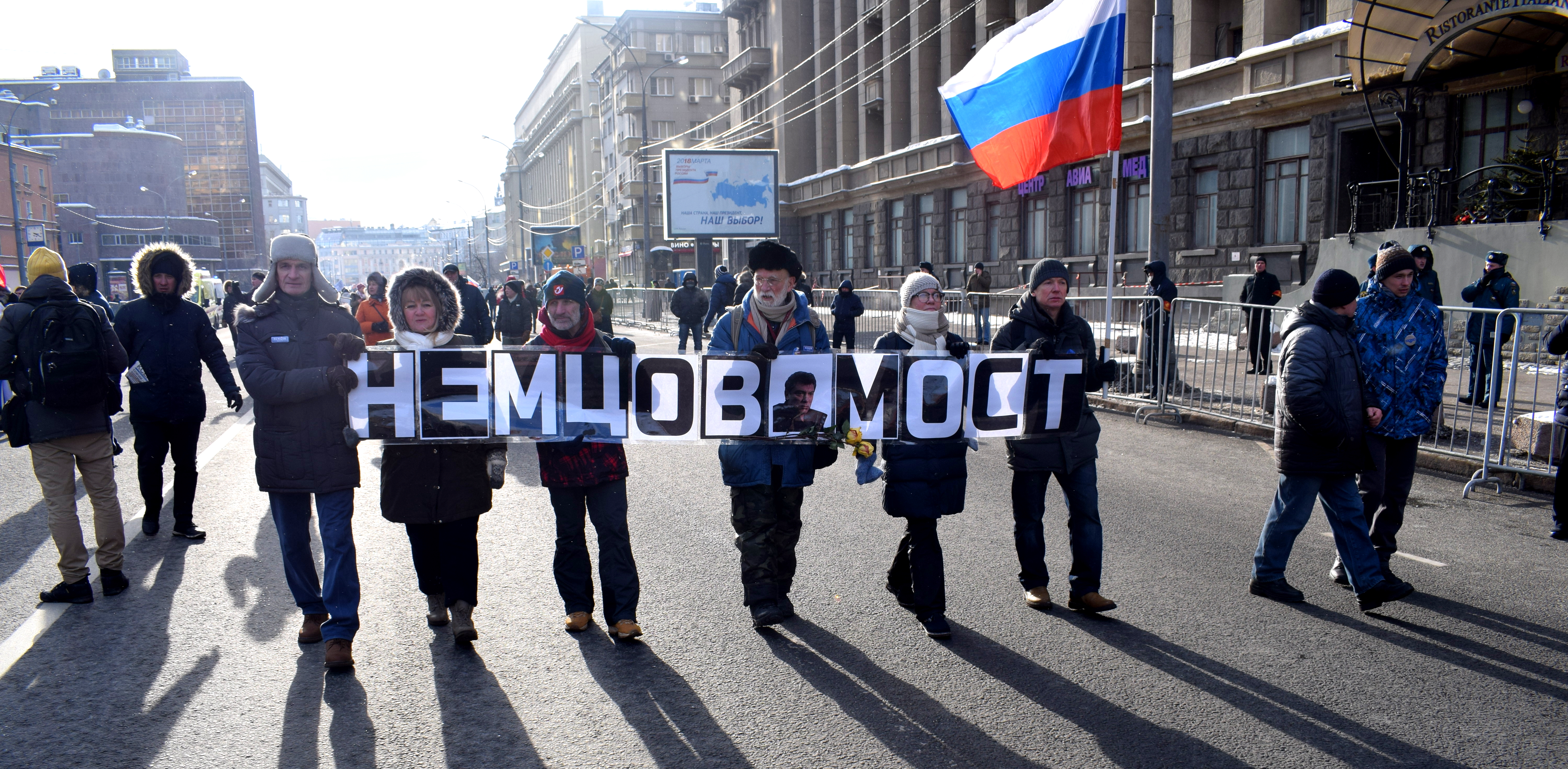 “Propaganda kills.”
“Propaganda kills.”
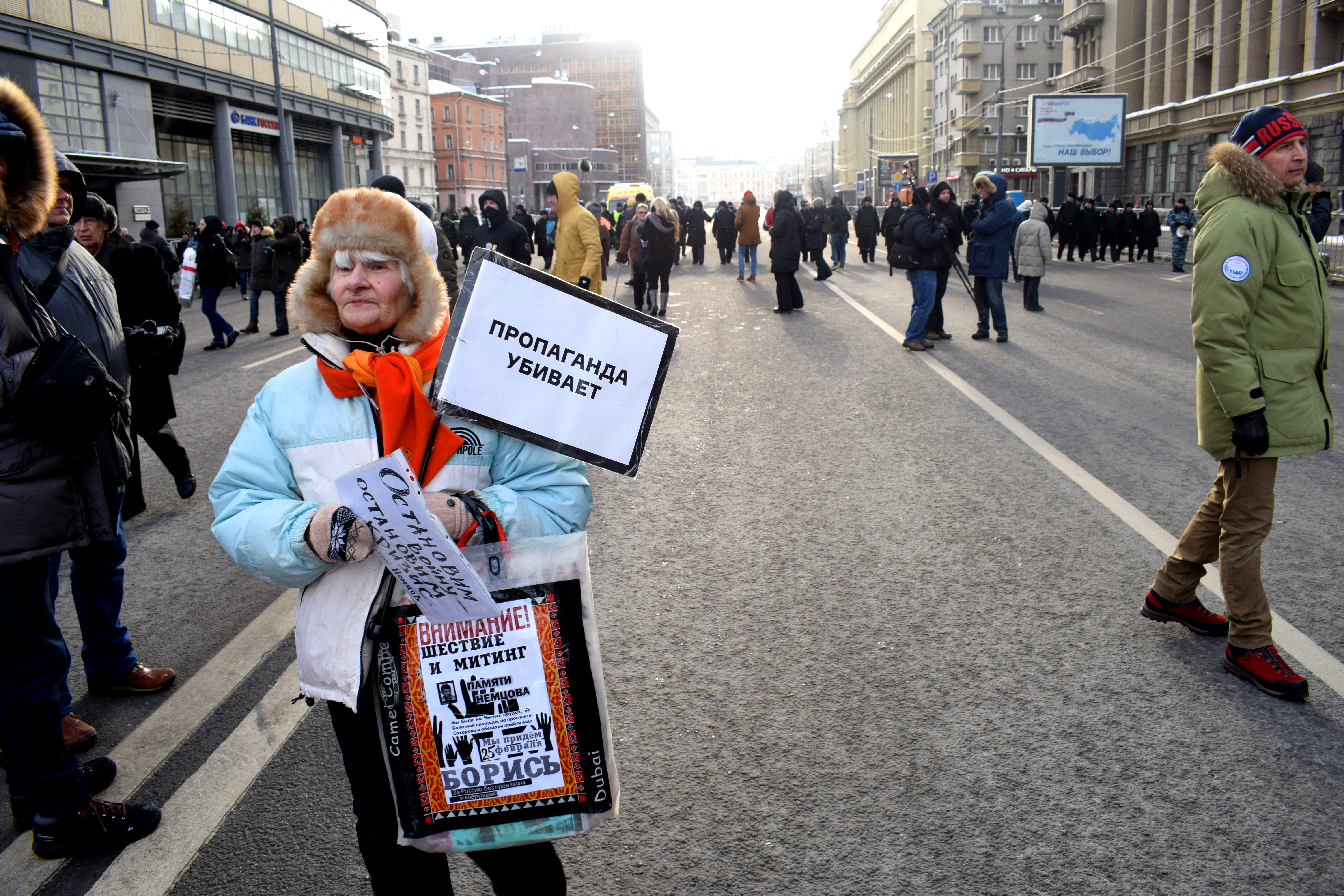 Police dispersing the crowd at the end of the march.
Police dispersing the crowd at the end of the march.
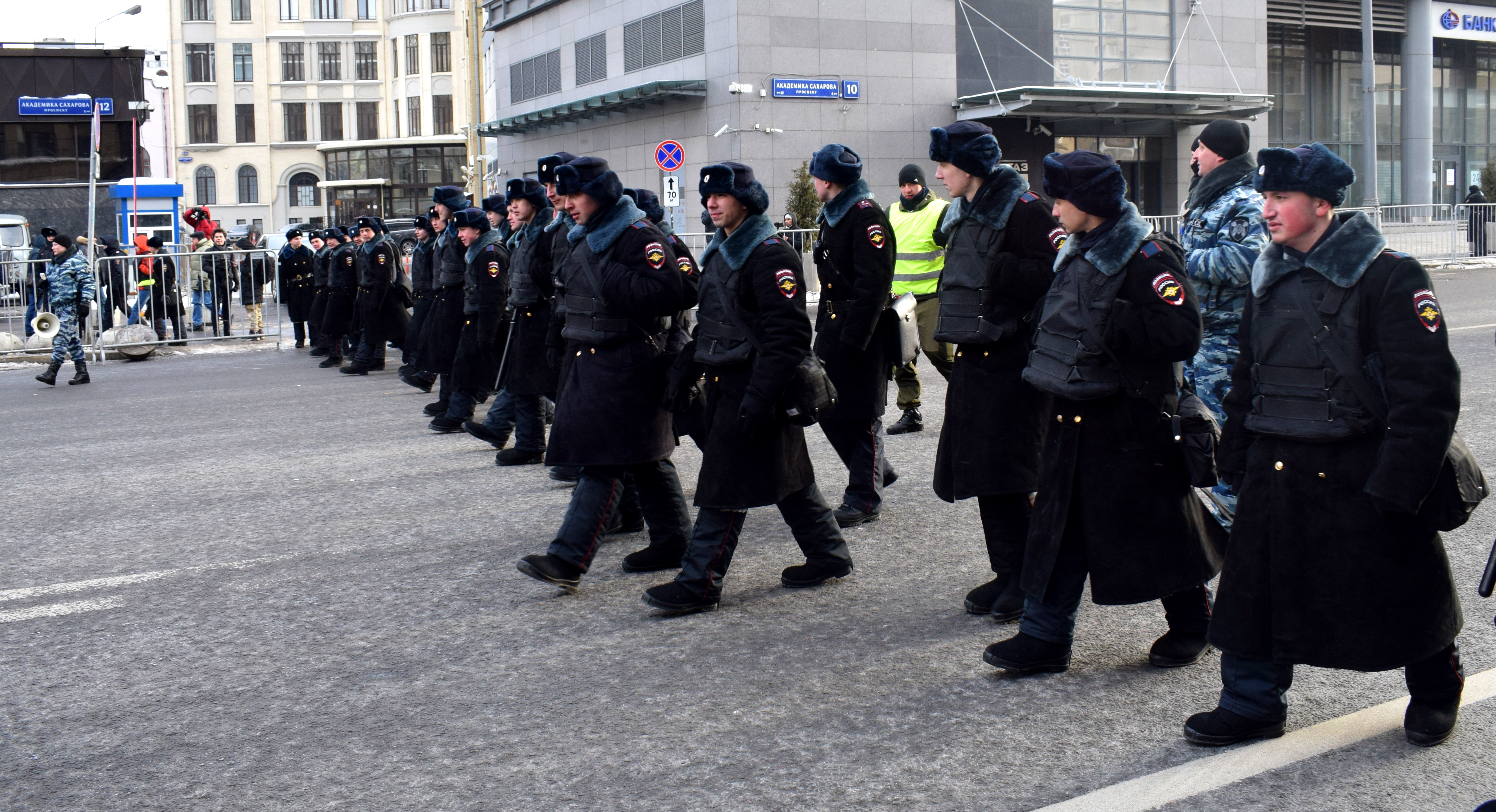
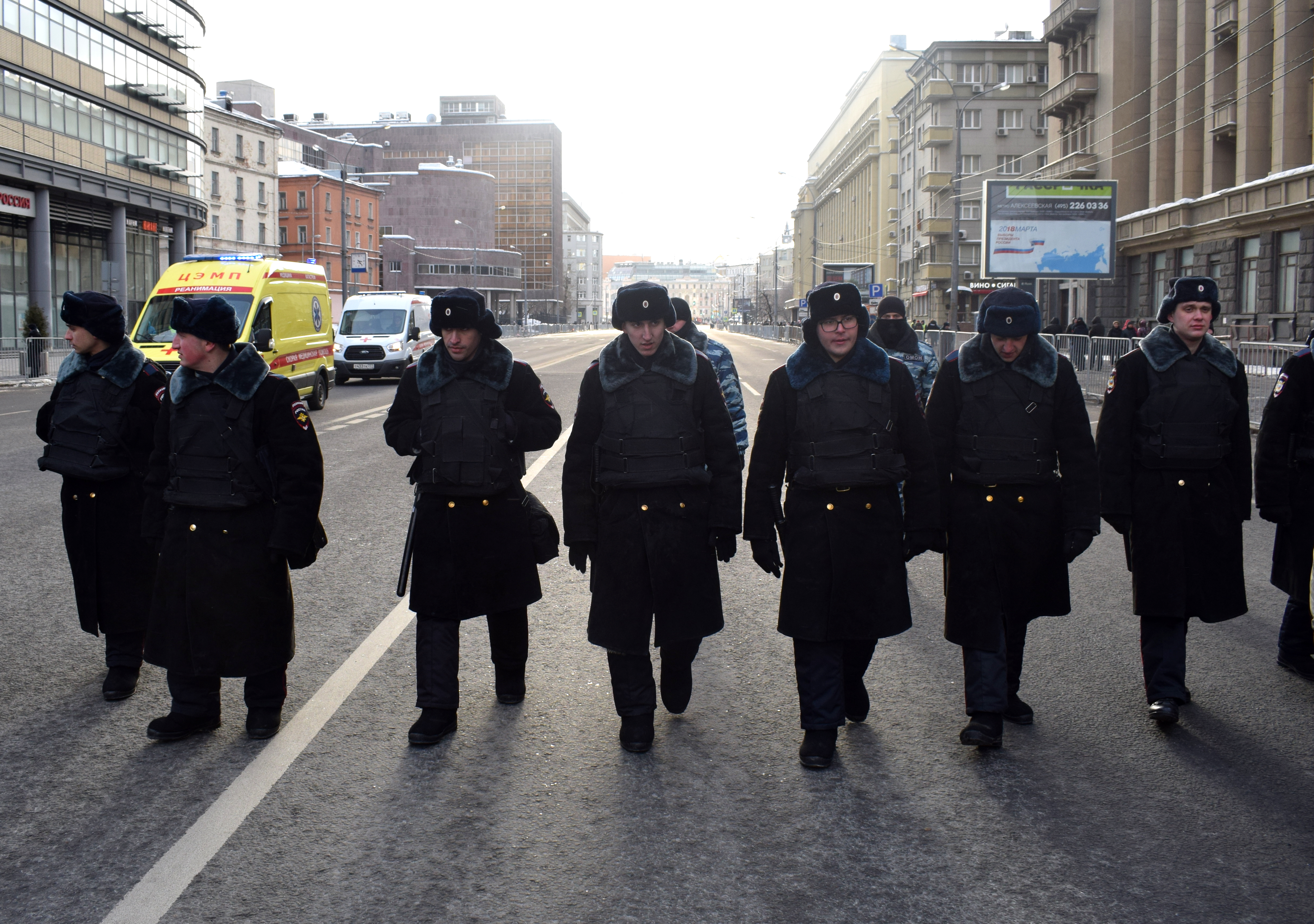 Russians go to the polls on March 18th to elect a president. All independent polling suggests that Vladimir Putin is going to win. The most popular opposition figure Alexei Navalny has been barred from running, blacklisted from state media channels, and is calling for a boycott.
Russians go to the polls on March 18th to elect a president. All independent polling suggests that Vladimir Putin is going to win. The most popular opposition figure Alexei Navalny has been barred from running, blacklisted from state media channels, and is calling for a boycott.
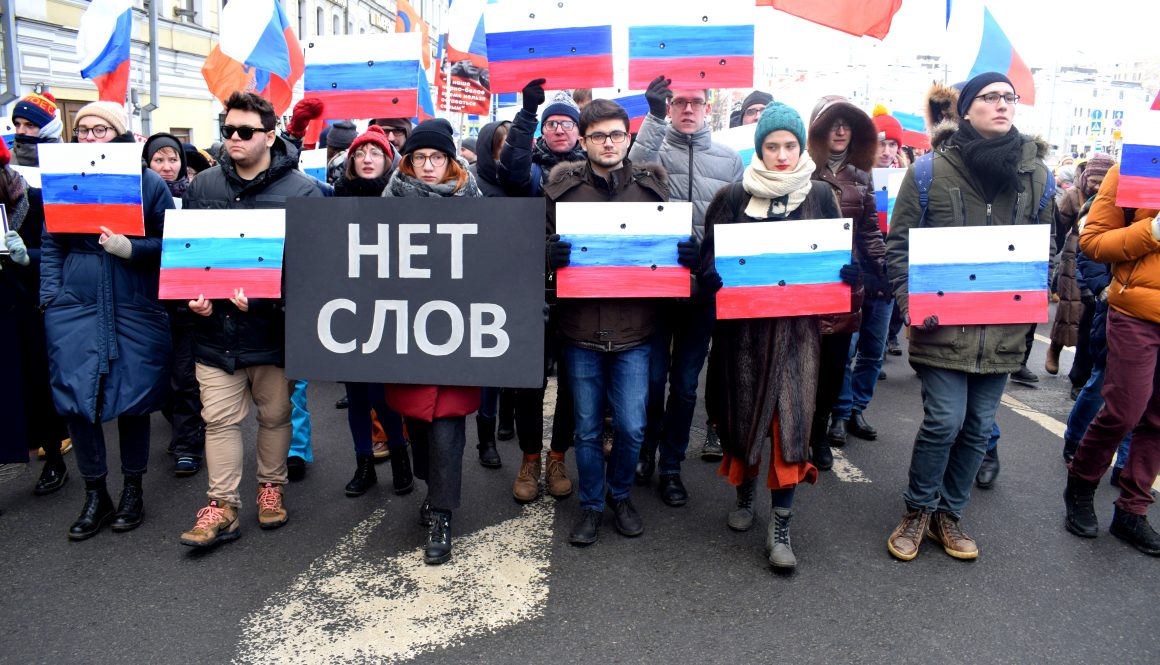
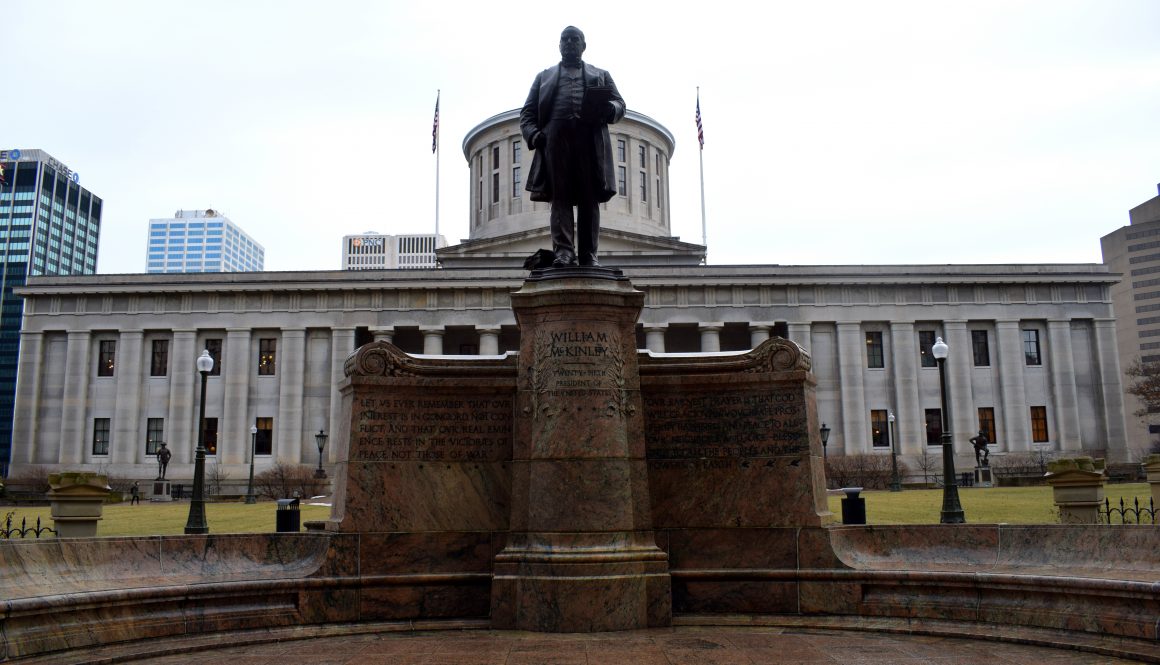
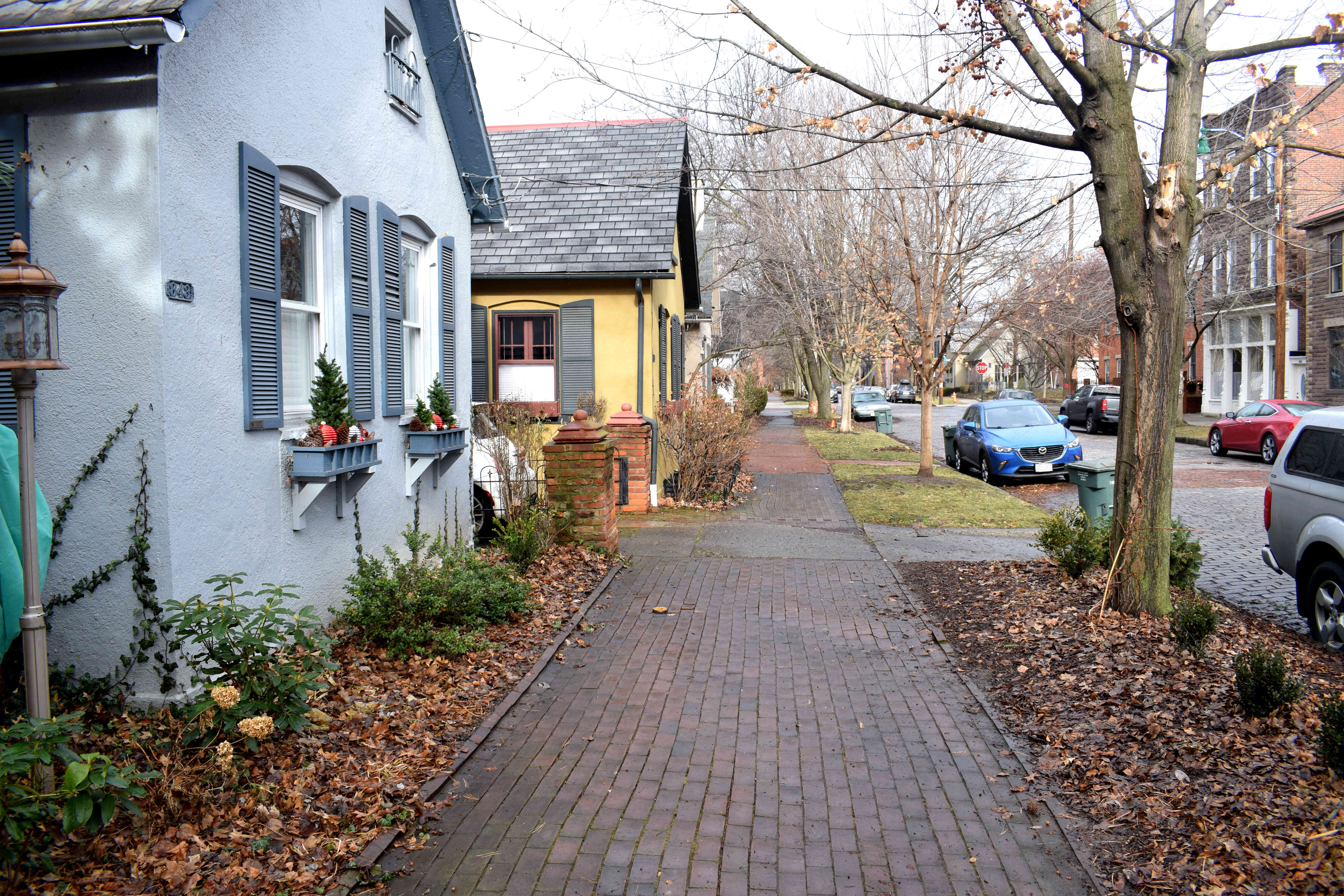 Located in the heart of downtown just across the Scioto River, German Village is a historic neighborhood settled by German immigrants in the early 19th century. The neighborhood retained its small-house, German style architecture all the way into the early 20th century.
Located in the heart of downtown just across the Scioto River, German Village is a historic neighborhood settled by German immigrants in the early 19th century. The neighborhood retained its small-house, German style architecture all the way into the early 20th century.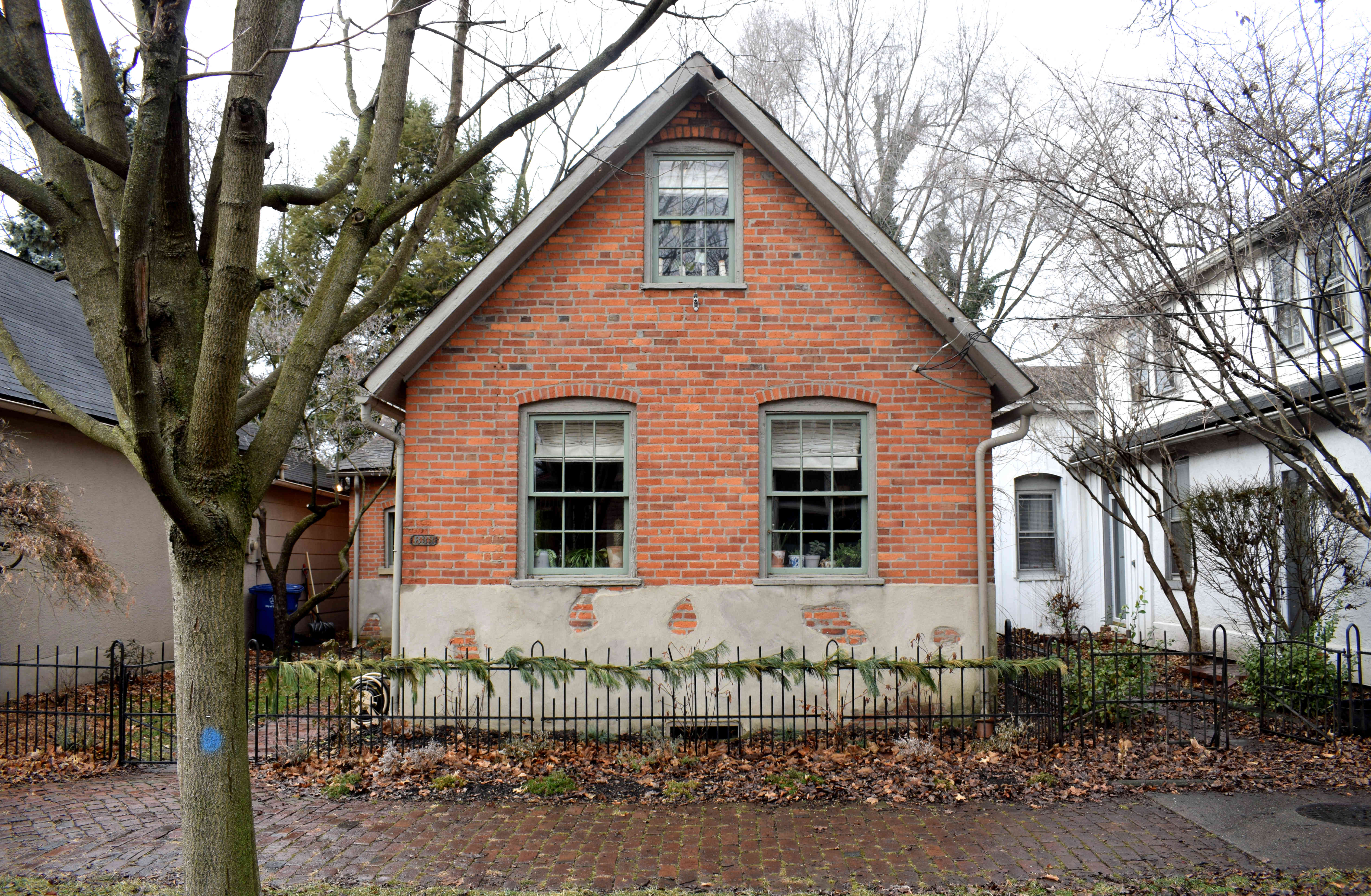 However, anti-German sentiment in WWI, along with plans to reconstruct American cities in the 1940s and 1950s by clearing slums, caused the destruction of one-third of the neighborhood. The village was slated for complete destruction following WWII, but activist citizens in the 1960’s managed to set up the German Village Commission and lobbied to save the neighborhood.
However, anti-German sentiment in WWI, along with plans to reconstruct American cities in the 1940s and 1950s by clearing slums, caused the destruction of one-third of the neighborhood. The village was slated for complete destruction following WWII, but activist citizens in the 1960’s managed to set up the German Village Commission and lobbied to save the neighborhood.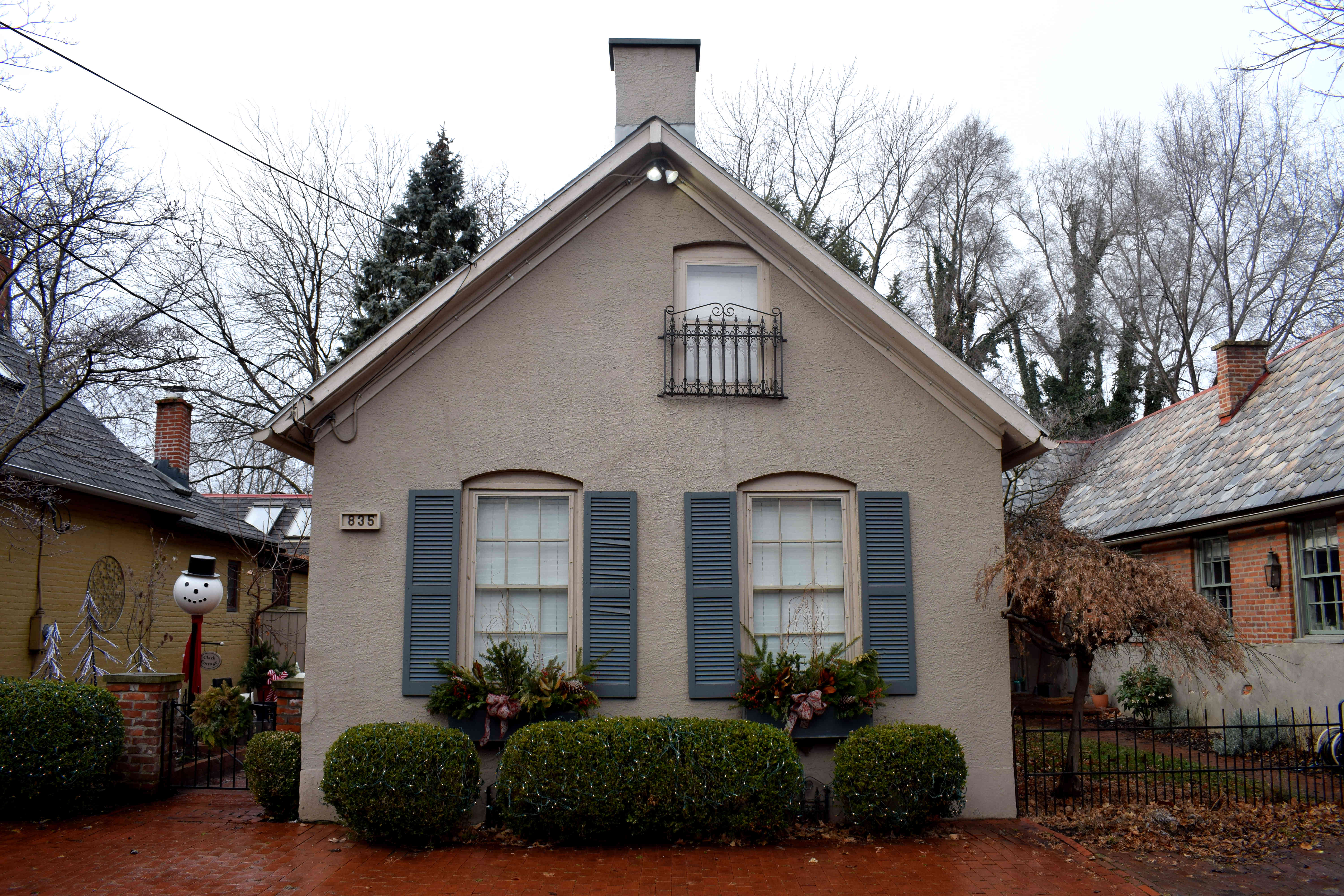 Most of the houses in German Village are one or two stories high that retain their historic appearance to this day.
Most of the houses in German Village are one or two stories high that retain their historic appearance to this day.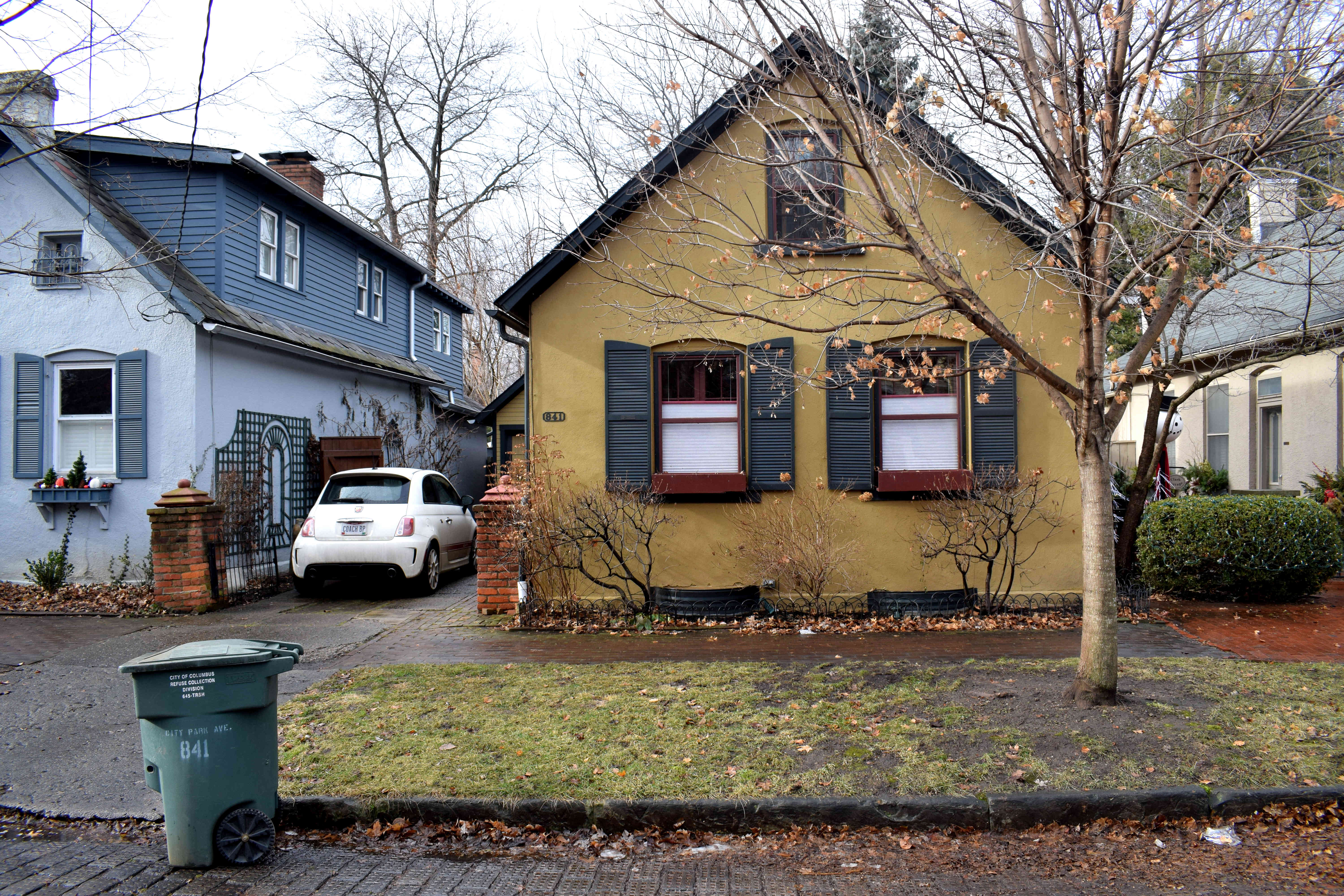 Occasionally a larger home will pop up.
Occasionally a larger home will pop up.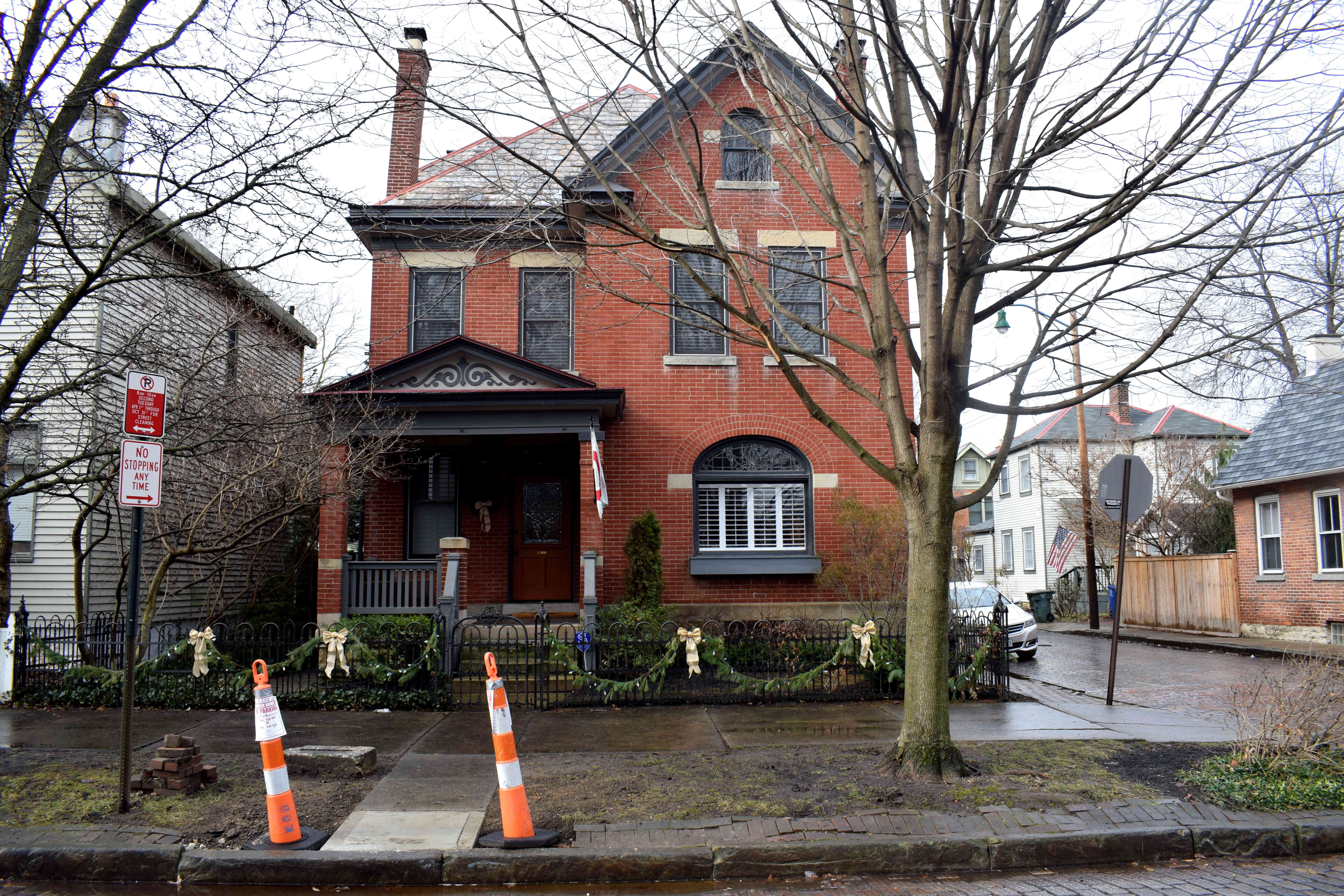 Cobble-stoned streets abound.
Cobble-stoned streets abound.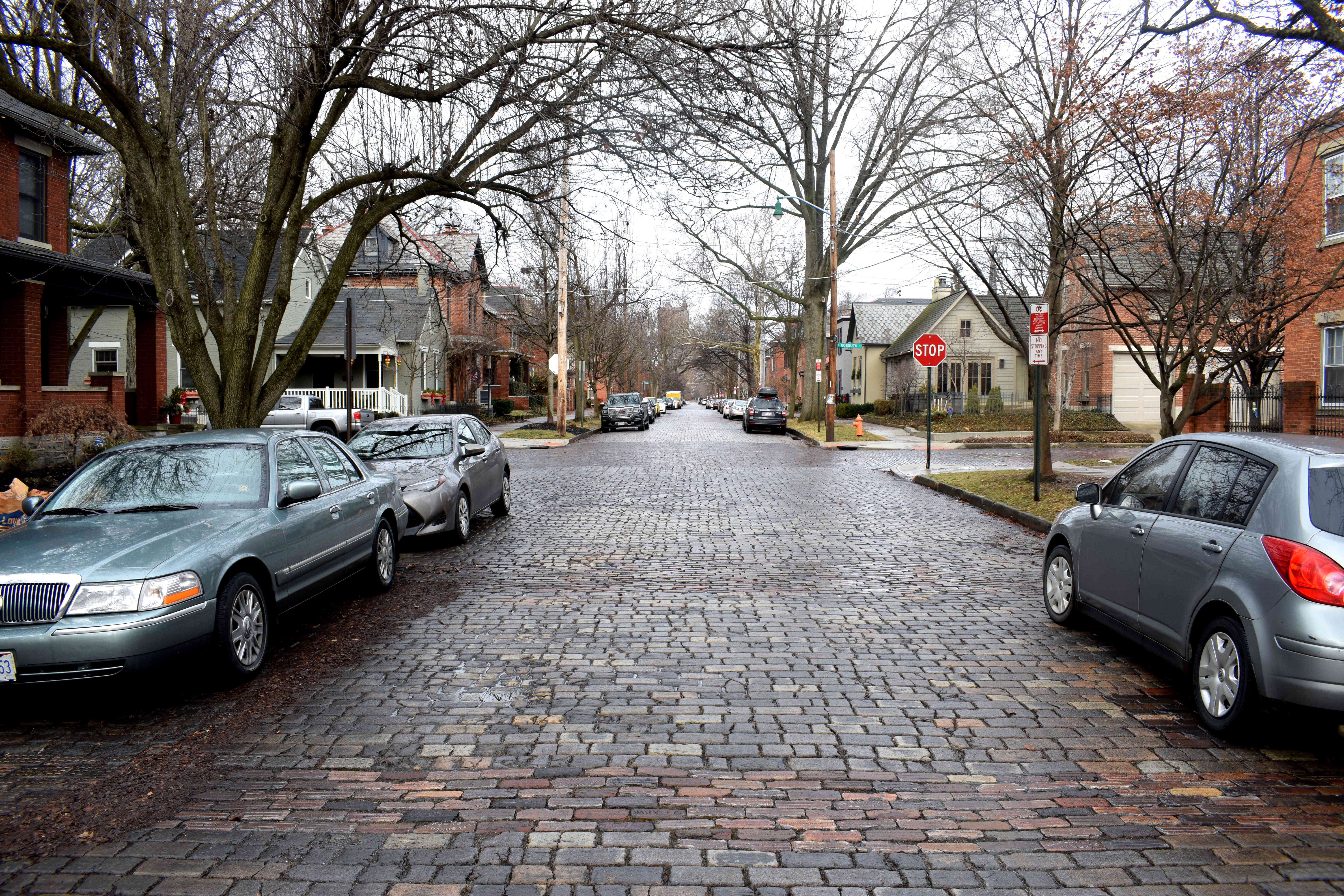 The story of German Village shows just how much of a threat developers are to cities.
The story of German Village shows just how much of a threat developers are to cities.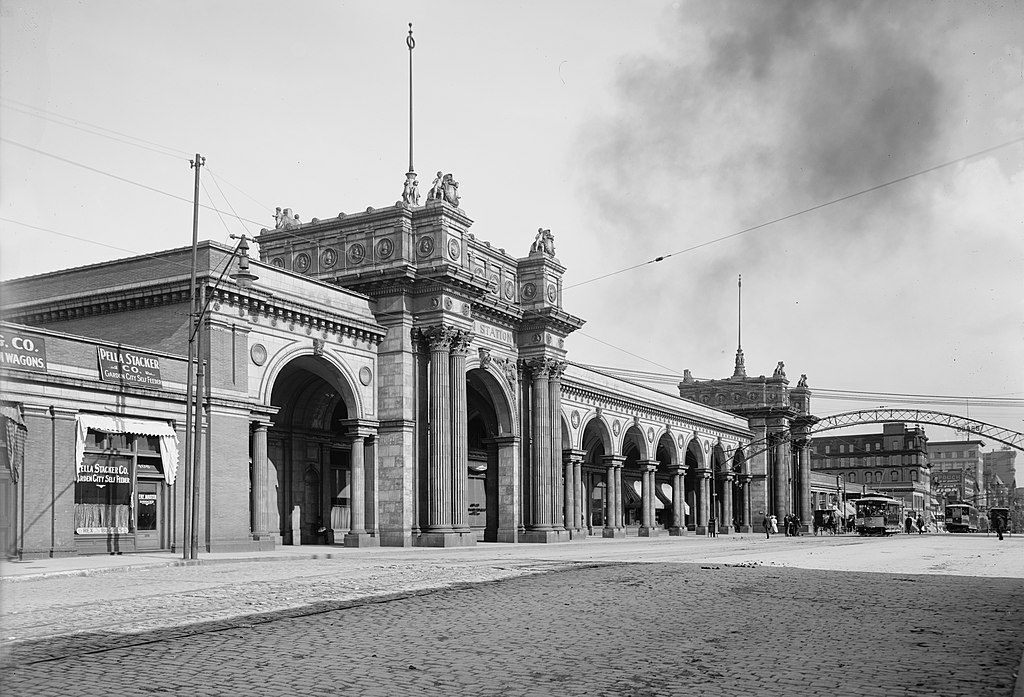
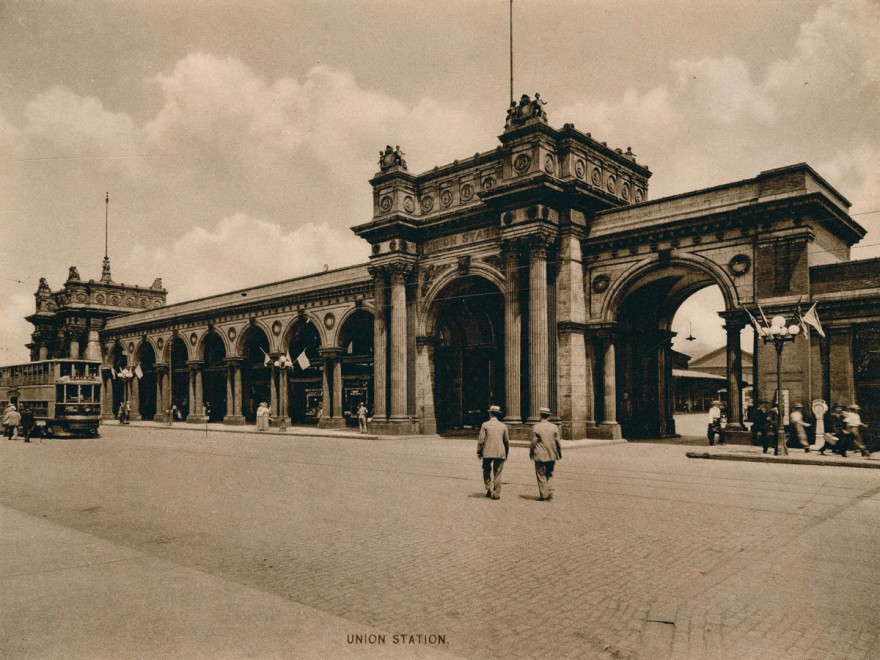
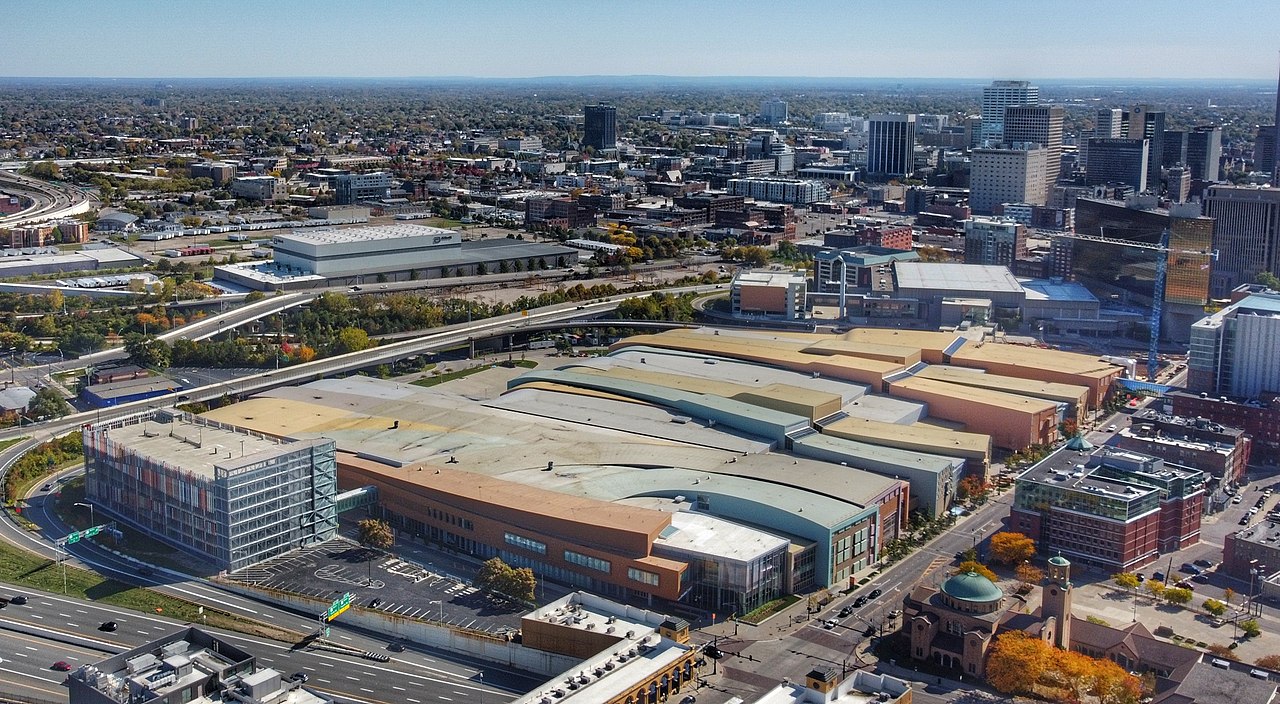 Now I’m no expert, but maybe, just maybe, the city could have held off on destroying one of its most beautiful buildings to construct this.
Now I’m no expert, but maybe, just maybe, the city could have held off on destroying one of its most beautiful buildings to construct this.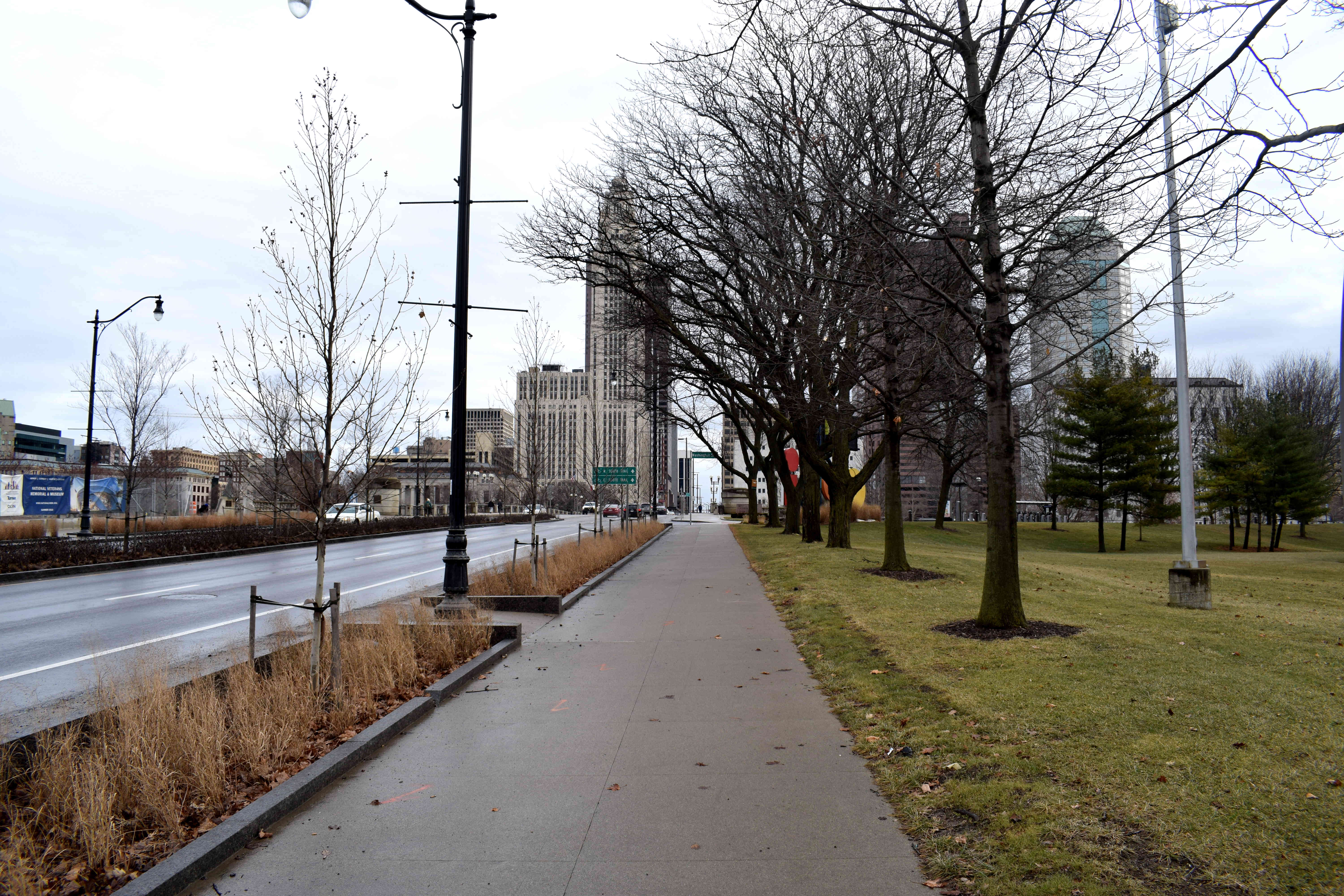 Heading toward downtown from German Village takes you past Genoa Park, part of the larger Scioto Mile the city developed to connect Columbus to the Scioto River.
Heading toward downtown from German Village takes you past Genoa Park, part of the larger Scioto Mile the city developed to connect Columbus to the Scioto River.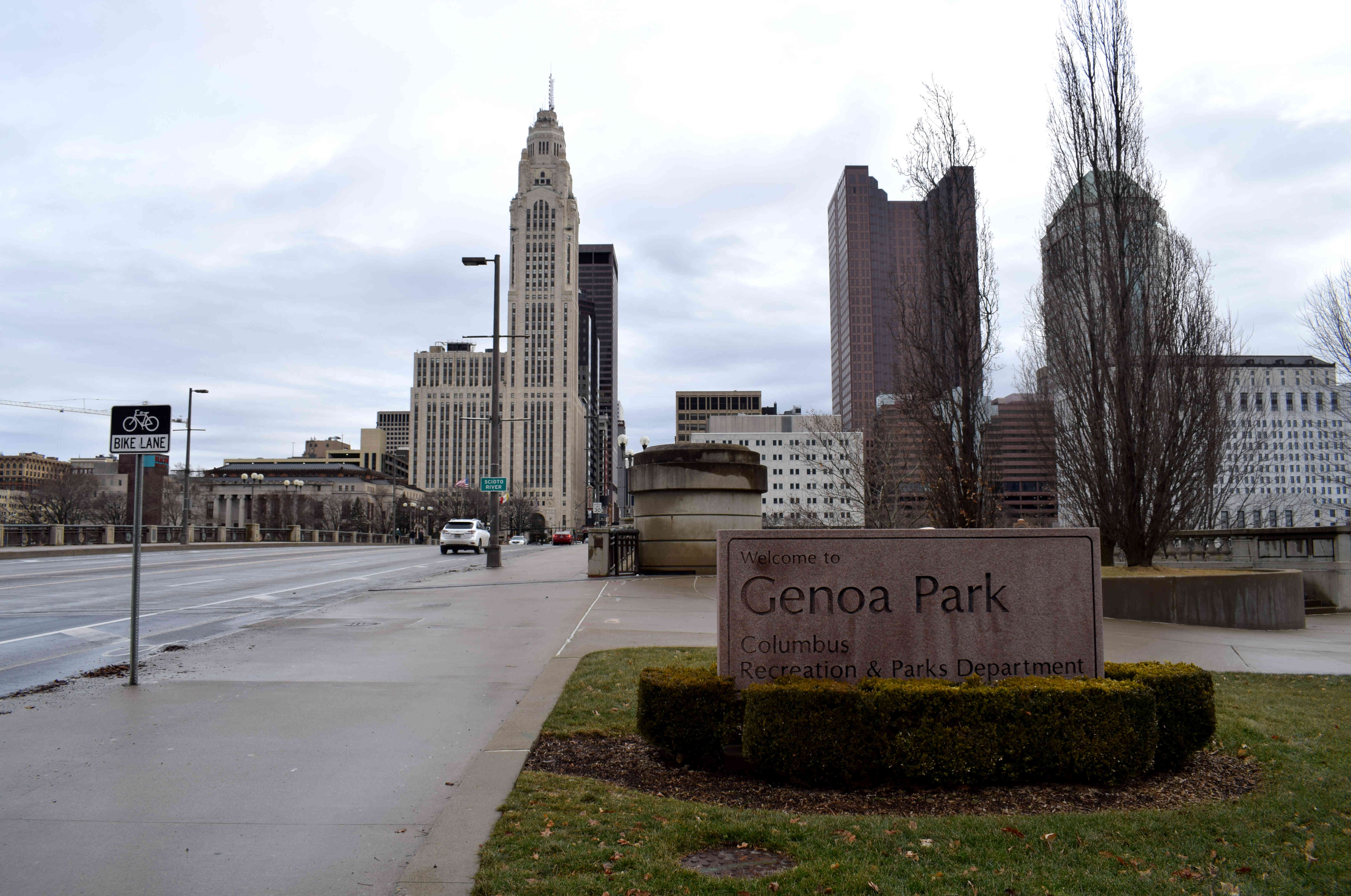 Conceived in the early 2000s, the Scioto Mile is the city’s plan to reconnect Columbus with the Scioto River that runs through Columbus. Before construction began in 2008, the river was cut off from the city by a five-lane highway that followed its path.
Conceived in the early 2000s, the Scioto Mile is the city’s plan to reconnect Columbus with the Scioto River that runs through Columbus. Before construction began in 2008, the river was cut off from the city by a five-lane highway that followed its path.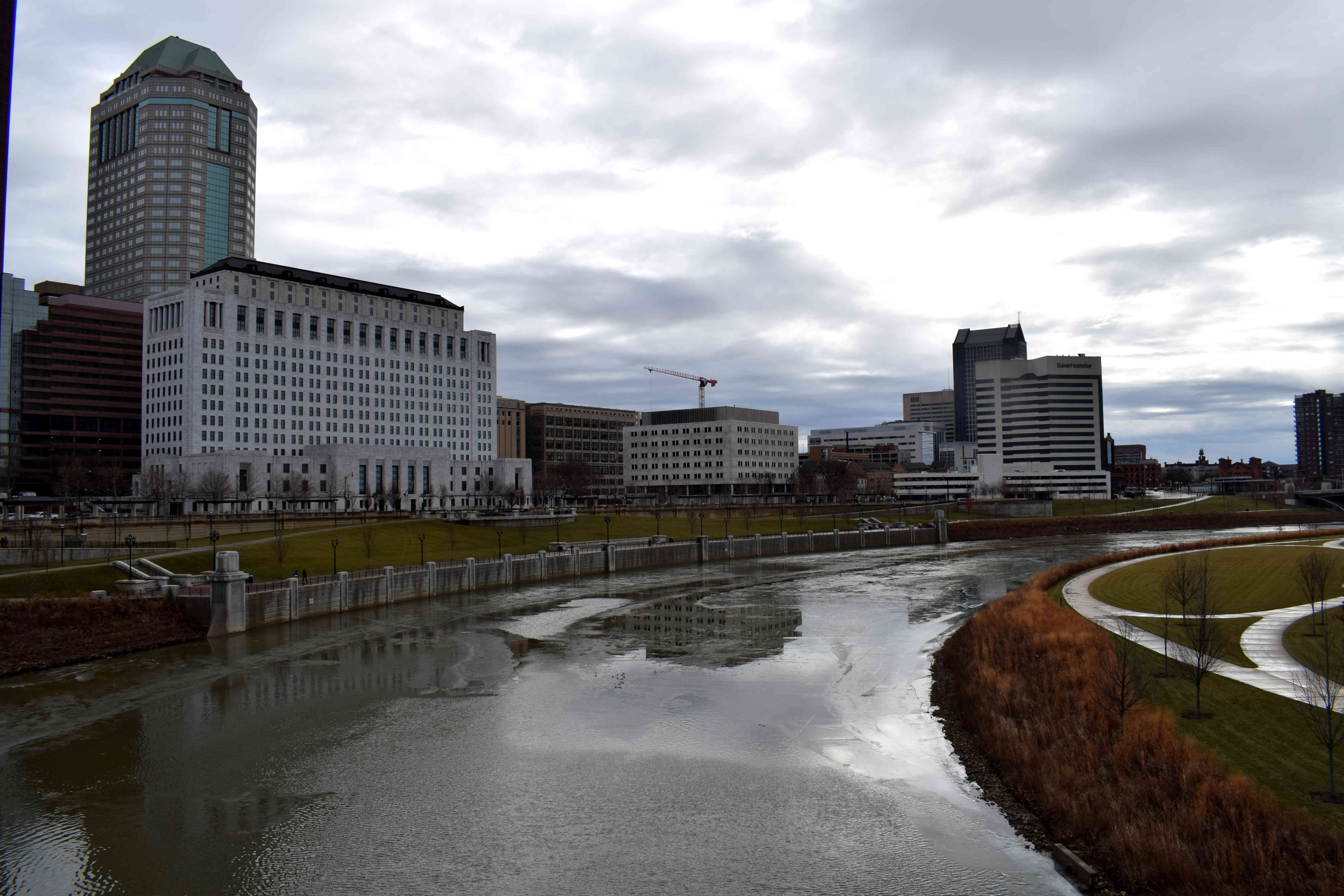 Now that same five-lane highway is a public park. There are trees, jogging and cycling tracks, picnic tables, playgrounds and more. It was a rainy, January day when these photos were taken, but in the summer the park fills up with people.
Now that same five-lane highway is a public park. There are trees, jogging and cycling tracks, picnic tables, playgrounds and more. It was a rainy, January day when these photos were taken, but in the summer the park fills up with people.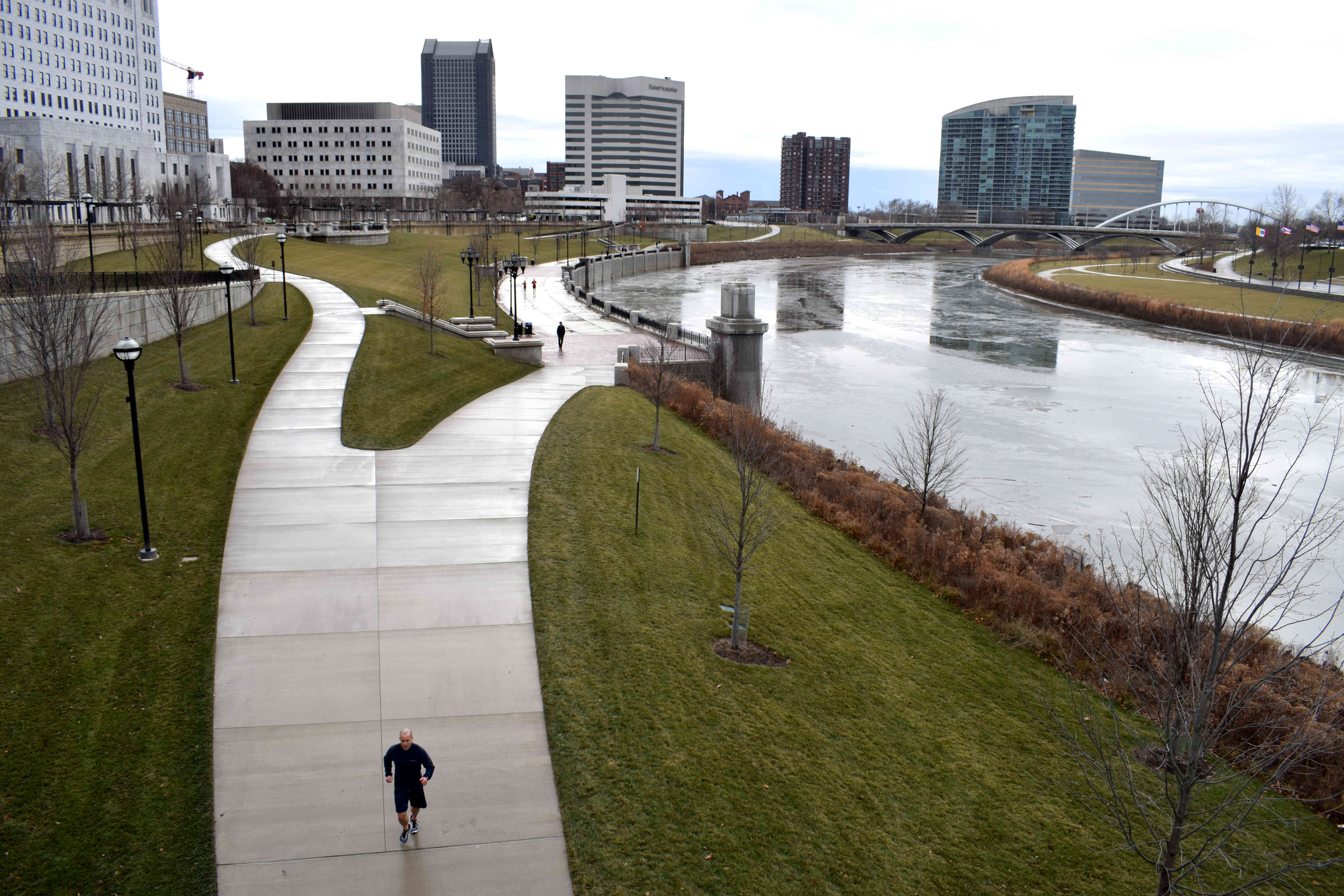 The Scioto Mile is a successful example of a city reclaiming its urban space from cars and handing it back to pedestrians. Across the United States, cities have started to dismantle highways that were built in the 1970s that ran through their downtowns and replace them with public spaces. Columbus is following this trend.
The Scioto Mile is a successful example of a city reclaiming its urban space from cars and handing it back to pedestrians. Across the United States, cities have started to dismantle highways that were built in the 1970s that ran through their downtowns and replace them with public spaces. Columbus is following this trend.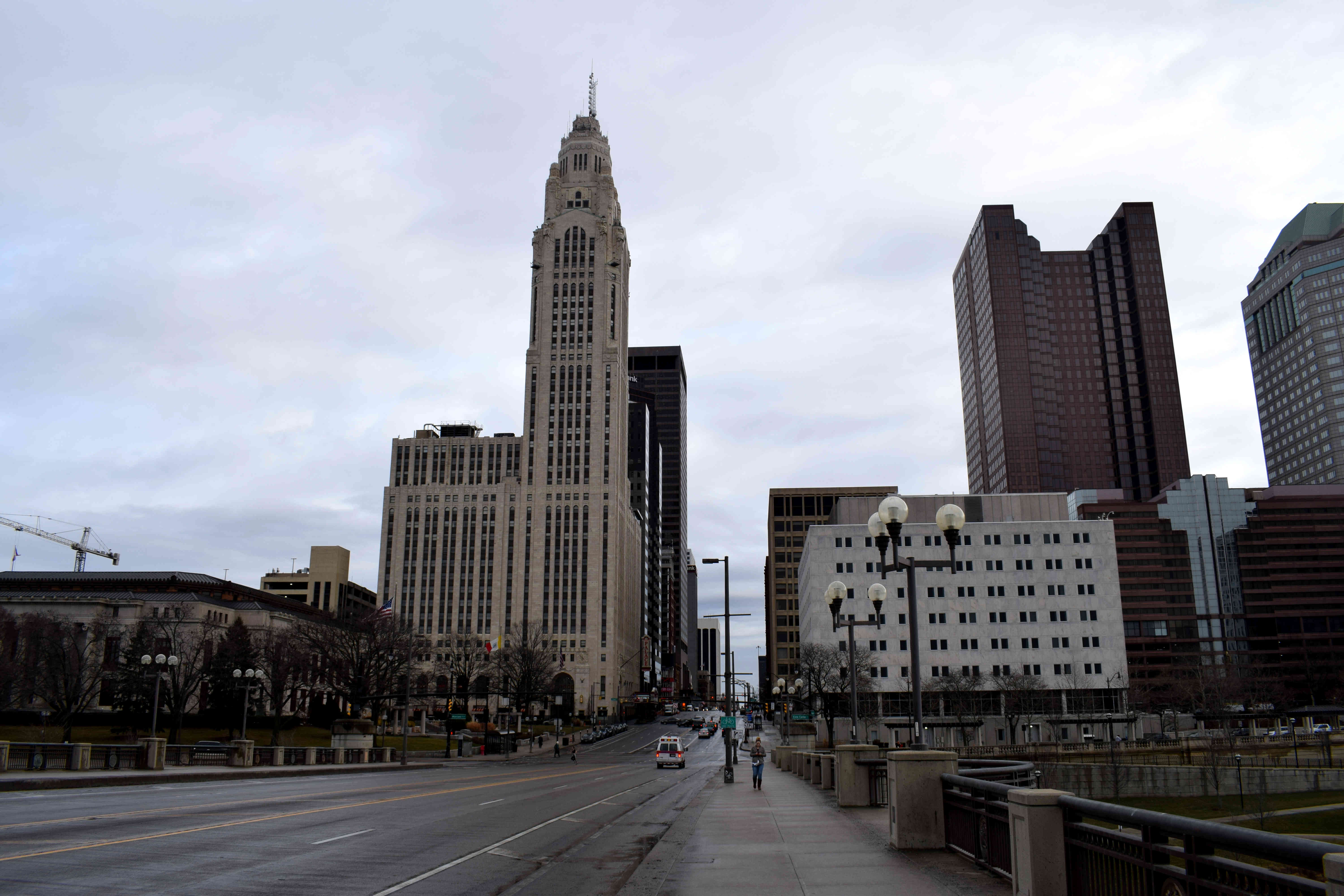 At the time it was built in 1924 it was
At the time it was built in 1924 it was 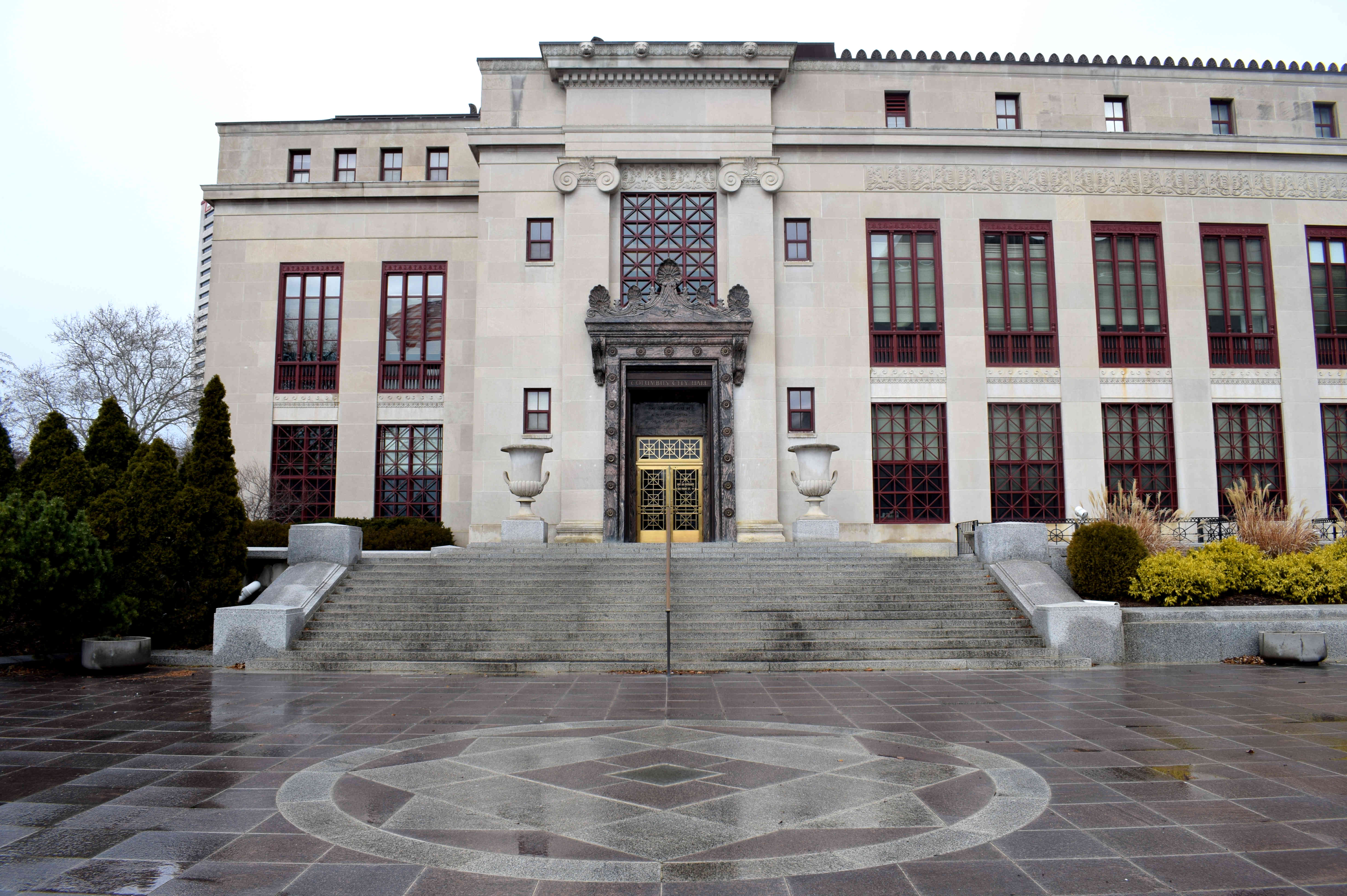 And in front of City Hall is a statue to Christopher Columbus.
And in front of City Hall is a statue to Christopher Columbus.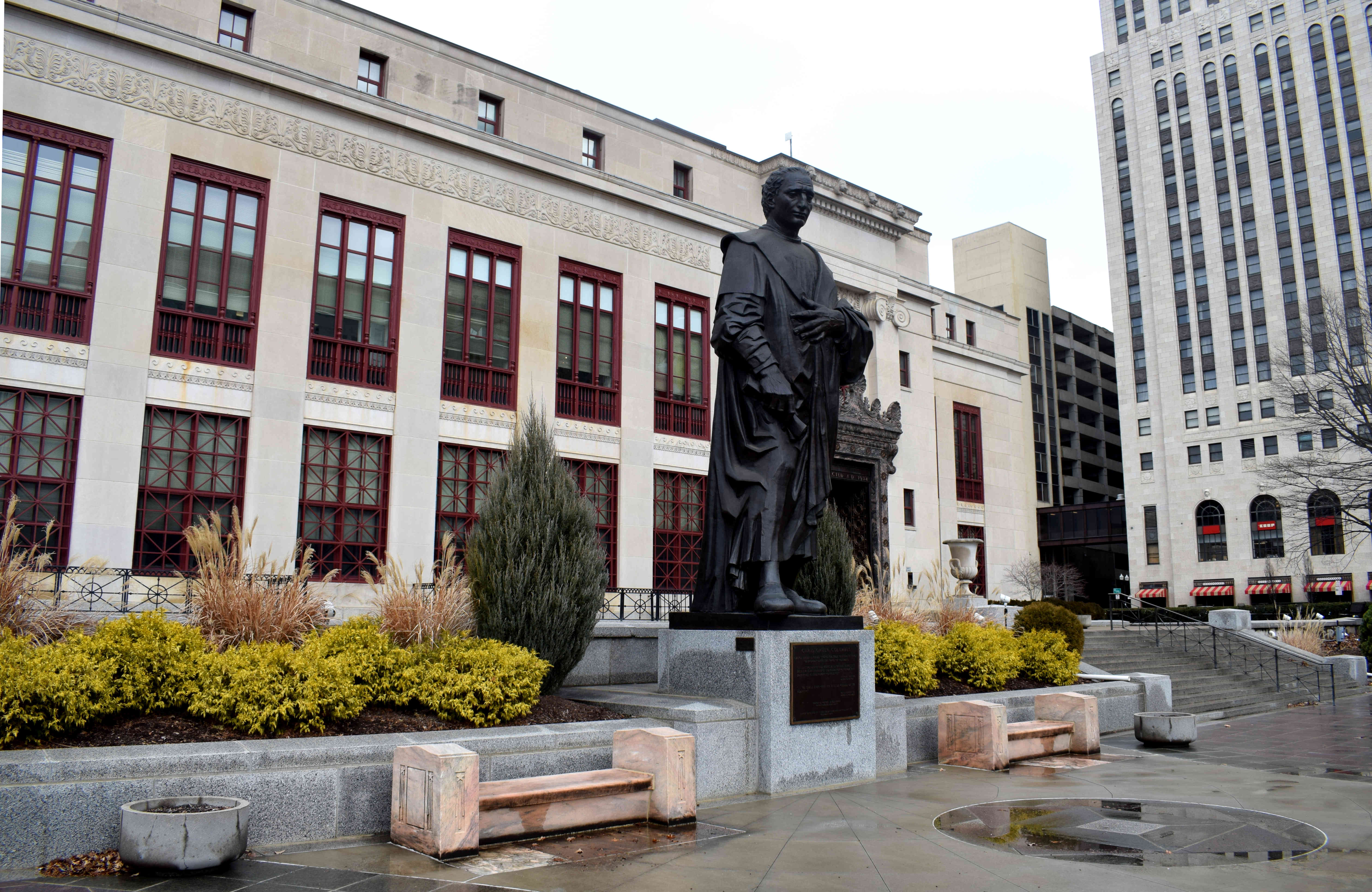 The statue was transported by boat to Columbus, Ohio all the way from Genoa, Italy in 1955. Christopher Columbus grew up in Genoa before setting off from Spain on his voyage to cross the Atlantic in 1492 and discover America. This statue served as a gift from the city of his birth to the city of his name.
The statue was transported by boat to Columbus, Ohio all the way from Genoa, Italy in 1955. Christopher Columbus grew up in Genoa before setting off from Spain on his voyage to cross the Atlantic in 1492 and discover America. This statue served as a gift from the city of his birth to the city of his name.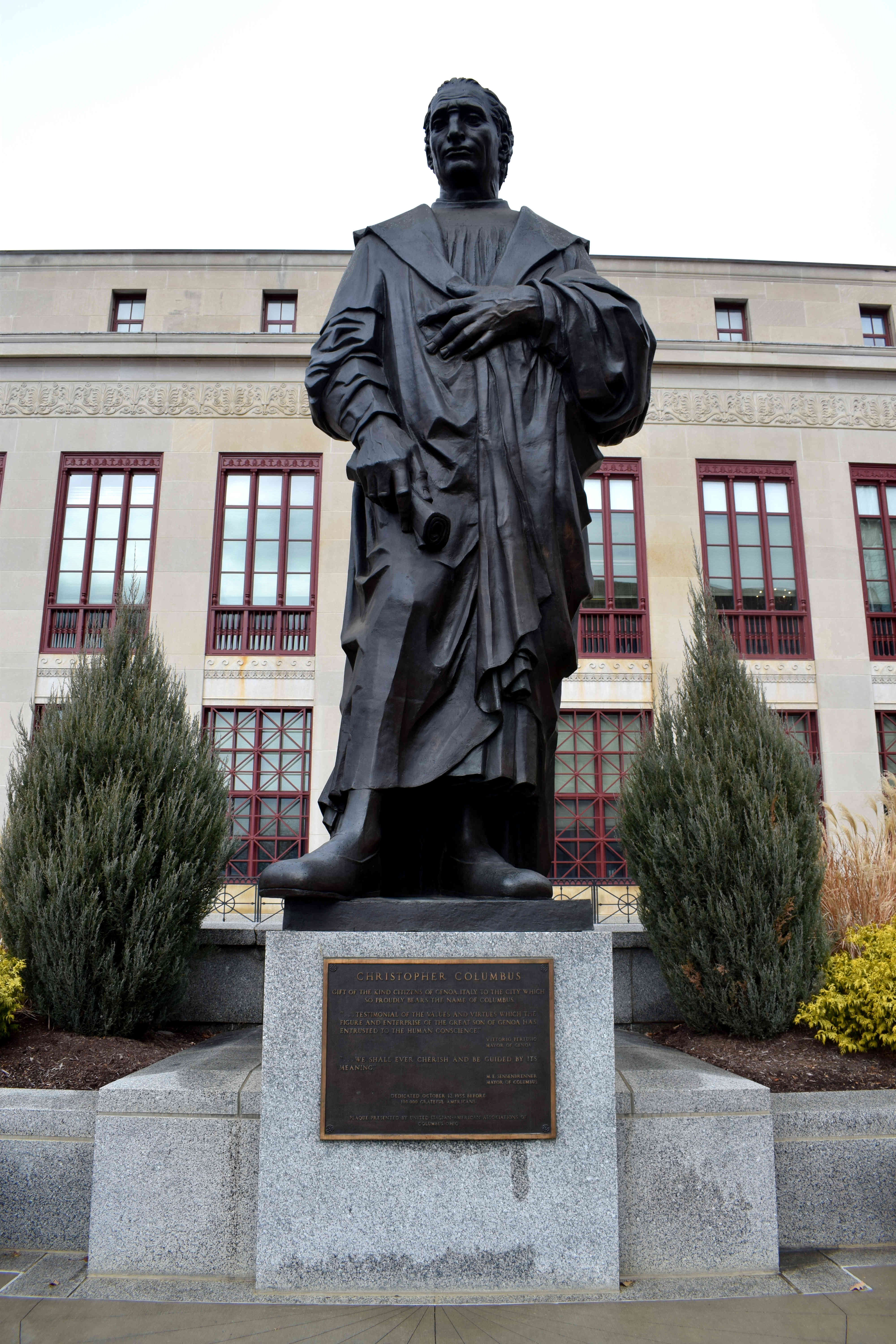 It was an impressive statue when I visited in 2018, but unfortunately it’s gone now. In recent years protests have broken out in the United States over racial issues, culminating in the Black Lives Matter movement. When the protests hit Columbus, they demanded the statue be removed owing to his racist legacy toward Native Americans. There were even demands to rename Columbus to something else in order to erase any association with Christopher Columbus. In July 2020, the city caved in and took down the statue.
It was an impressive statue when I visited in 2018, but unfortunately it’s gone now. In recent years protests have broken out in the United States over racial issues, culminating in the Black Lives Matter movement. When the protests hit Columbus, they demanded the statue be removed owing to his racist legacy toward Native Americans. There were even demands to rename Columbus to something else in order to erase any association with Christopher Columbus. In July 2020, the city caved in and took down the statue.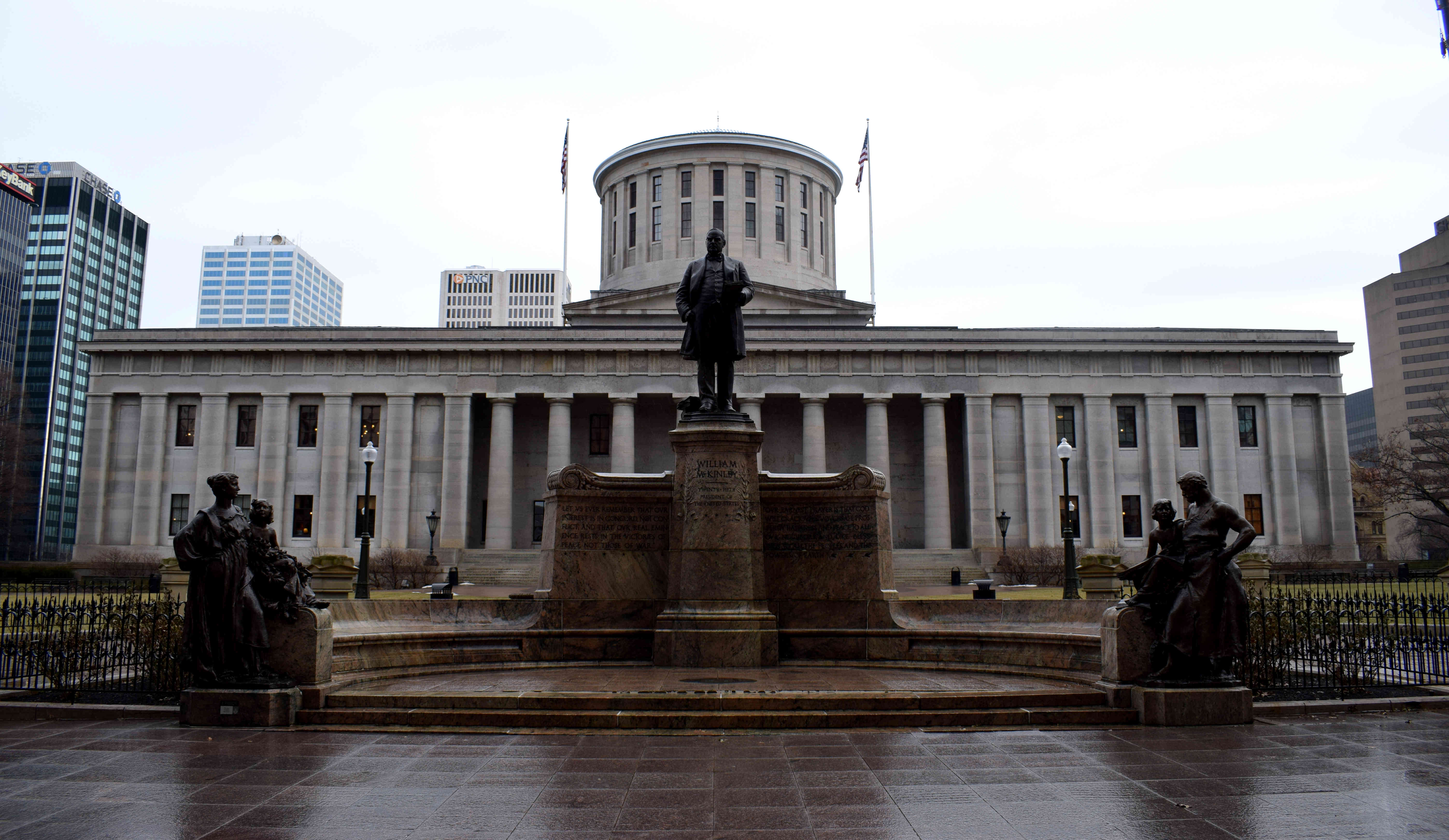 Constructed in the Greek Revival Style in 1861, the Ohio Statehouse is arguably Columbus’s most beautiful building. The Ohio General Assembly and the Ohio Governor’s office are located in it. In front of the Statehouse is a statue to President William McKinley, the 25th president of the United States.
Constructed in the Greek Revival Style in 1861, the Ohio Statehouse is arguably Columbus’s most beautiful building. The Ohio General Assembly and the Ohio Governor’s office are located in it. In front of the Statehouse is a statue to President William McKinley, the 25th president of the United States.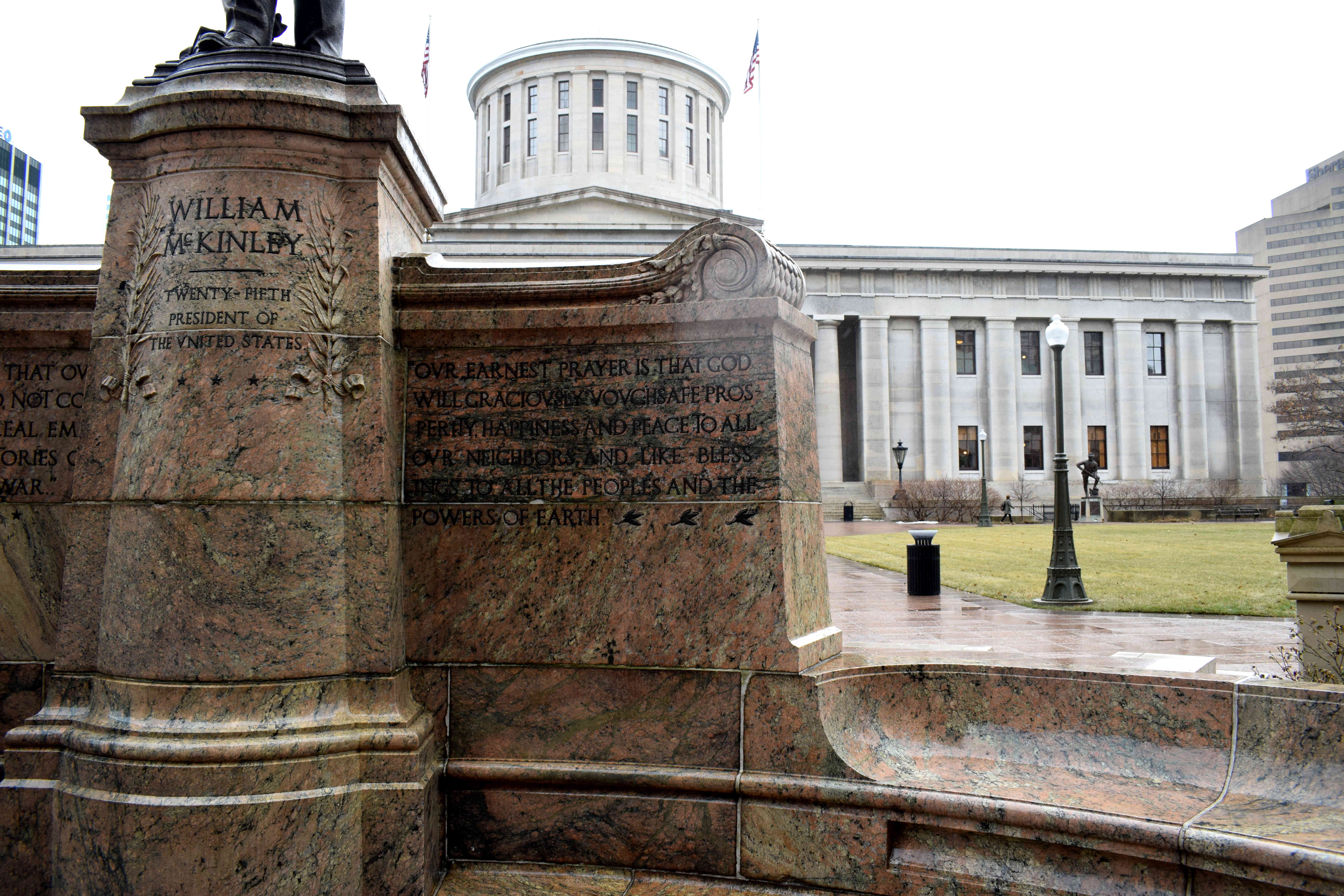 Mckinley was from Ohio. He was the third American president to be assassinated in 1901, following Abraham Lincoln in 1865 and James A. Garfield in 1881. He was also the last American president to have participated in the American Civil War as a soldier.
Mckinley was from Ohio. He was the third American president to be assassinated in 1901, following Abraham Lincoln in 1865 and James A. Garfield in 1881. He was also the last American president to have participated in the American Civil War as a soldier.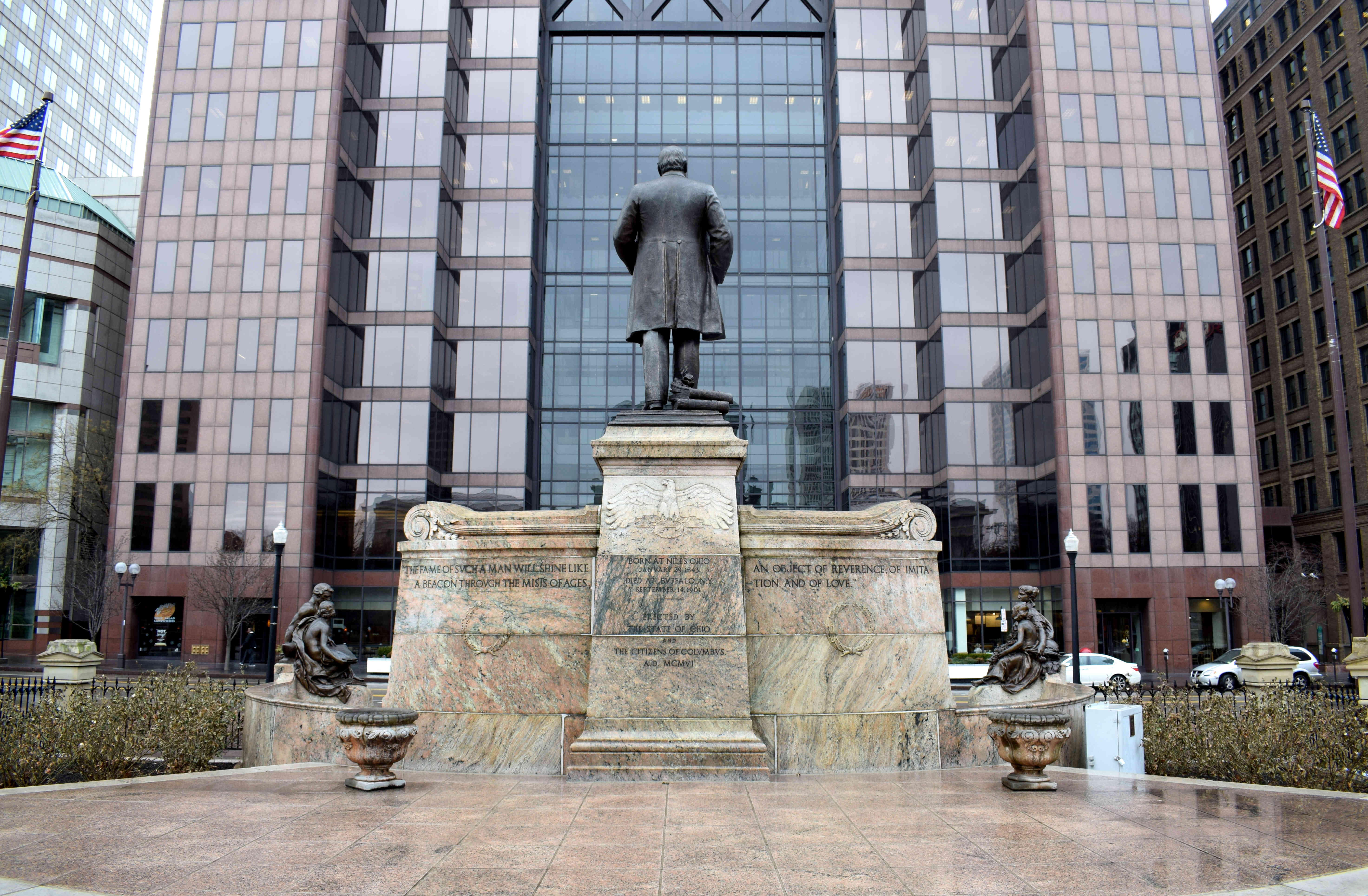 This monument was erected to him in 1906, just five years after his assassination.
This monument was erected to him in 1906, just five years after his assassination.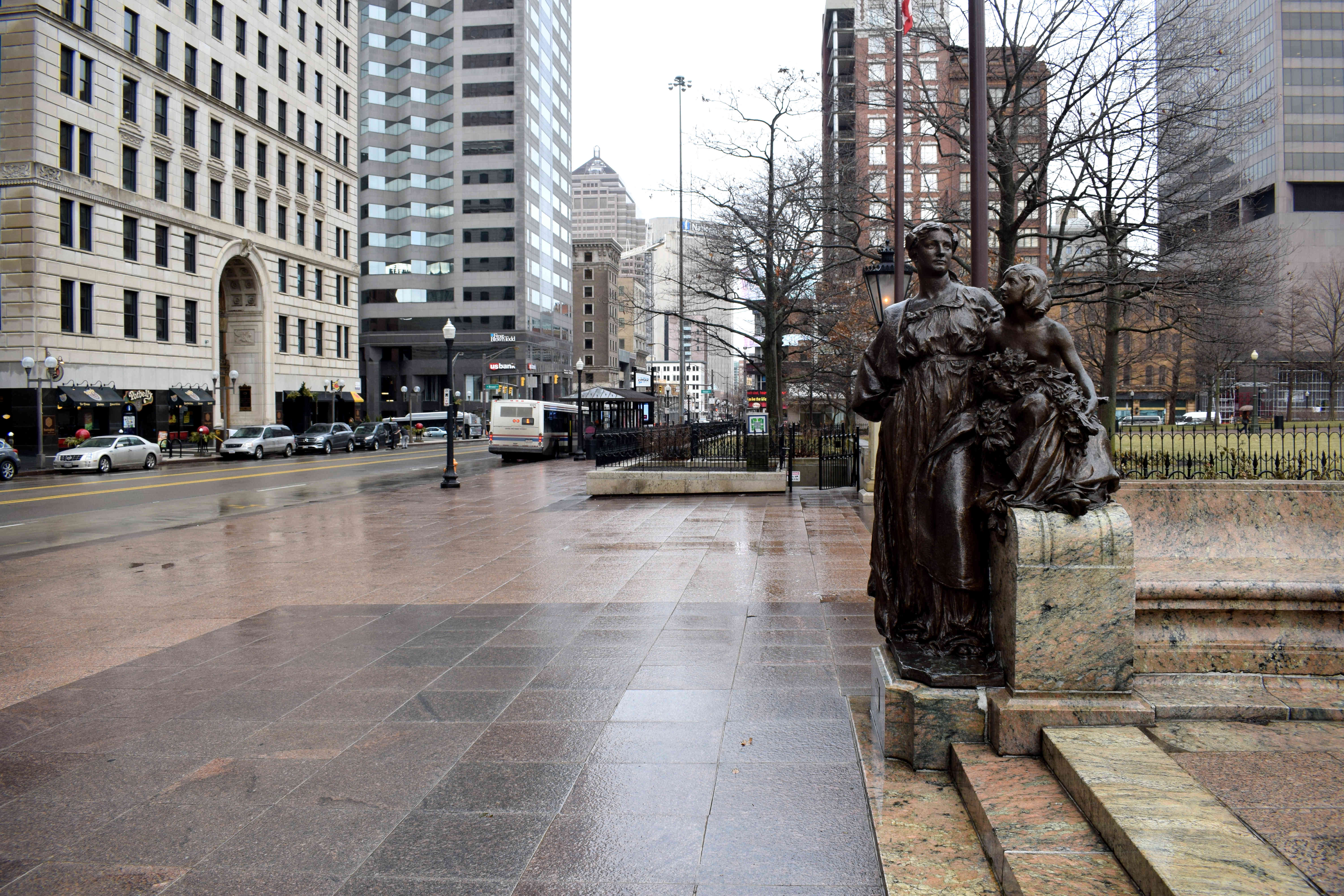 While on the right side an older man looks down on a young boy, meant to symbolize prosperity.
While on the right side an older man looks down on a young boy, meant to symbolize prosperity.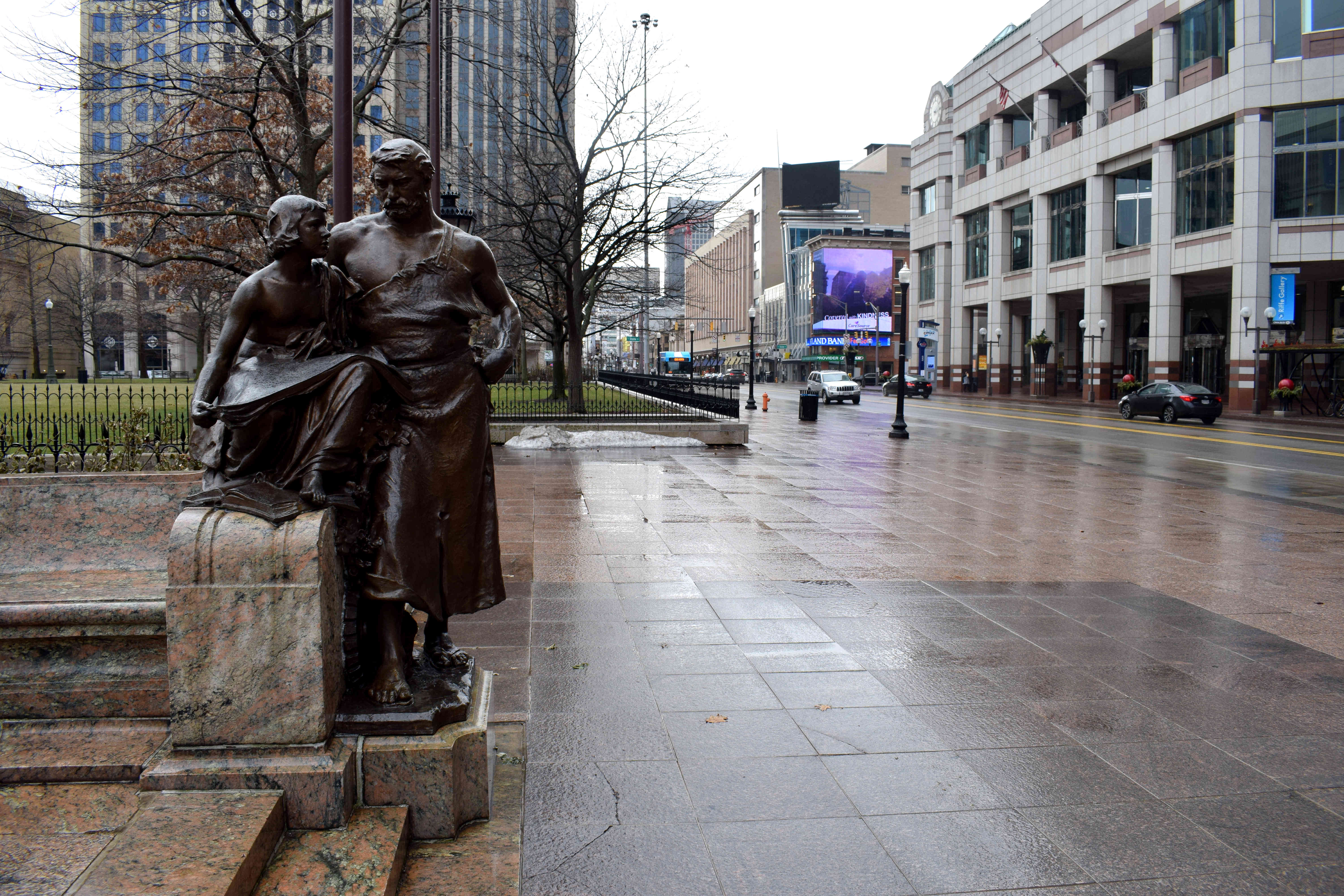 Despite the rainy weather, it was impossible not to notice how clean Columbus was. Unlike New York or Philadelphia, I barely found any trash on the sides of the roads in the center. There was little graffiti on buildings or homeless people on the sidewalks.
Despite the rainy weather, it was impossible not to notice how clean Columbus was. Unlike New York or Philadelphia, I barely found any trash on the sides of the roads in the center. There was little graffiti on buildings or homeless people on the sidewalks.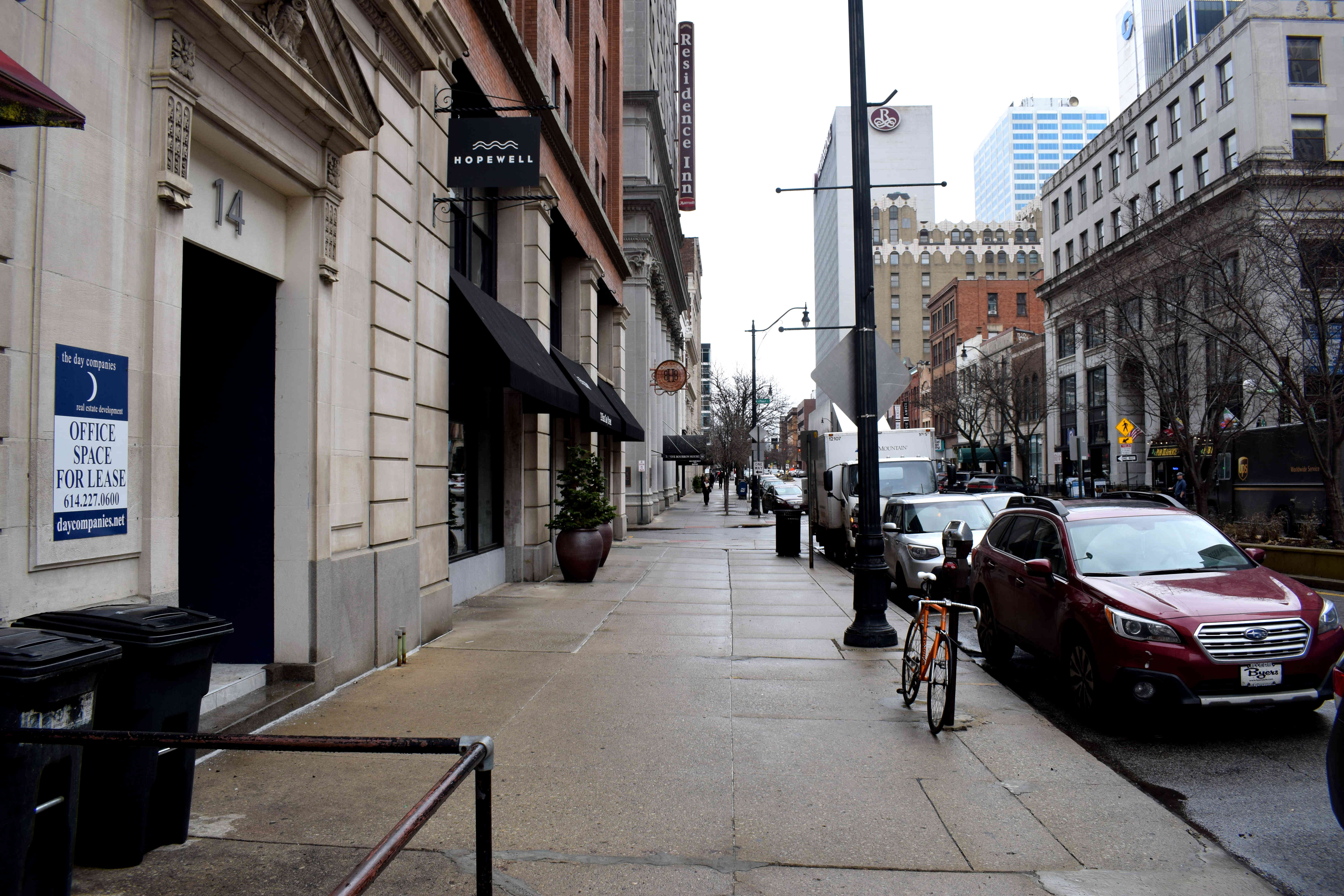 Another thing I liked were the bike lanes in the center. In recent years, Columbus has expanded its bike lane network. While this pales in comparison to bike-friendly cities in Europe, it shows that even in the Midwest, in a car-dependent state like Ohio, people are beginning to realize that everything can be done by bike and there is no need for a car.
Another thing I liked were the bike lanes in the center. In recent years, Columbus has expanded its bike lane network. While this pales in comparison to bike-friendly cities in Europe, it shows that even in the Midwest, in a car-dependent state like Ohio, people are beginning to realize that everything can be done by bike and there is no need for a car.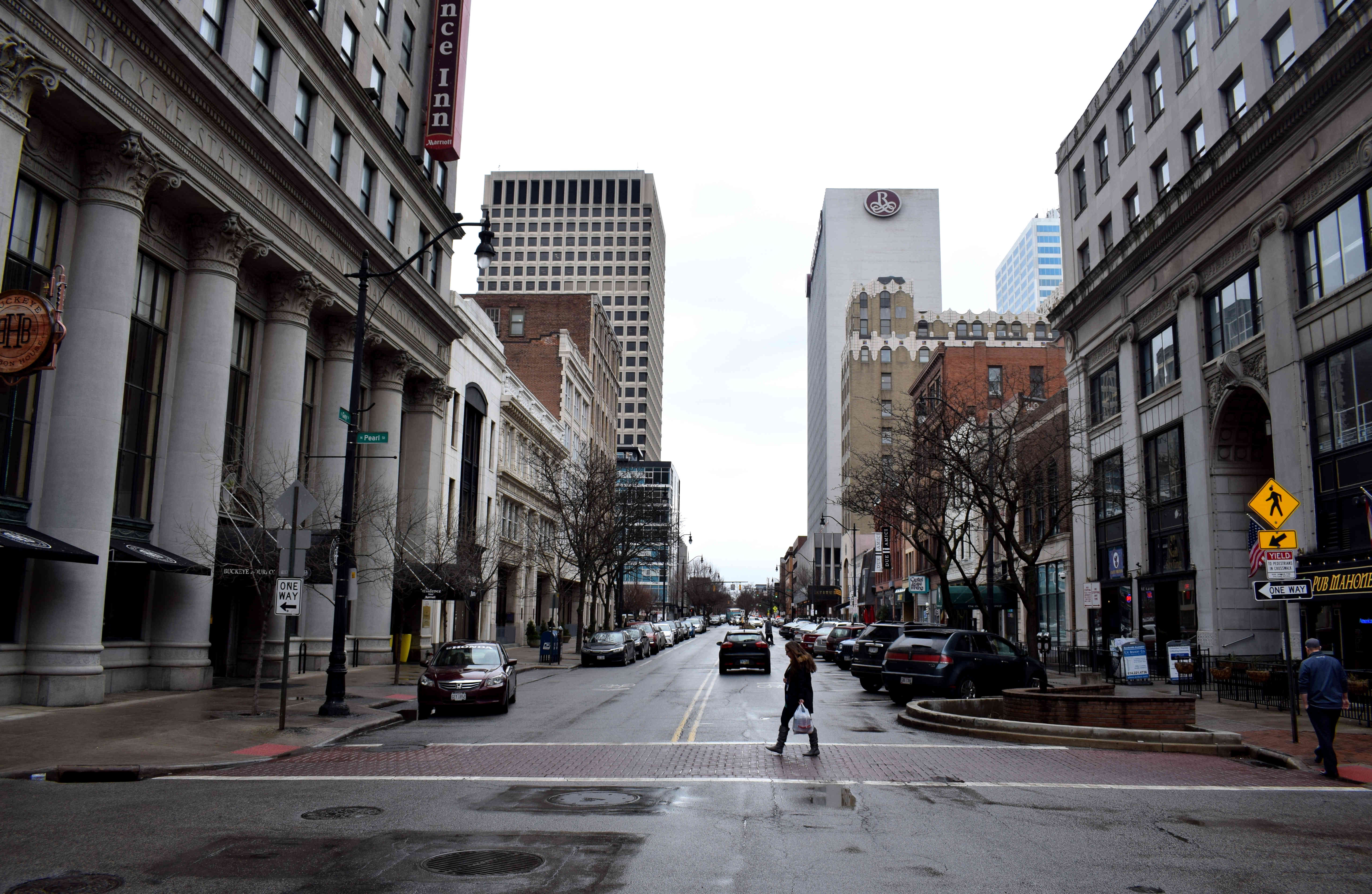 Some colleagues in suits taking lunch.
Some colleagues in suits taking lunch.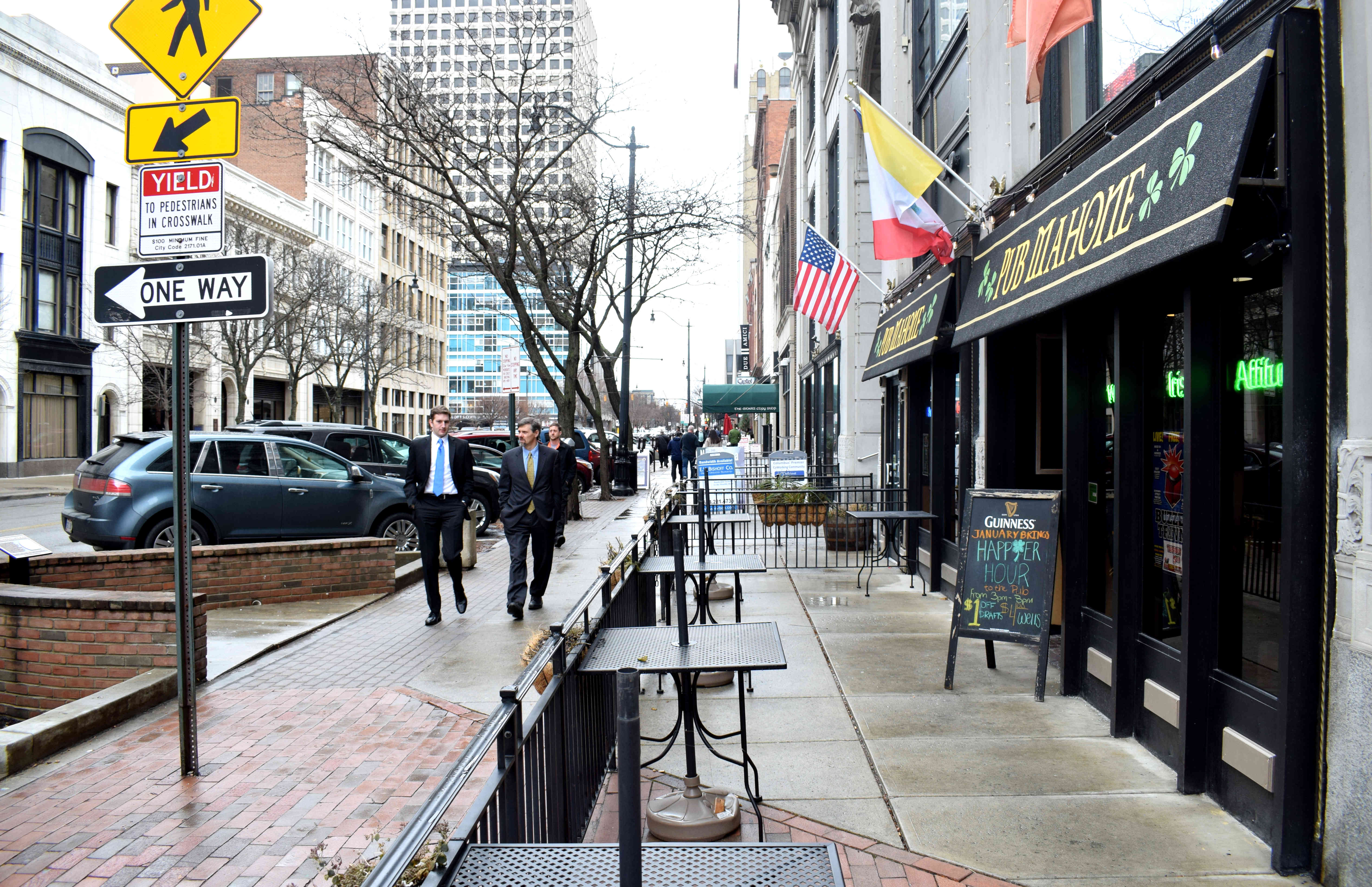 Columbus has clearly been a victim of developers. There are little historic buildings left in the center showcasing the city’s old 19th and early 20th century architecture. While pockets of smaller two or three story buildings can still be found, most of it has been gobbled up by skyscrapers and modern high-rises. It was difficult to find any streets in the center that had enough uninterrupted historical buildings on them that could be converted into a pedestrian zone, the way
Columbus has clearly been a victim of developers. There are little historic buildings left in the center showcasing the city’s old 19th and early 20th century architecture. While pockets of smaller two or three story buildings can still be found, most of it has been gobbled up by skyscrapers and modern high-rises. It was difficult to find any streets in the center that had enough uninterrupted historical buildings on them that could be converted into a pedestrian zone, the way 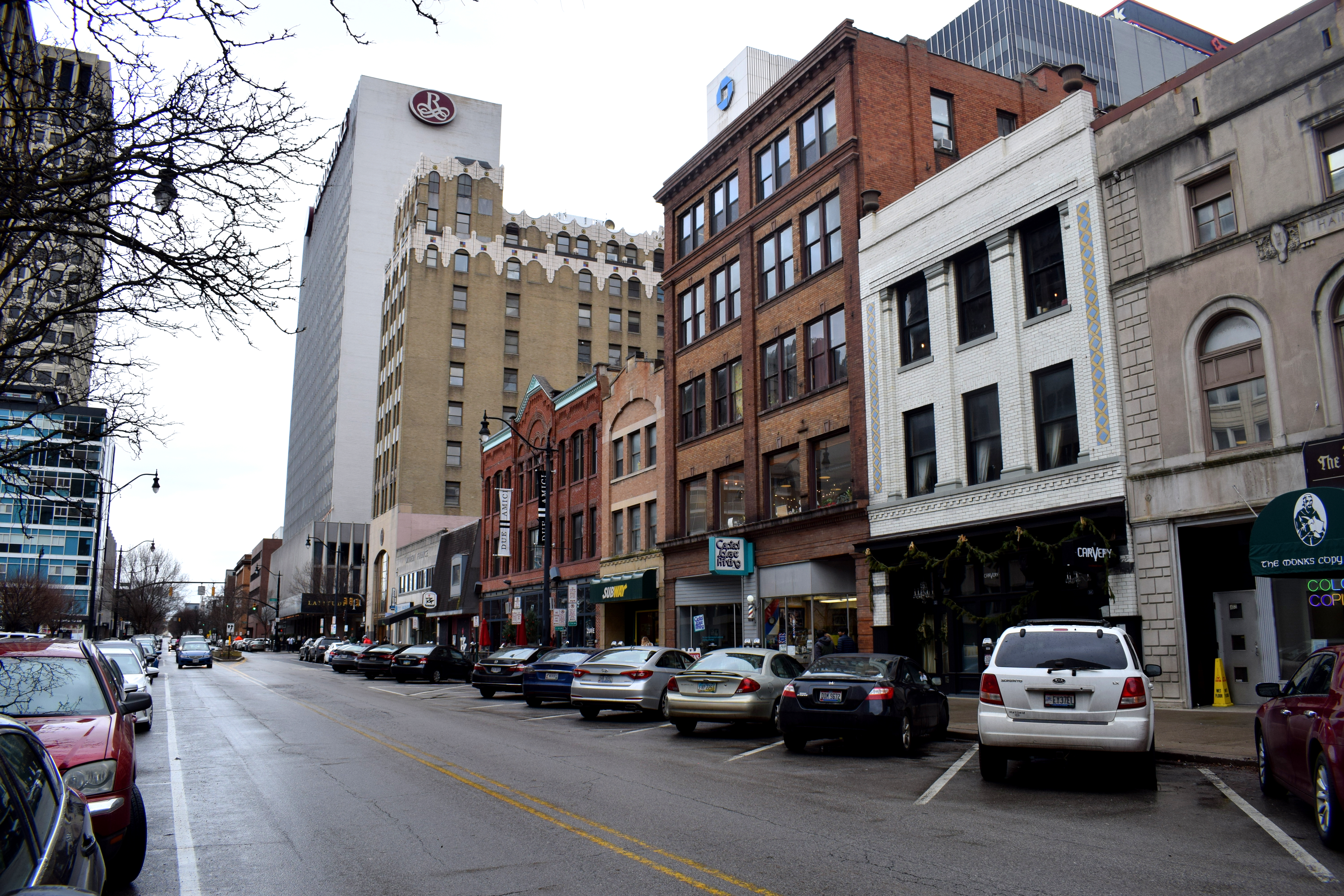 A few more historic buildings downtown.
A few more historic buildings downtown.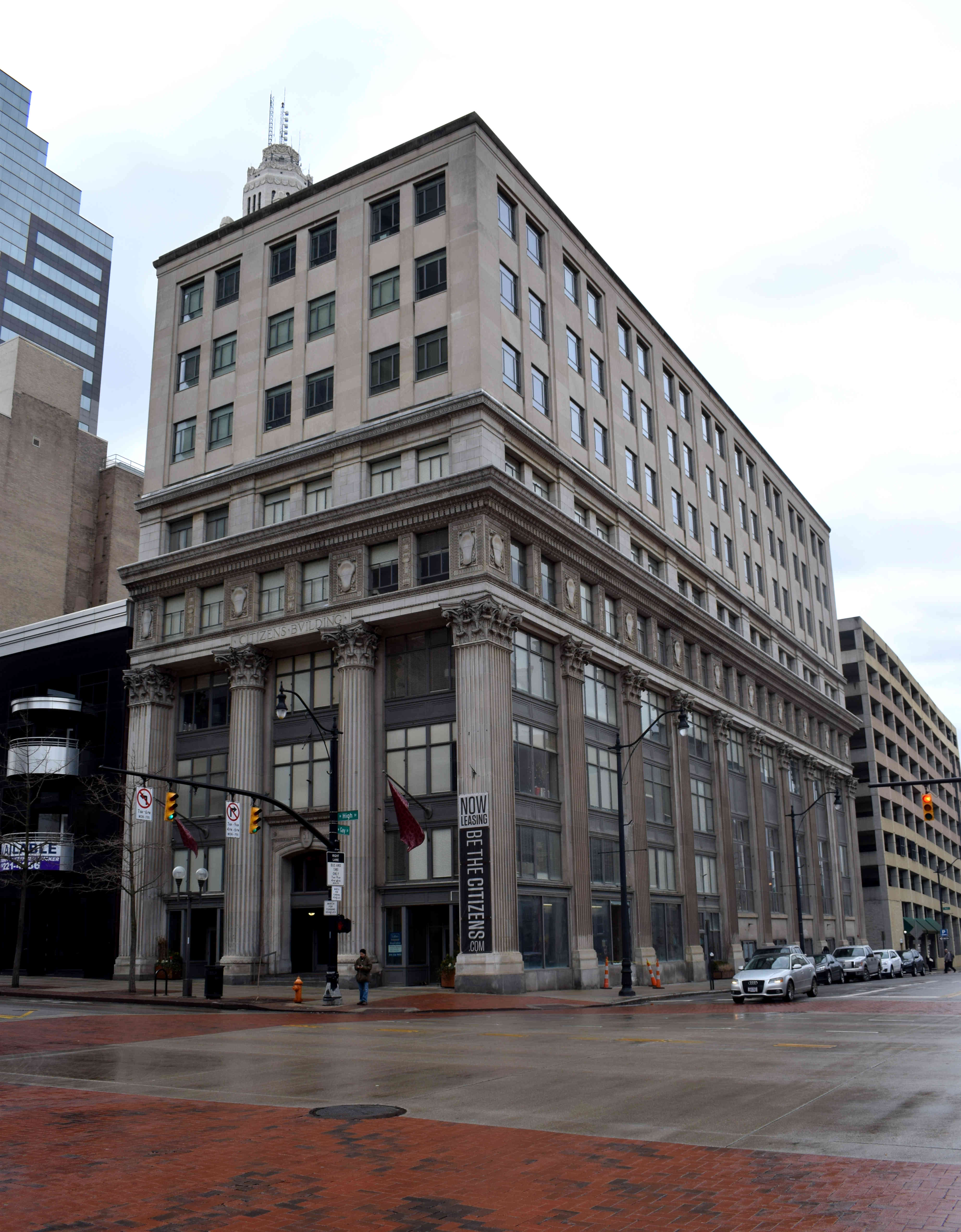
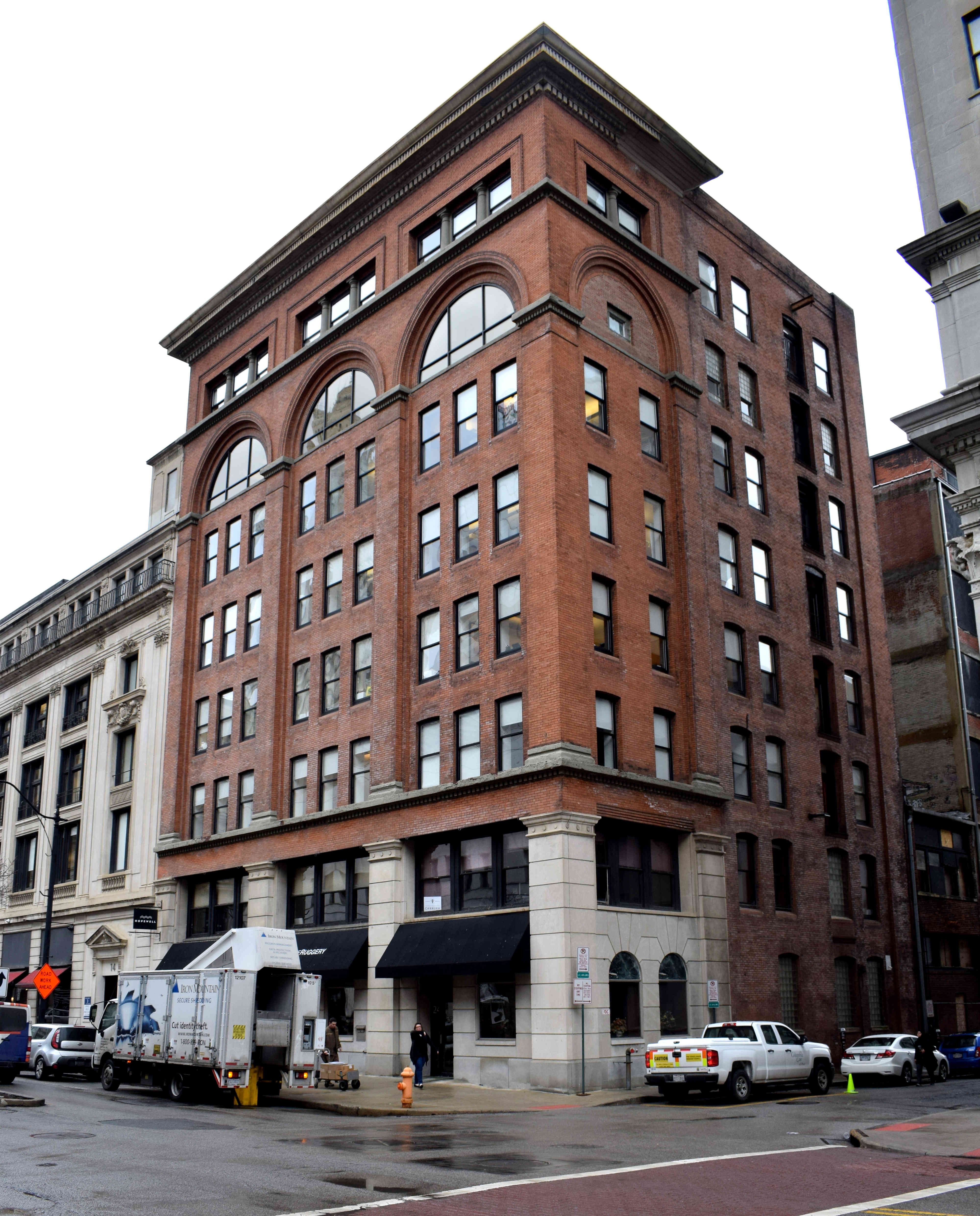
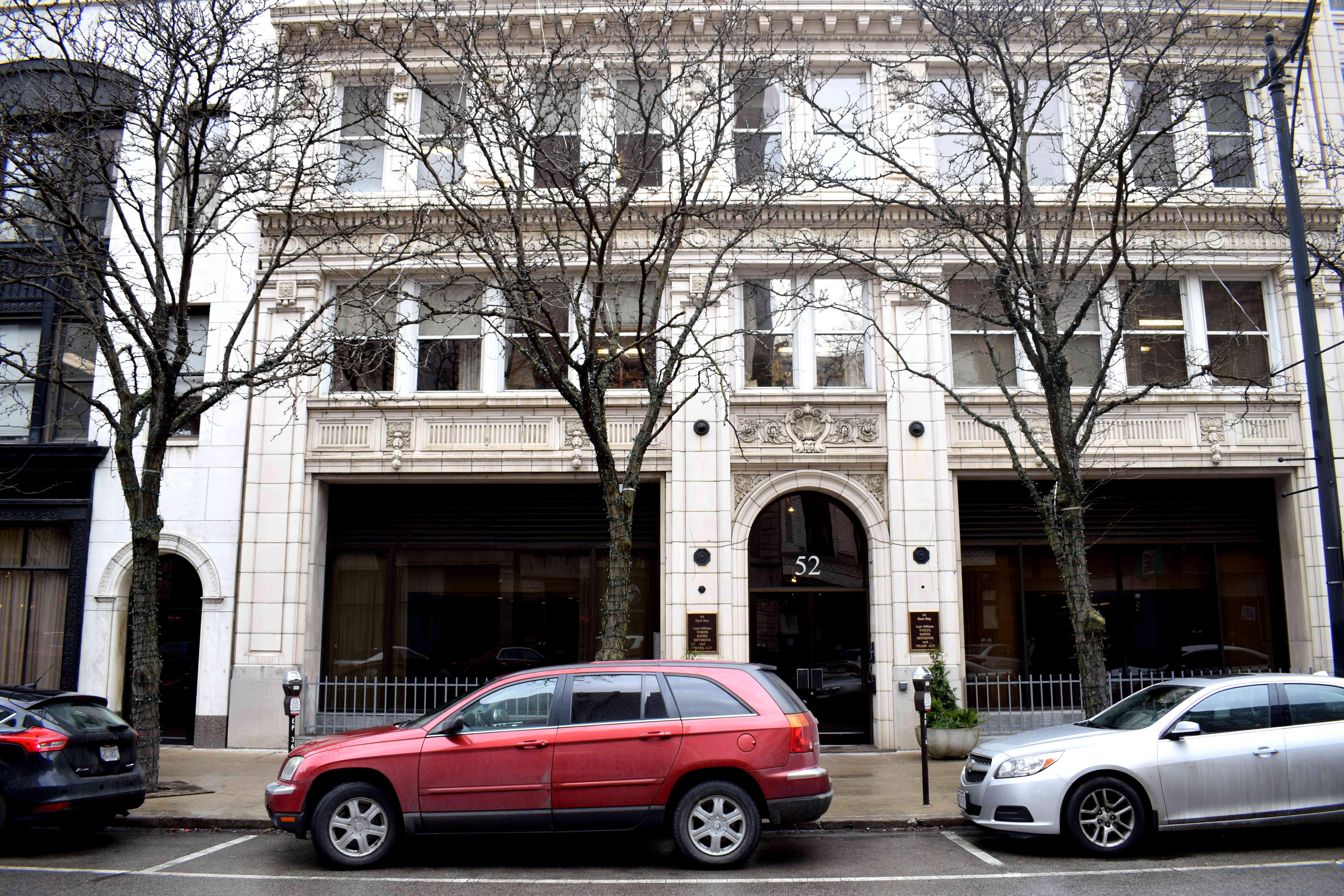 While these buildings are nice, it is difficult to enjoy them to their full extent as they are overpowered by taller, modern structures made of steel and glass.
While these buildings are nice, it is difficult to enjoy them to their full extent as they are overpowered by taller, modern structures made of steel and glass.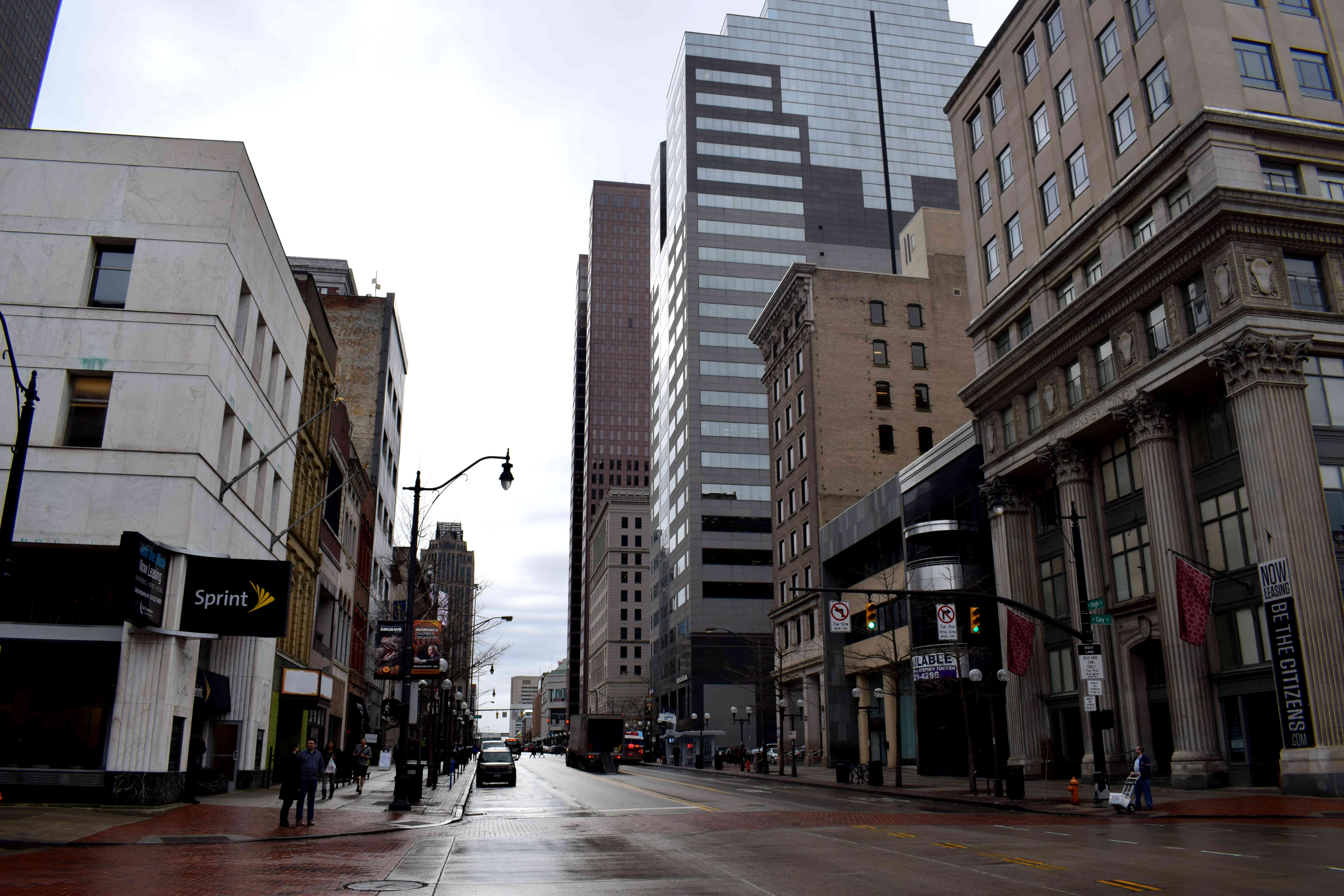 In other cases, their facades are covered with advertising.
In other cases, their facades are covered with advertising.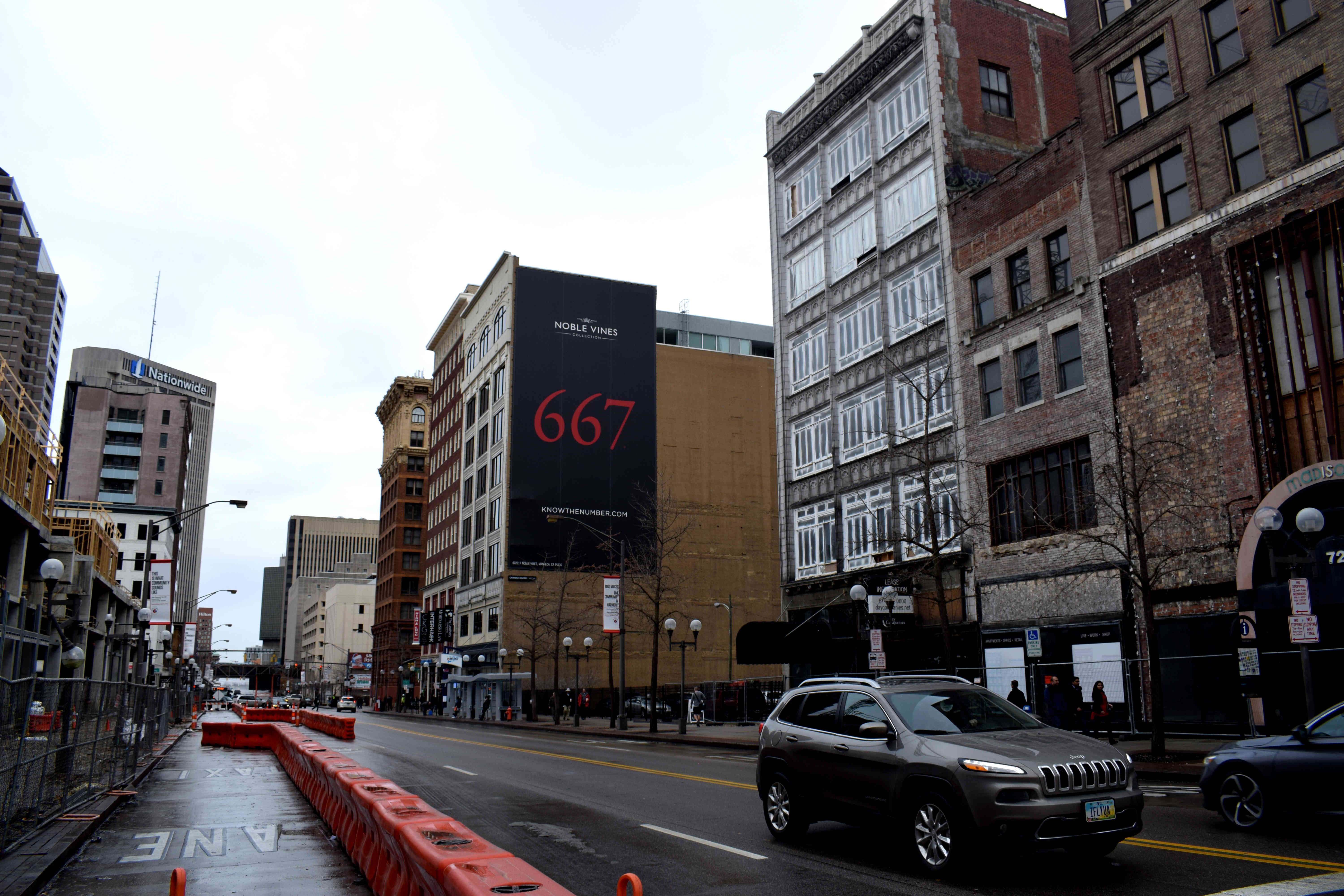 One of Columbus’s most impressive buildings is the Atlas Building, built in 1905 and added to the U.S. National Register of Historic Buildings in 1977.
One of Columbus’s most impressive buildings is the Atlas Building, built in 1905 and added to the U.S. National Register of Historic Buildings in 1977.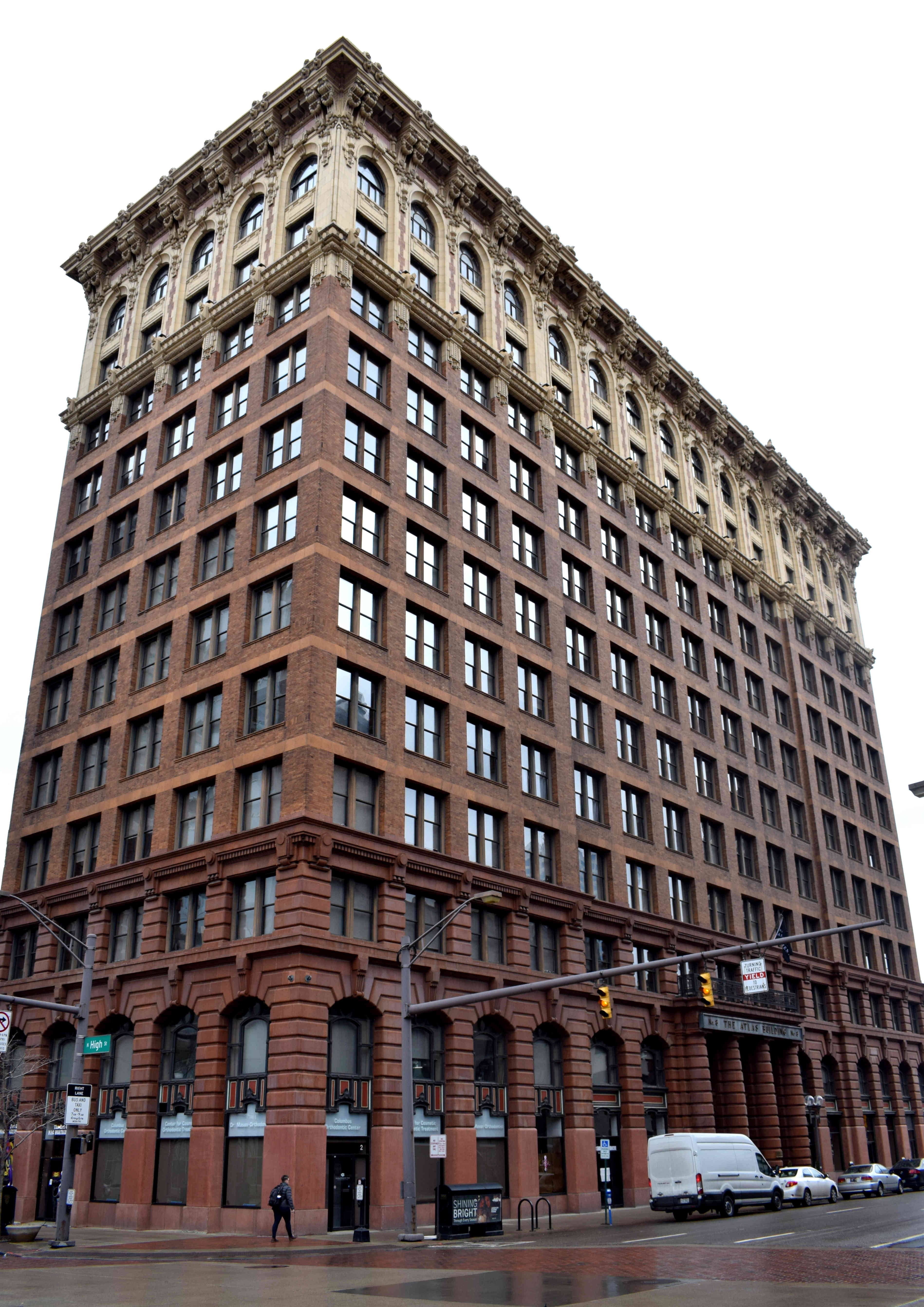 The Atlas Building is a unique example of early 20th century American architecture, particularly because of how tall and narrow the building is.
The Atlas Building is a unique example of early 20th century American architecture, particularly because of how tall and narrow the building is.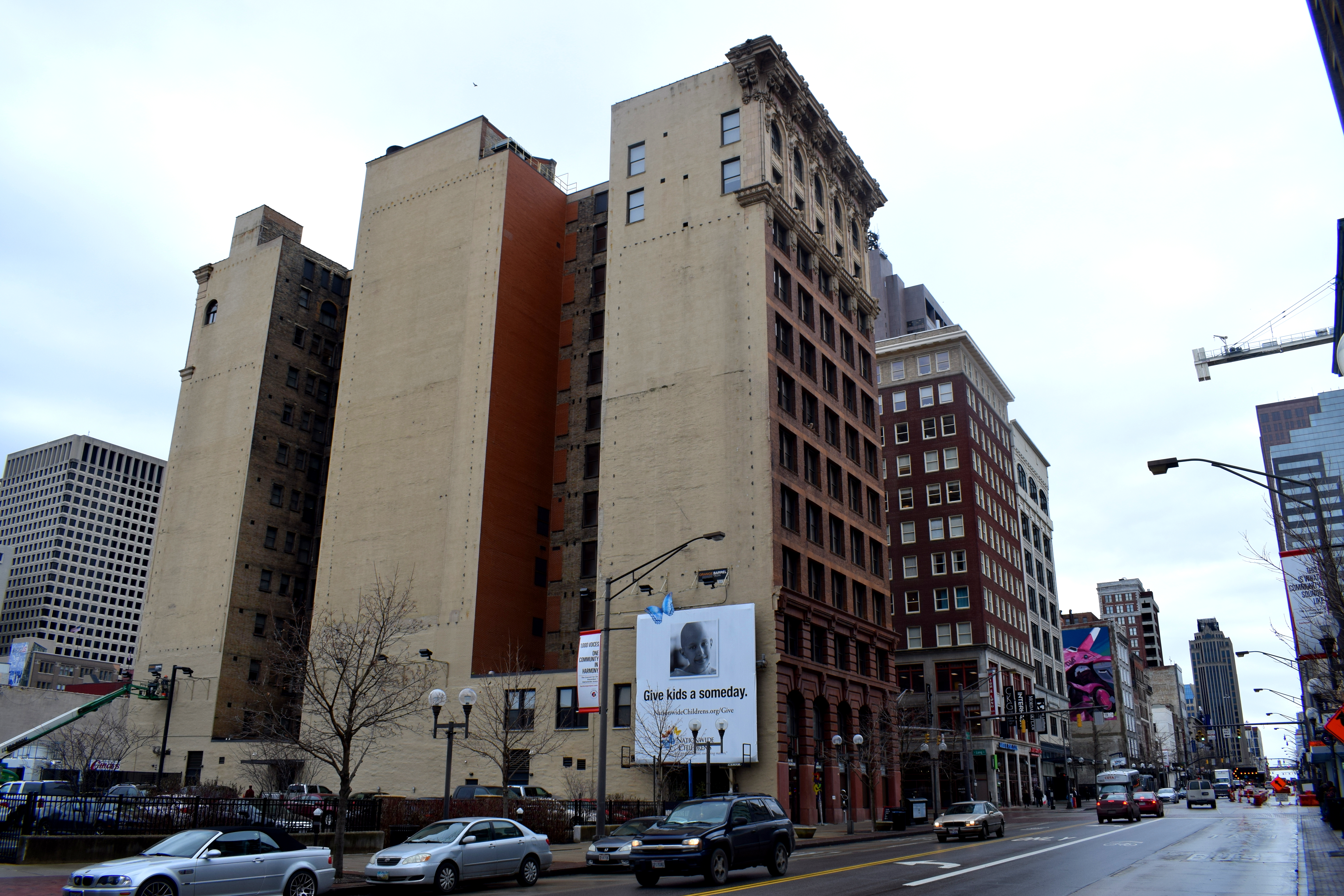 Overall the center of Columbus felt like a bit of mish mash of old buildings thrown together from different eras without any cohesive plan. Here we have a cool historic storefront sign.
Overall the center of Columbus felt like a bit of mish mash of old buildings thrown together from different eras without any cohesive plan. Here we have a cool historic storefront sign.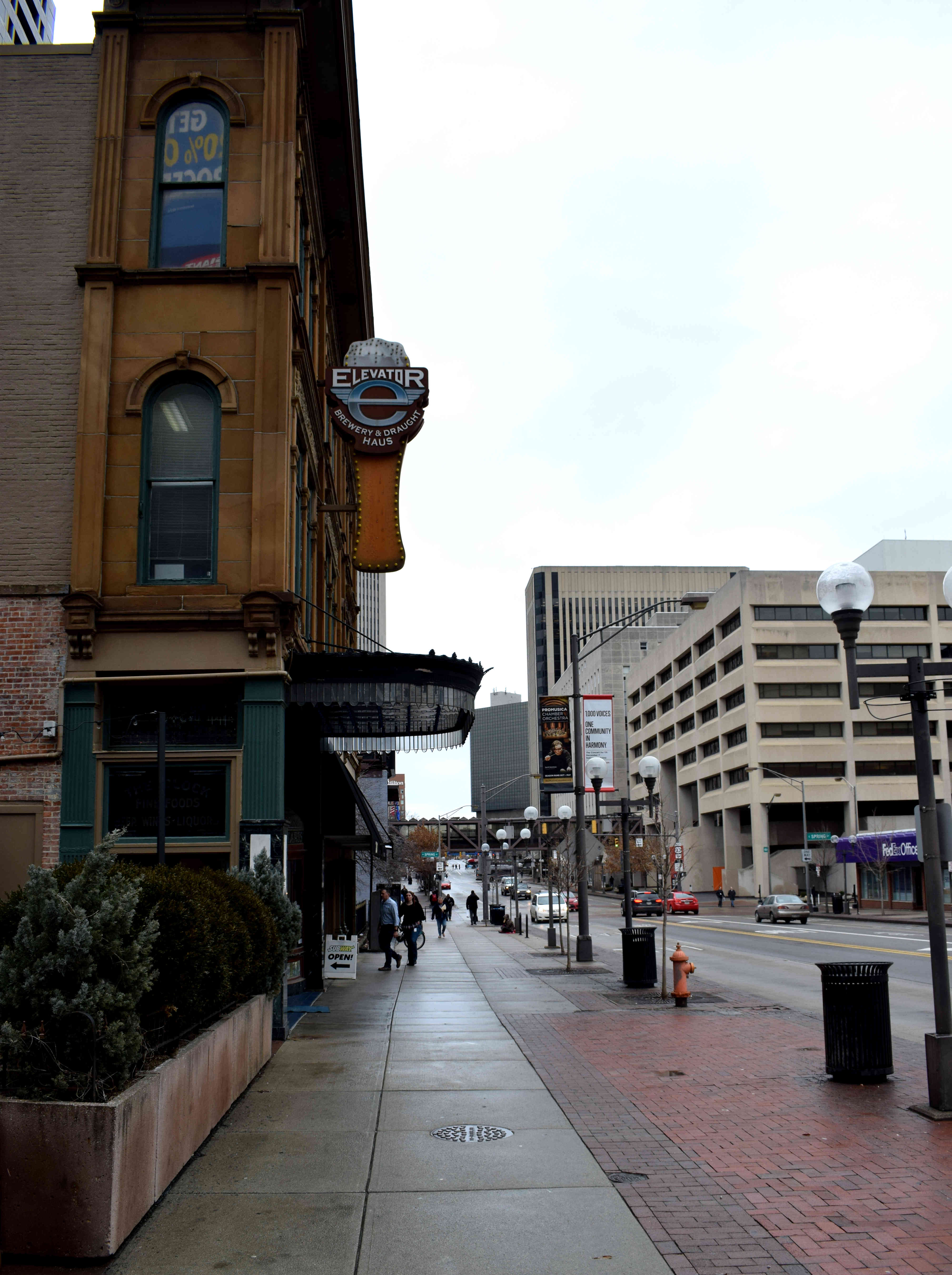 Old style restaurant facades in the center.
Old style restaurant facades in the center.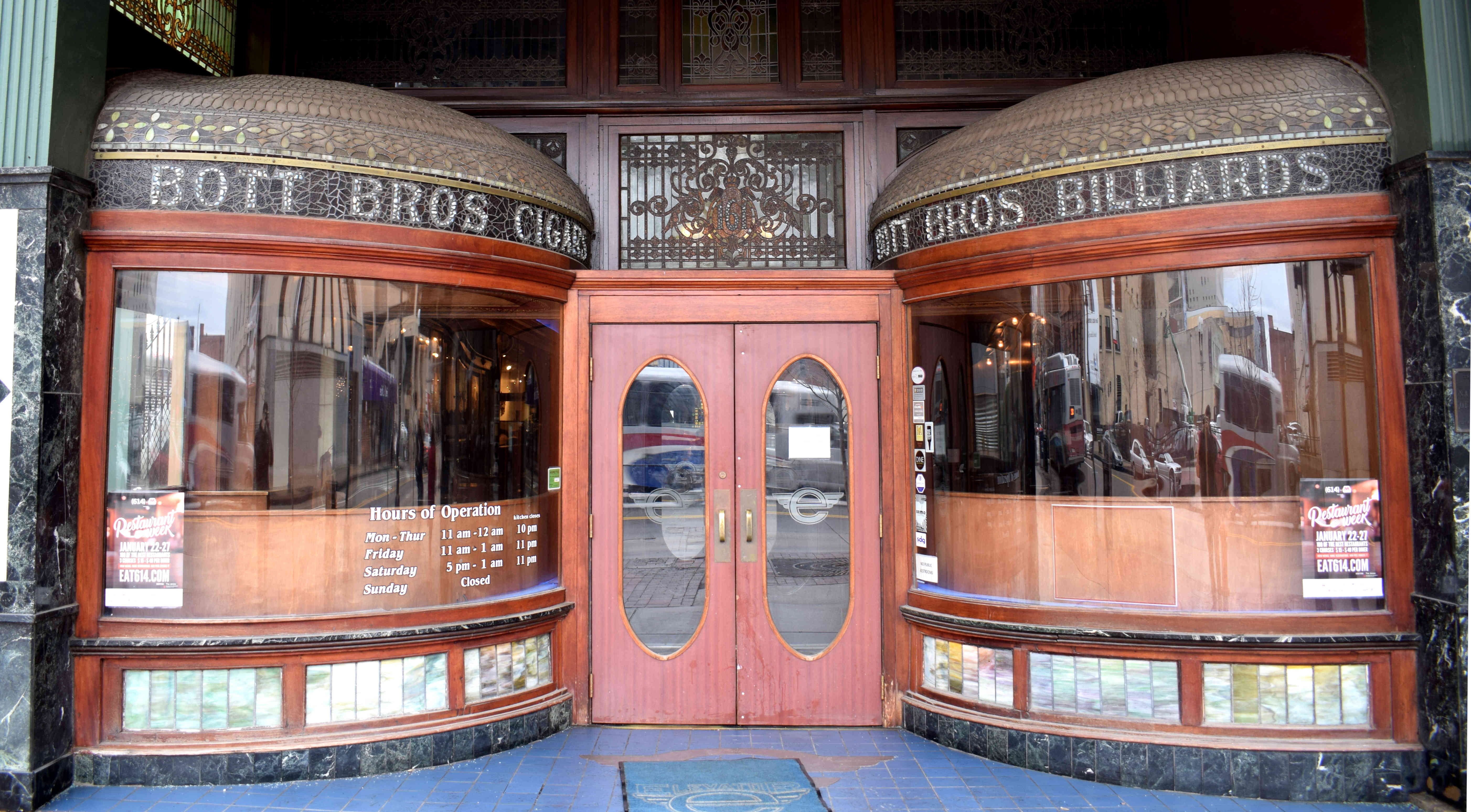 Food trucks in the city center. Columbus is known for its food scene. Some have boldly stated that
Food trucks in the city center. Columbus is known for its food scene. Some have boldly stated that 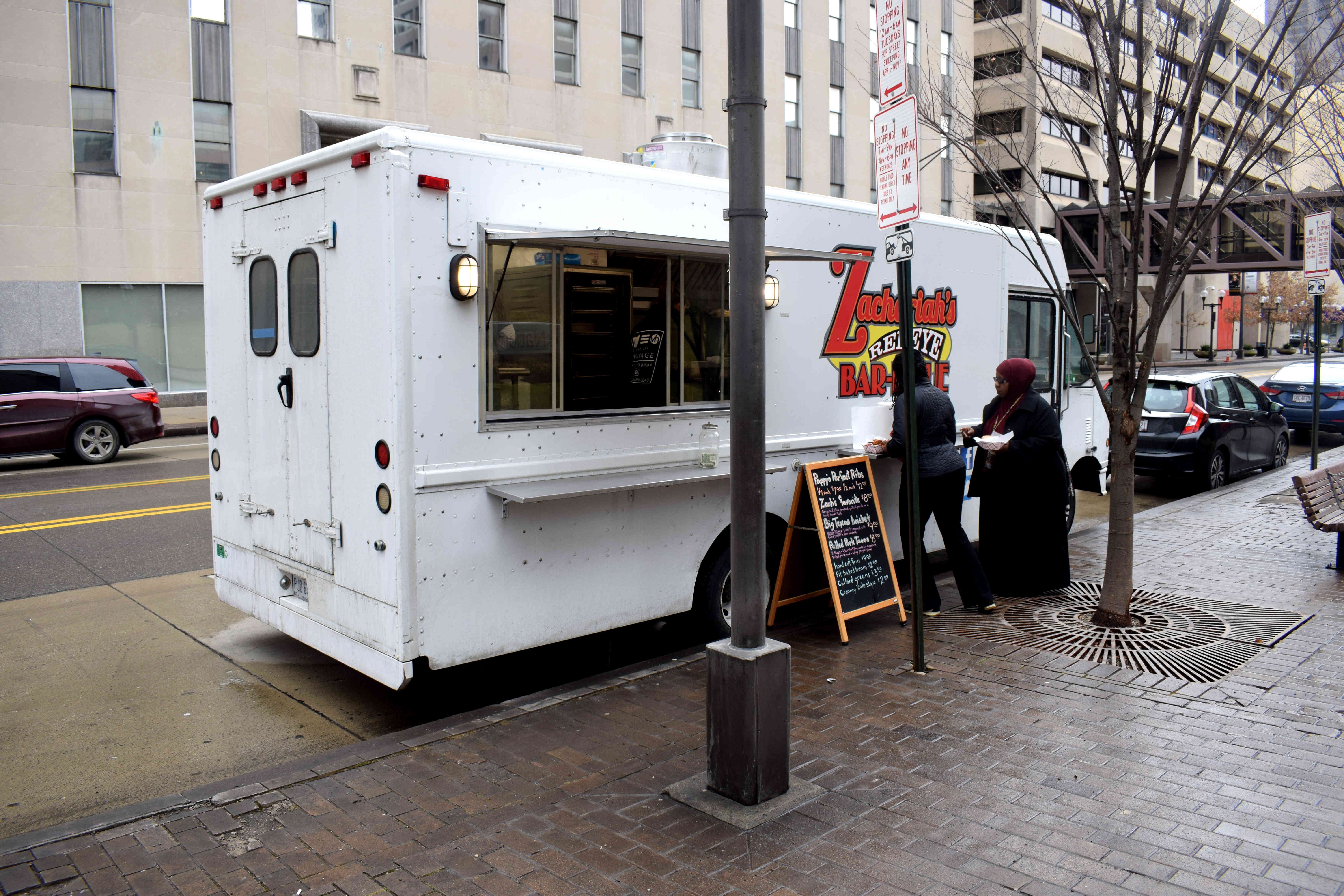 The business district with an interesting overpass.
The business district with an interesting overpass.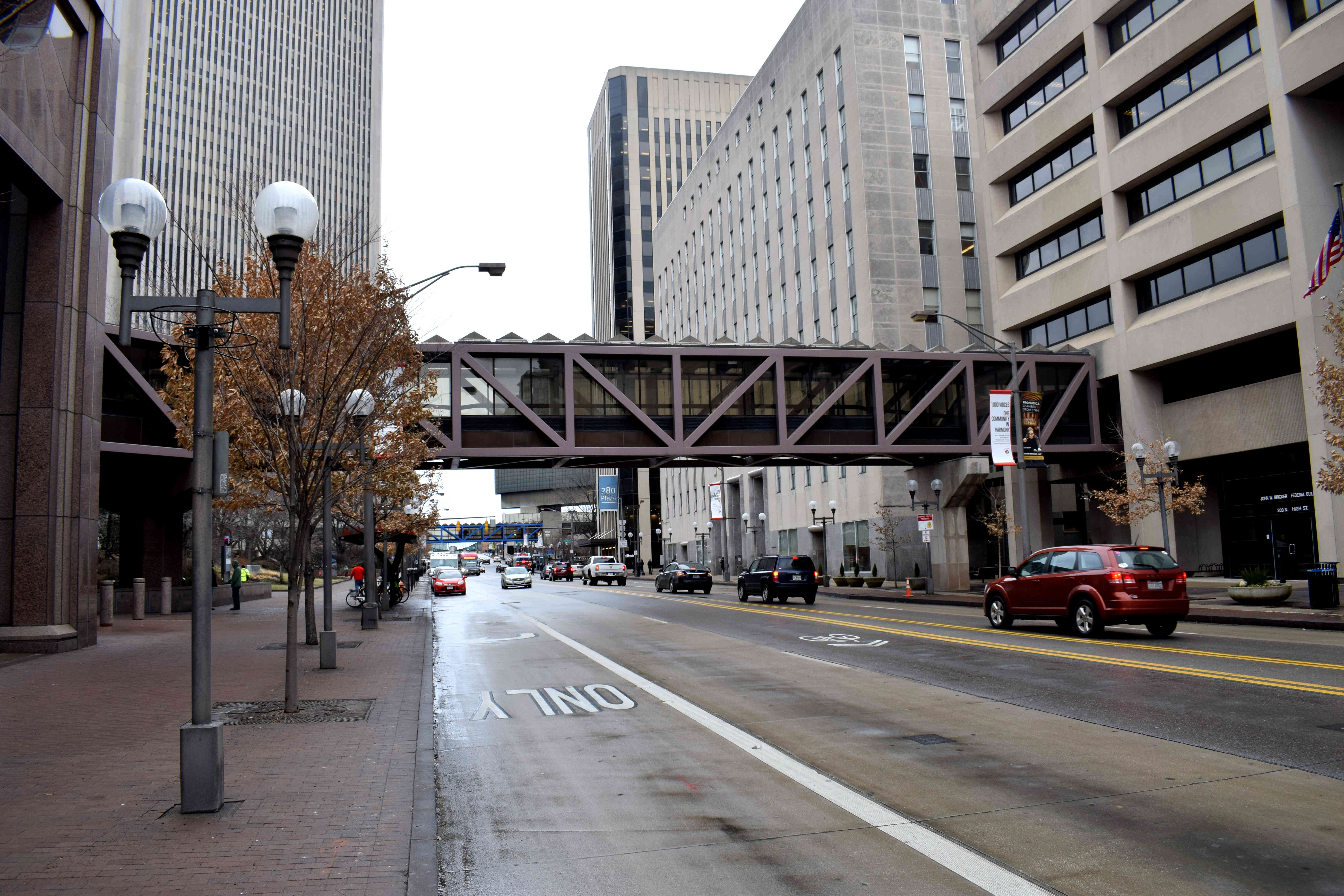 High Street is perhaps the most important street in Columbus. It passes by the Ohio State University Campus, the Columbus business and financial district, the popular Short North neighborhood and onward to Clintonville and suburbia.
High Street is perhaps the most important street in Columbus. It passes by the Ohio State University Campus, the Columbus business and financial district, the popular Short North neighborhood and onward to Clintonville and suburbia.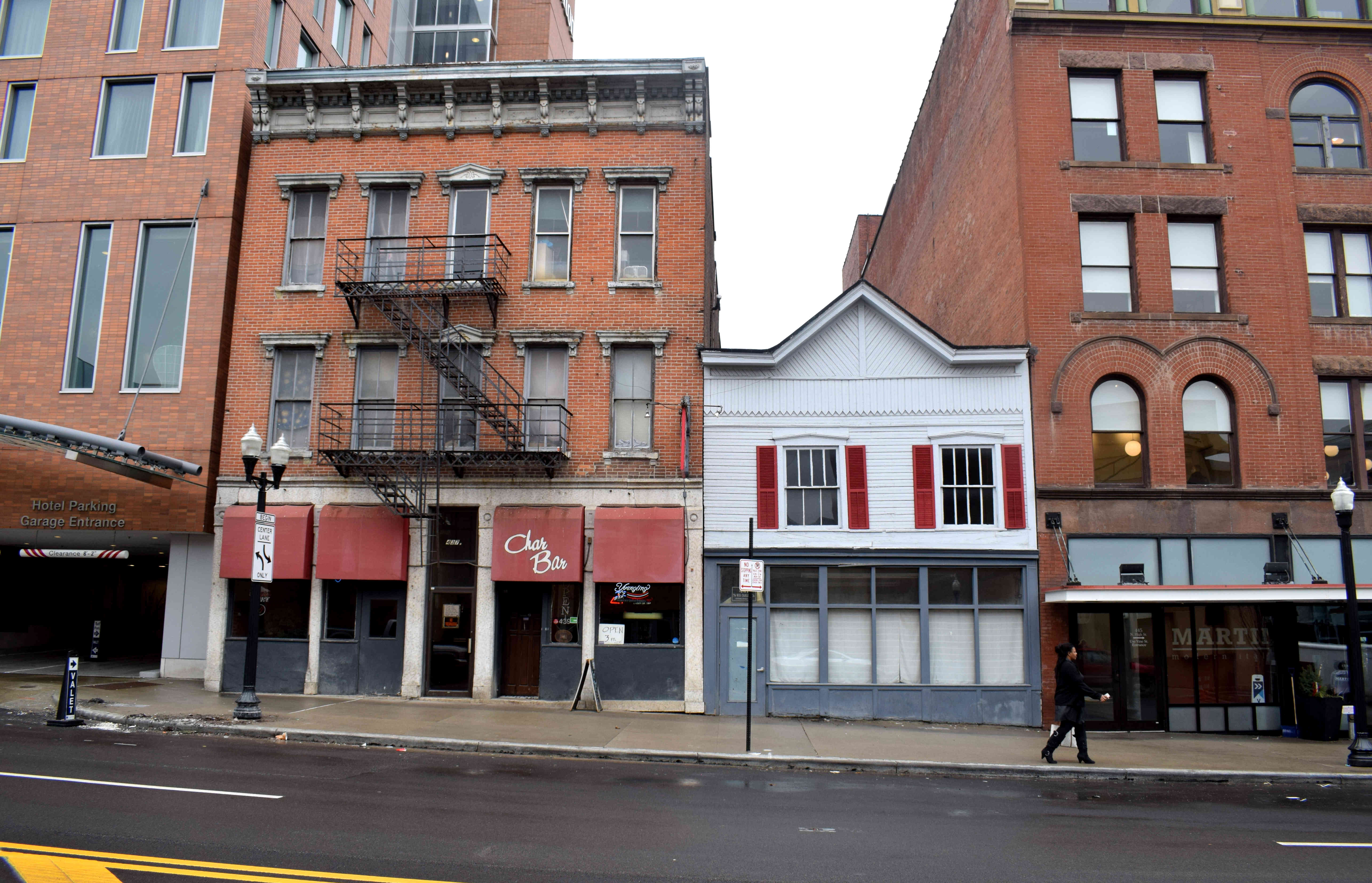 The Short North neighborhood in particular has become a hotbed of creativity and a hipster’s paradise. The area is dominated by gritty, industrial buildings with lots of small businesses and young people.
The Short North neighborhood in particular has become a hotbed of creativity and a hipster’s paradise. The area is dominated by gritty, industrial buildings with lots of small businesses and young people.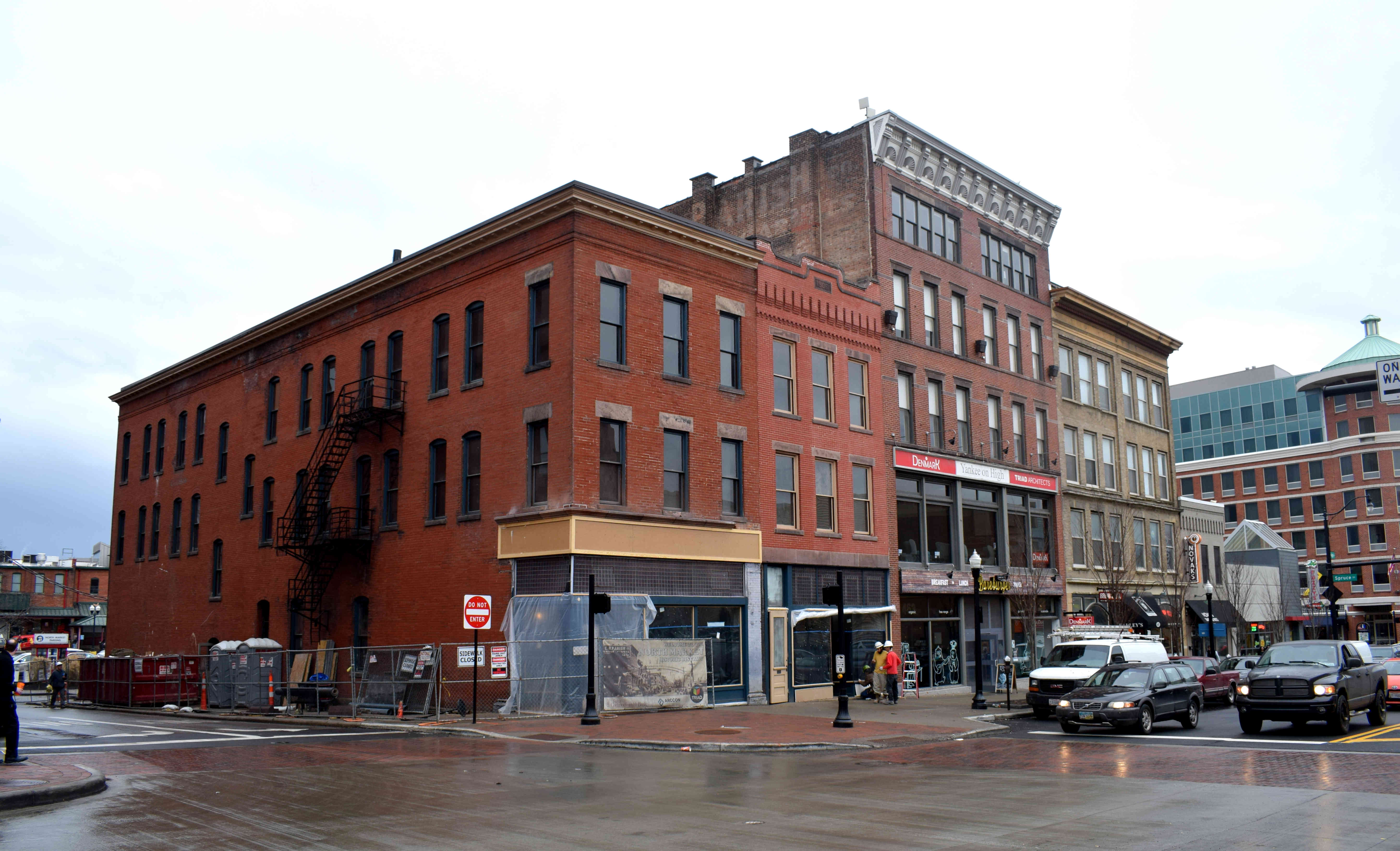 And while part of the reason the street is so attractive is the old gritty architecture, I saw many examples of buildings that had been ruined by developers. This is a perfect example for how to ruin a historic building by trying to mix the old and the new. Other
And while part of the reason the street is so attractive is the old gritty architecture, I saw many examples of buildings that had been ruined by developers. This is a perfect example for how to ruin a historic building by trying to mix the old and the new. Other 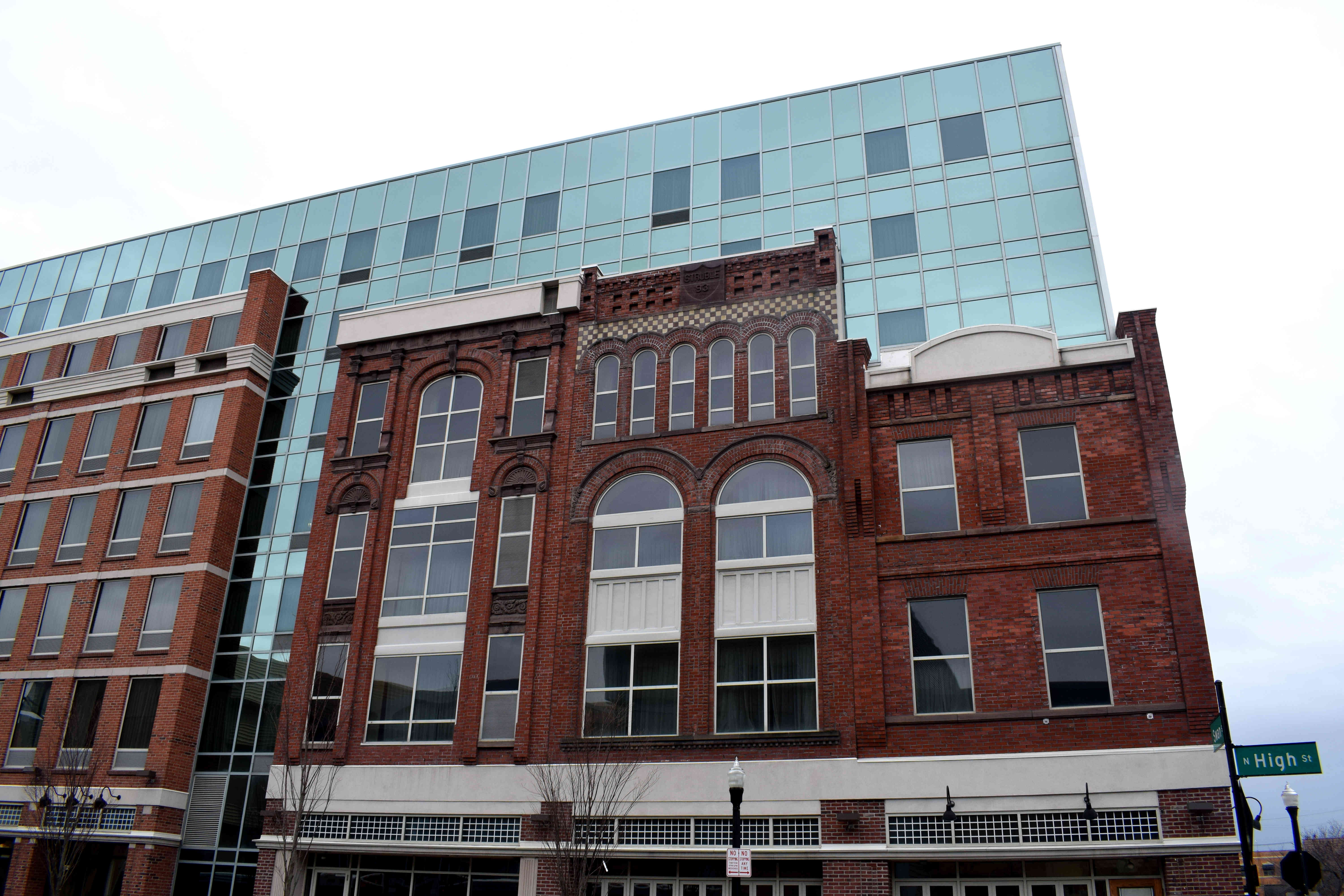 You can see historic Columbus contrasted with the modern Columbus in this photo.
You can see historic Columbus contrasted with the modern Columbus in this photo.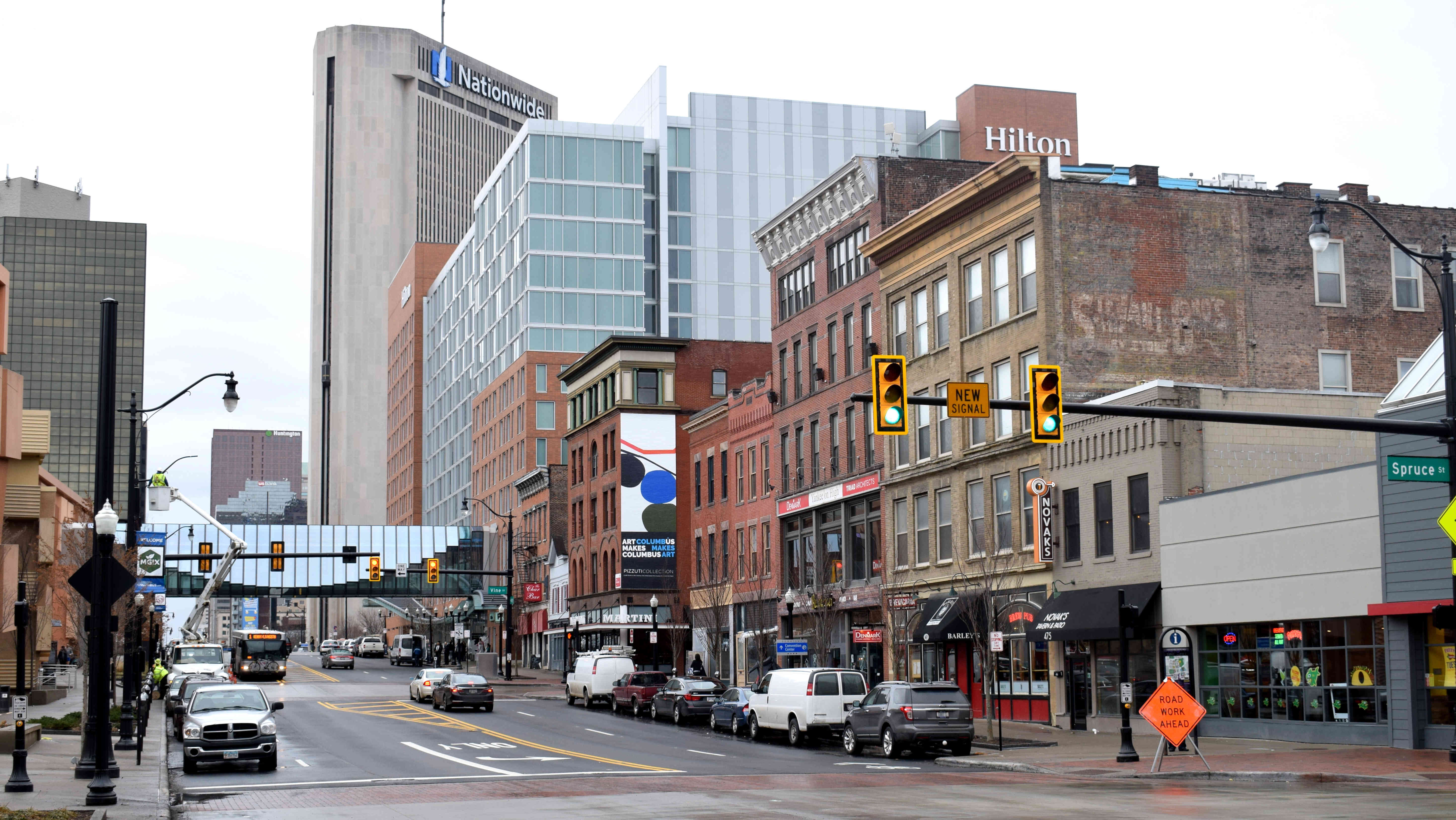 Further along the street you find the Annunciation Greek Orthodox Cathedral. Founded in 1910 and built in the Byzantine architectural style of the 6th century, it hosts a Greek Festival each year that is a major food event in Columbus.
Further along the street you find the Annunciation Greek Orthodox Cathedral. Founded in 1910 and built in the Byzantine architectural style of the 6th century, it hosts a Greek Festival each year that is a major food event in Columbus.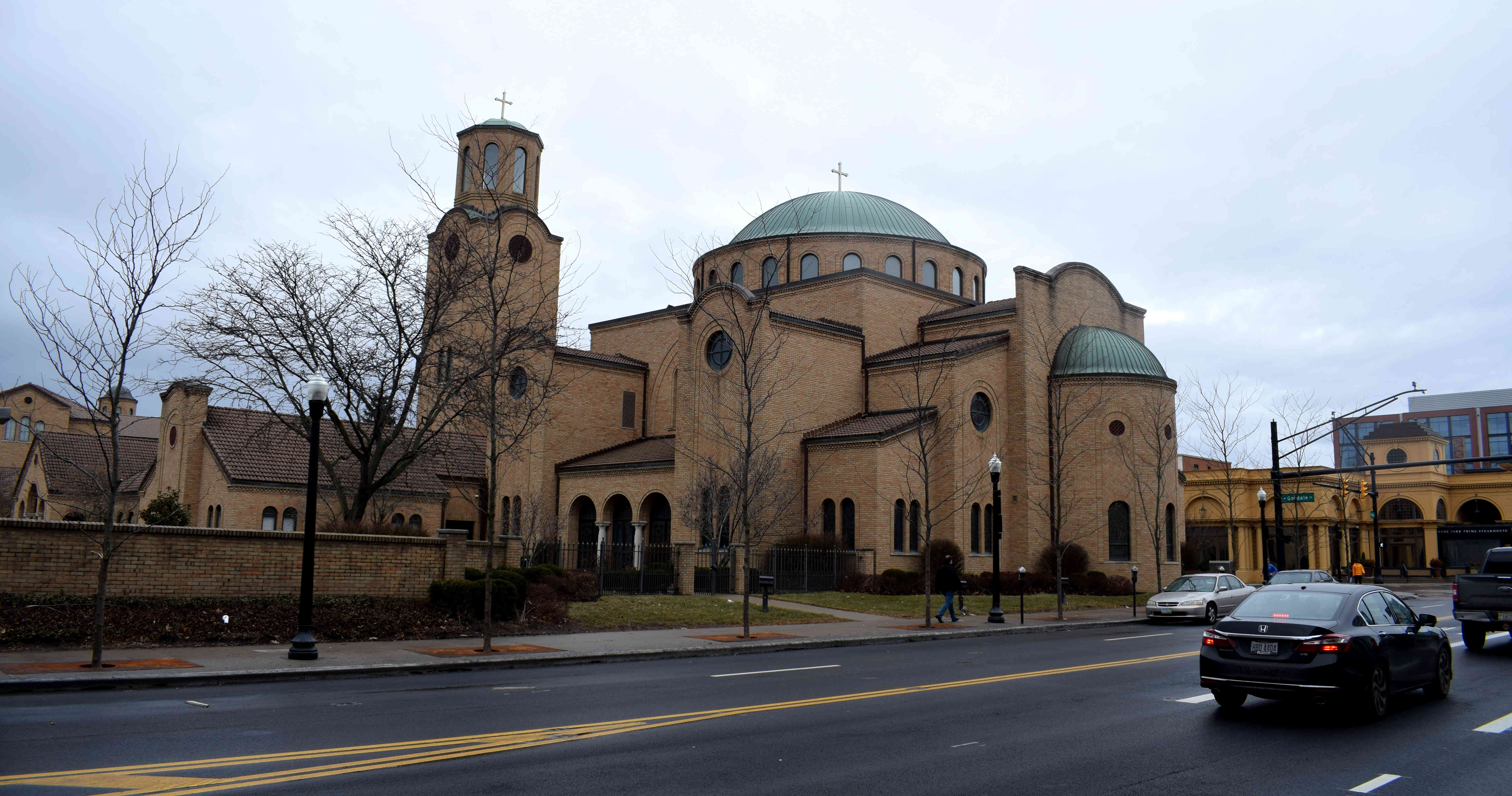 The entrance to the Short North neighborhood. Many young professionals and students are moving here owing to the proximity of the OXU campus nearby. But developers have caught on and are buying up old properties and replacing them with modern high-rises. It’s a question how much longer the neighborhood will retain its historic feel Just look at how the building on the right fails to blend in with the surrounding architecture.
The entrance to the Short North neighborhood. Many young professionals and students are moving here owing to the proximity of the OXU campus nearby. But developers have caught on and are buying up old properties and replacing them with modern high-rises. It’s a question how much longer the neighborhood will retain its historic feel Just look at how the building on the right fails to blend in with the surrounding architecture.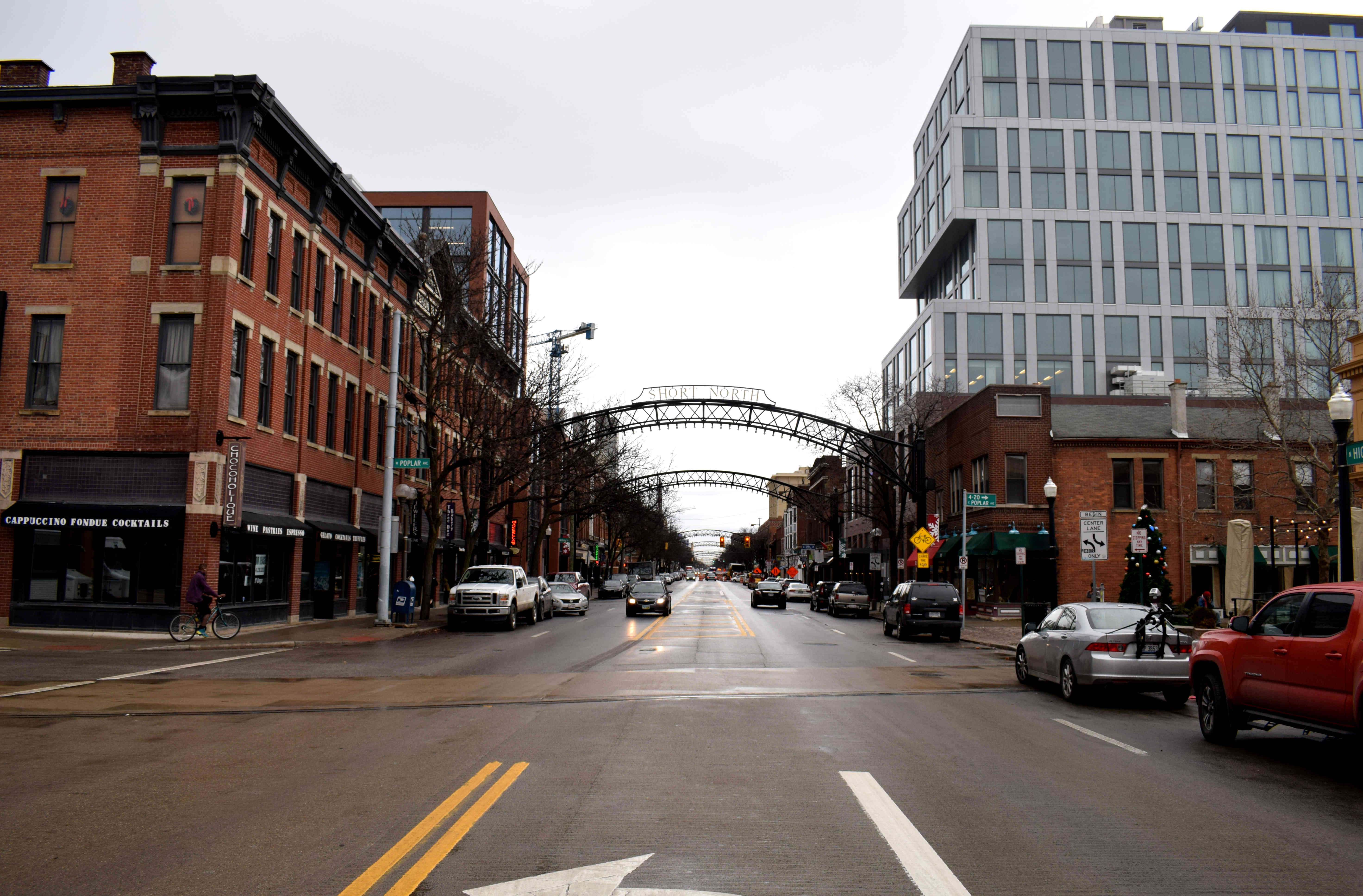 Some traditional storefronts on the street.
Some traditional storefronts on the street.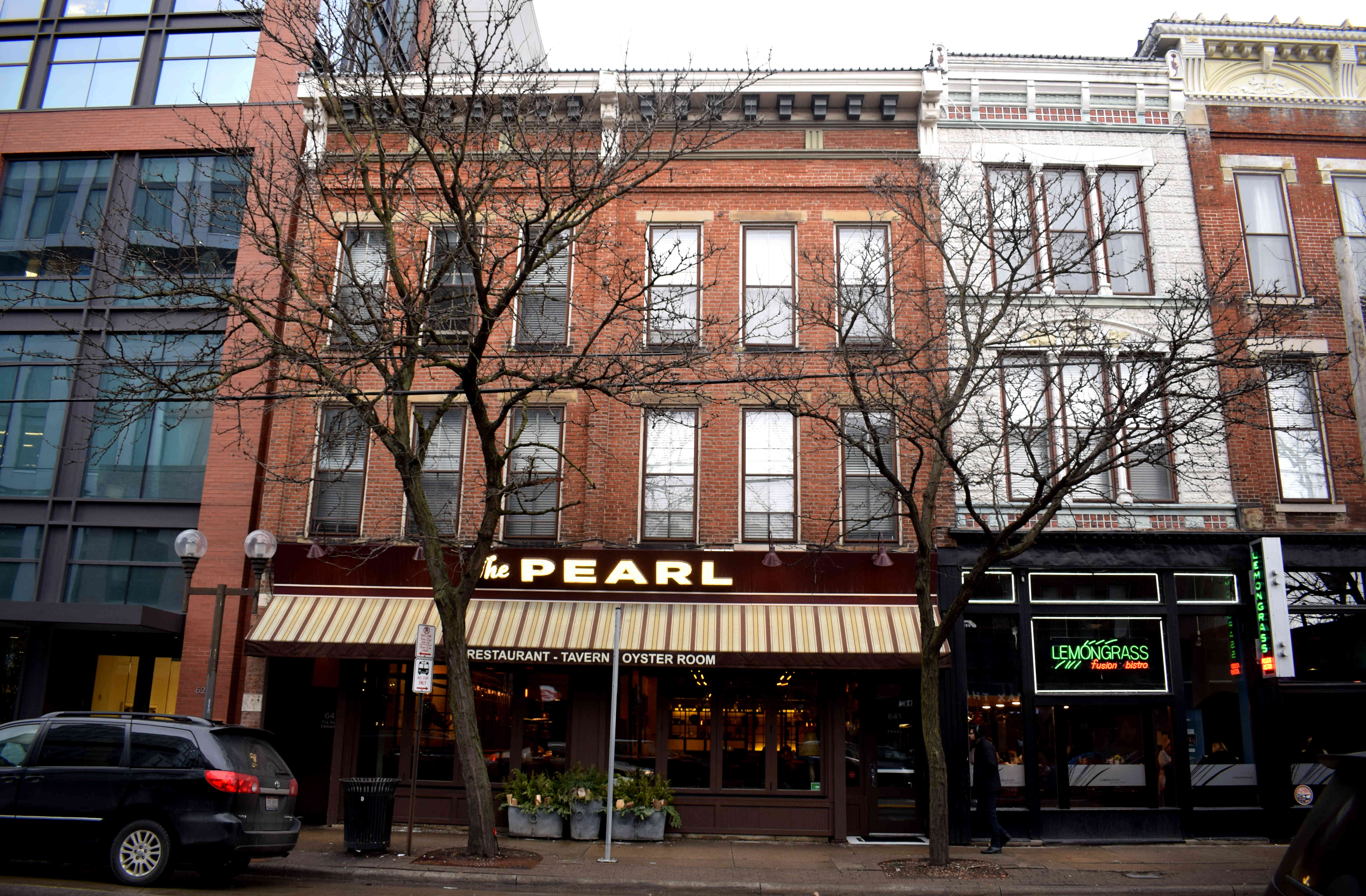 The sidewalk in front of the stores.
The sidewalk in front of the stores.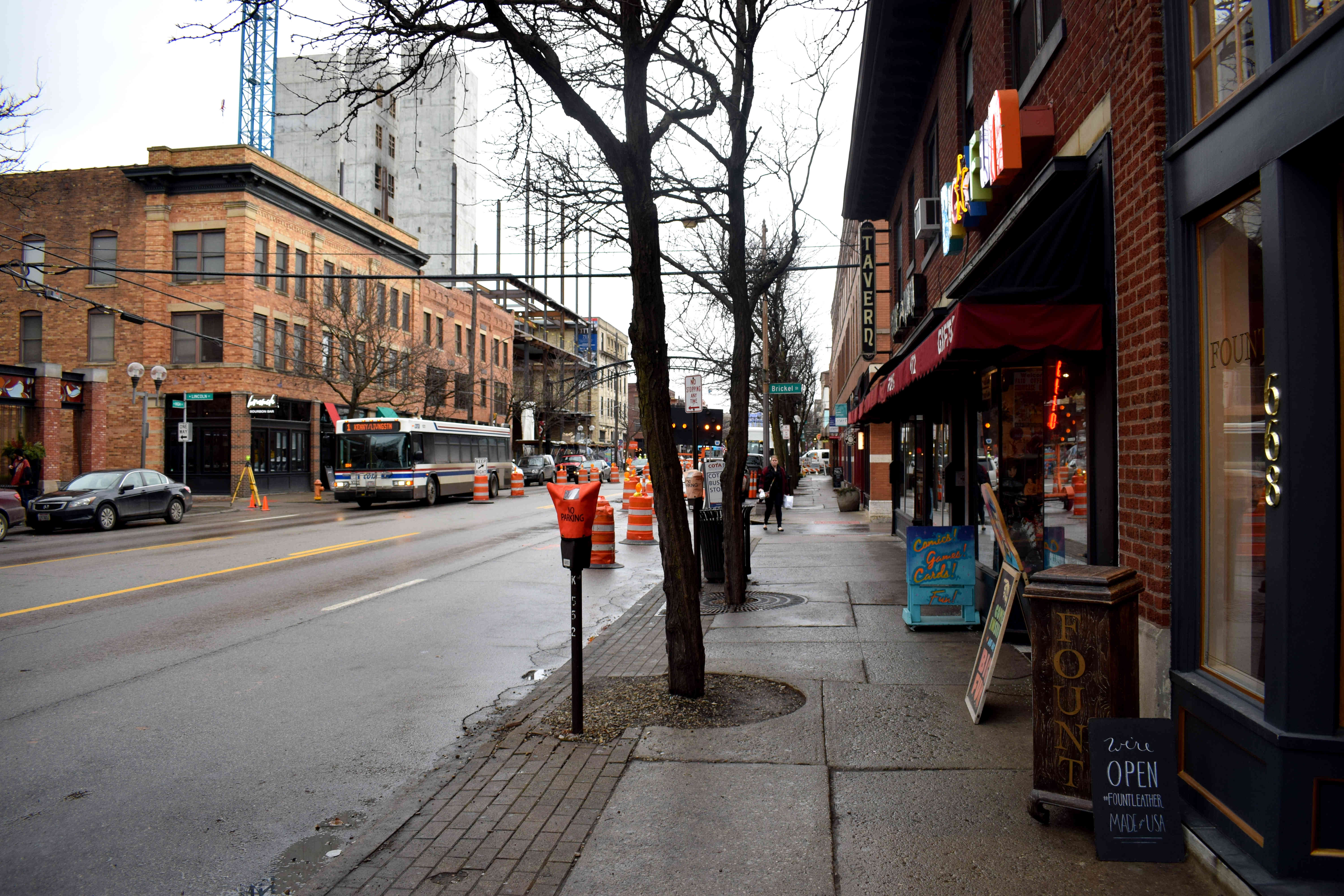 More construction.
More construction.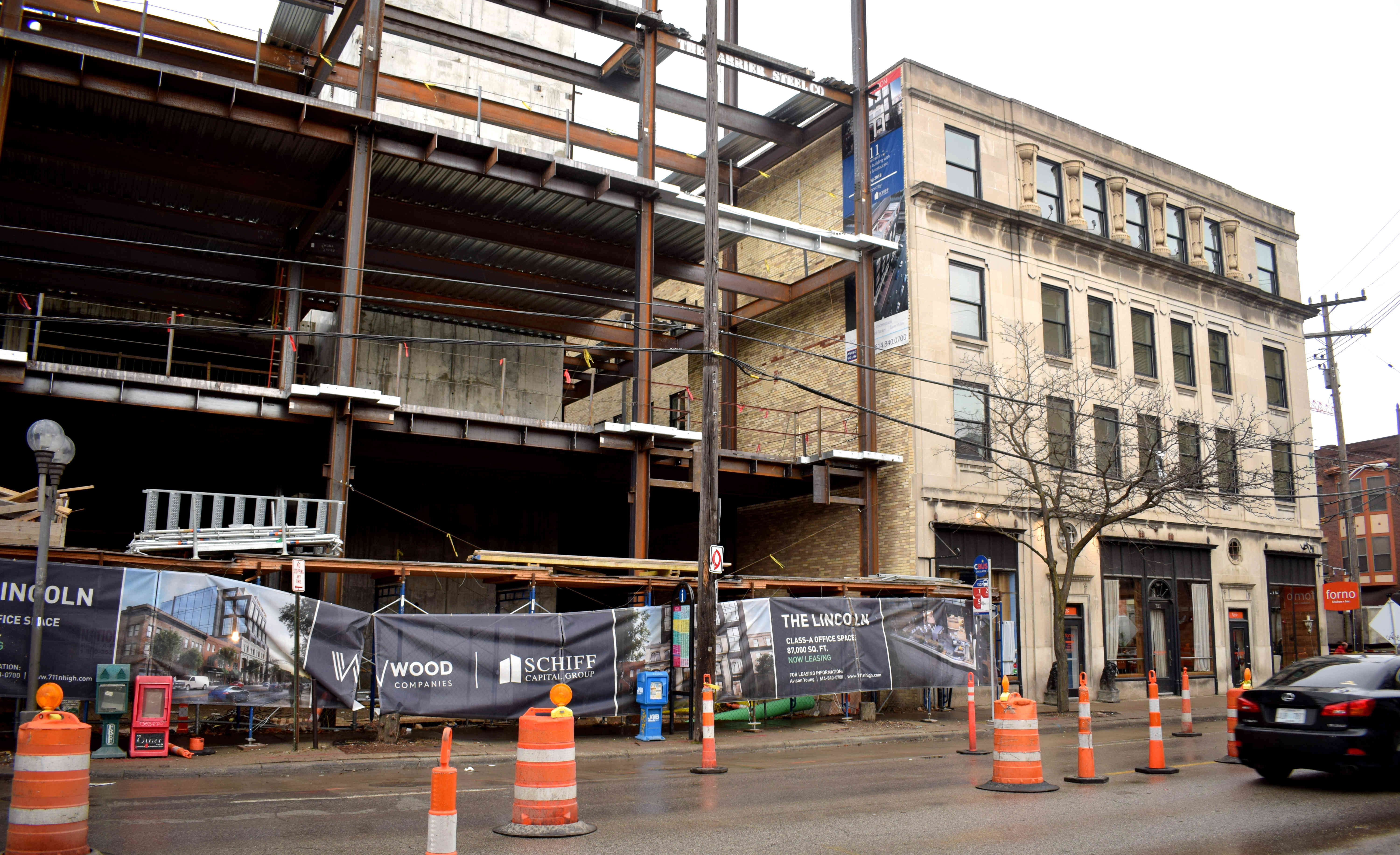
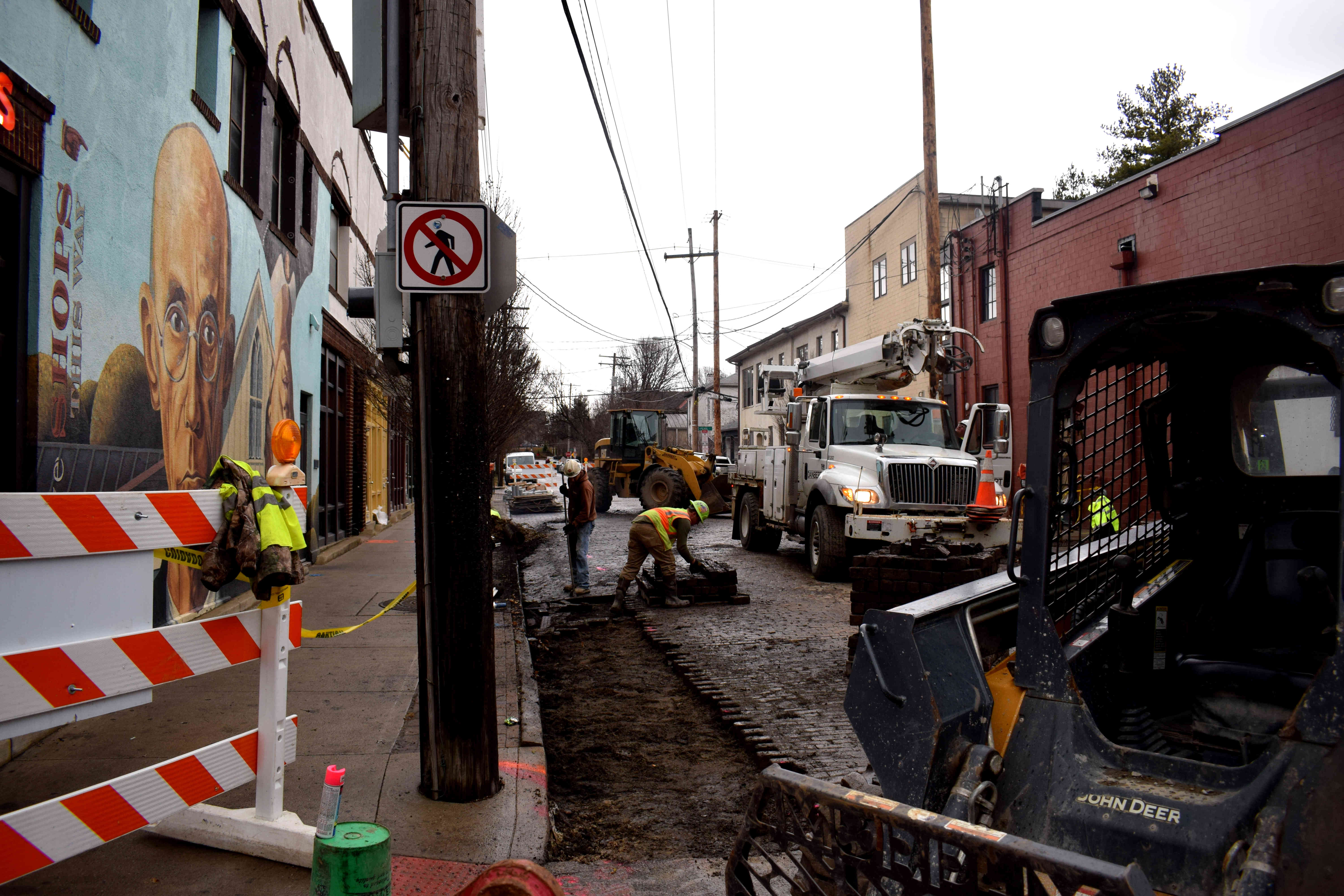 One final look down the street.
One final look down the street.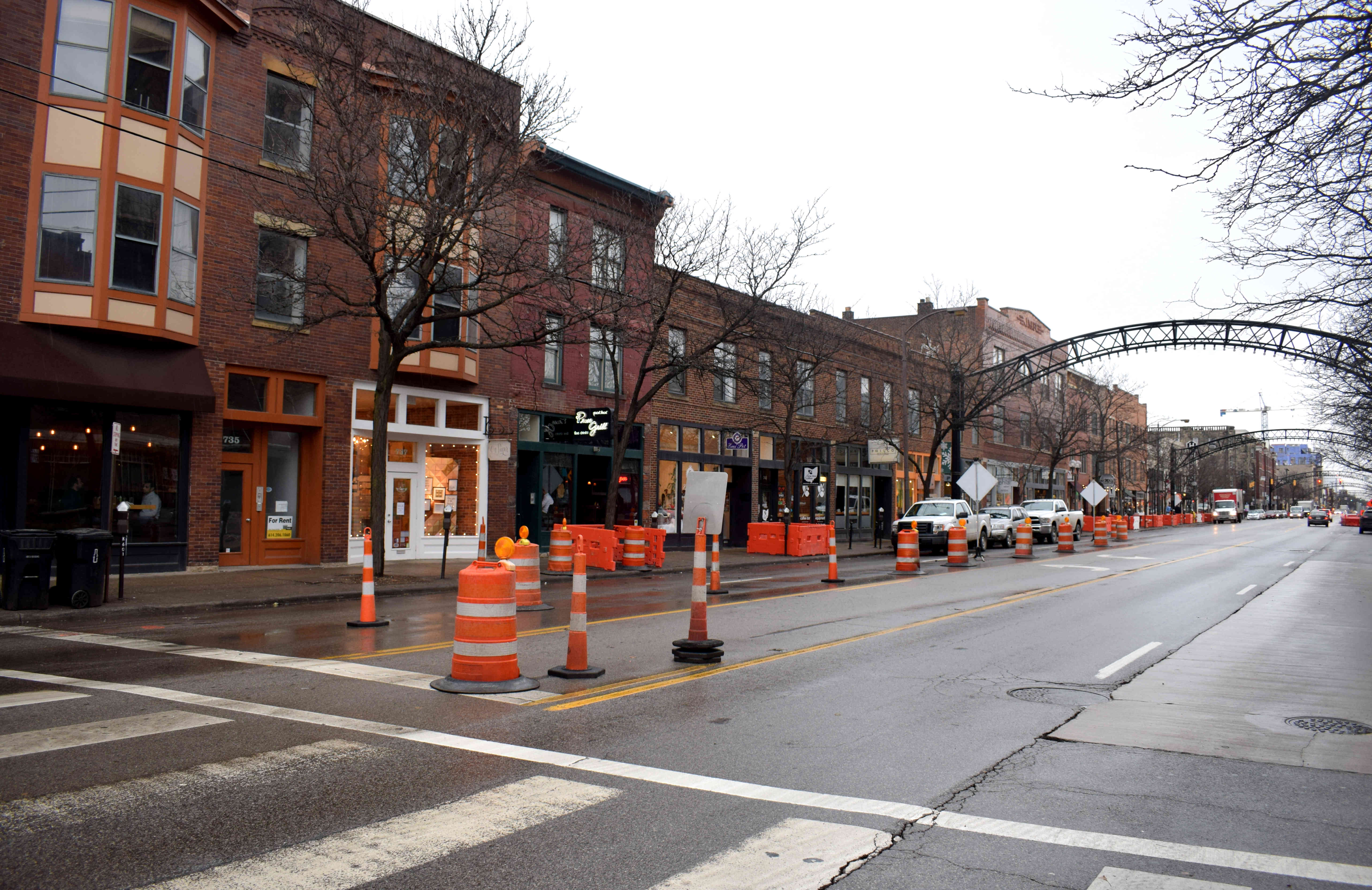 I’ll end up with a traditional American hole-in-the-wall dive bar. These places are great.
I’ll end up with a traditional American hole-in-the-wall dive bar. These places are great.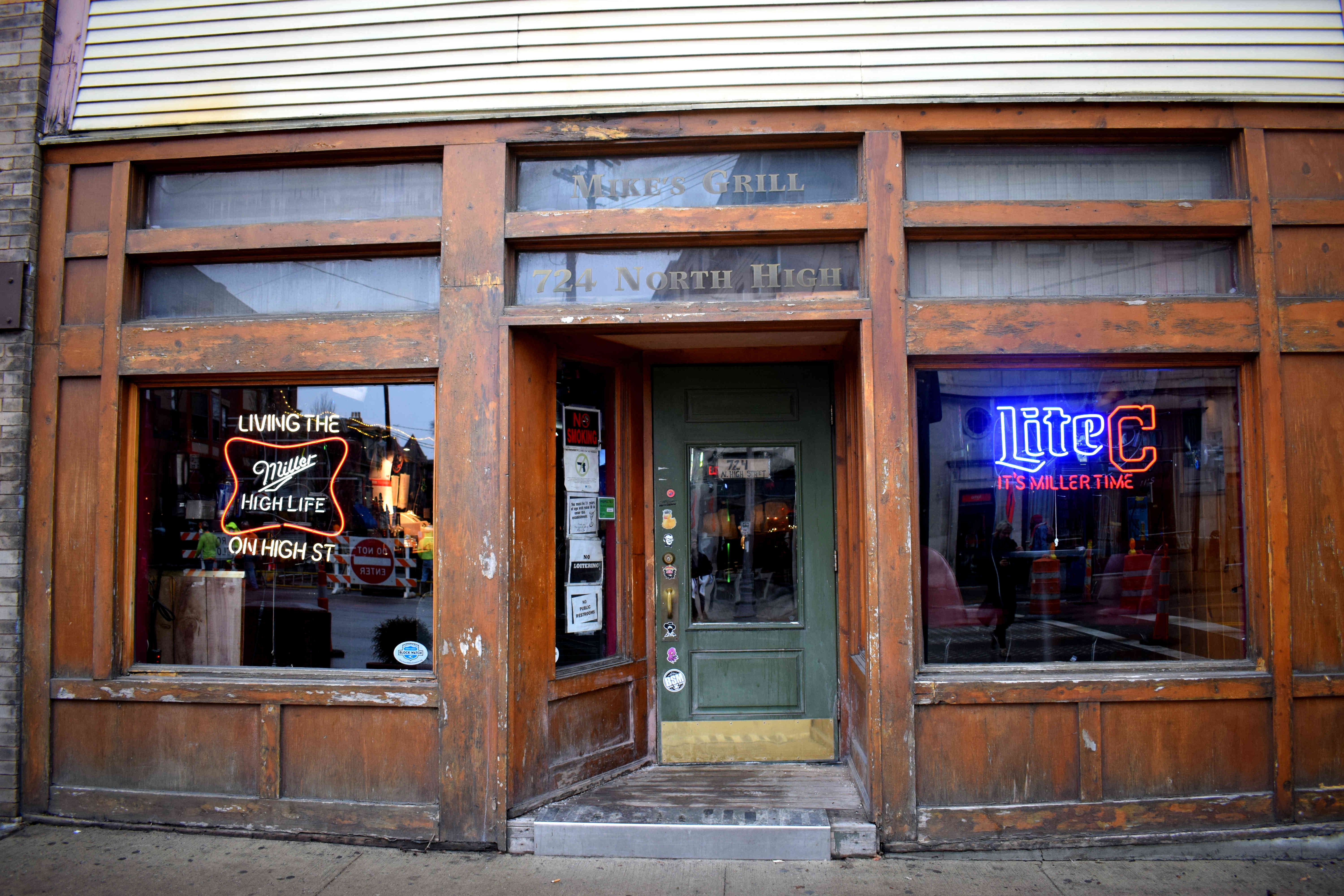 Columbus has the potential to be great. When I visited, it was raining. It was January. There were few people around in the center and this may have tainted my observations. I’ll have to return another time when the weather is nice and see Columbus in its full form.
Columbus has the potential to be great. When I visited, it was raining. It was January. There were few people around in the center and this may have tainted my observations. I’ll have to return another time when the weather is nice and see Columbus in its full form.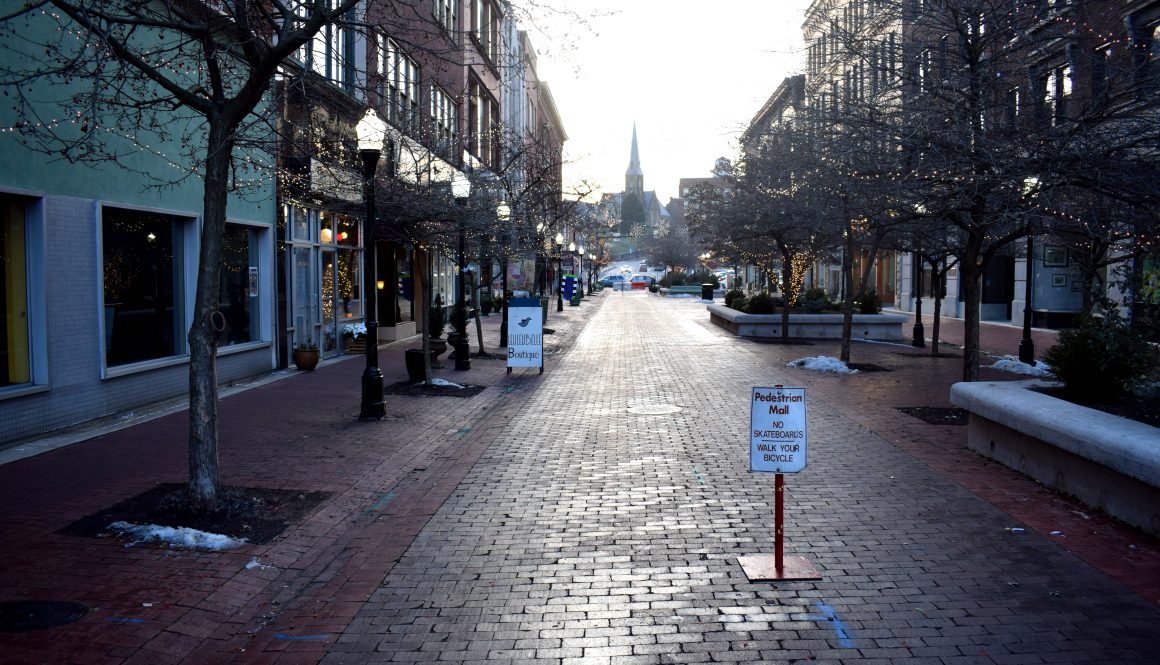
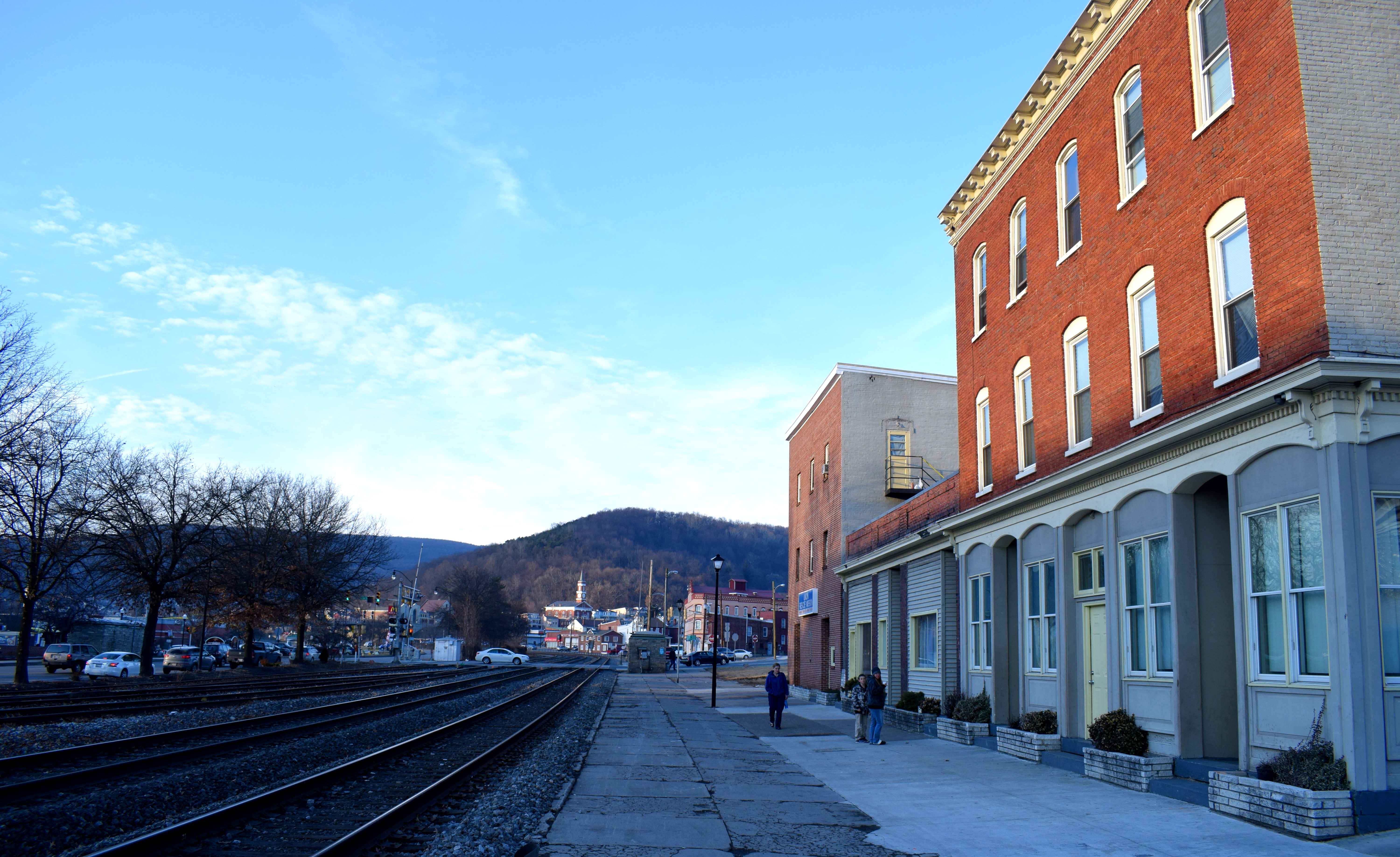 Near the entrance to the town there is a memorial to Americans who died in the Gulf War, Afghanistan and Iraq.
Near the entrance to the town there is a memorial to Americans who died in the Gulf War, Afghanistan and Iraq.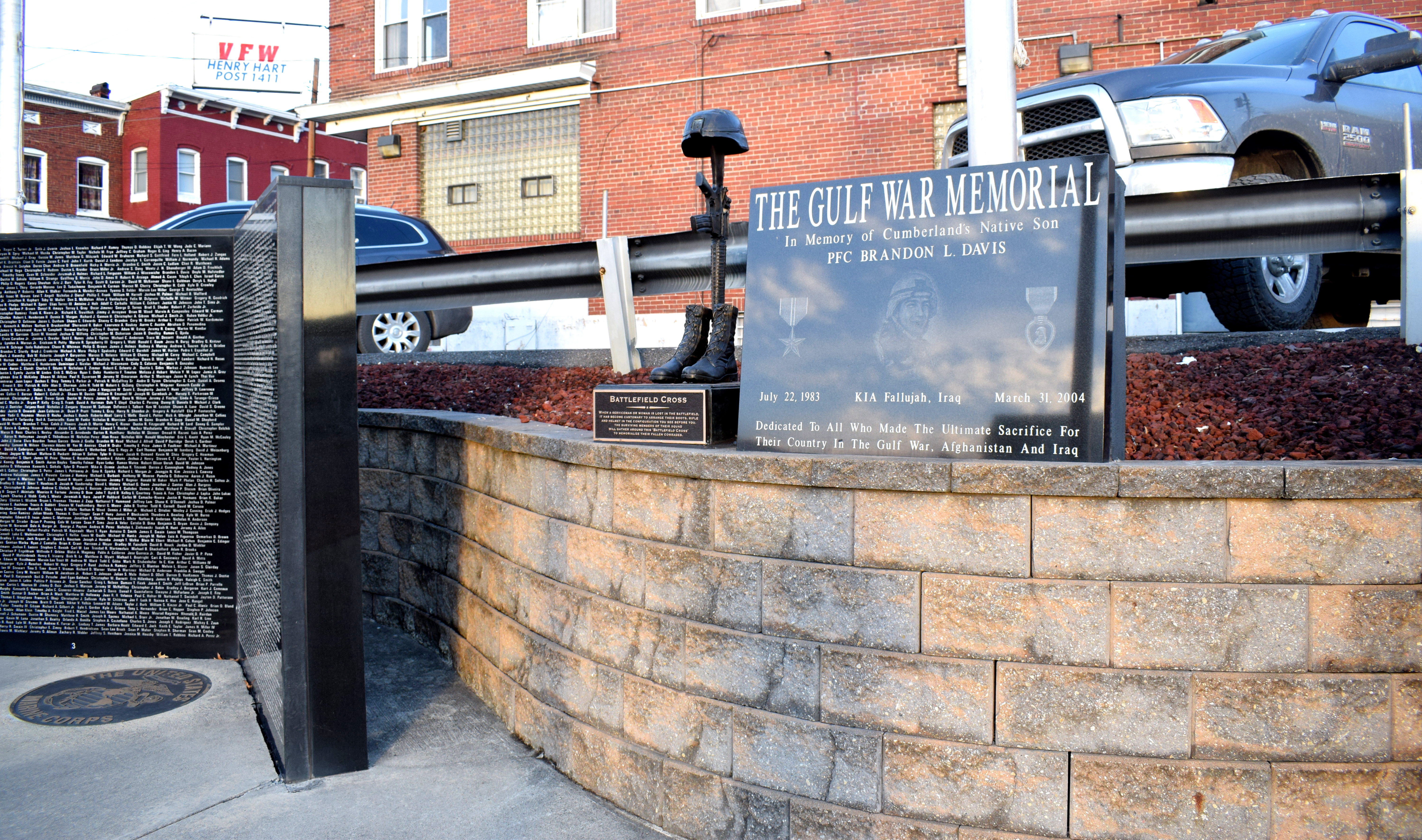 Cumberland had a lot of churches scattered throughout the city. Its location out in the mountains of western Maryland made it a strategic stop during the westward expansion of the United States. Many people would later on migrate and settle the state of Ohio from Cumberland.
Cumberland had a lot of churches scattered throughout the city. Its location out in the mountains of western Maryland made it a strategic stop during the westward expansion of the United States. Many people would later on migrate and settle the state of Ohio from Cumberland.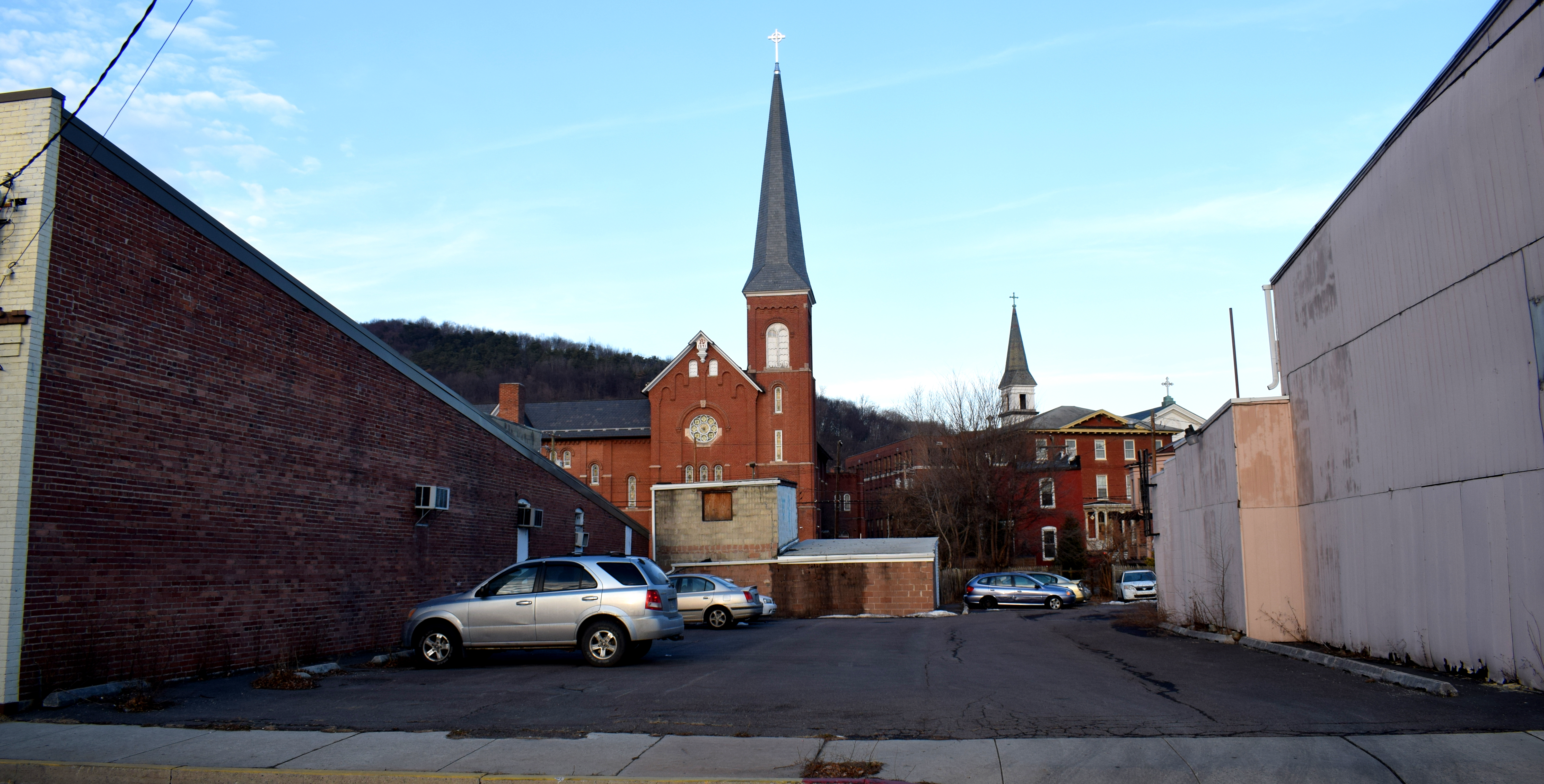 The St. Peter & Paul Church founded in 1848 and located on top of a steep hill overlooking the city. Cumberland is a very hilly city with beautiful views of the surrounding mountains.
The St. Peter & Paul Church founded in 1848 and located on top of a steep hill overlooking the city. Cumberland is a very hilly city with beautiful views of the surrounding mountains.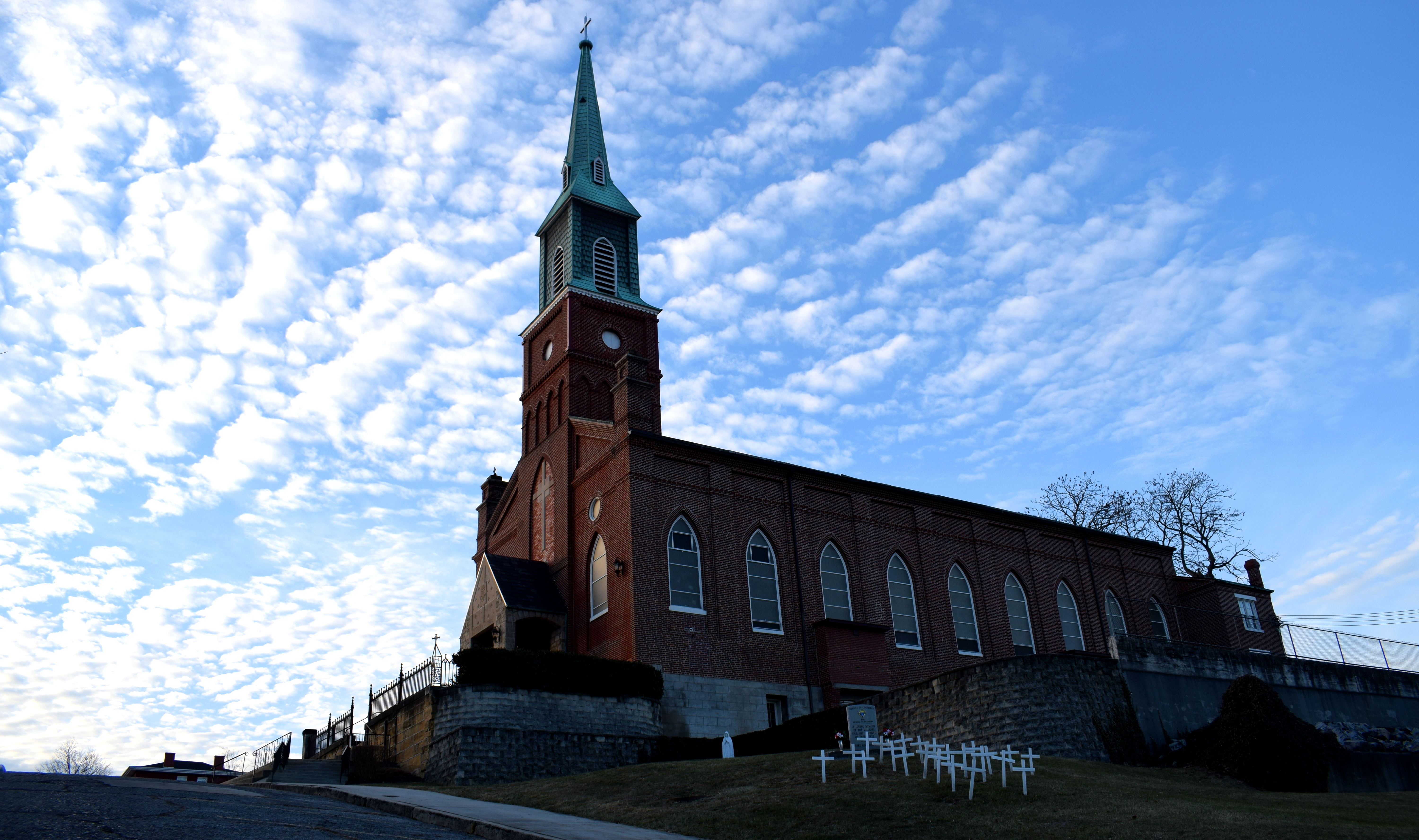 When Europeans first began migrating westward in the 1700’s they faced stiff resistance from Native American tribes which lived in the Appalachian mountains along the Potomac River. The state of Maryland eventually bought the land from Native Americans in 1744 opening the area up for settlement.
When Europeans first began migrating westward in the 1700’s they faced stiff resistance from Native American tribes which lived in the Appalachian mountains along the Potomac River. The state of Maryland eventually bought the land from Native Americans in 1744 opening the area up for settlement.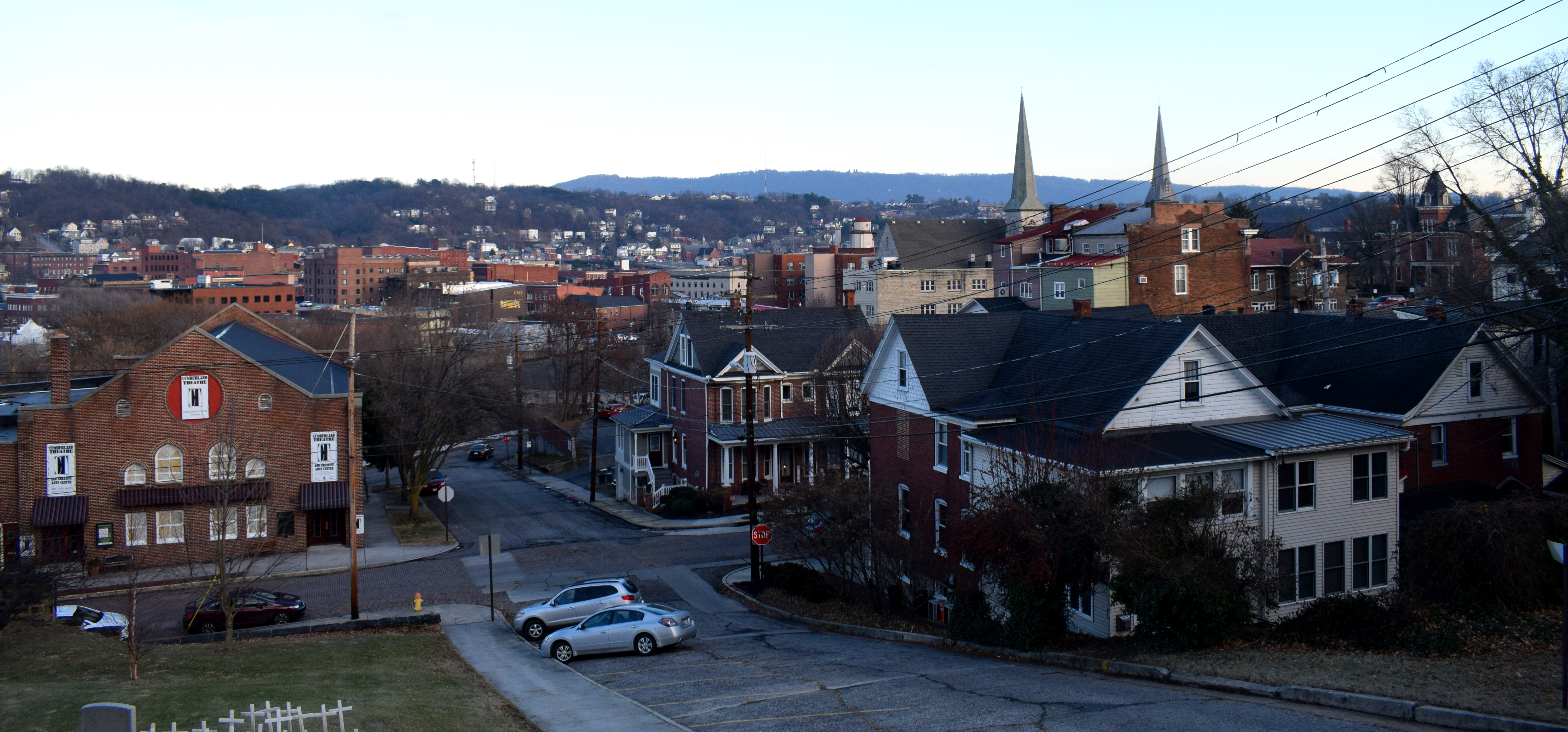 The Allegany County Circuit Court, built in 1841.
The Allegany County Circuit Court, built in 1841.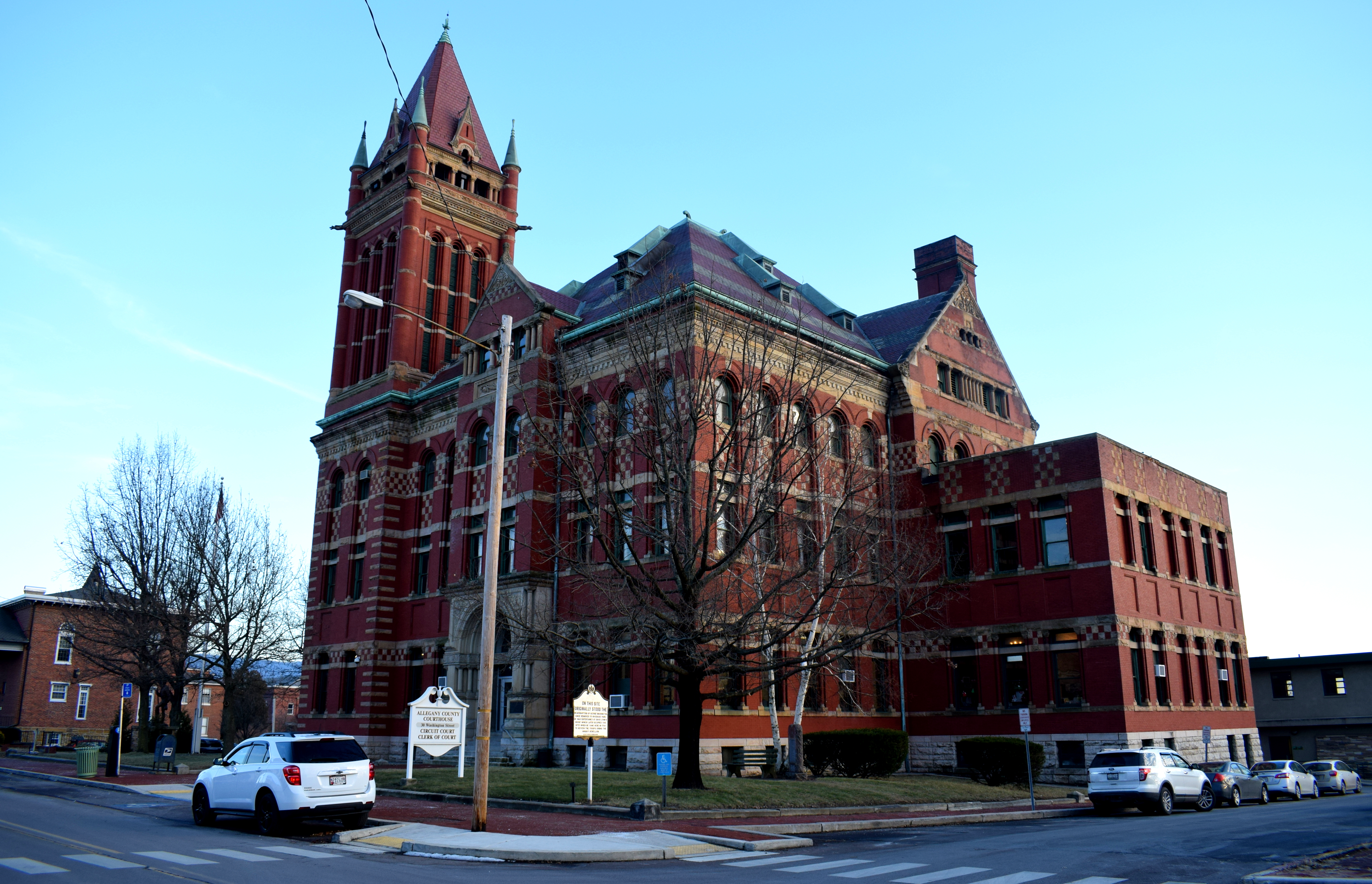 Historic houses in the center, built in the late 1800’s.
Historic houses in the center, built in the late 1800’s.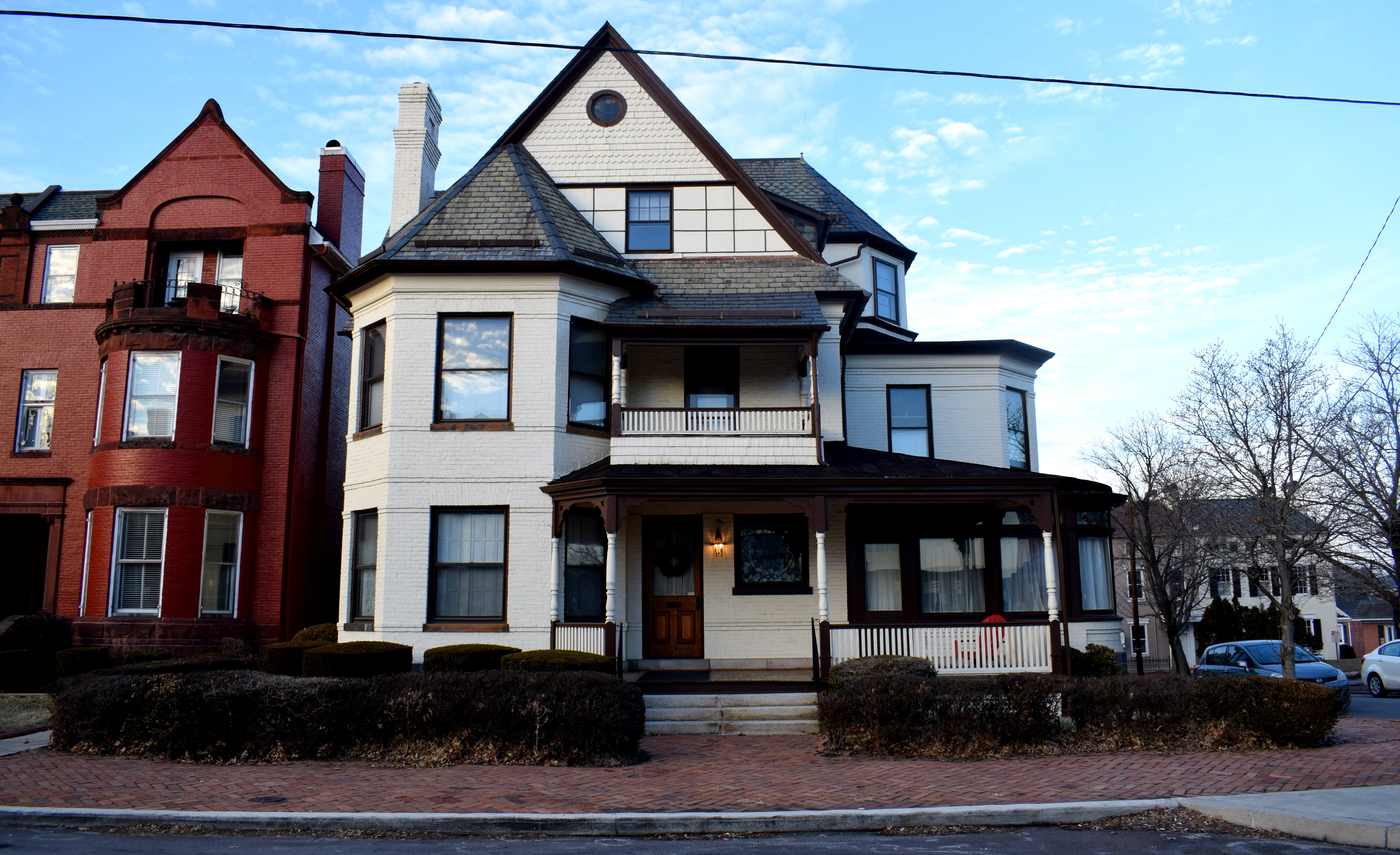
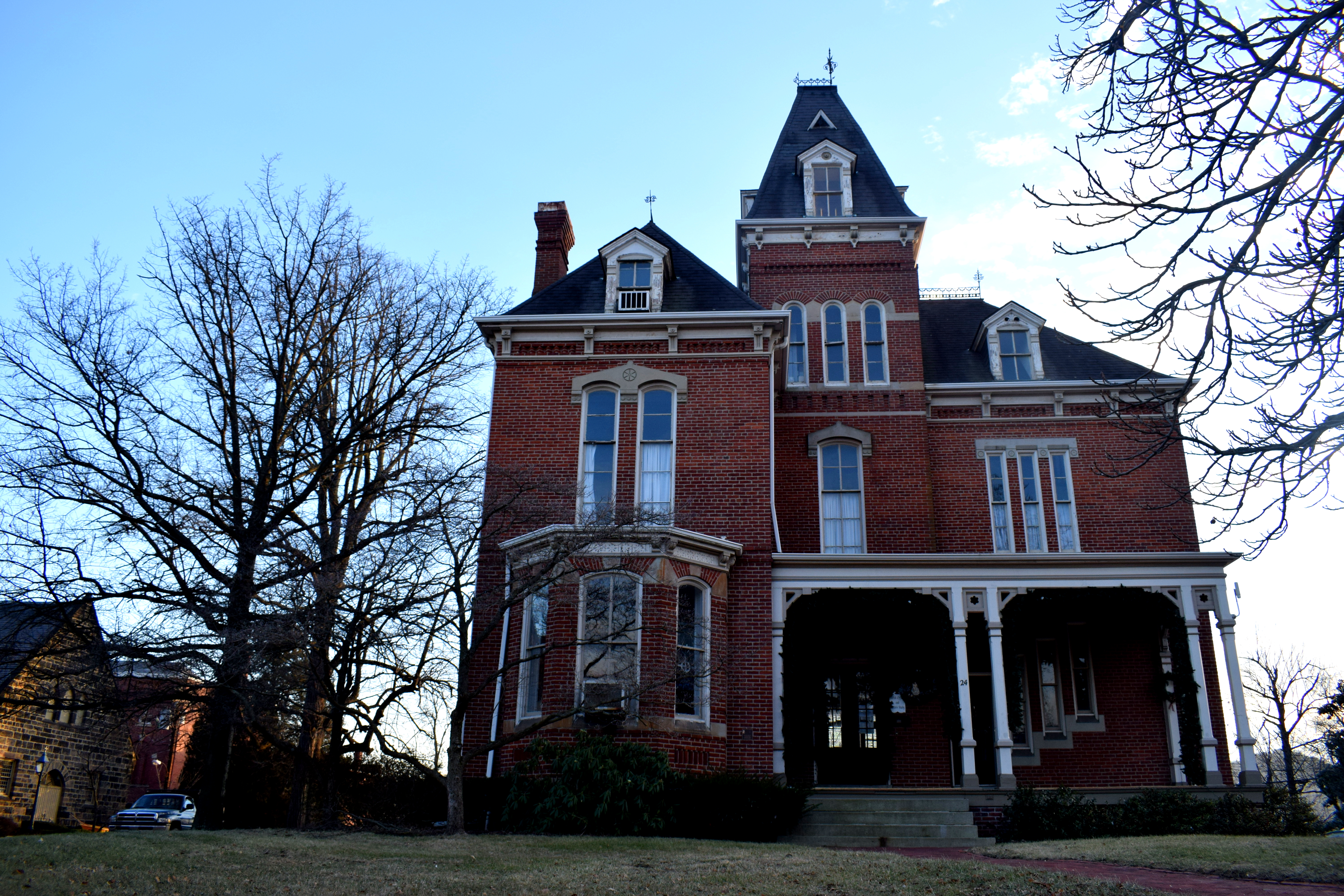 Around the top of the hill.
Around the top of the hill.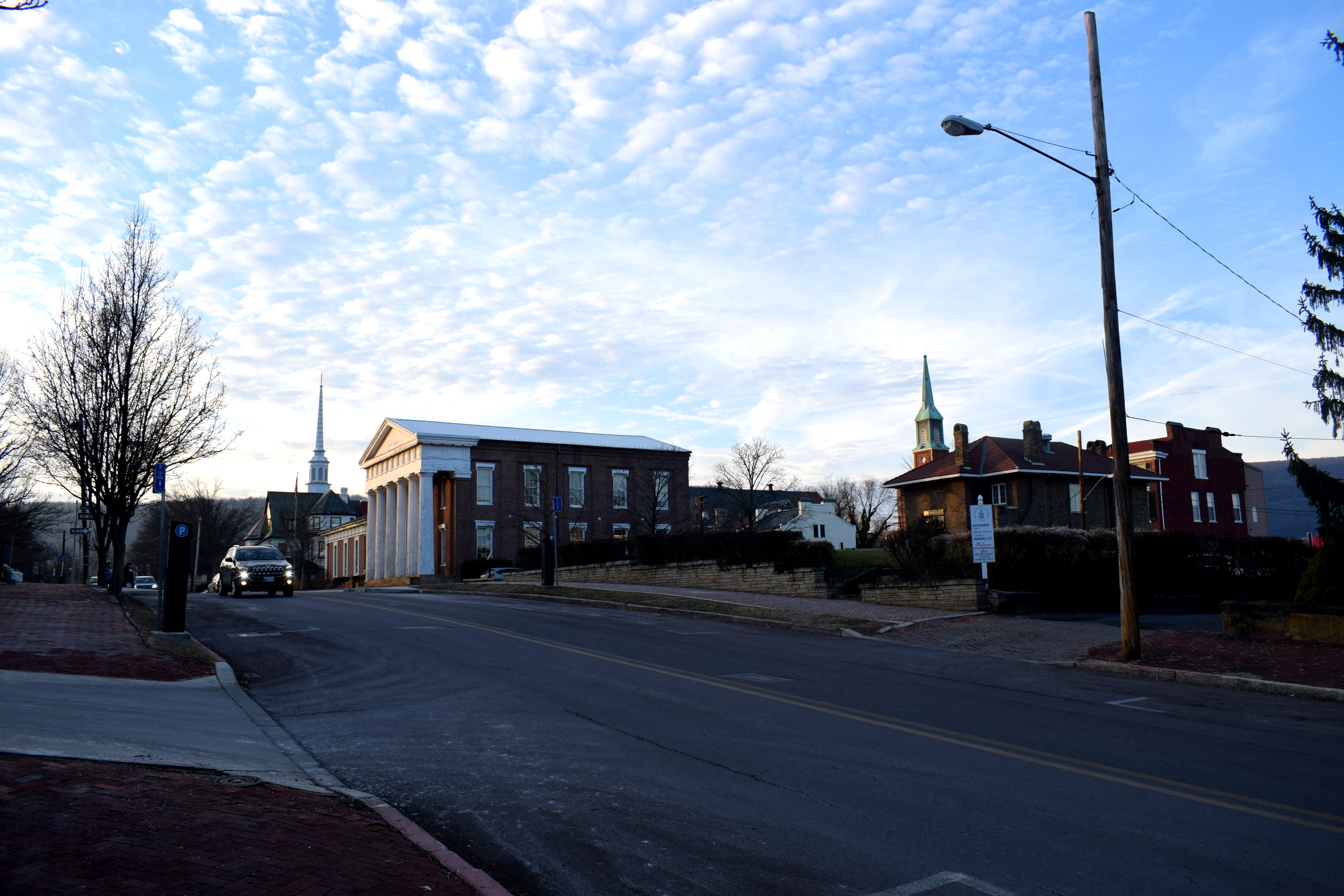 The Emmanuel Episcopal Church in Cumberland, built in 1851. The hilltop on which the church is located was originally a trading post operated by the Ohio Company. Cumberland was a strategic city because of its proximity to the Potomac River, the only waterway that passed through the Appalachian Mountains to the Midwest and Ohio.
The Emmanuel Episcopal Church in Cumberland, built in 1851. The hilltop on which the church is located was originally a trading post operated by the Ohio Company. Cumberland was a strategic city because of its proximity to the Potomac River, the only waterway that passed through the Appalachian Mountains to the Midwest and Ohio.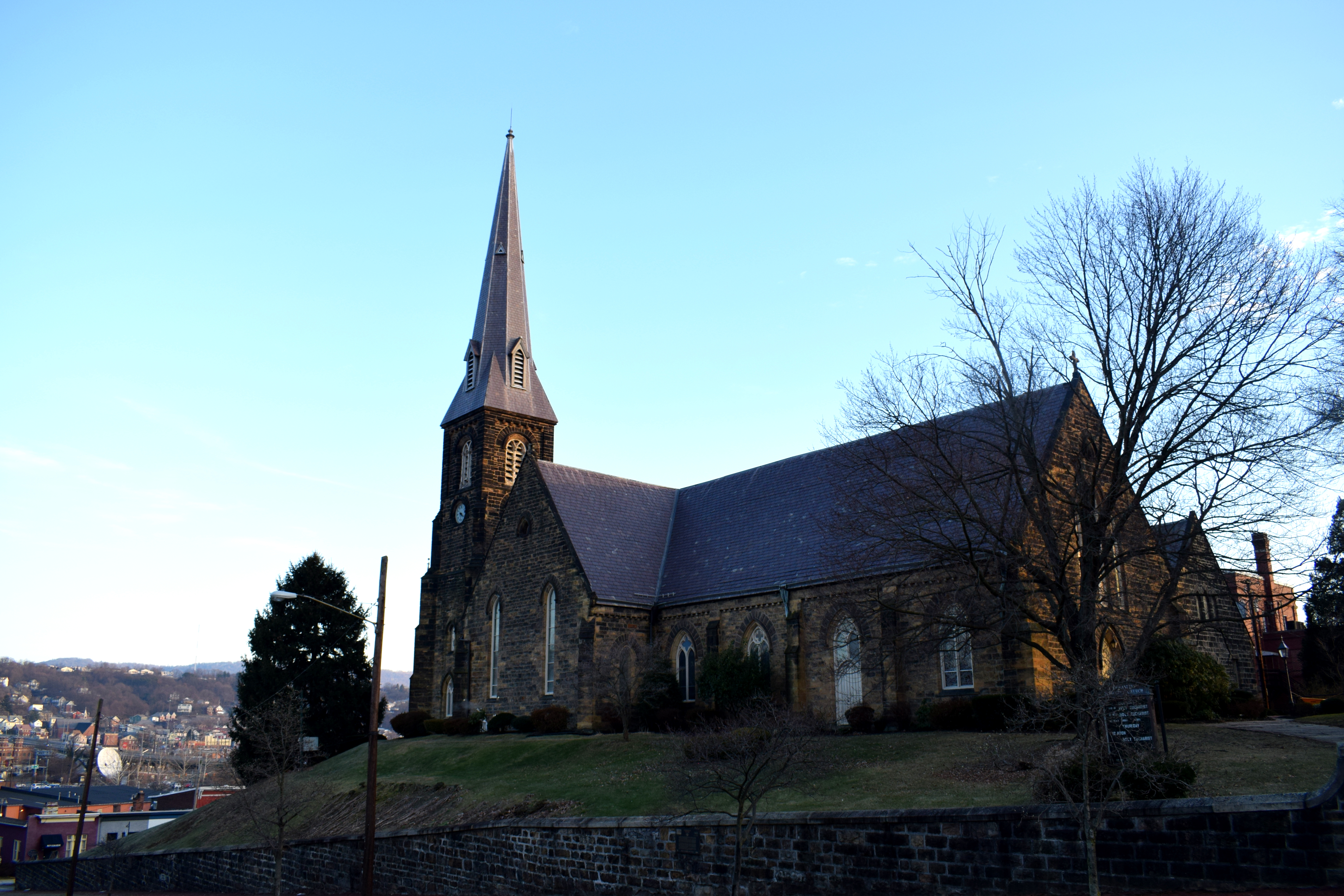 Cumberland’s canal. In the 1800’s canals were the main form of transport in the United States, alongside railroads. Later on highways would develop. In the distance you can see the American interstate highway 68 which passes right by Cumberland, ruining some of the historic views of the city.
Cumberland’s canal. In the 1800’s canals were the main form of transport in the United States, alongside railroads. Later on highways would develop. In the distance you can see the American interstate highway 68 which passes right by Cumberland, ruining some of the historic views of the city. The Western Maryland railway tracks still divide the city in two.
The Western Maryland railway tracks still divide the city in two.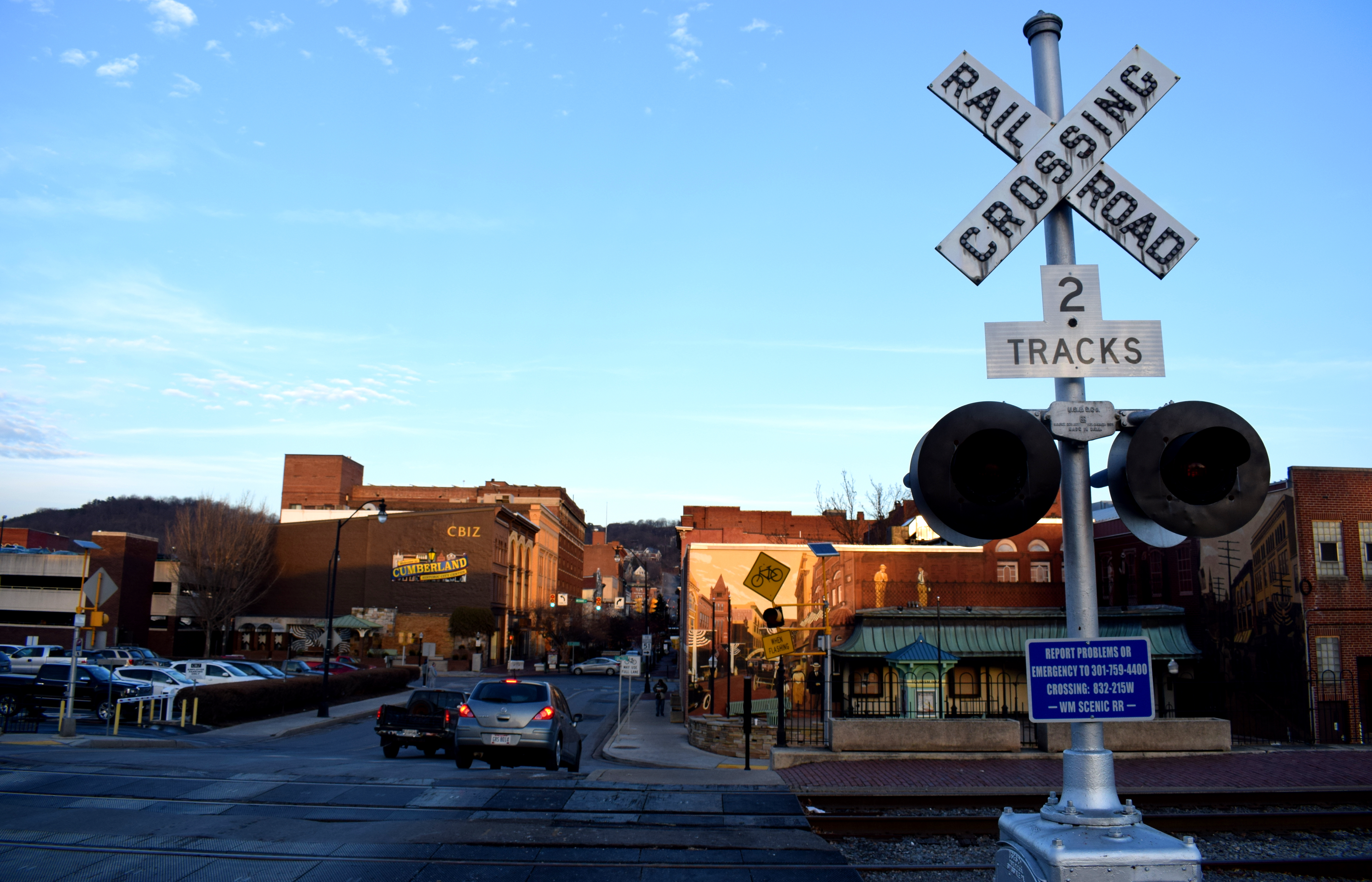 Cumberland’s old train station. Although the old railway tracks are not used on a regular basis anymore, the city recently set up a railway trip for tourists called the Western Maryland Scenic Railroad. The tour follows the old route that the Western Maryland Railway took through the Appalachian mountains in the 19th century and early 20th century, connecting Cumberland with the small town of Frostburg. It allows people to get a sense of what it used to be like to travel in the United States by rail before cars took over.
Cumberland’s old train station. Although the old railway tracks are not used on a regular basis anymore, the city recently set up a railway trip for tourists called the Western Maryland Scenic Railroad. The tour follows the old route that the Western Maryland Railway took through the Appalachian mountains in the 19th century and early 20th century, connecting Cumberland with the small town of Frostburg. It allows people to get a sense of what it used to be like to travel in the United States by rail before cars took over. The railway station today.
The railway station today.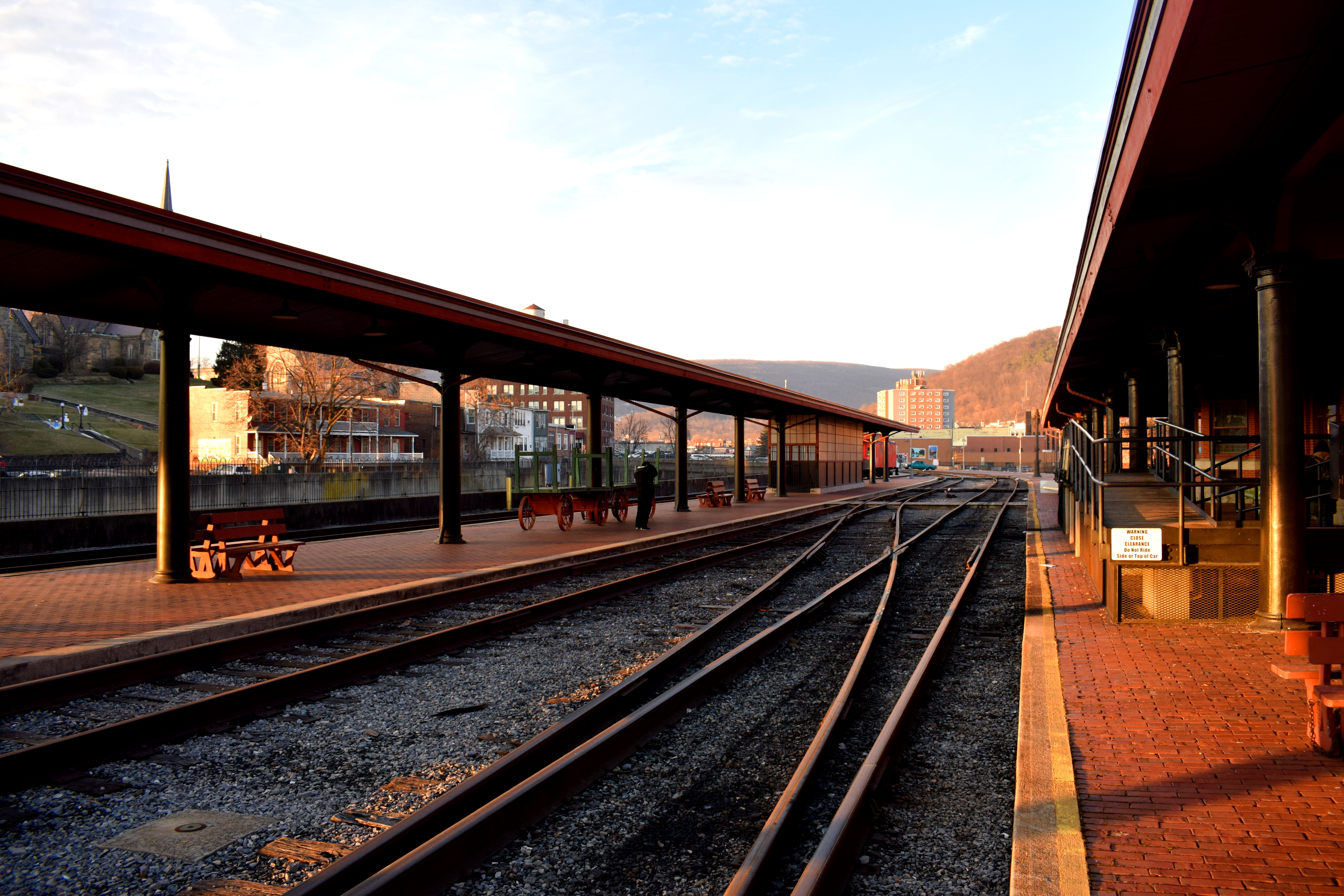
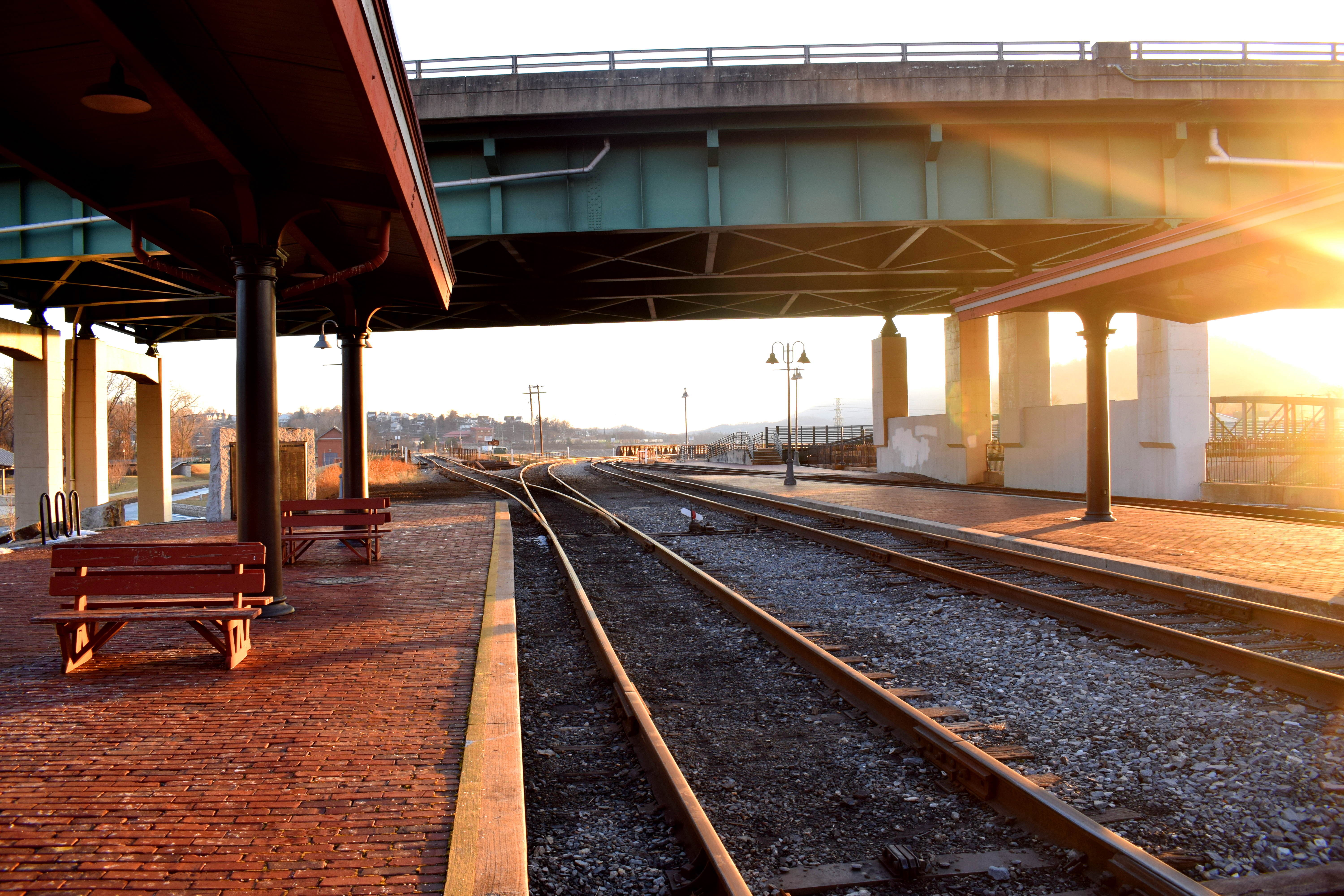 Baltimore Street, Cumberland’s historic downtown area. Baltimore Street is a full-scale pedestrian street closed off for cars, just like they have in Europe.
Baltimore Street, Cumberland’s historic downtown area. Baltimore Street is a full-scale pedestrian street closed off for cars, just like they have in Europe.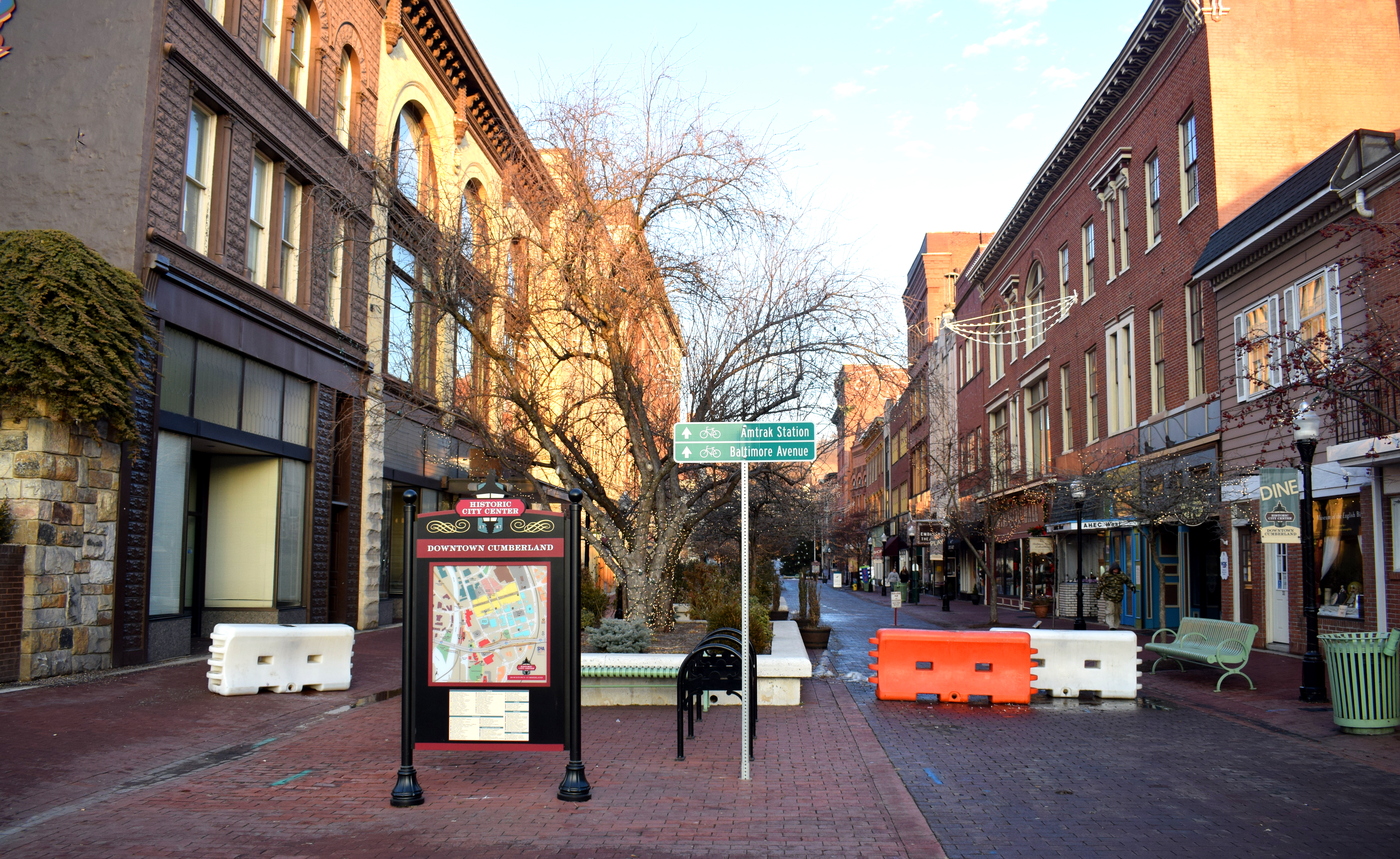 It is a model street other small cities in the United States could replicate such as
It is a model street other small cities in the United States could replicate such as 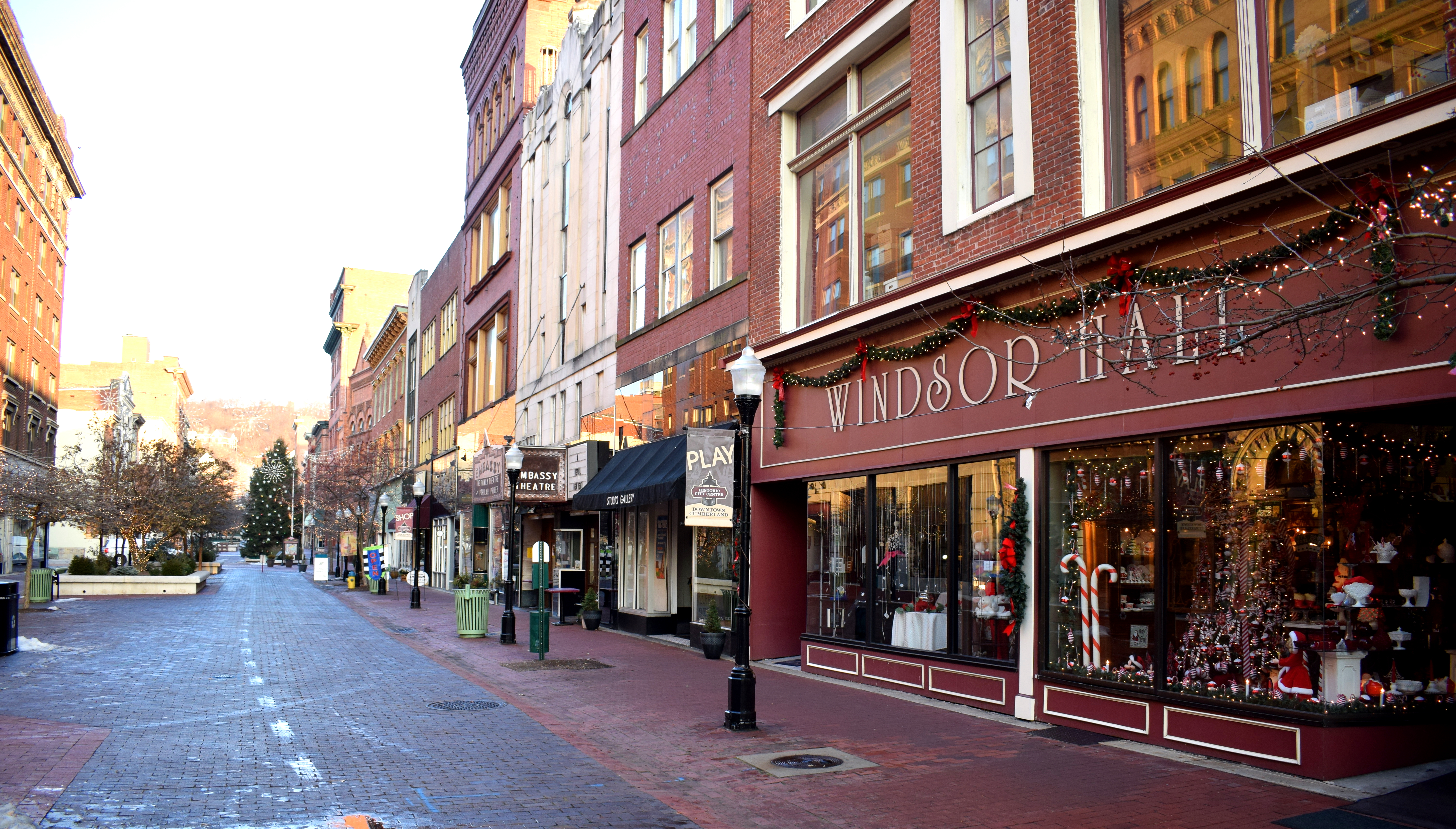 There was even an old school theater on the street with ticket windows on the outside.
There was even an old school theater on the street with ticket windows on the outside.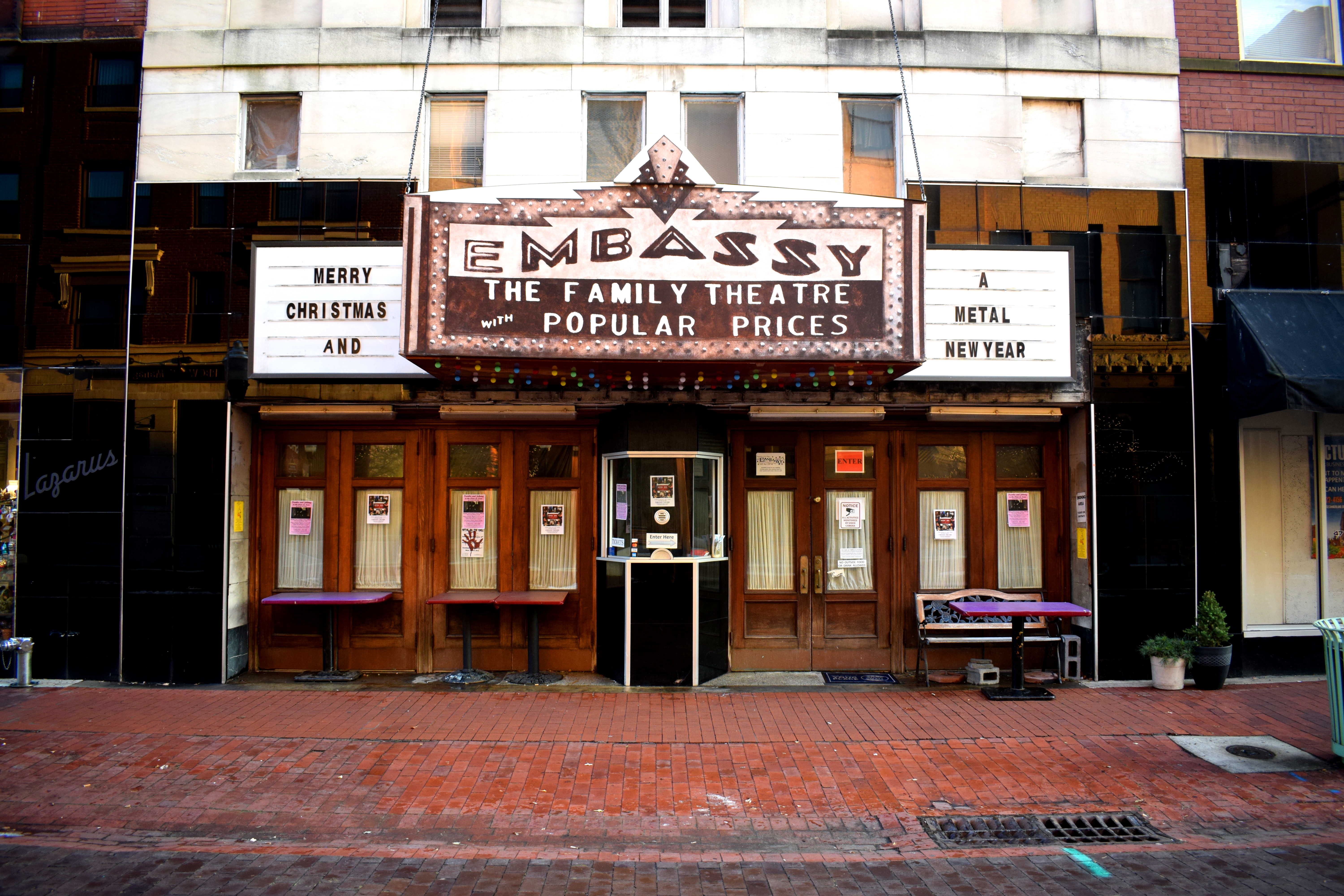
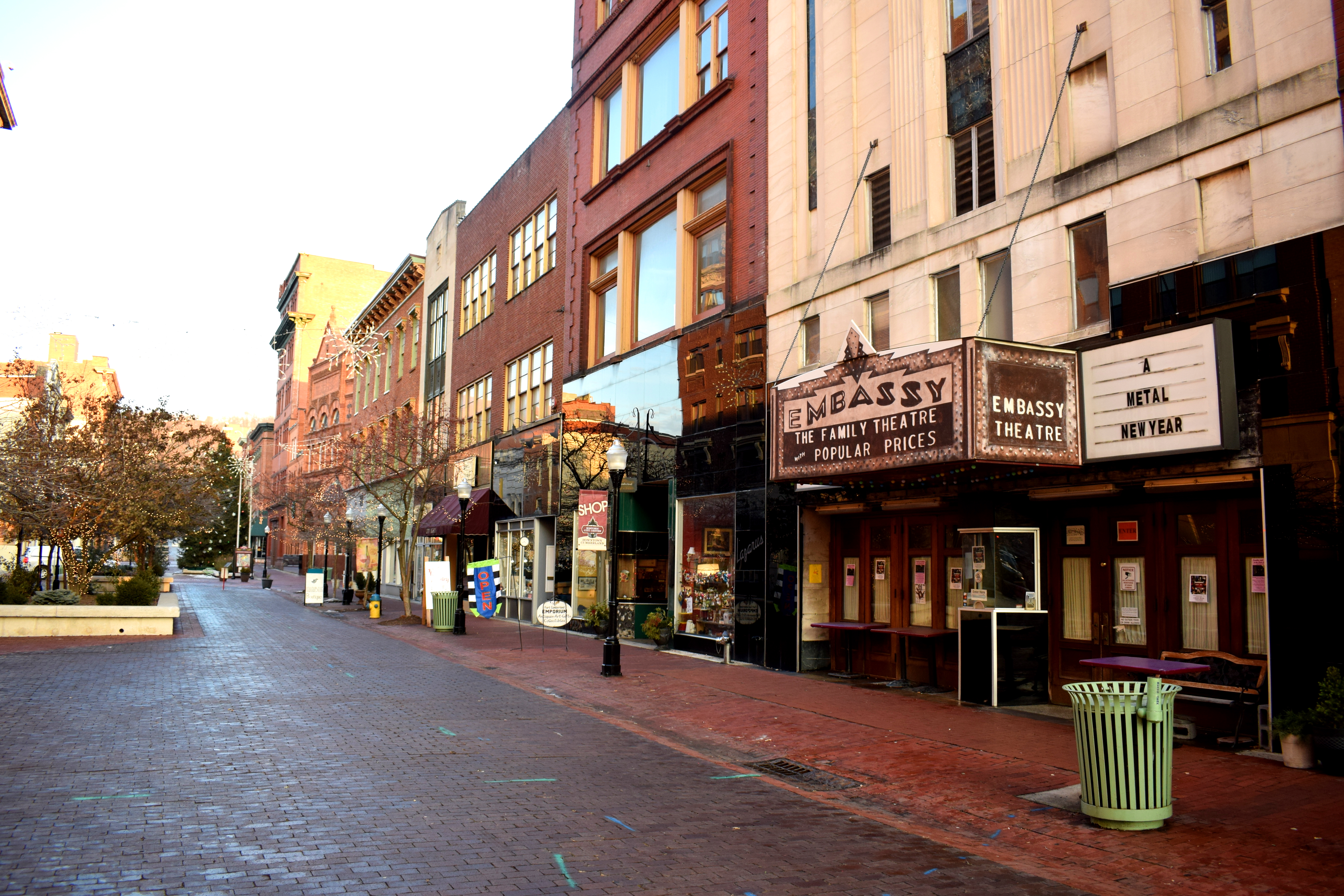 The street had an impressive collection of old 19th century and early 20th century buildings reflecting the prosperity that was once present in the city.
The street had an impressive collection of old 19th century and early 20th century buildings reflecting the prosperity that was once present in the city.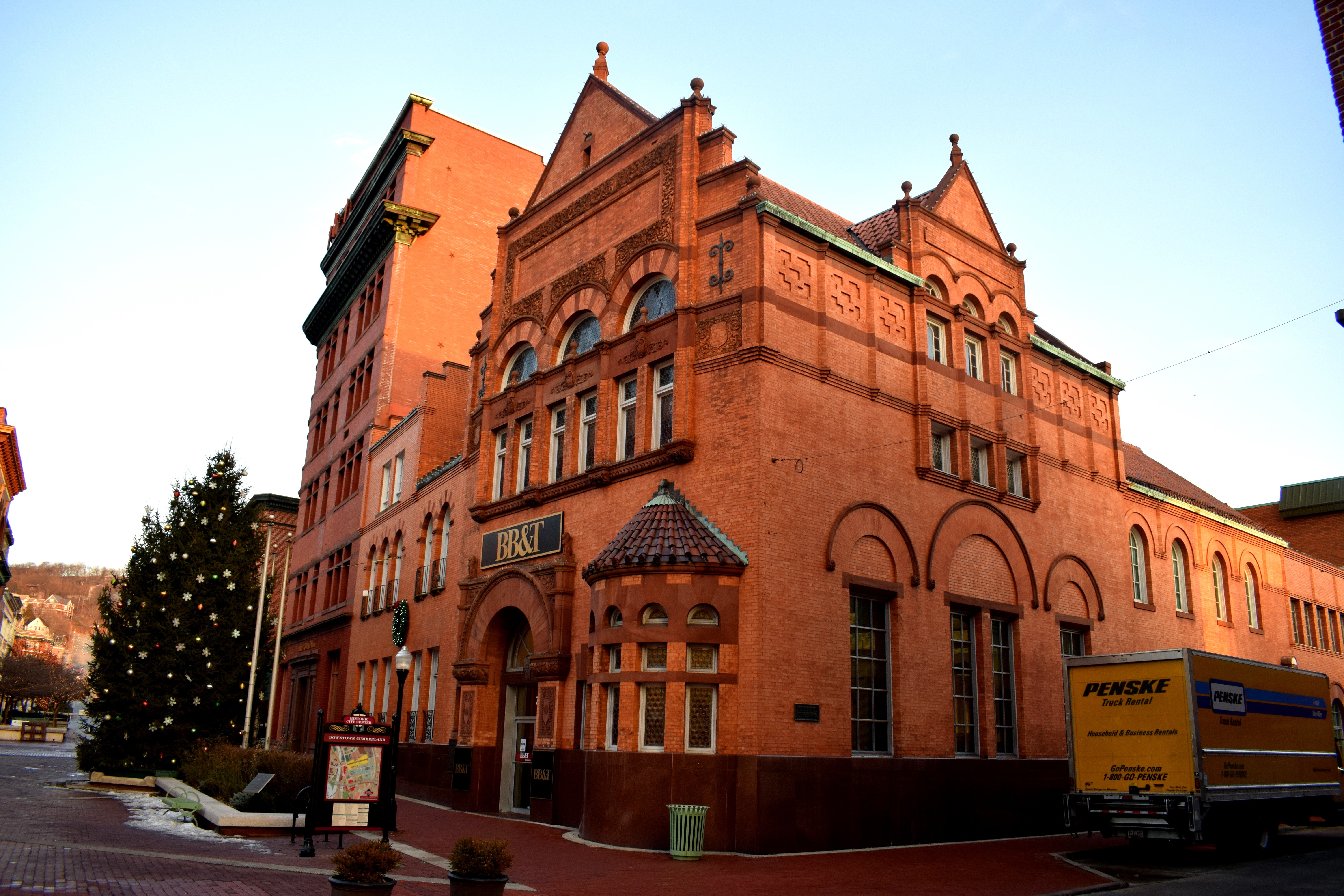
 The Susquehanna Bank Building, the second oldest bank in Maryland, chartered in 1812.
The Susquehanna Bank Building, the second oldest bank in Maryland, chartered in 1812.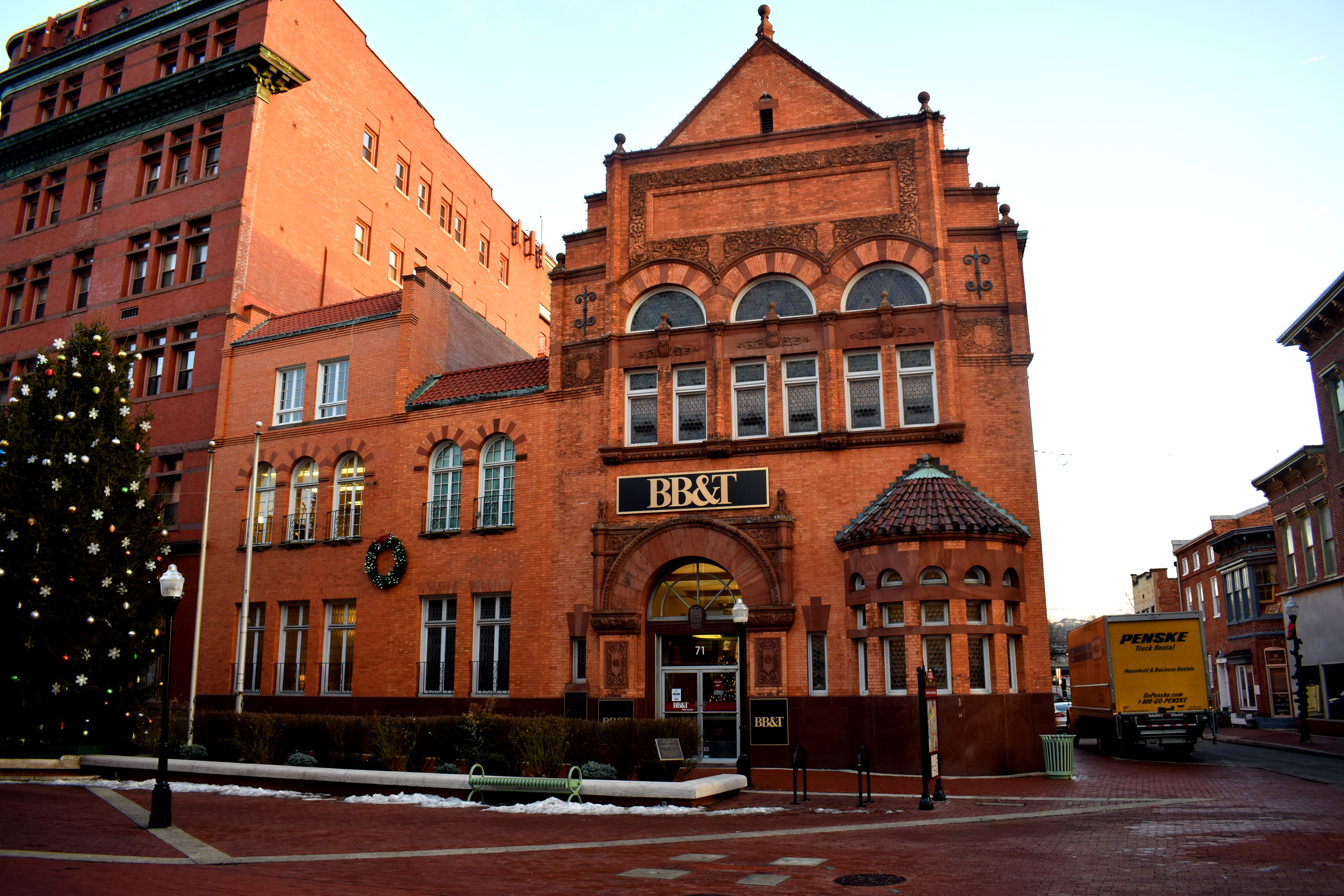 For most of the 20th century the street was open to traffic, but in the 1970’s the city decided to close it off for cars and turn it into a full scale pedestrian zone.
For most of the 20th century the street was open to traffic, but in the 1970’s the city decided to close it off for cars and turn it into a full scale pedestrian zone.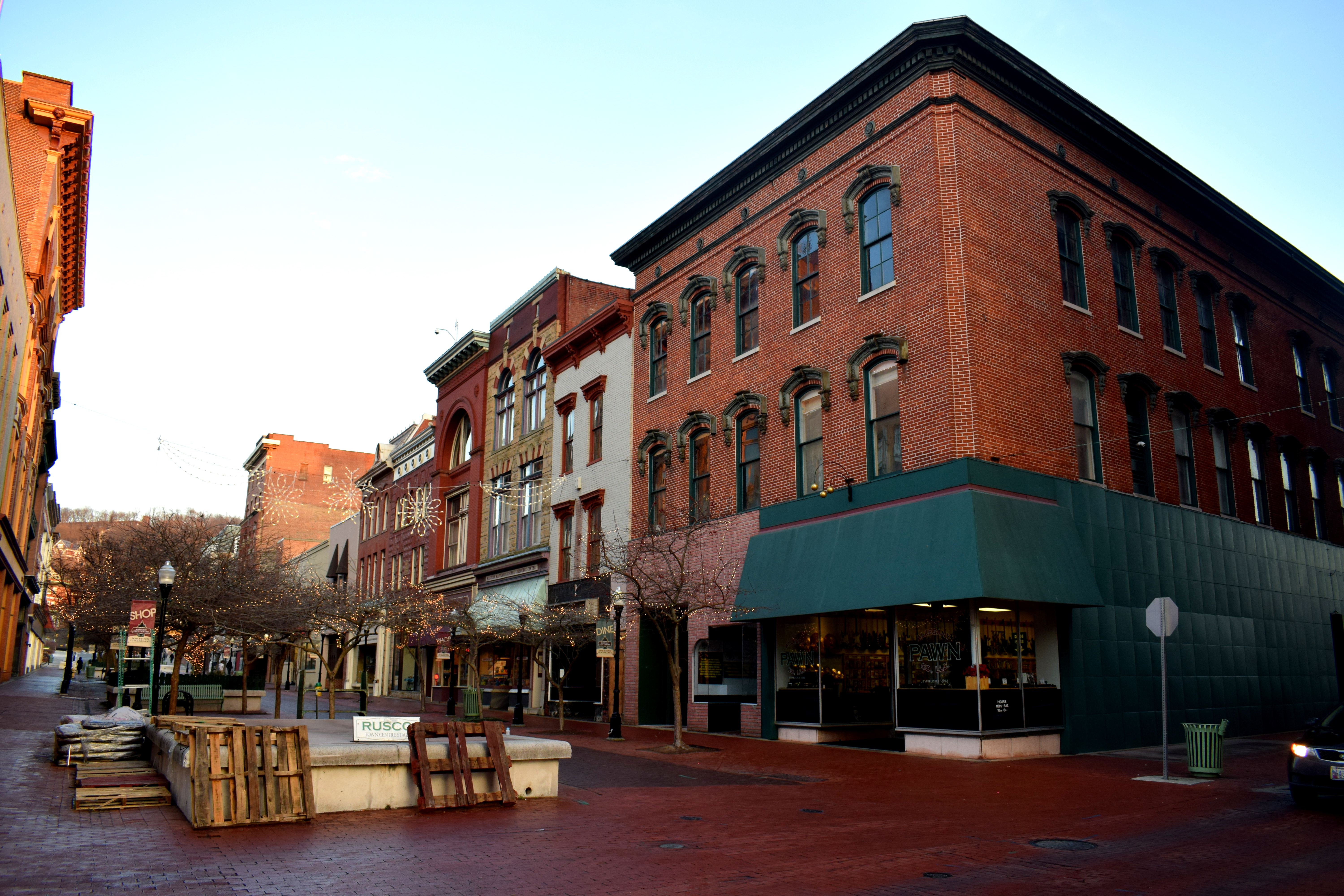 Today it is a perfect example of how American cities can convert their central districts into beautiful pedestrian areas and capture the same vibrancy that European cities have.
Today it is a perfect example of how American cities can convert their central districts into beautiful pedestrian areas and capture the same vibrancy that European cities have. Cities like Washington D.C. and New York which pride themselves on being so international haven’t even managed to build any proper functioning pedestrian only streets. It comes down to small cities like Cumberland to take the initiative.
Cities like Washington D.C. and New York which pride themselves on being so international haven’t even managed to build any proper functioning pedestrian only streets. It comes down to small cities like Cumberland to take the initiative.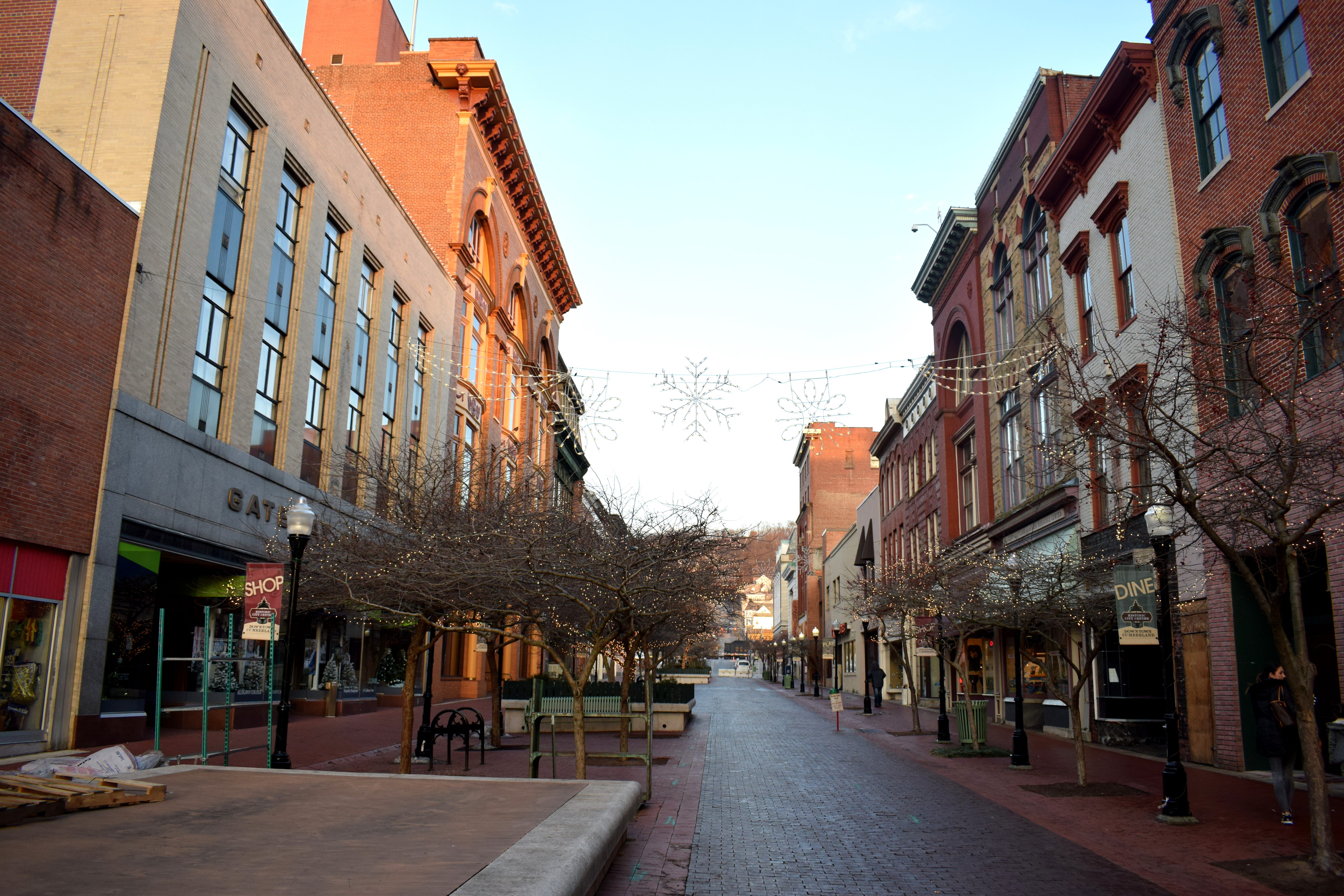 One problem with the street was that because it was so cold it remained empty with very few people walking. It just goes to show that pedestrianizing streets in the center of cities is not enough to get Americans to stop using cars. One lady even said that some businesses were lobbying to have the street opened up to traffic again, claiming that fewer people visit their stores because they have to park so far away and walk.
One problem with the street was that because it was so cold it remained empty with very few people walking. It just goes to show that pedestrianizing streets in the center of cities is not enough to get Americans to stop using cars. One lady even said that some businesses were lobbying to have the street opened up to traffic again, claiming that fewer people visit their stores because they have to park so far away and walk.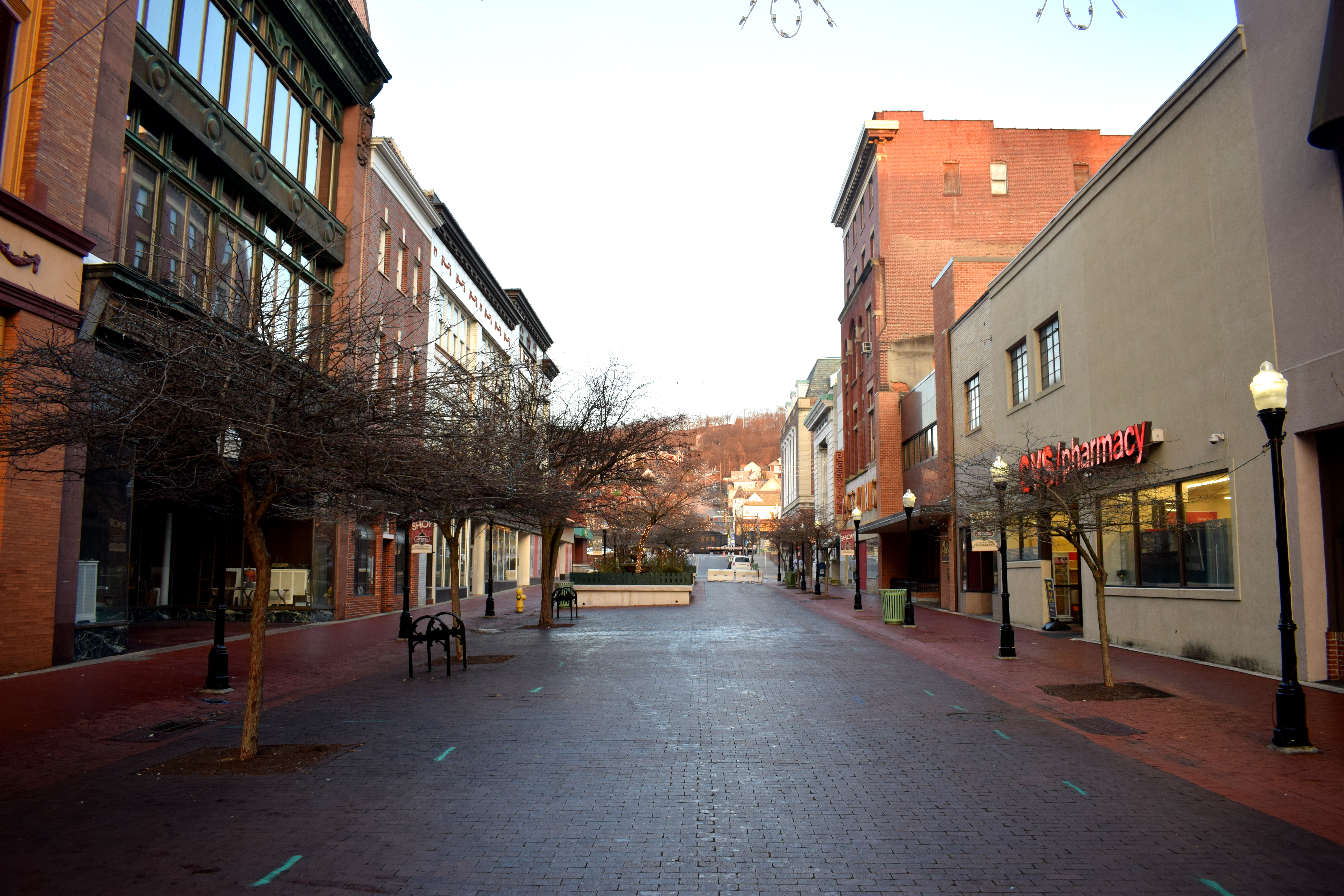 As if to reinforce the point that the street is off limits to cars, roadblocks have been added.
As if to reinforce the point that the street is off limits to cars, roadblocks have been added.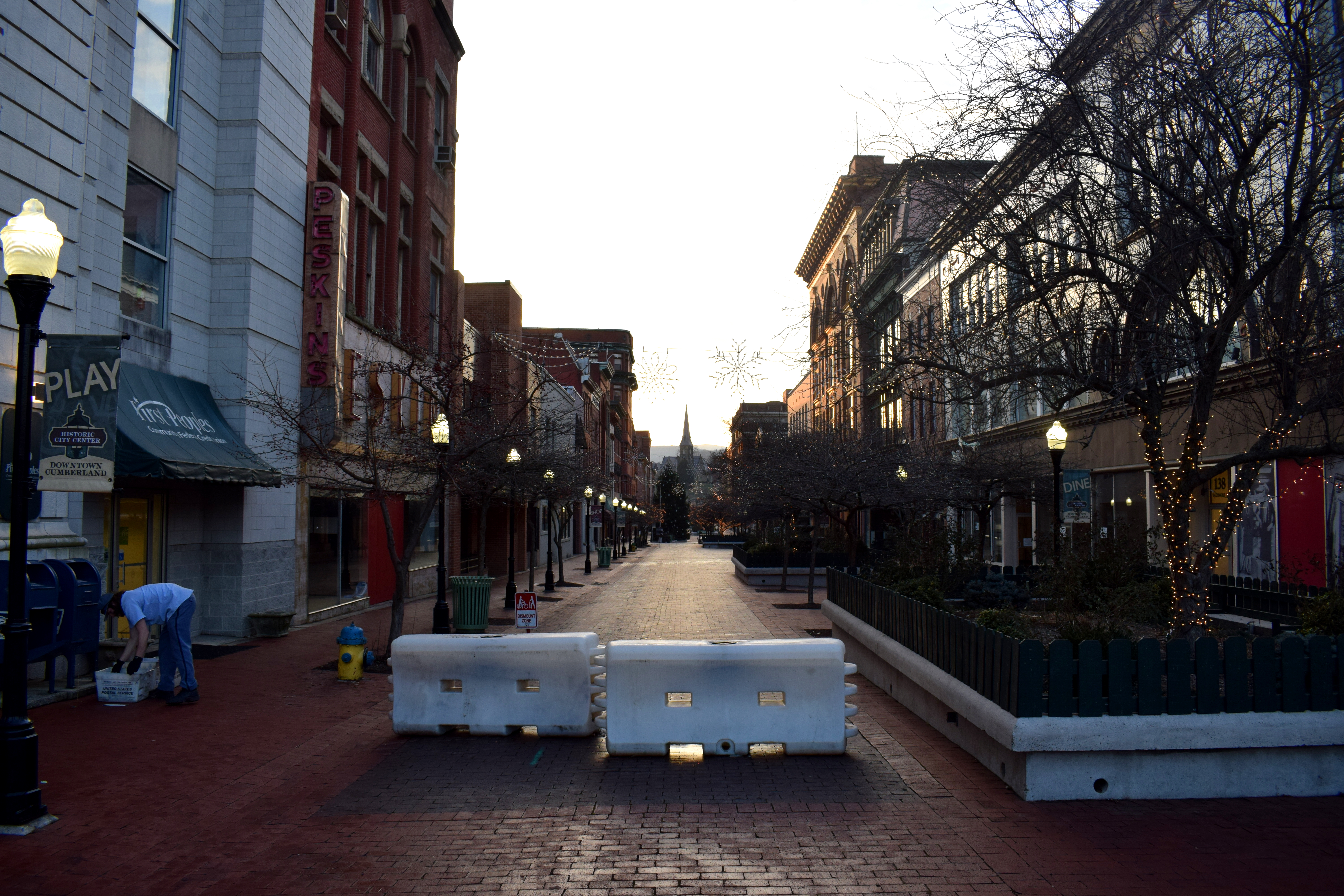 Cyclists are also required to walk their bicycles instead of riding through.
Cyclists are also required to walk their bicycles instead of riding through. Despite some drawbacks, Baltimore Street remains a major achievement and can be cited as an example of how cities can successfully pedestrianize their central districts and create a tourist attraction. Towns like Frederick and Hagerstown in Maryland have similar streets with beautiful buildings but have yet to fully pedestrianize them. They should follow Cumberland’s example.
Despite some drawbacks, Baltimore Street remains a major achievement and can be cited as an example of how cities can successfully pedestrianize their central districts and create a tourist attraction. Towns like Frederick and Hagerstown in Maryland have similar streets with beautiful buildings but have yet to fully pedestrianize them. They should follow Cumberland’s example.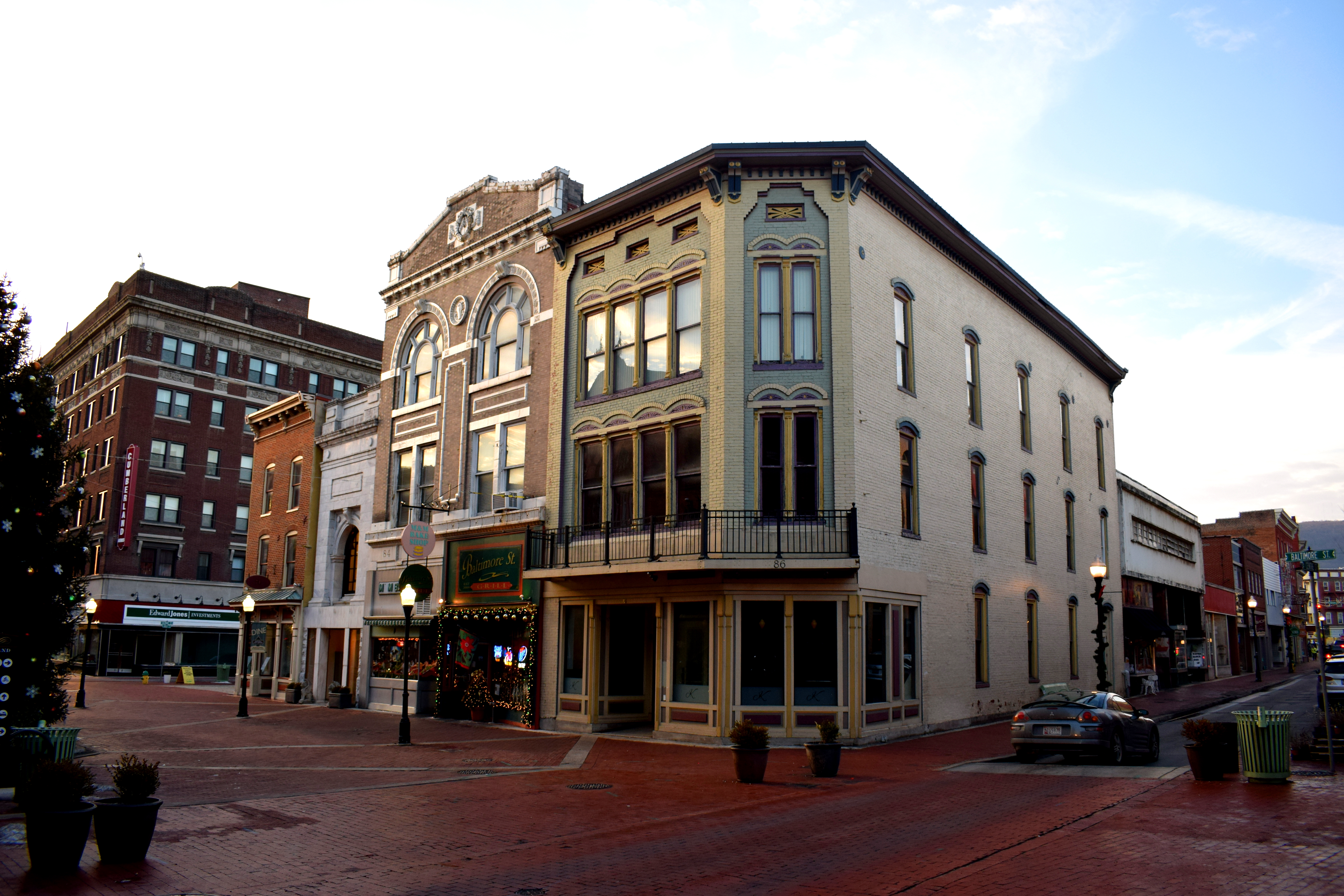 Examples of local businesses on the street. A local bar and bakery.
Examples of local businesses on the street. A local bar and bakery.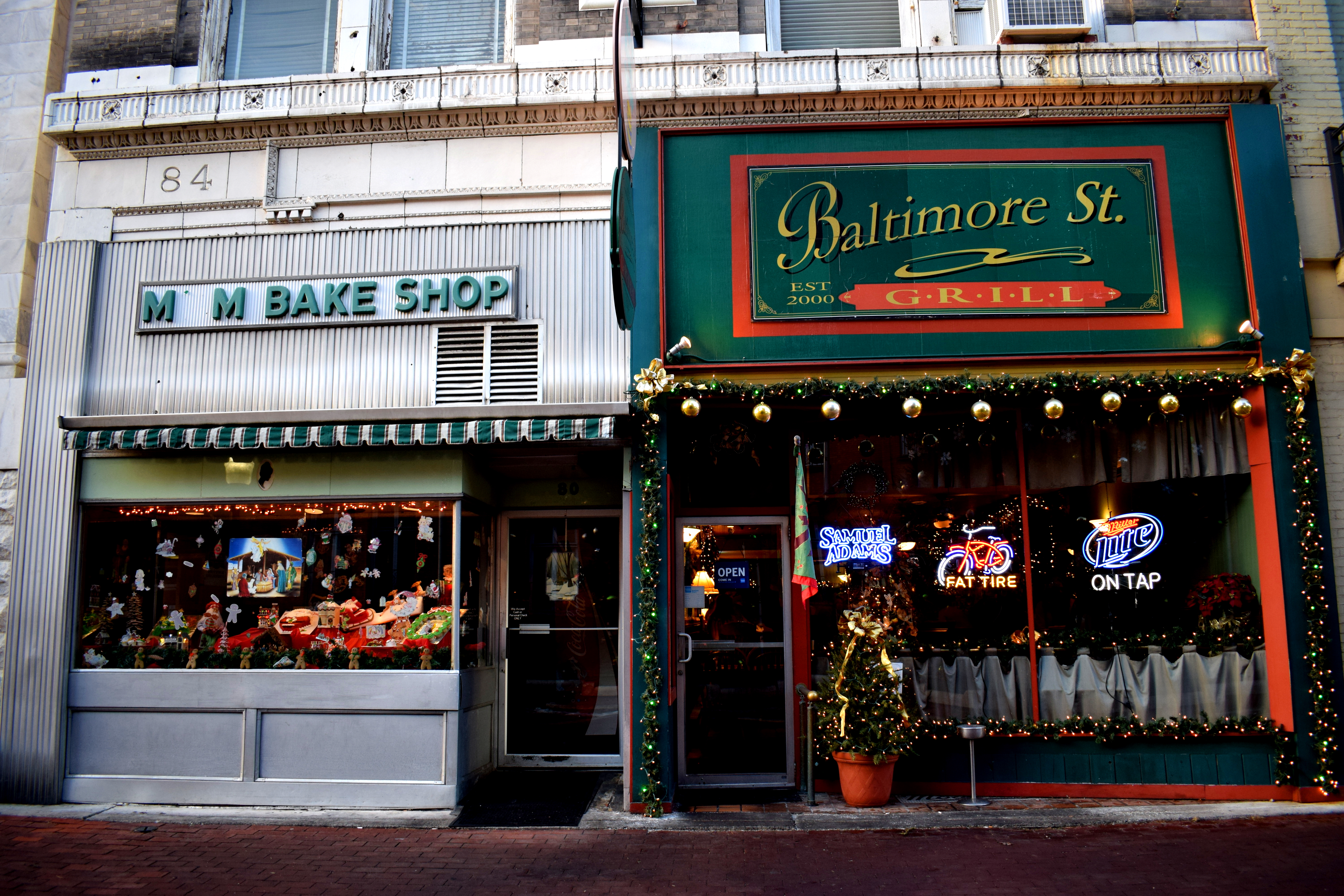 A guitar shop.
A guitar shop.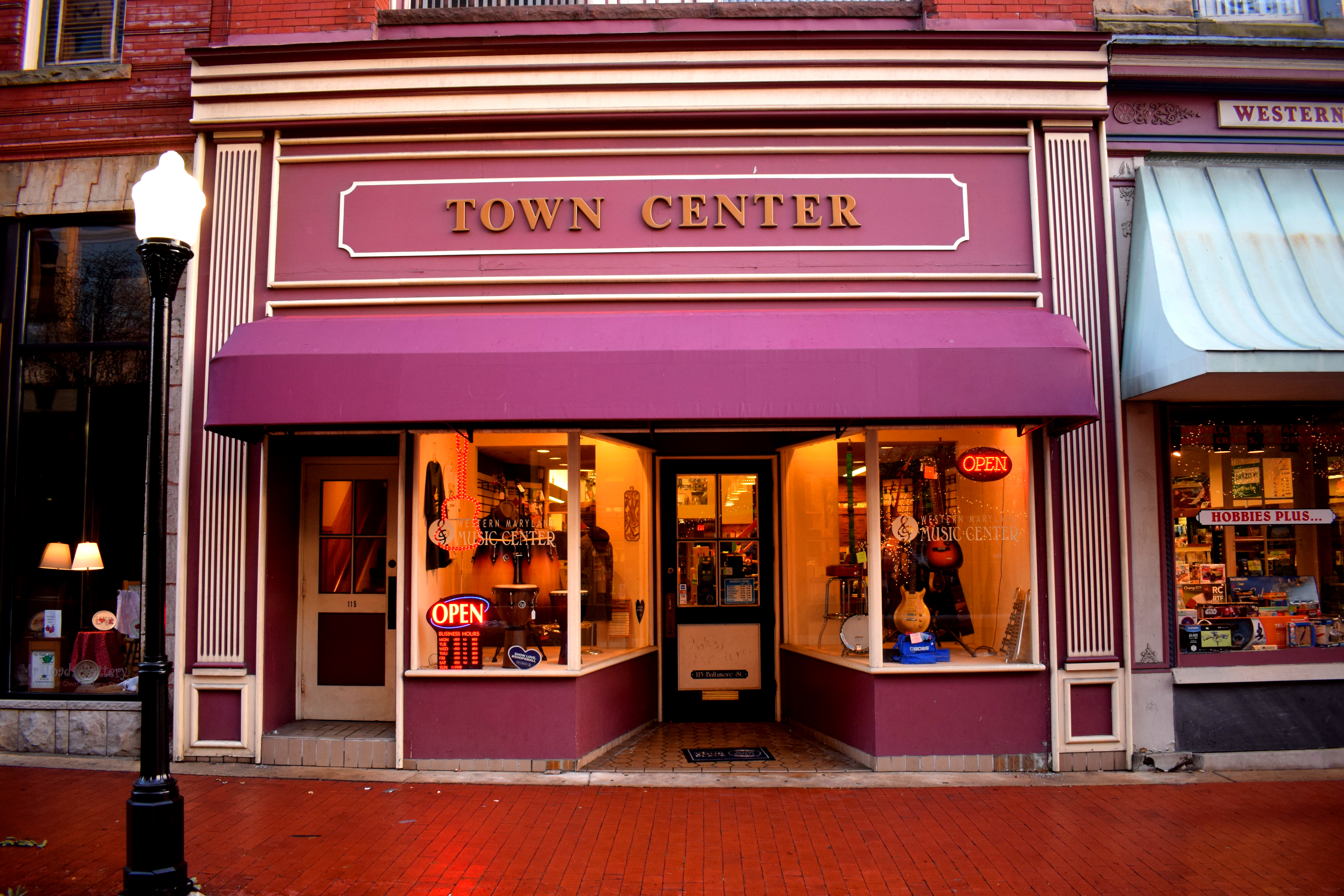 The Embassy Theater again.
The Embassy Theater again.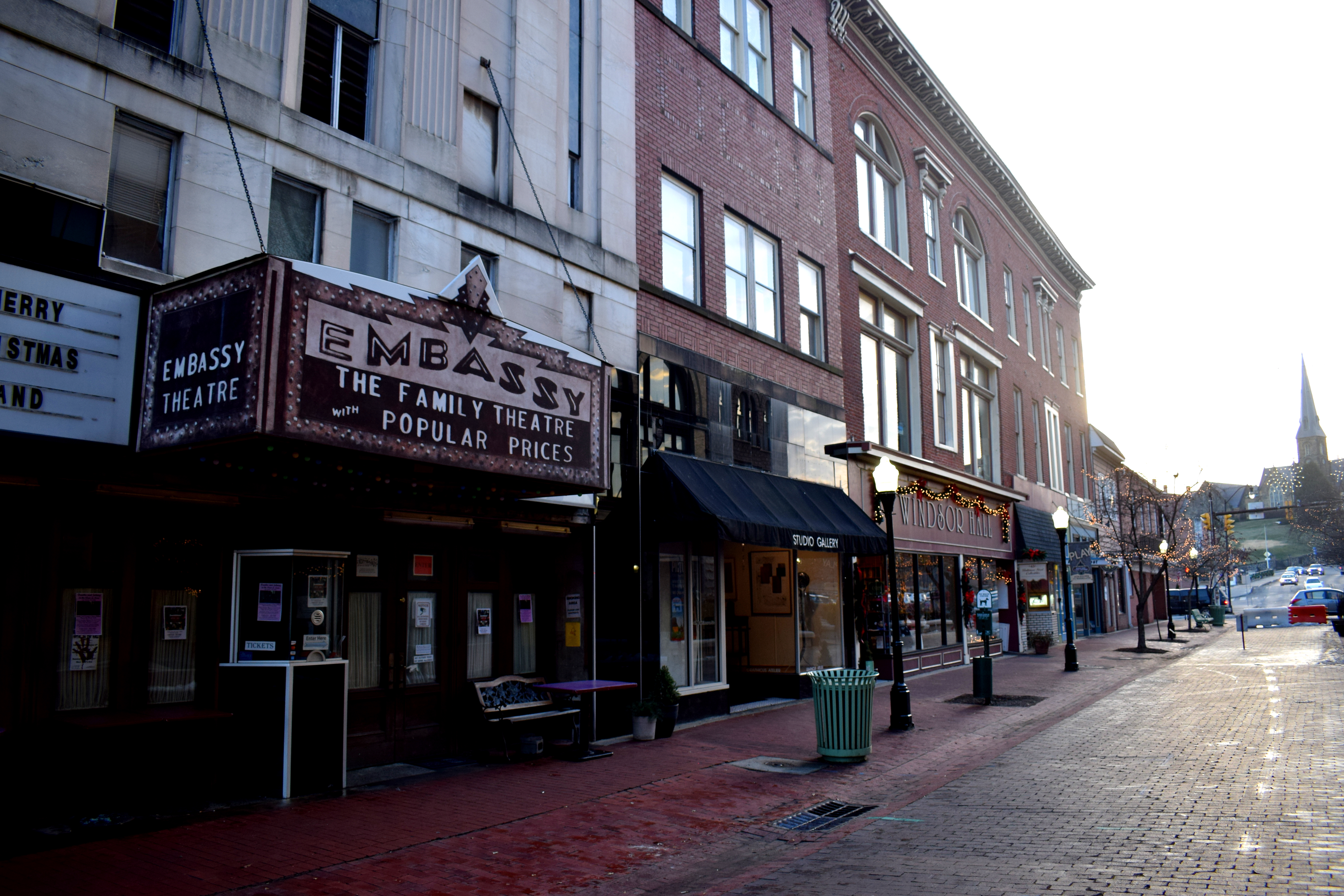 The entrance to the old town.
The entrance to the old town.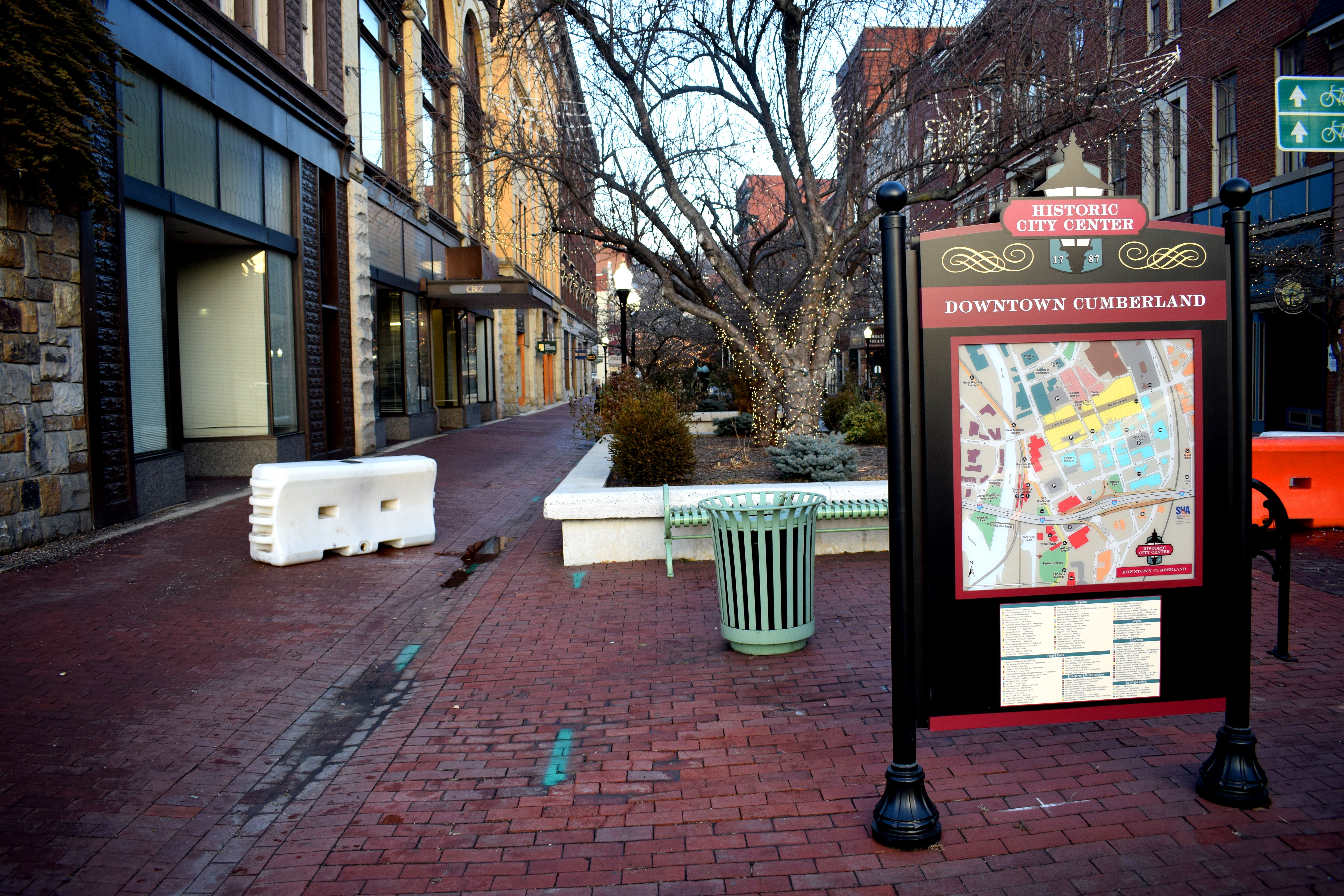
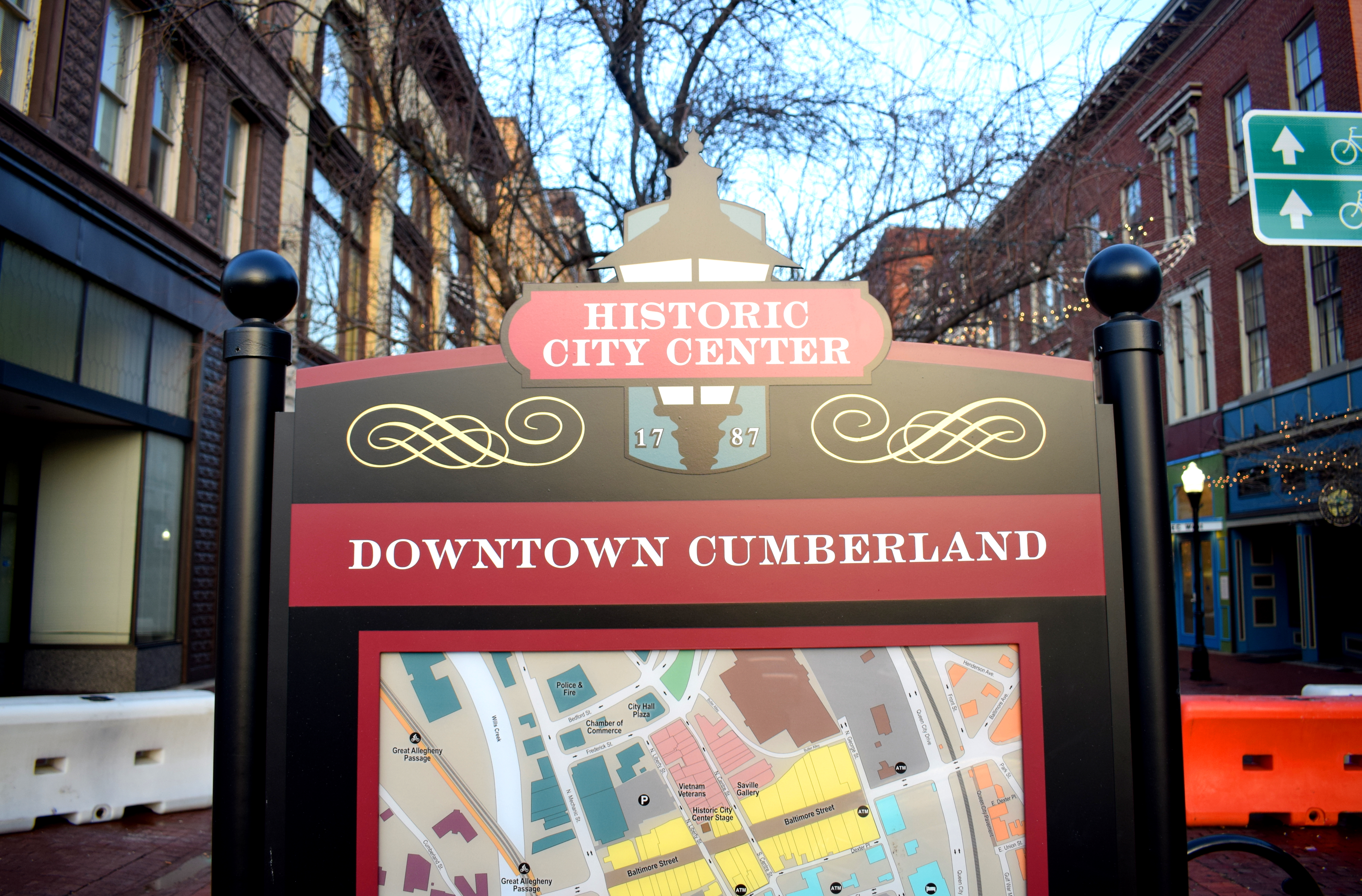
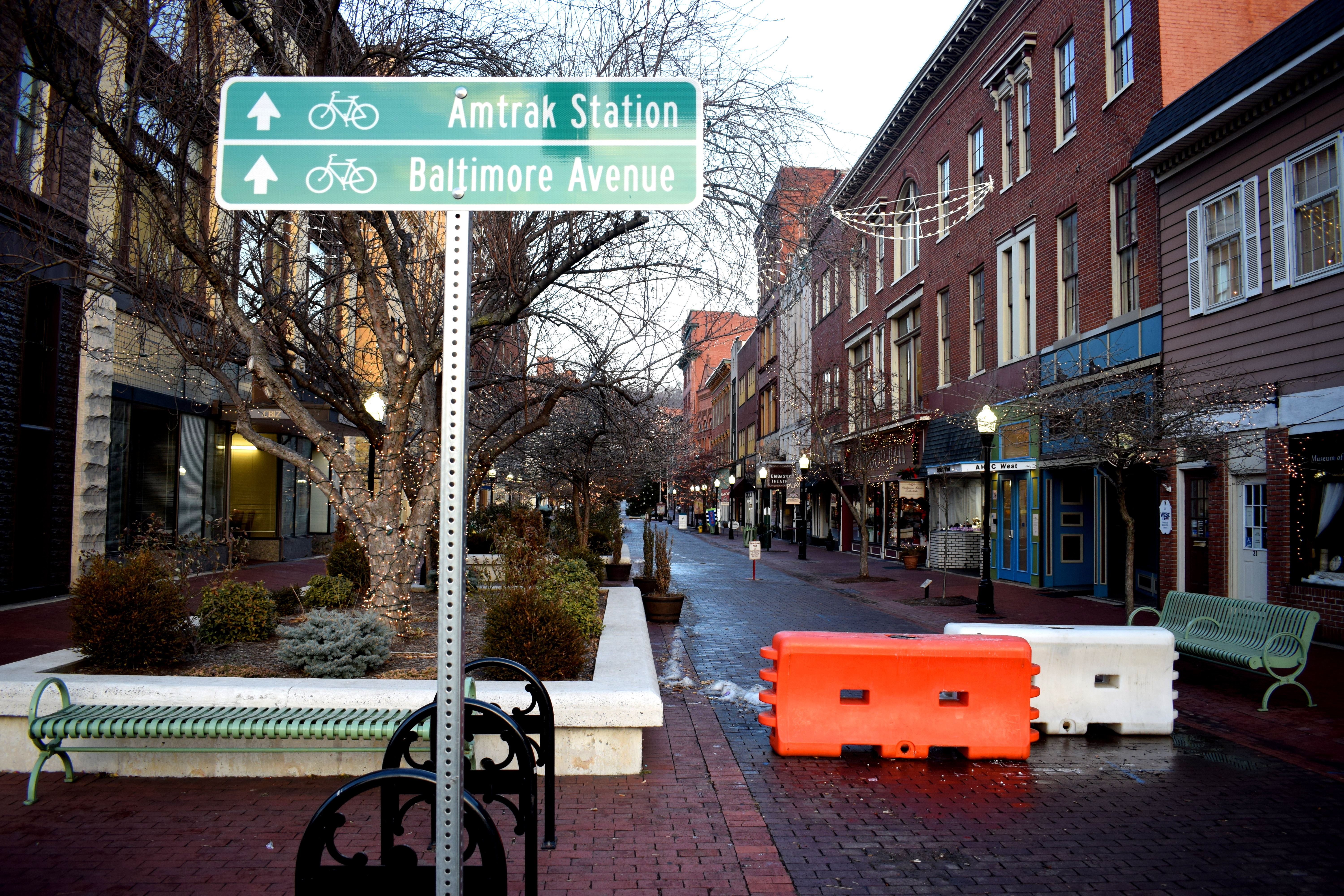 In sum, Cumberland is another beautiful small town in Maryland, a little further out from Washington DC in the Appalachian mountains, but still a relatively short day trip away. Just like Frederick and Hagerstown, Cumberland is a civil war town that could market itself as an attractive tourist destination for Americans interested in the country’s history.
In sum, Cumberland is another beautiful small town in Maryland, a little further out from Washington DC in the Appalachian mountains, but still a relatively short day trip away. Just like Frederick and Hagerstown, Cumberland is a civil war town that could market itself as an attractive tourist destination for Americans interested in the country’s history.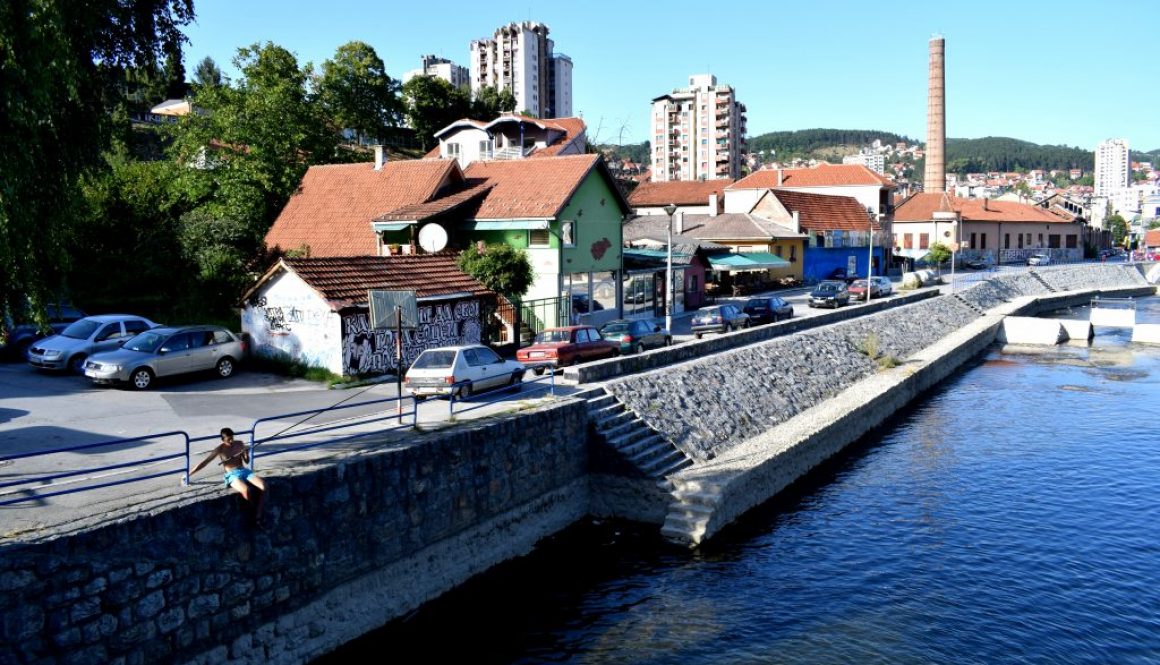
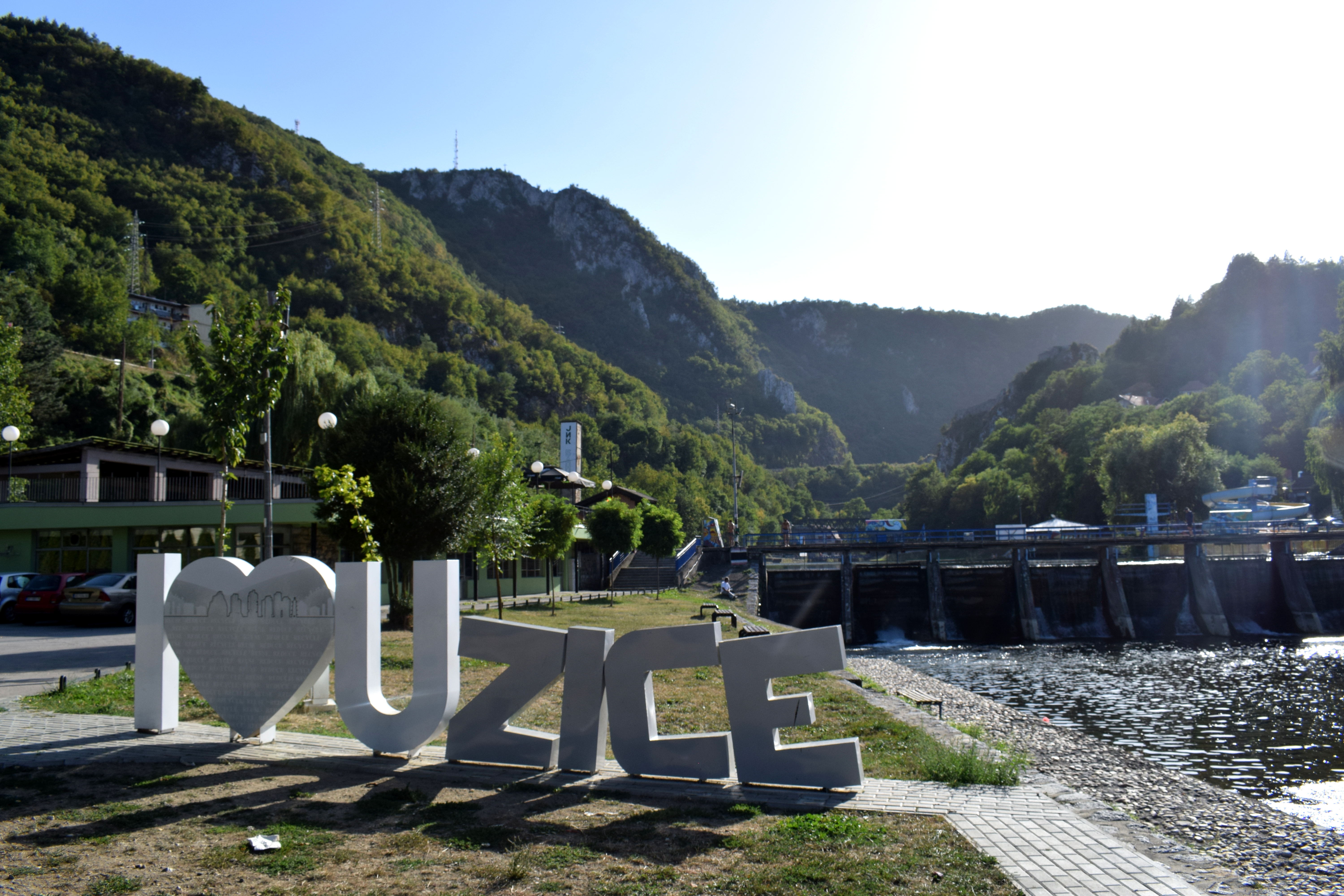 We took a bus from Sarajevo to get to Uzice. Although the two cities look close on a map, the road passes through some of the steepest mountains in the Balkans so the trip took four hours.
We took a bus from Sarajevo to get to Uzice. Although the two cities look close on a map, the road passes through some of the steepest mountains in the Balkans so the trip took four hours.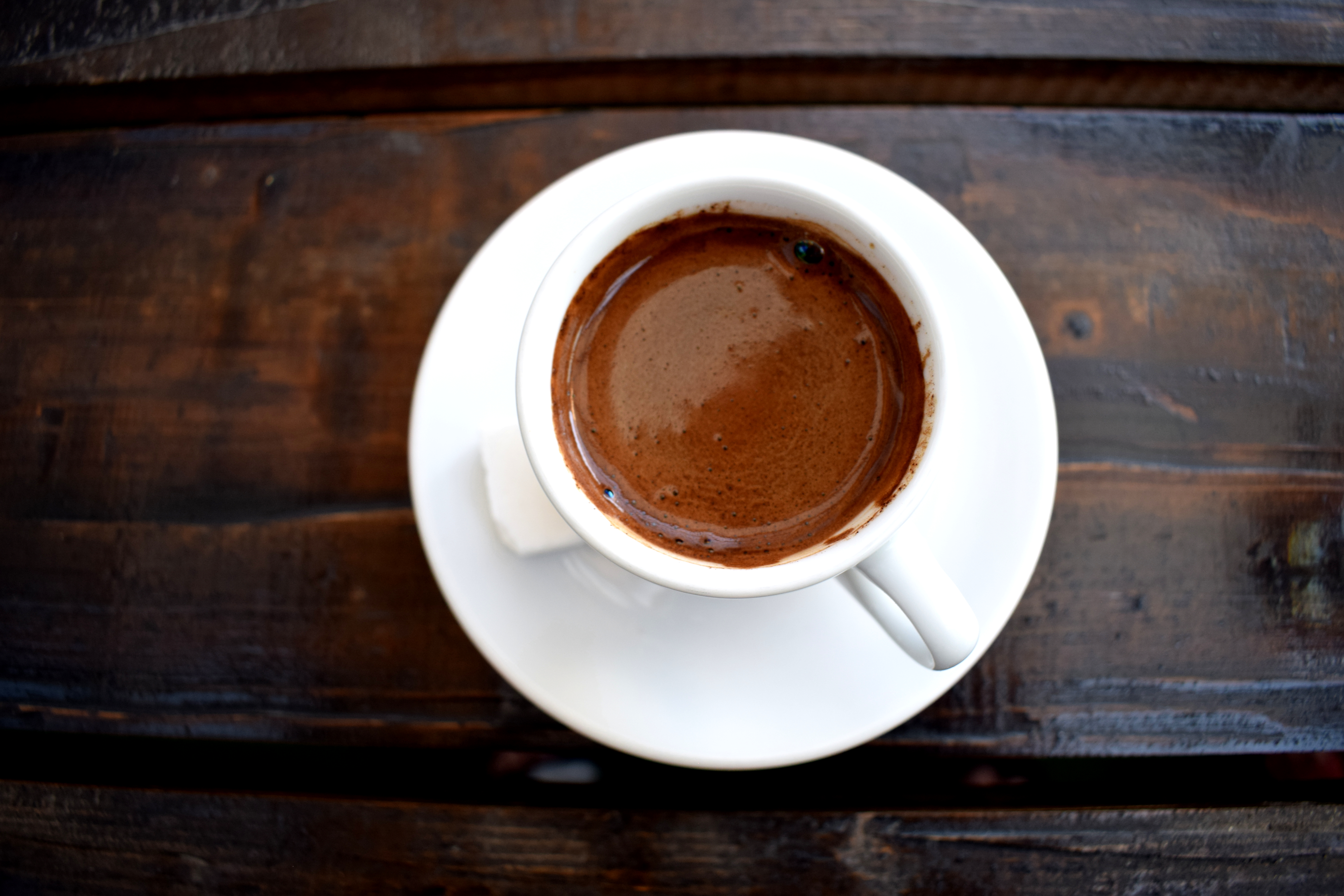 In addition to the coffee, we also got to try mouthwatering smoked lamb, or ‘janjetina’ as locals call it. Smoked lamb is a traditional meal in the Balkans and is served with meat and more meat. Vegans beware.
In addition to the coffee, we also got to try mouthwatering smoked lamb, or ‘janjetina’ as locals call it. Smoked lamb is a traditional meal in the Balkans and is served with meat and more meat. Vegans beware.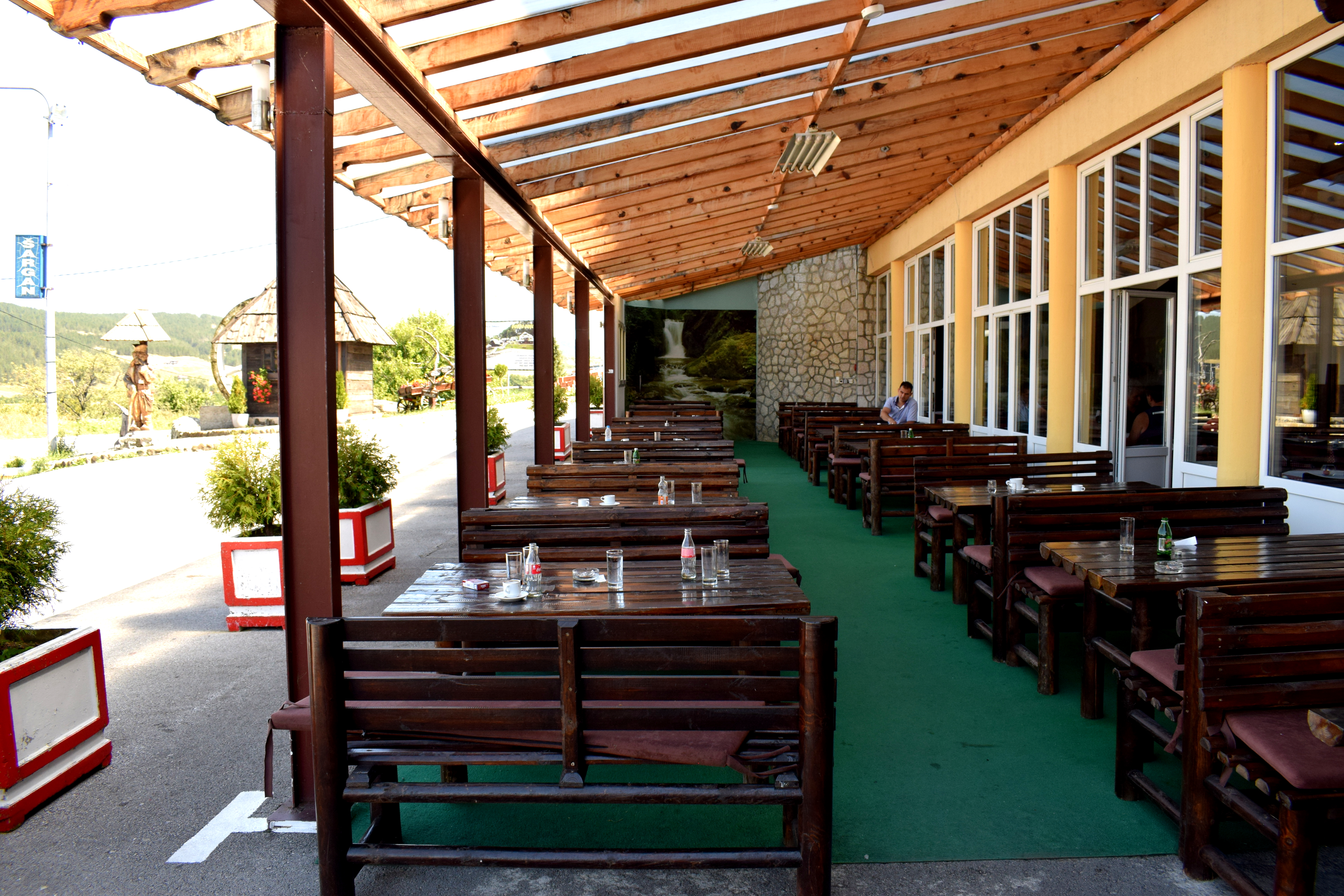 When we arrived at Uzice we were dropped off next to a picturesque river near the central bus station.
When we arrived at Uzice we were dropped off next to a picturesque river near the central bus station.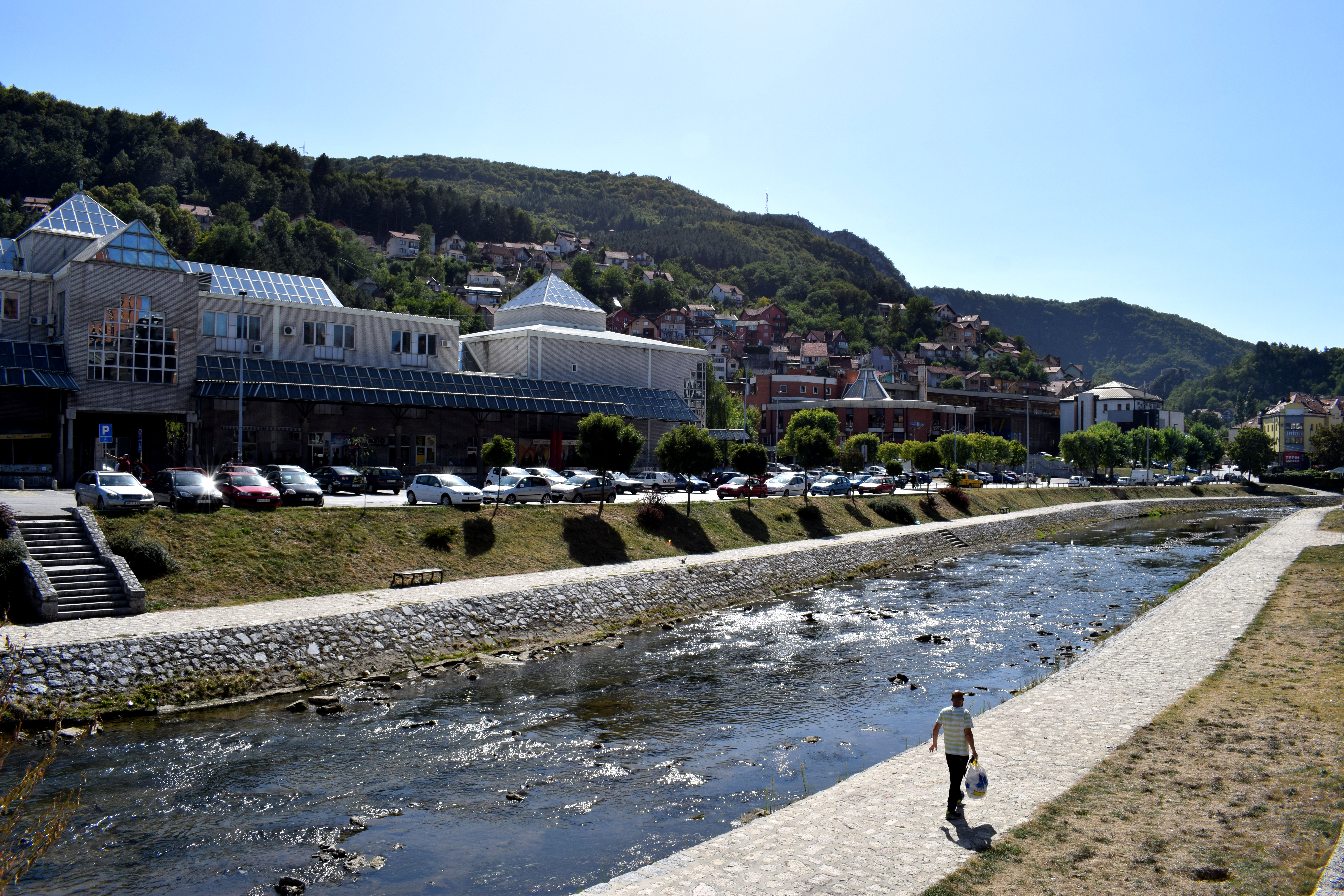 This was the Djetinja River, eventually merging with the West Moraver River in Serbia and onward with the Danube.
This was the Djetinja River, eventually merging with the West Moraver River in Serbia and onward with the Danube.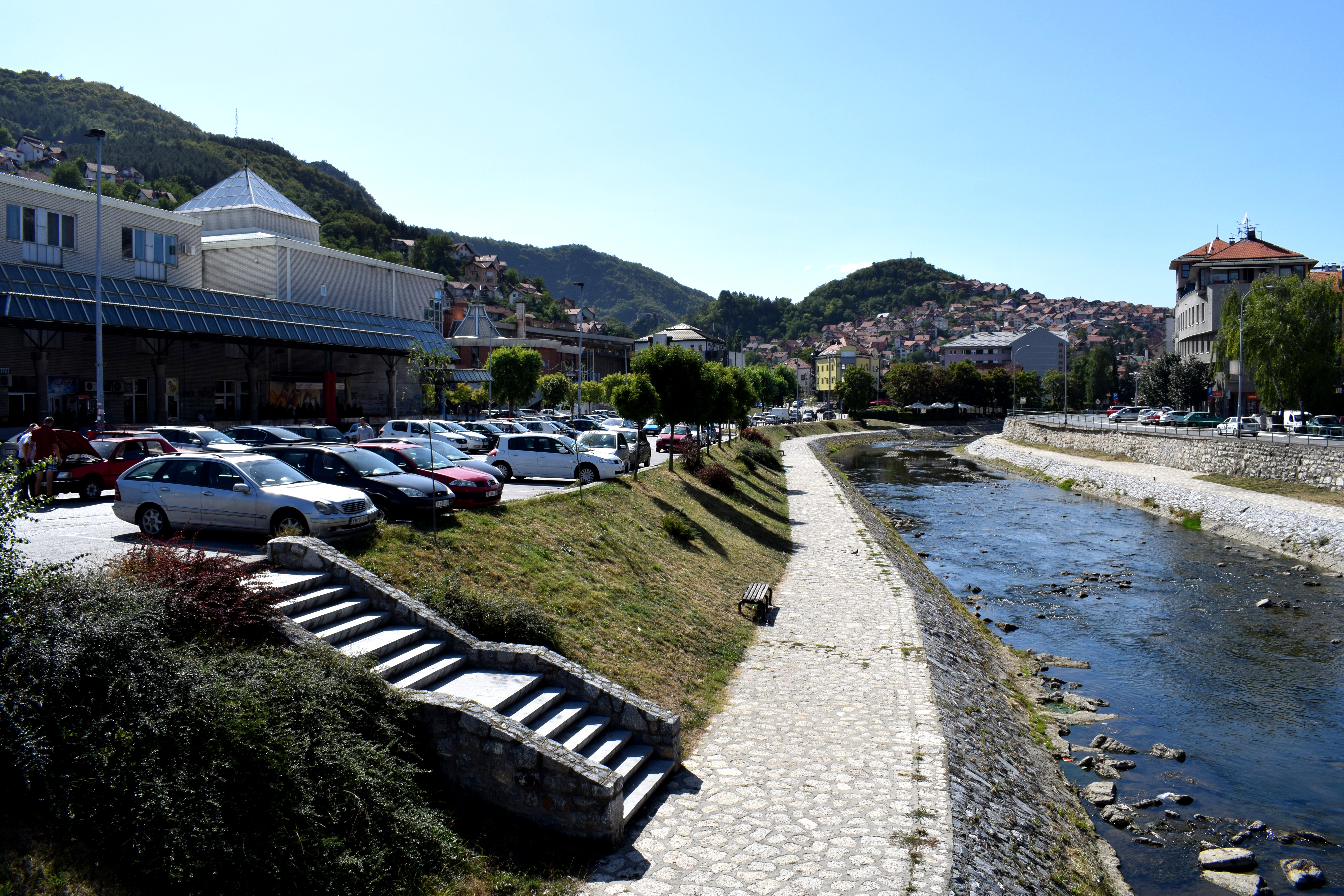 The Balkans is known for having fresh, clean water and Uzice is no exception. There were several fountains around the city which you could drink freely from.
The Balkans is known for having fresh, clean water and Uzice is no exception. There were several fountains around the city which you could drink freely from.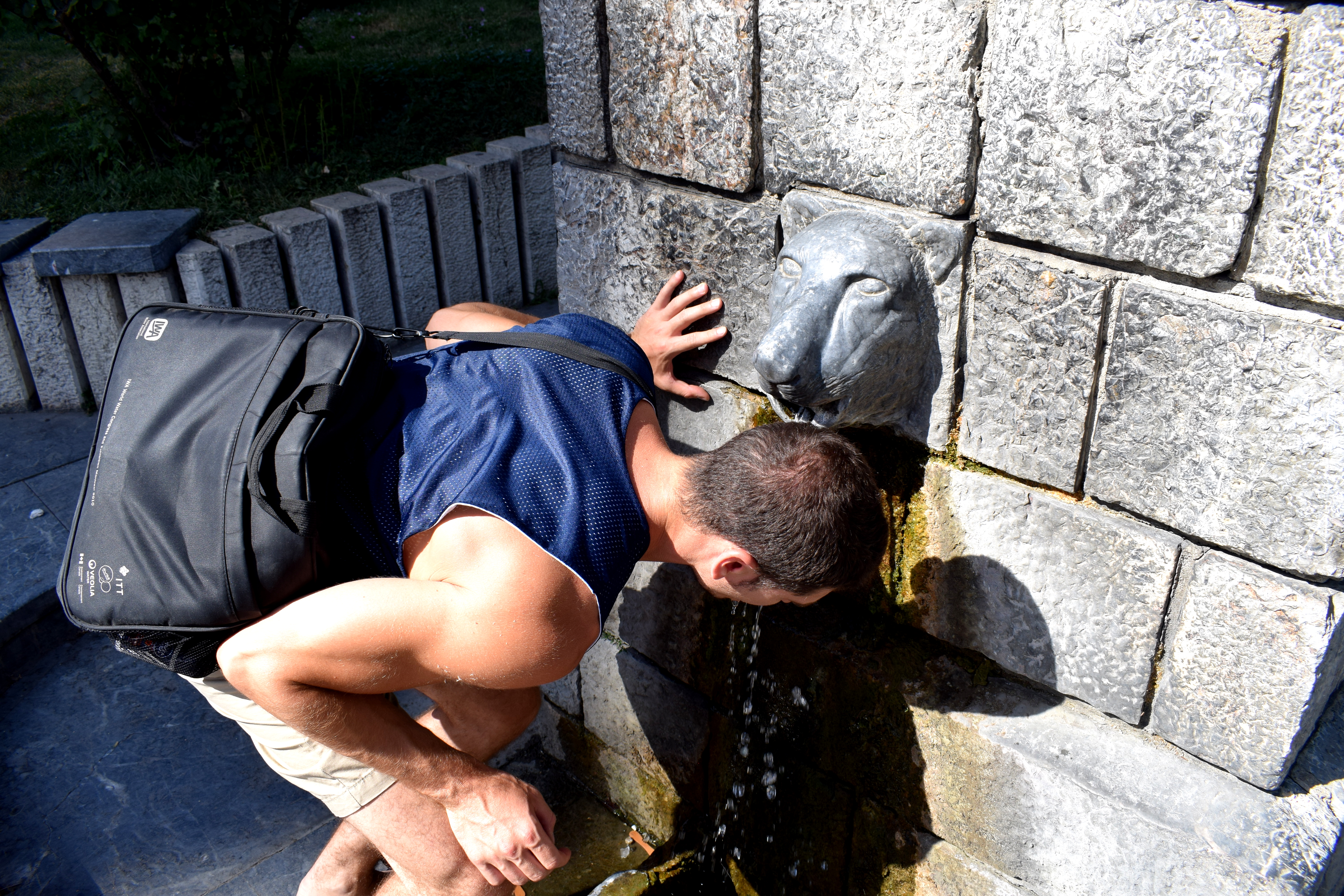 Uzice unfortunately suffered significant damage in WWII and much of the old center was destroyed. One square which survived was the Square of St. Sava, located a short walk away from the bus station. The square includes Aljo’s Fountain, built in 1900 and the Uzice Grammar School, one of the first elementary schools in Serbia, built in 1839.
Uzice unfortunately suffered significant damage in WWII and much of the old center was destroyed. One square which survived was the Square of St. Sava, located a short walk away from the bus station. The square includes Aljo’s Fountain, built in 1900 and the Uzice Grammar School, one of the first elementary schools in Serbia, built in 1839.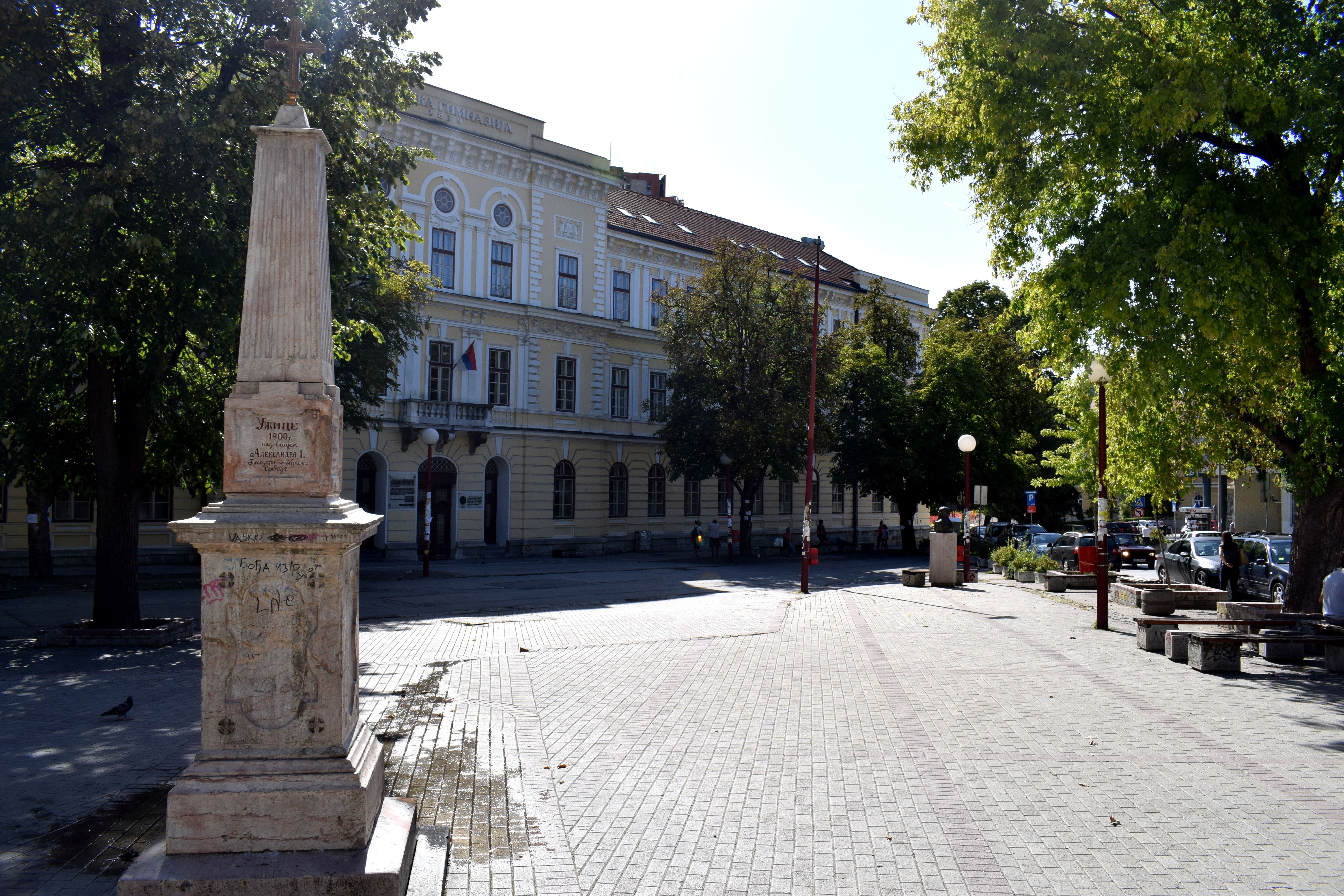 Behind the fountain is Saint George’s Cathedral, the largest Orthodox church in Uzice, built in 1842-1844.
Behind the fountain is Saint George’s Cathedral, the largest Orthodox church in Uzice, built in 1842-1844.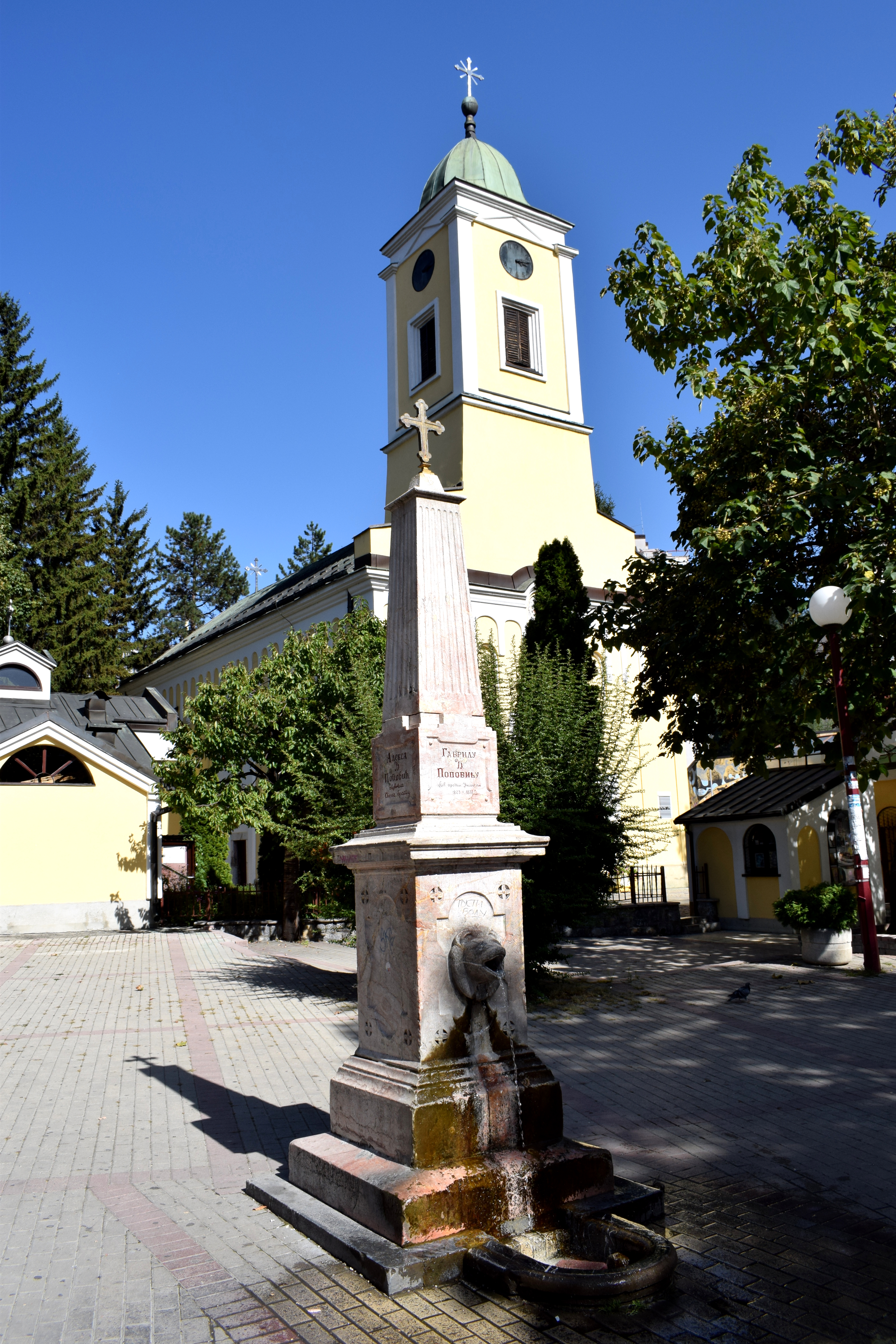 The entrance to the church.
The entrance to the church.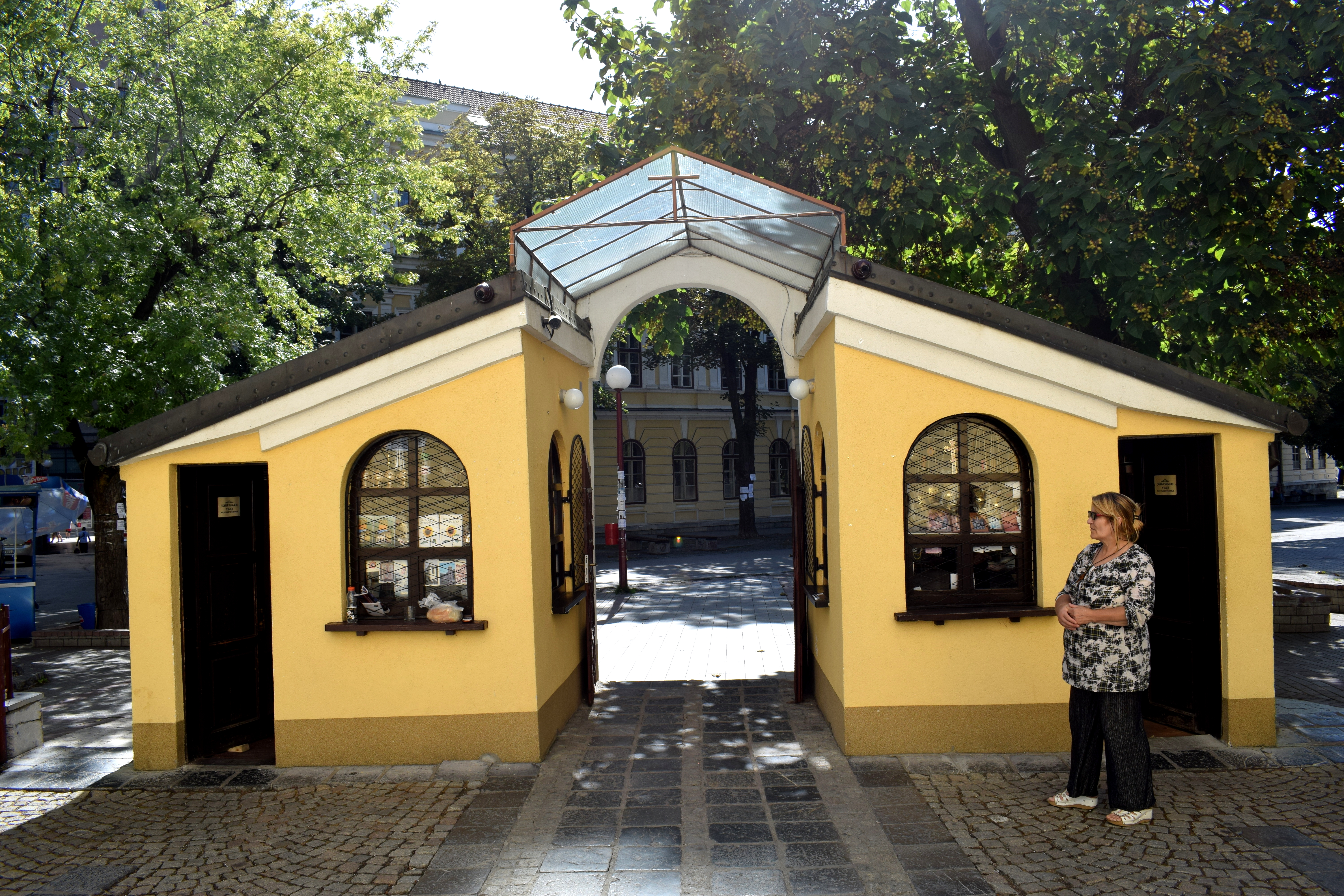 Engraved on the church’s wall is a list of soldiers from Uzice who died during the Balkan Wars (1912-1913) and WWI (1914-1918).
Engraved on the church’s wall is a list of soldiers from Uzice who died during the Balkan Wars (1912-1913) and WWI (1914-1918).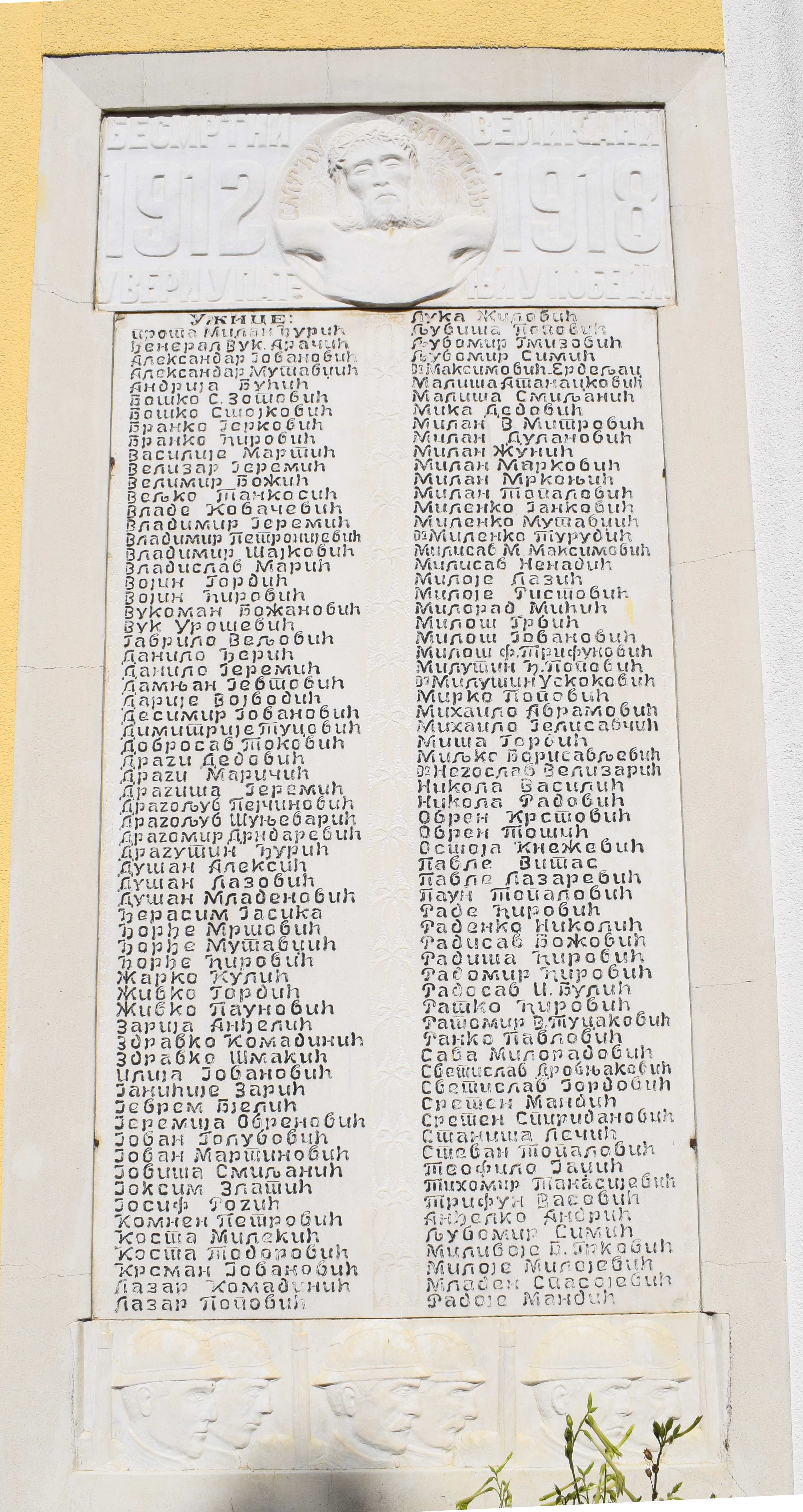 The church from the back.
The church from the back.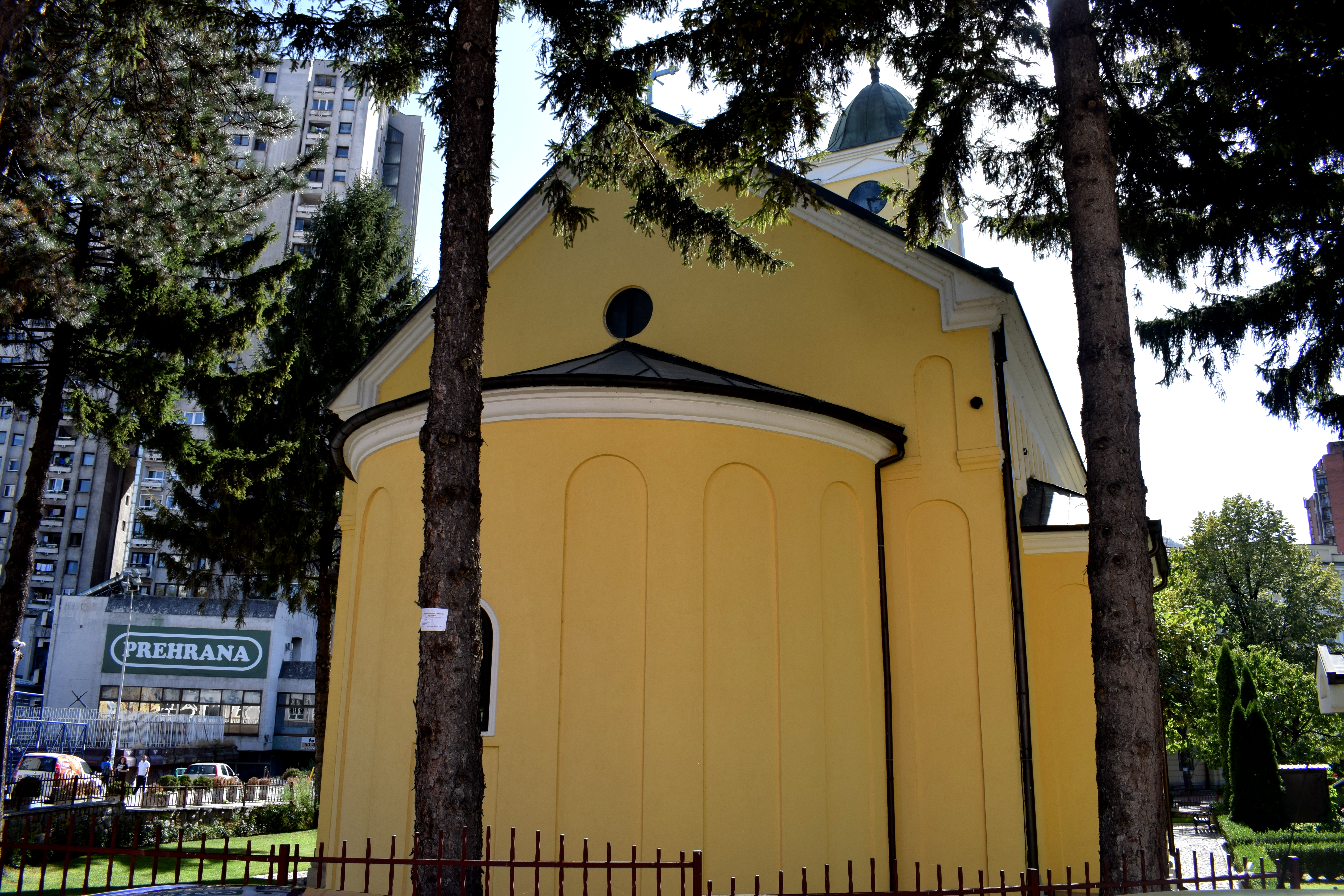 Uzice first became tied to Serbian history in 1180 when the Serbian Grand Prince Stefan Nemanja incorporated it into the medieval Serbian state of Raska. Although a small city at the time, Uzice was situated on a strategically-important road connecting the mountainous Balkan interior to the Adriatic coast. When Serbia fell to the Turks in 1459, the city held out for a few years before finally succumbing in 1463. The Turks would rule the region until the early 1800’s when the city was liberated during the First Serbian Rising in 1807. Uzice developed rapidly afterward. Most of the old buildings in the center date back to this period.
Uzice first became tied to Serbian history in 1180 when the Serbian Grand Prince Stefan Nemanja incorporated it into the medieval Serbian state of Raska. Although a small city at the time, Uzice was situated on a strategically-important road connecting the mountainous Balkan interior to the Adriatic coast. When Serbia fell to the Turks in 1459, the city held out for a few years before finally succumbing in 1463. The Turks would rule the region until the early 1800’s when the city was liberated during the First Serbian Rising in 1807. Uzice developed rapidly afterward. Most of the old buildings in the center date back to this period.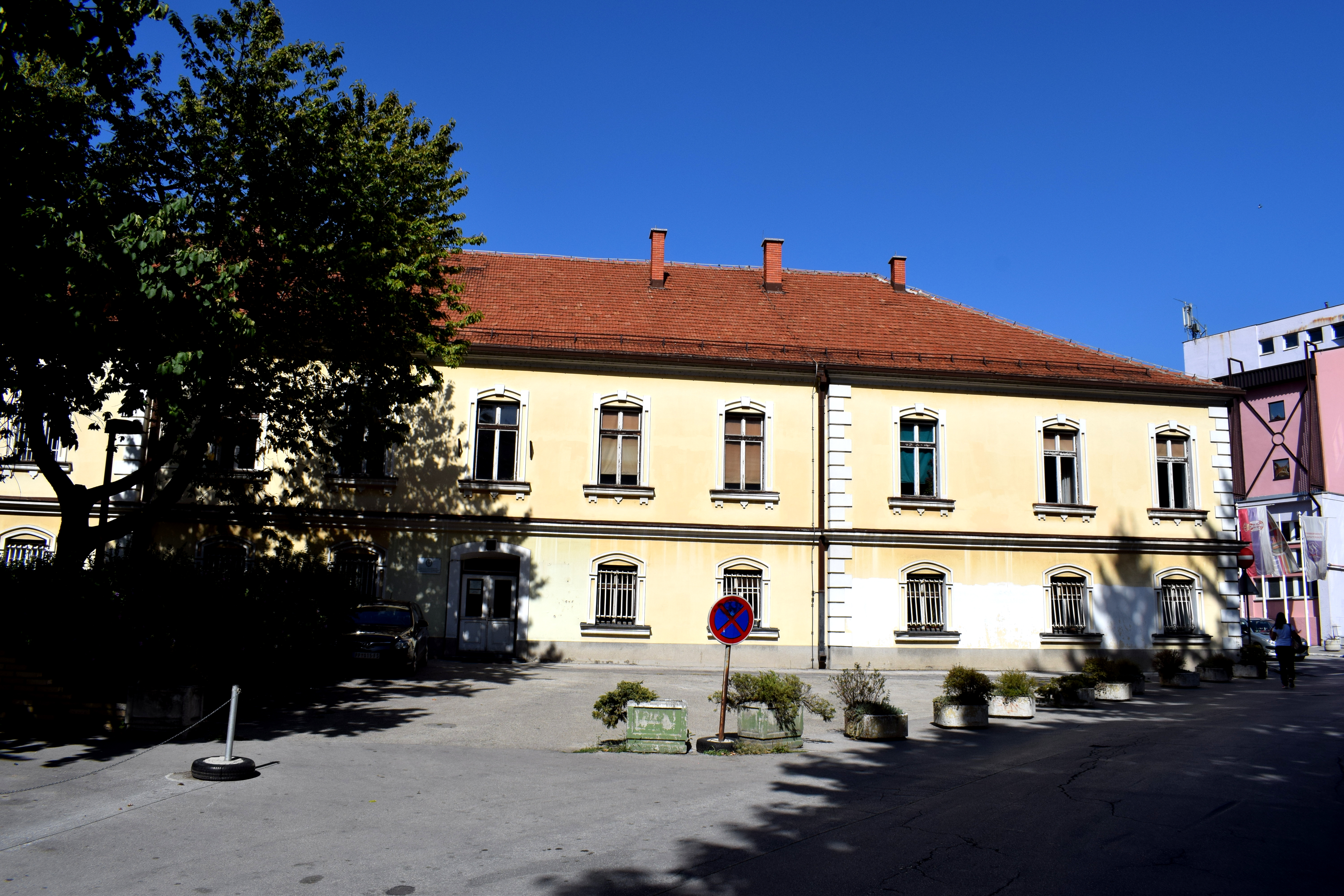 WWII destroyed much of the 19th century architecture. When the communists seized power after the war they preferred to showcase socialist architecture instead of restoring the old buildings. As a result, there is a sharp contrast in the city center between the socialist grey concrete buildings erected after the war and the old 19th century buildings reminiscent of an earlier era.
WWII destroyed much of the 19th century architecture. When the communists seized power after the war they preferred to showcase socialist architecture instead of restoring the old buildings. As a result, there is a sharp contrast in the city center between the socialist grey concrete buildings erected after the war and the old 19th century buildings reminiscent of an earlier era.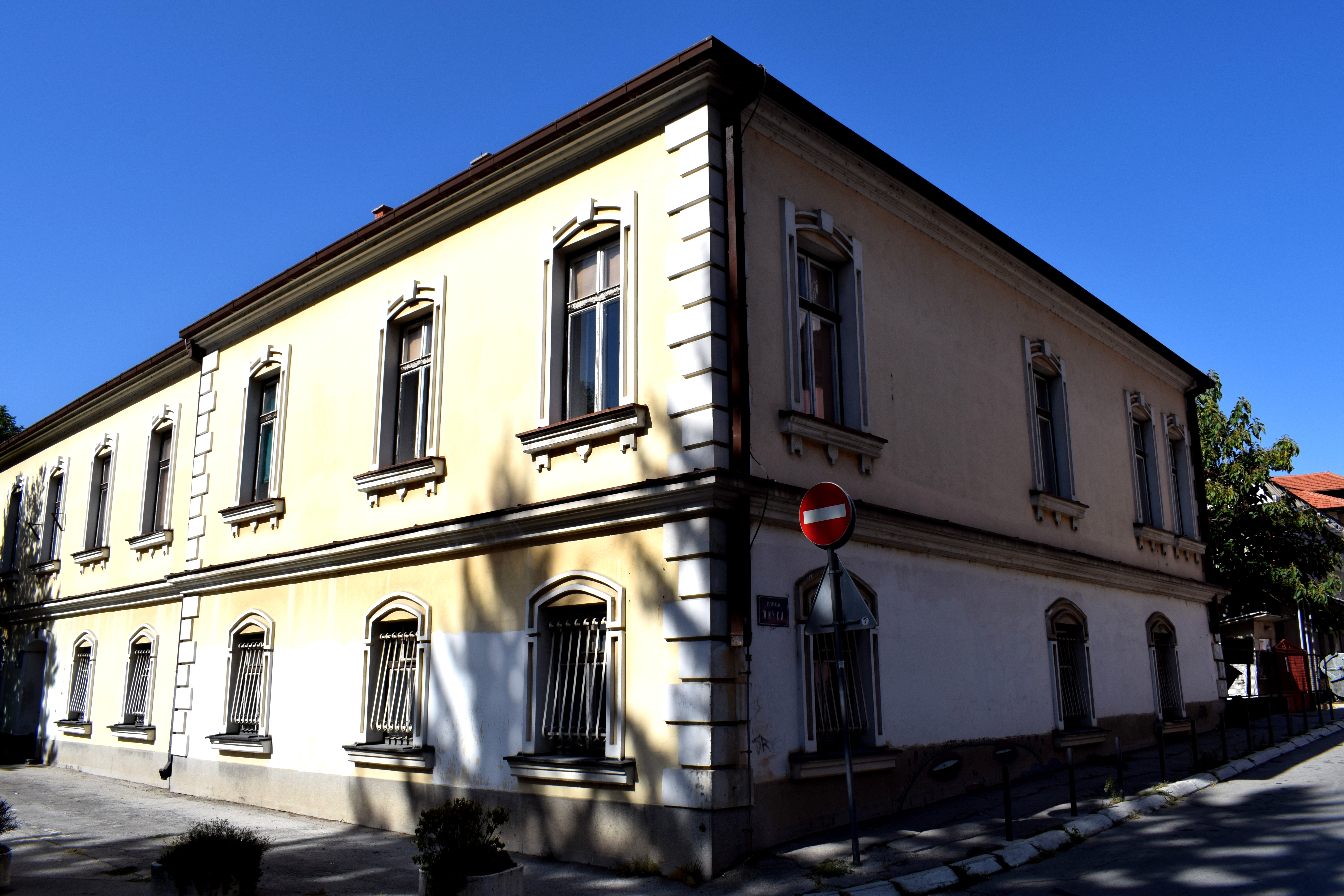 Thankfully the city is trying to preserve these pockets of 19th century buildings. There is an active renovation program underway. The Uzice Grammar School built in 1839 is one of the buildings that has been renovated under the program.
Thankfully the city is trying to preserve these pockets of 19th century buildings. There is an active renovation program underway. The Uzice Grammar School built in 1839 is one of the buildings that has been renovated under the program.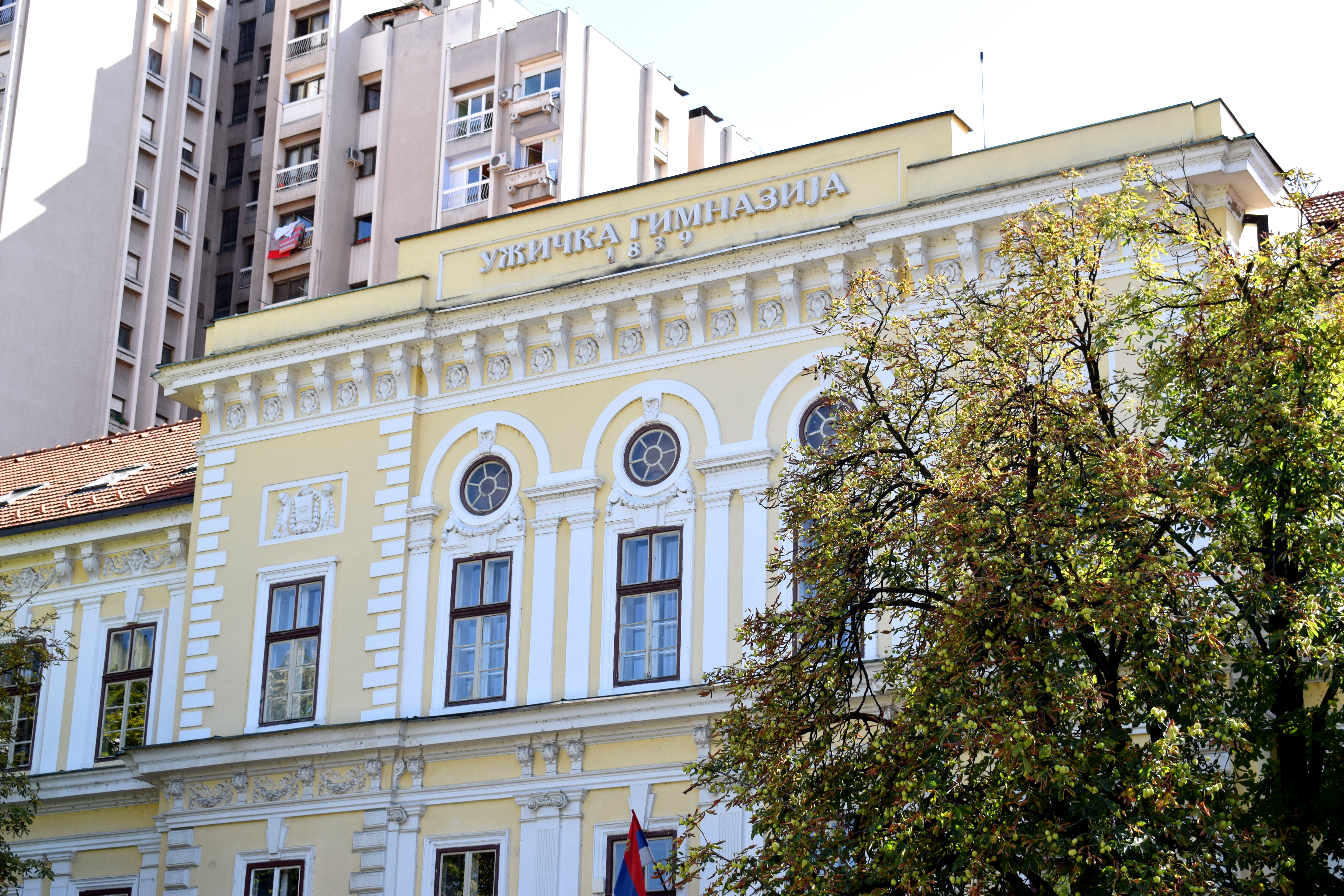 Another is the city council, where the mayor and city parliament are located. Construction began here
Another is the city council, where the mayor and city parliament are located. Construction began here 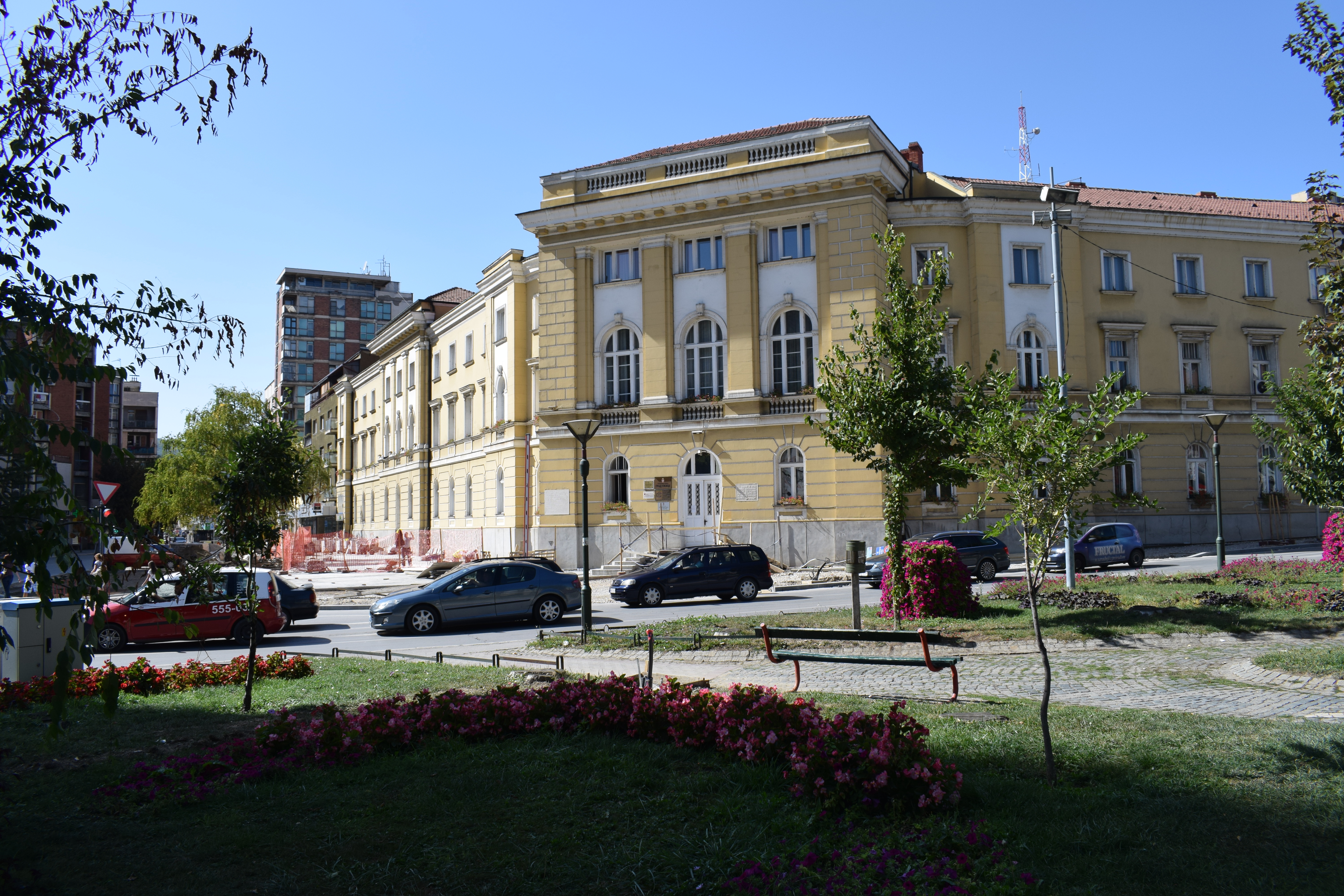
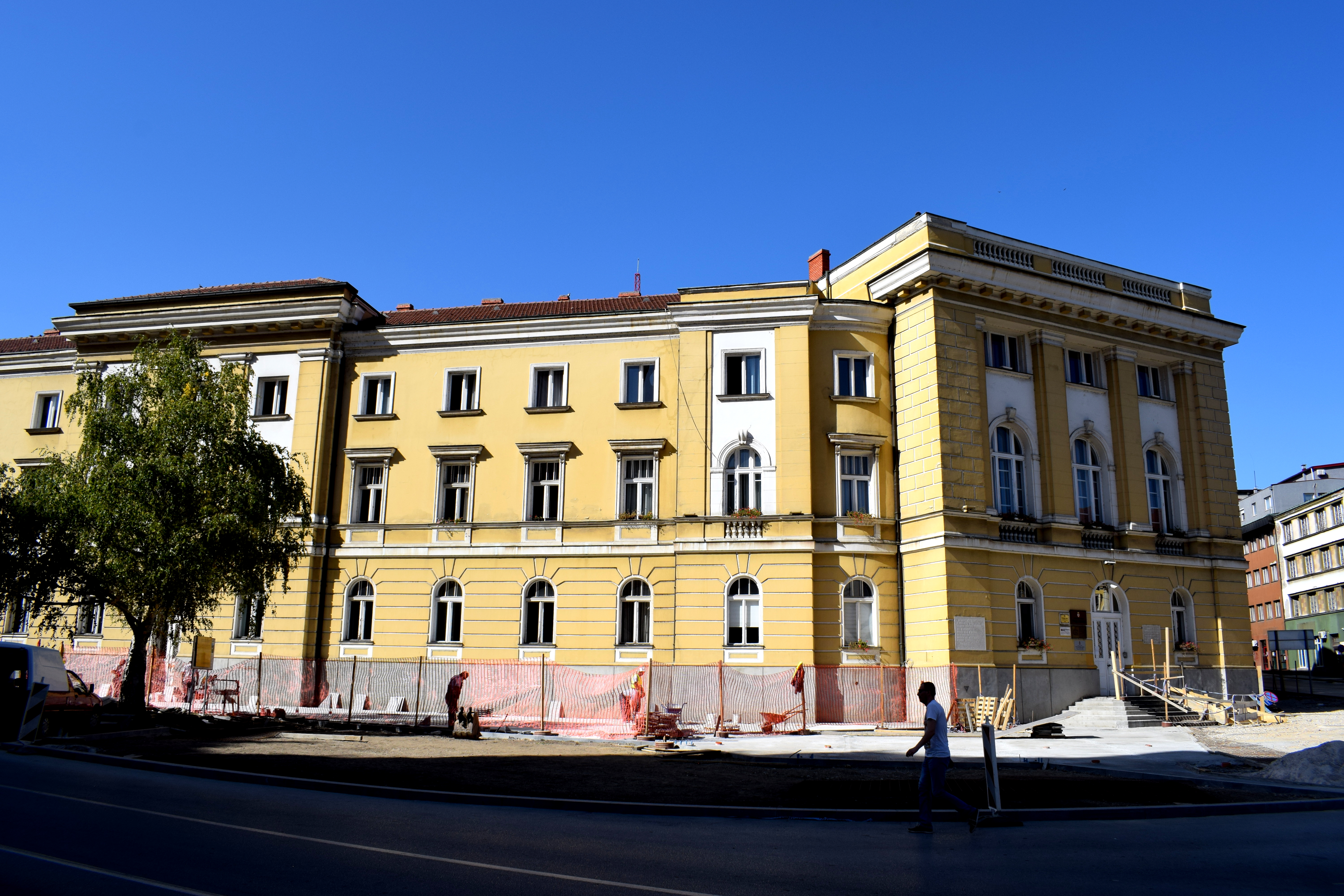 Partisan Square is an example of the city’s socialist architecture. Located in a beautiful section of town with a breathtaking view of the surrounding mountains, this area used to be the heart of Uzice with old 19th century buildings before WWII.
Partisan Square is an example of the city’s socialist architecture. Located in a beautiful section of town with a breathtaking view of the surrounding mountains, this area used to be the heart of Uzice with old 19th century buildings before WWII.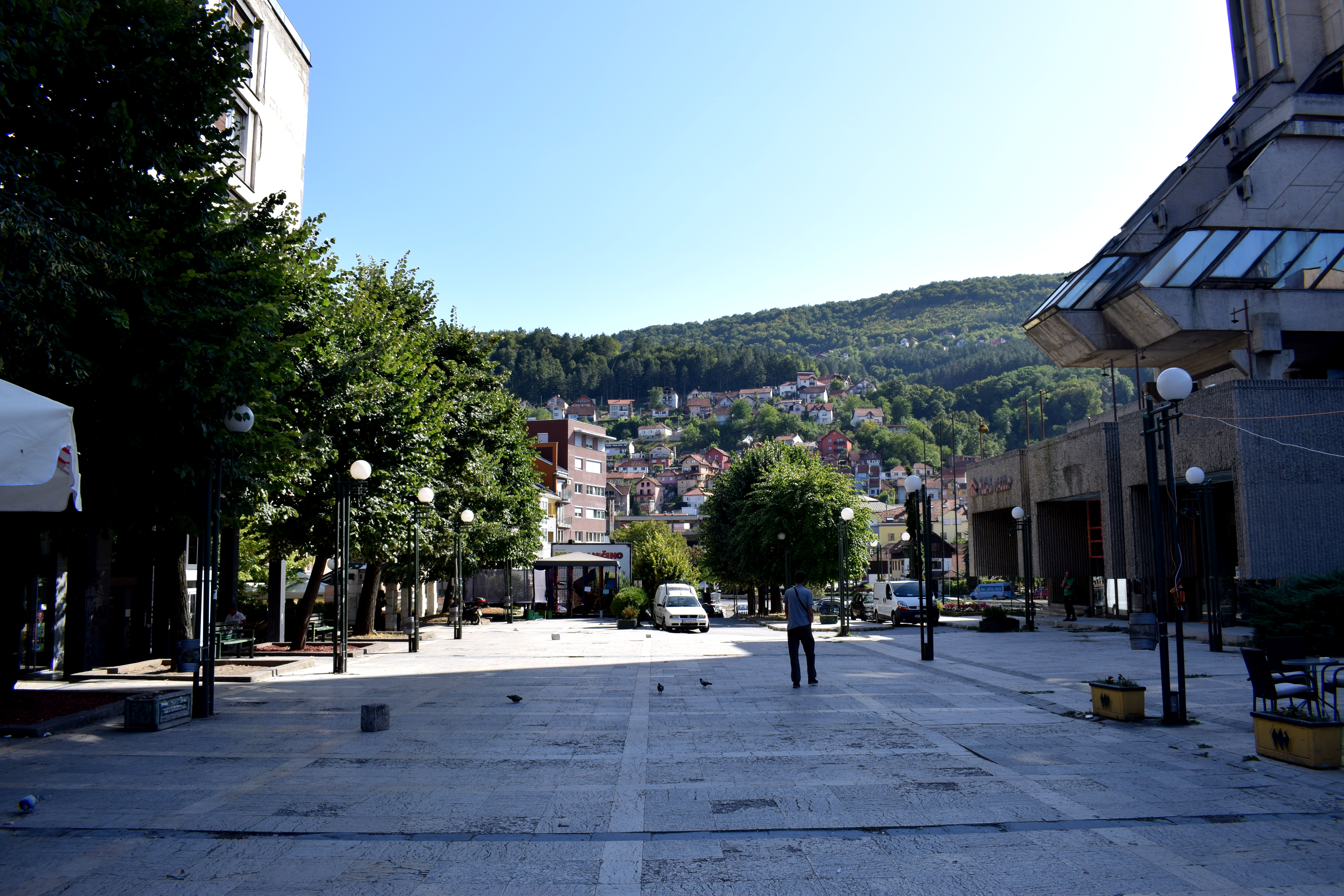 Partisan Square was praised as a shining example of
Partisan Square was praised as a shining example of 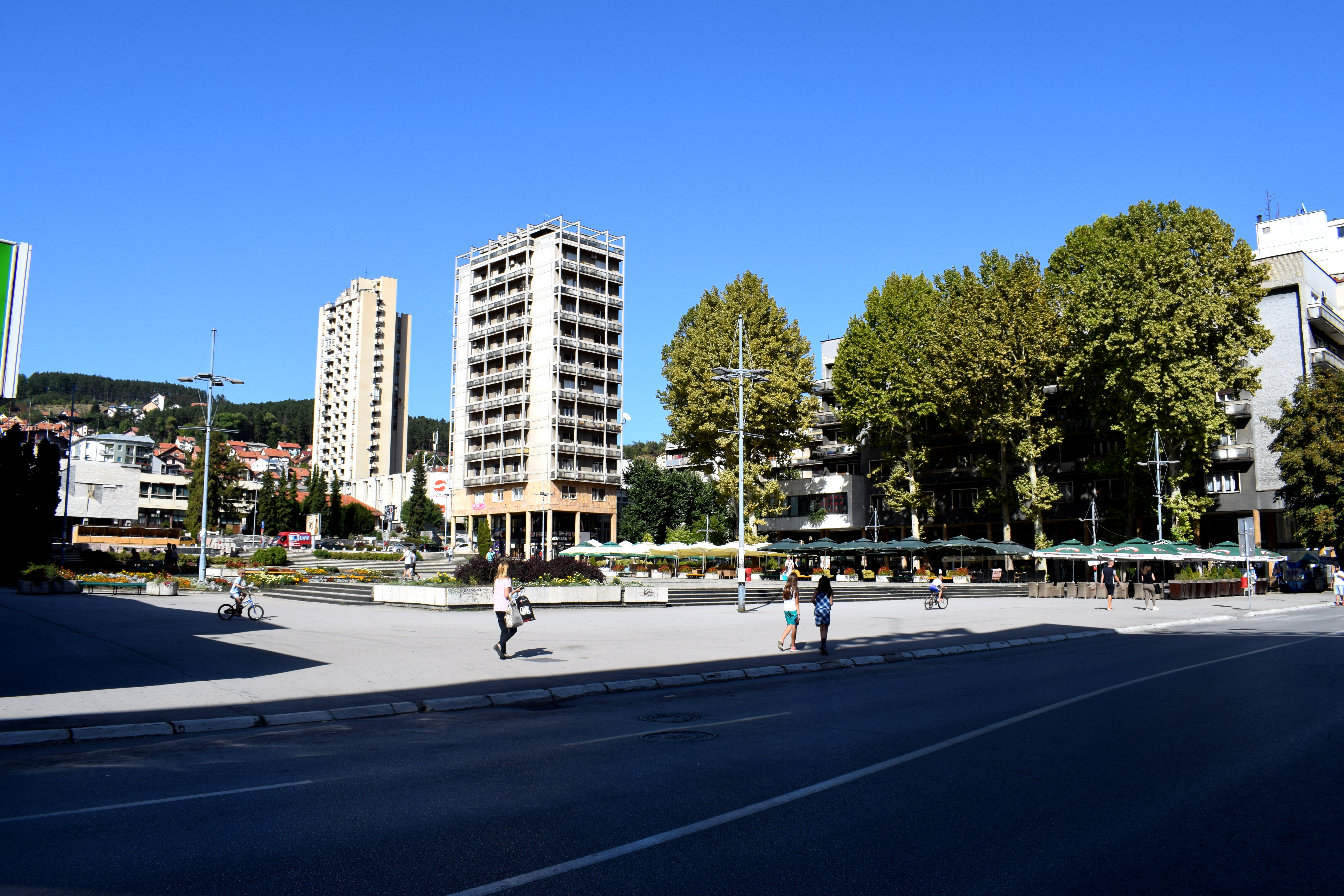 Uzice’s tallest and most notorious building, Hotel Zlatibor, is located on Partisan Square. When it was finally built and opened for guests during the 1980’s it was the pride and honor of Uzice.
Uzice’s tallest and most notorious building, Hotel Zlatibor, is located on Partisan Square. When it was finally built and opened for guests during the 1980’s it was the pride and honor of Uzice.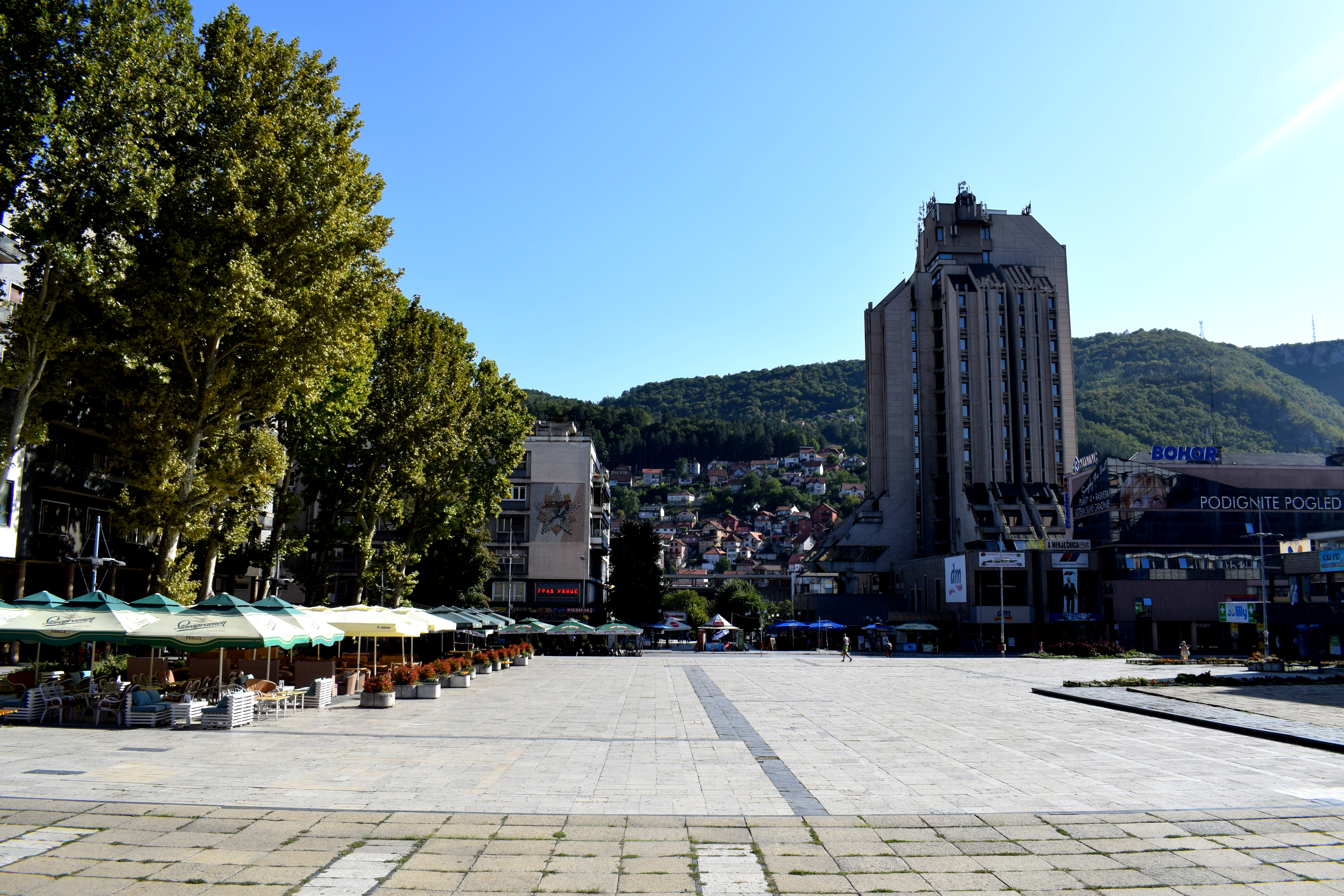 Cafes on Partisan Square.
Cafes on Partisan Square.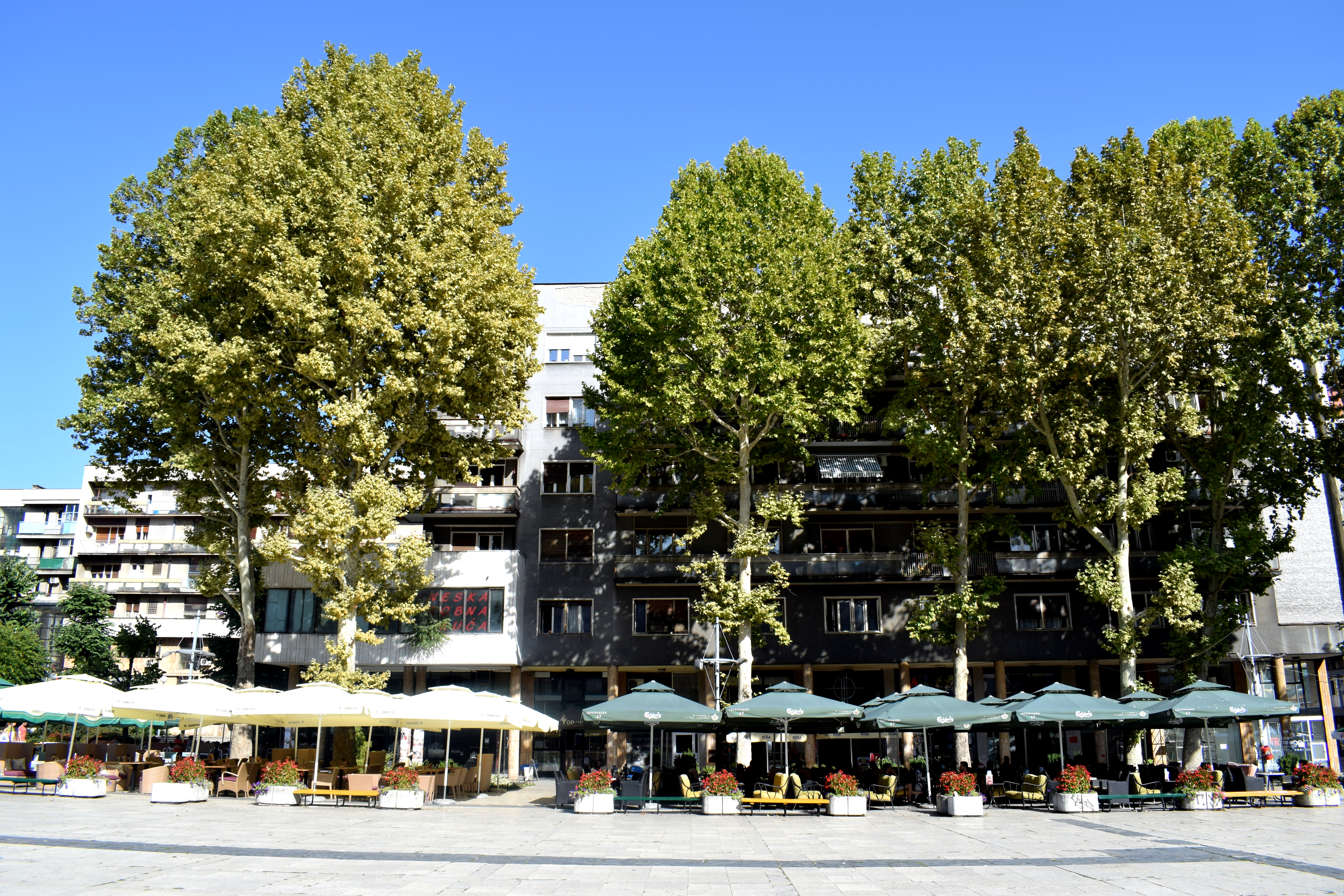 Next to Partisan Square is Dimitri Tucovic Street, the best surviving testament of how Uzice looked before WWII.
Next to Partisan Square is Dimitri Tucovic Street, the best surviving testament of how Uzice looked before WWII.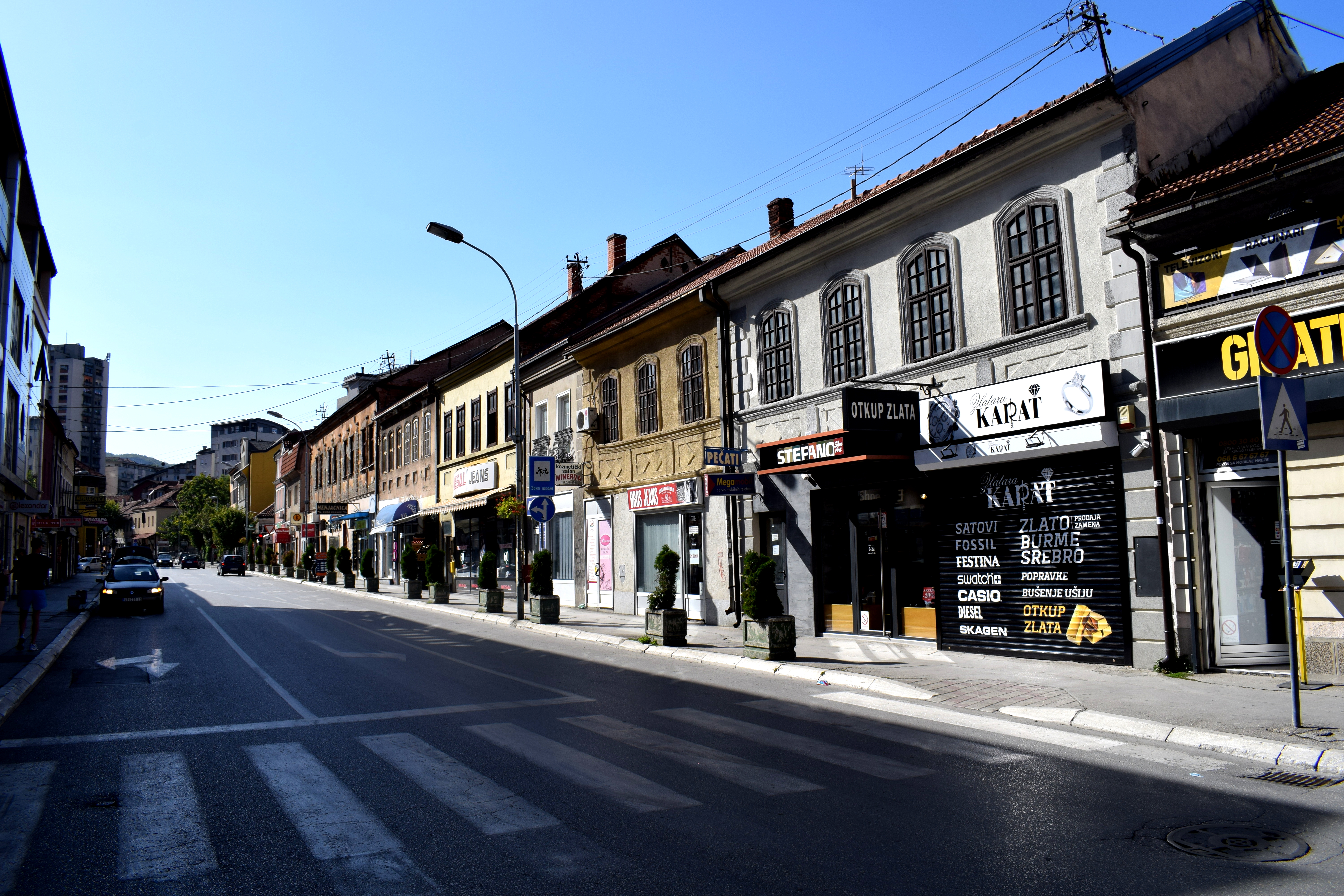 Uzice has a lot of potential to turn this into pedestrian street. A major drawback of Uzice today is that it does not have a central pedestrian street like other cities in the Balkans and Europe. Dimitri Tucovic Street would be a perfect candidate for such a street.
Uzice has a lot of potential to turn this into pedestrian street. A major drawback of Uzice today is that it does not have a central pedestrian street like other cities in the Balkans and Europe. Dimitri Tucovic Street would be a perfect candidate for such a street.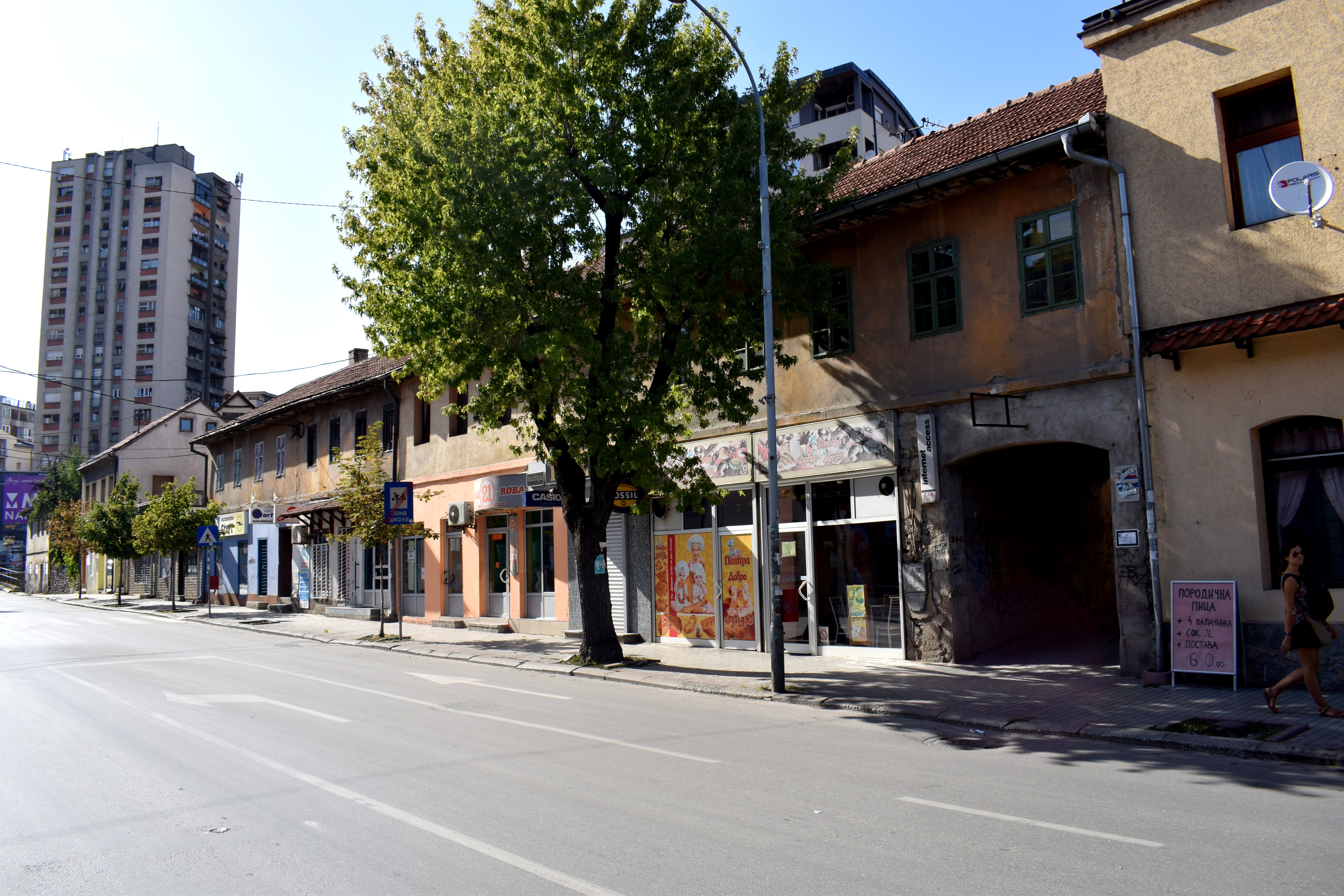 Some of the buildings on Dimitri Tucovic Street are in need of renovation. But the city has recognized this problem and announced plans to
Some of the buildings on Dimitri Tucovic Street are in need of renovation. But the city has recognized this problem and announced plans to 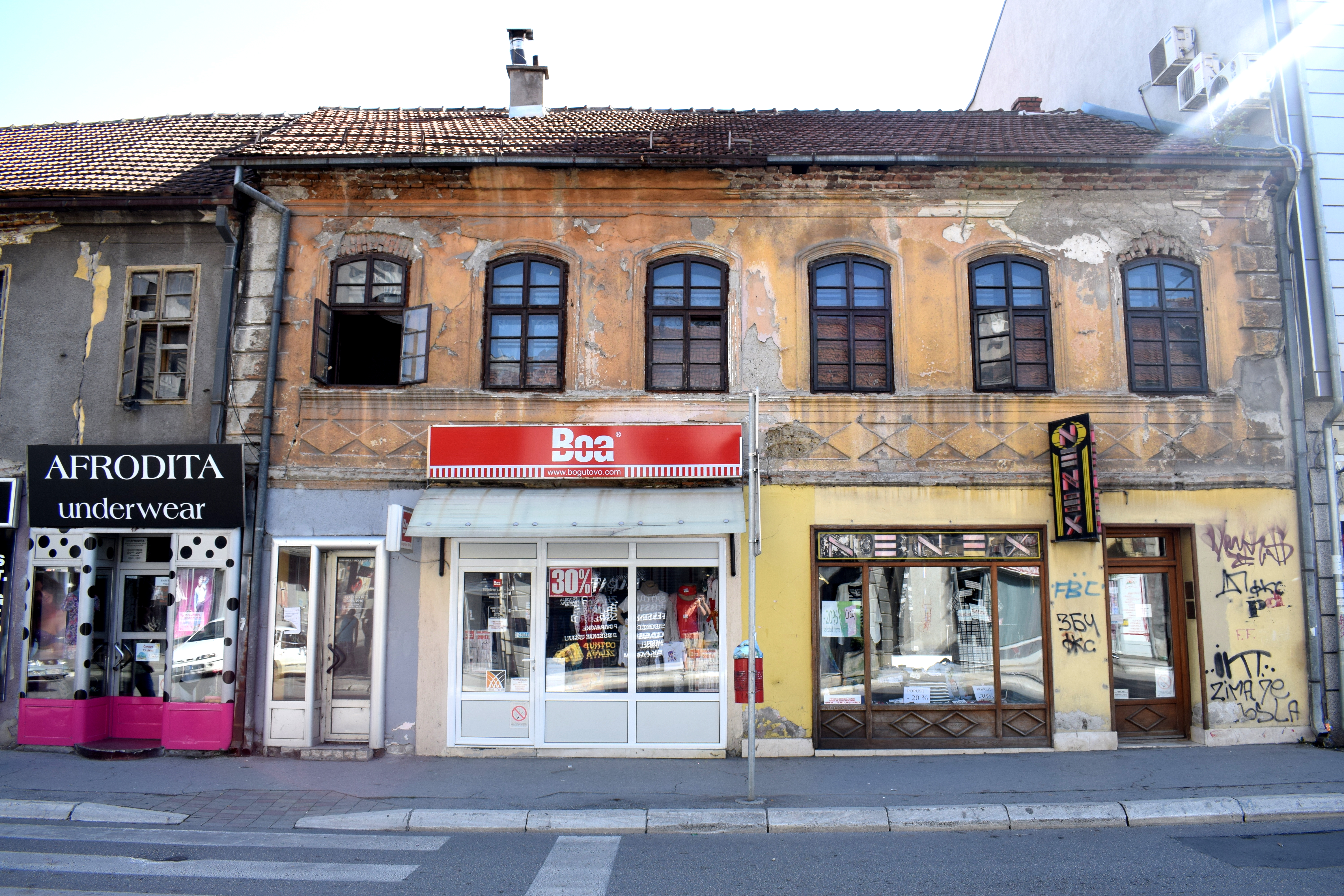 An example of a recently renovated section.
An example of a recently renovated section.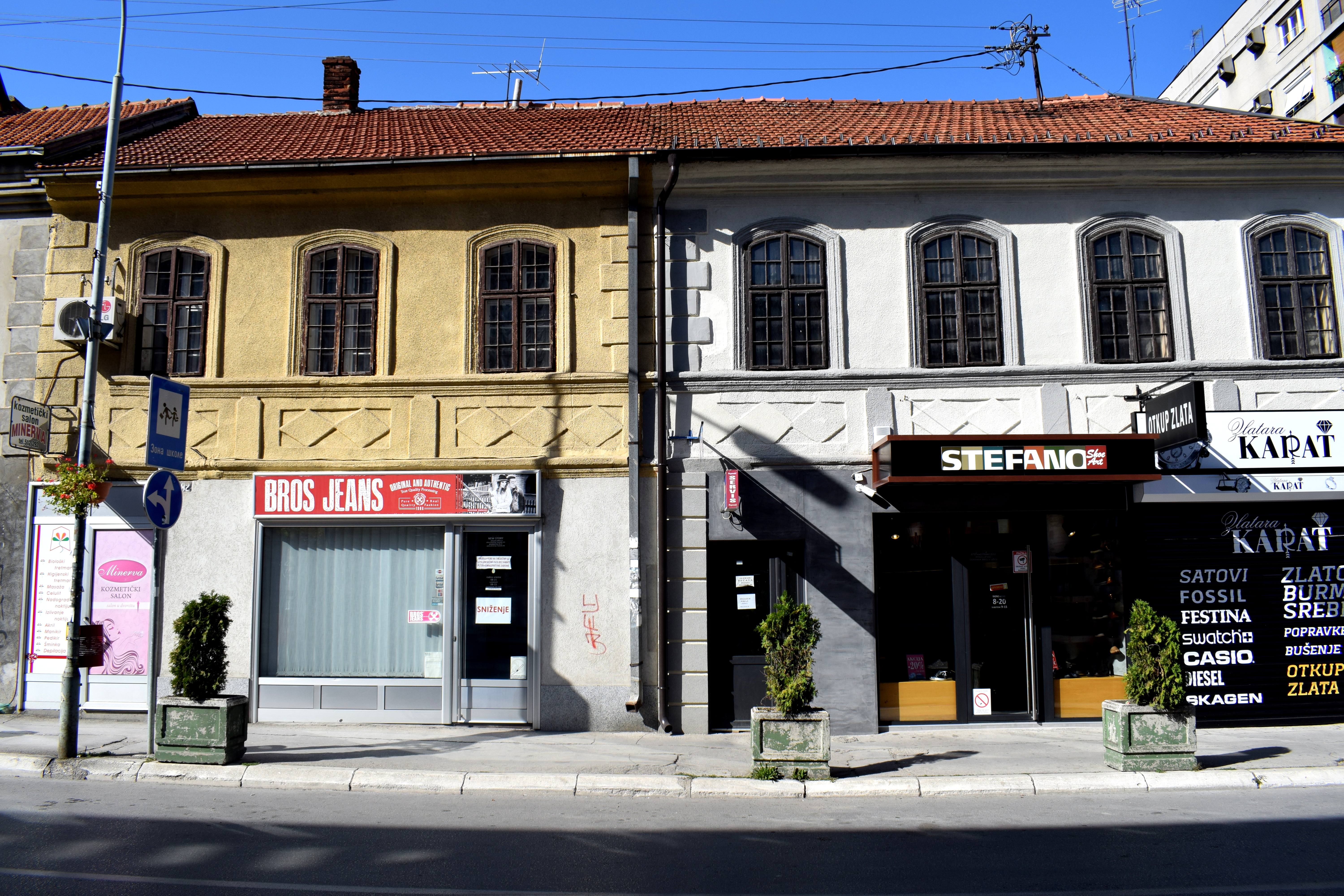 Dimitri Tucovic Street could be transformed into a smaller version of
Dimitri Tucovic Street could be transformed into a smaller version of 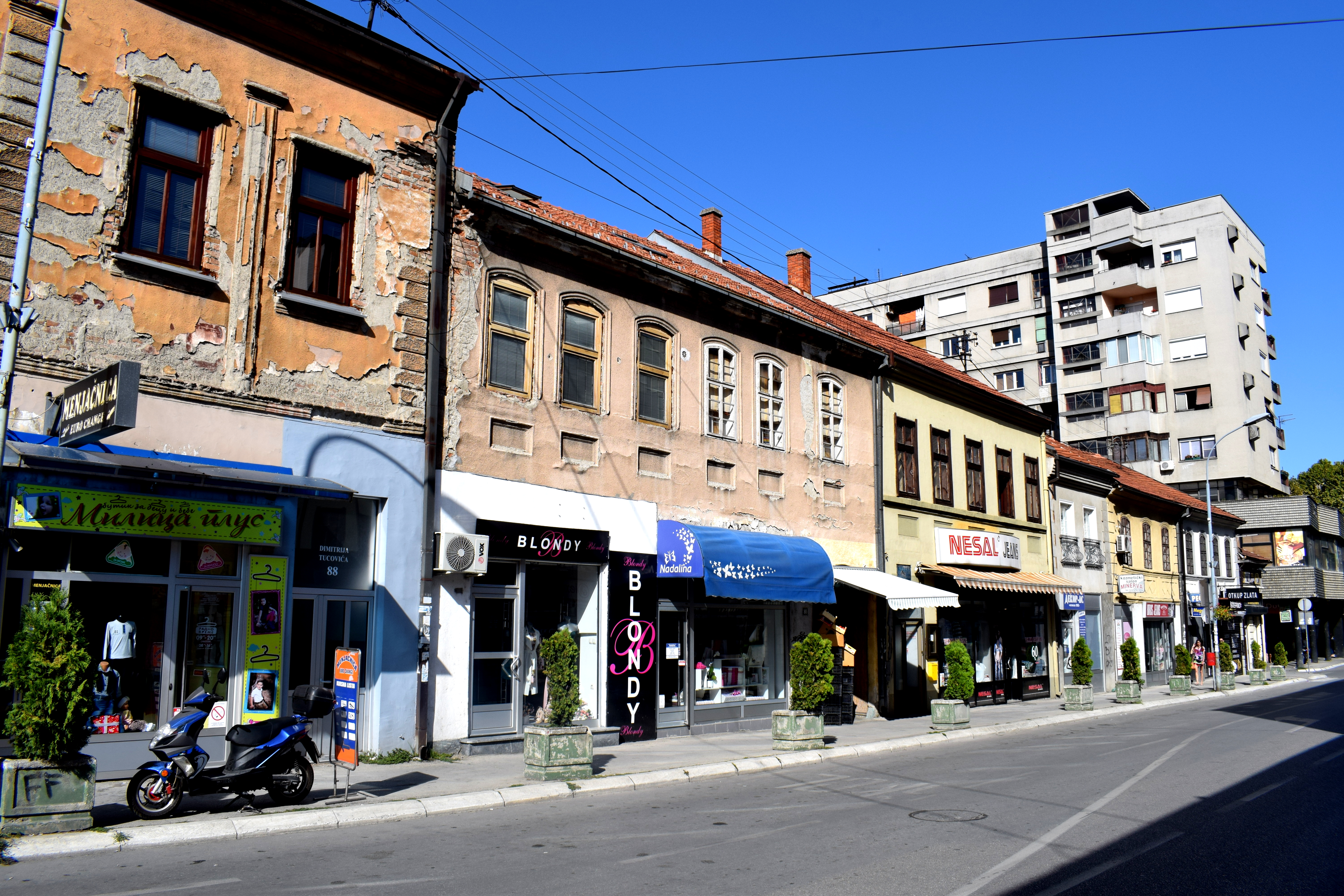 One of the oldest
One of the oldest  Some more buildings on the street.
Some more buildings on the street.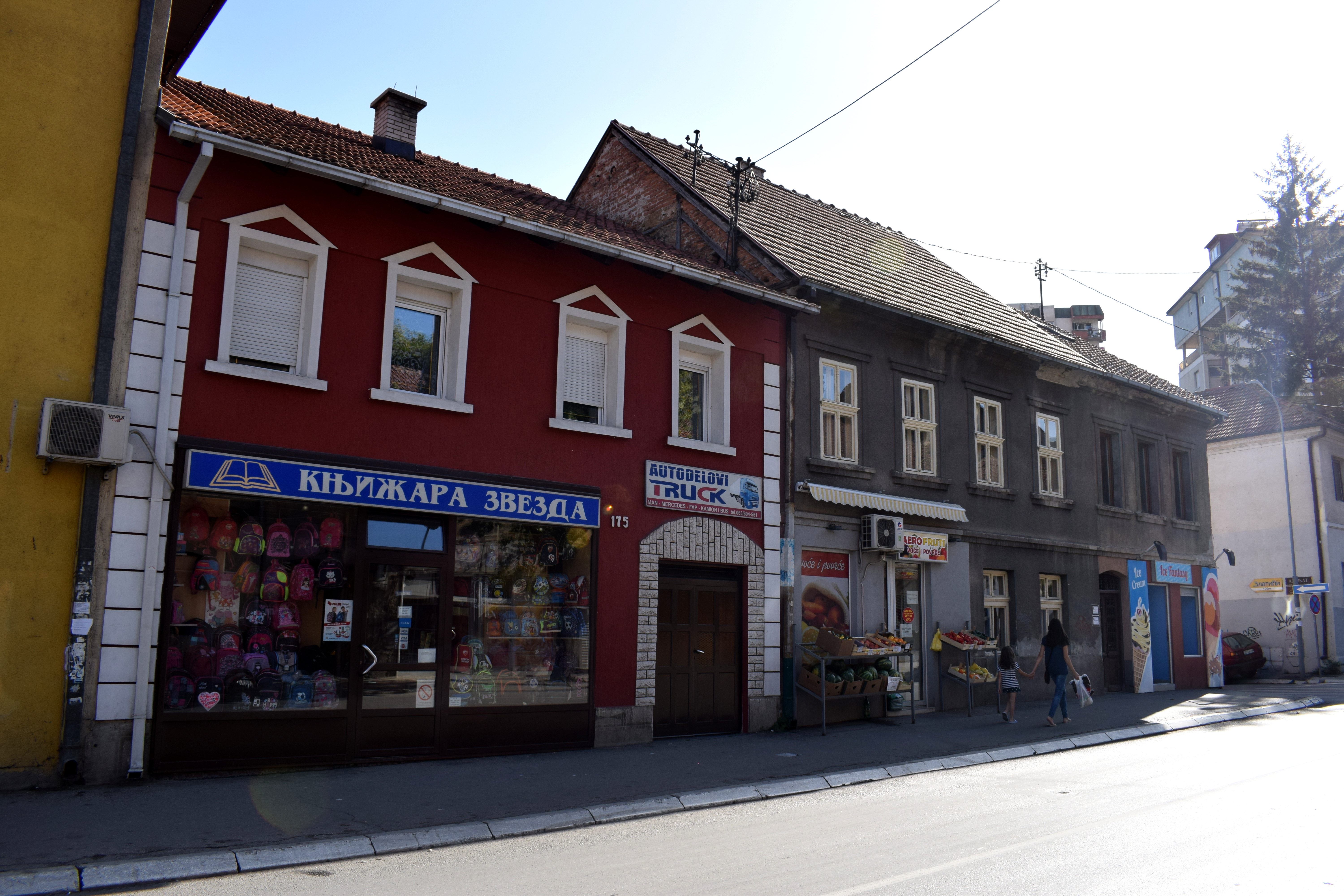 Private homes in the city center.
Private homes in the city center.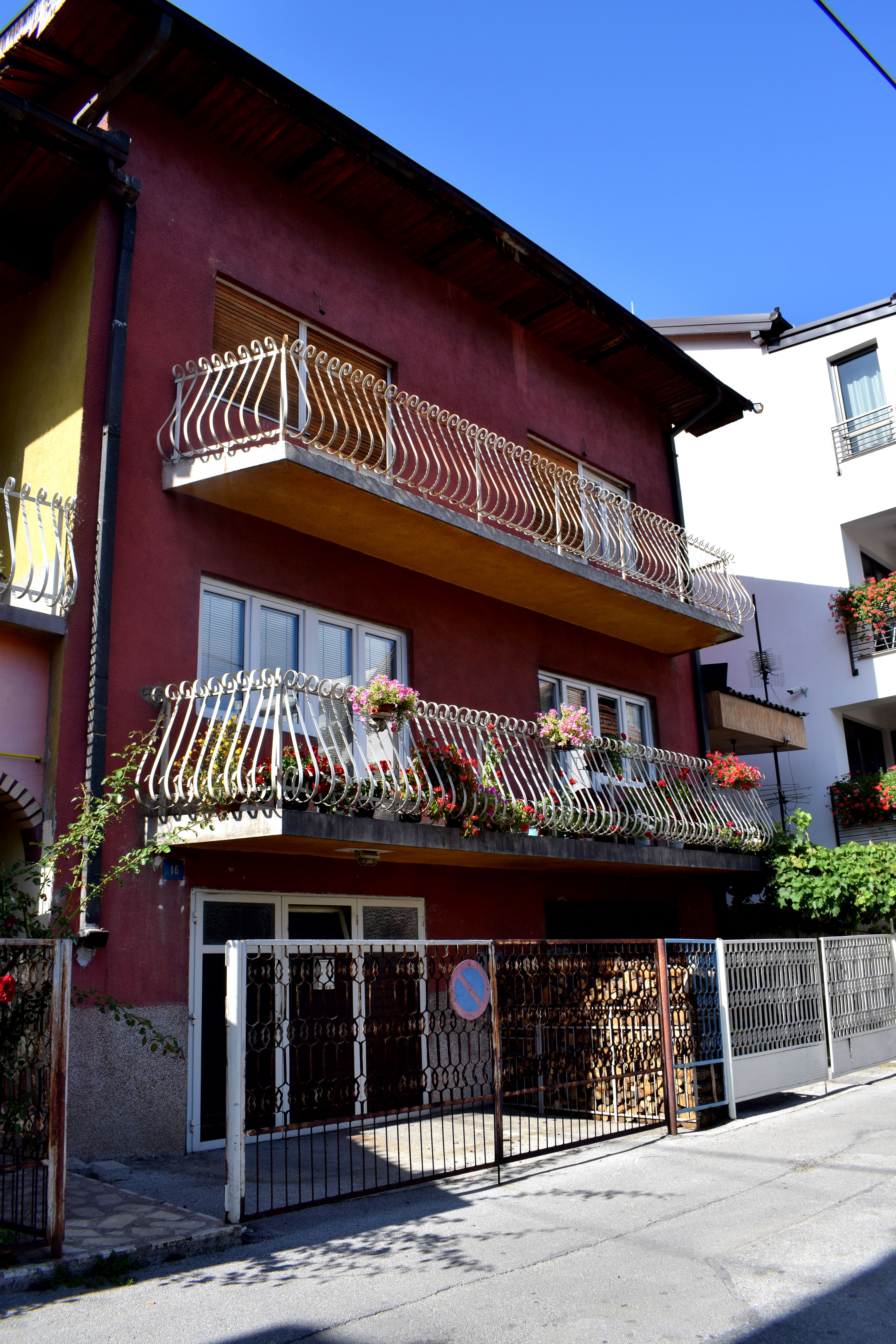 Apartments and homes in Uzice typically cost
Apartments and homes in Uzice typically cost 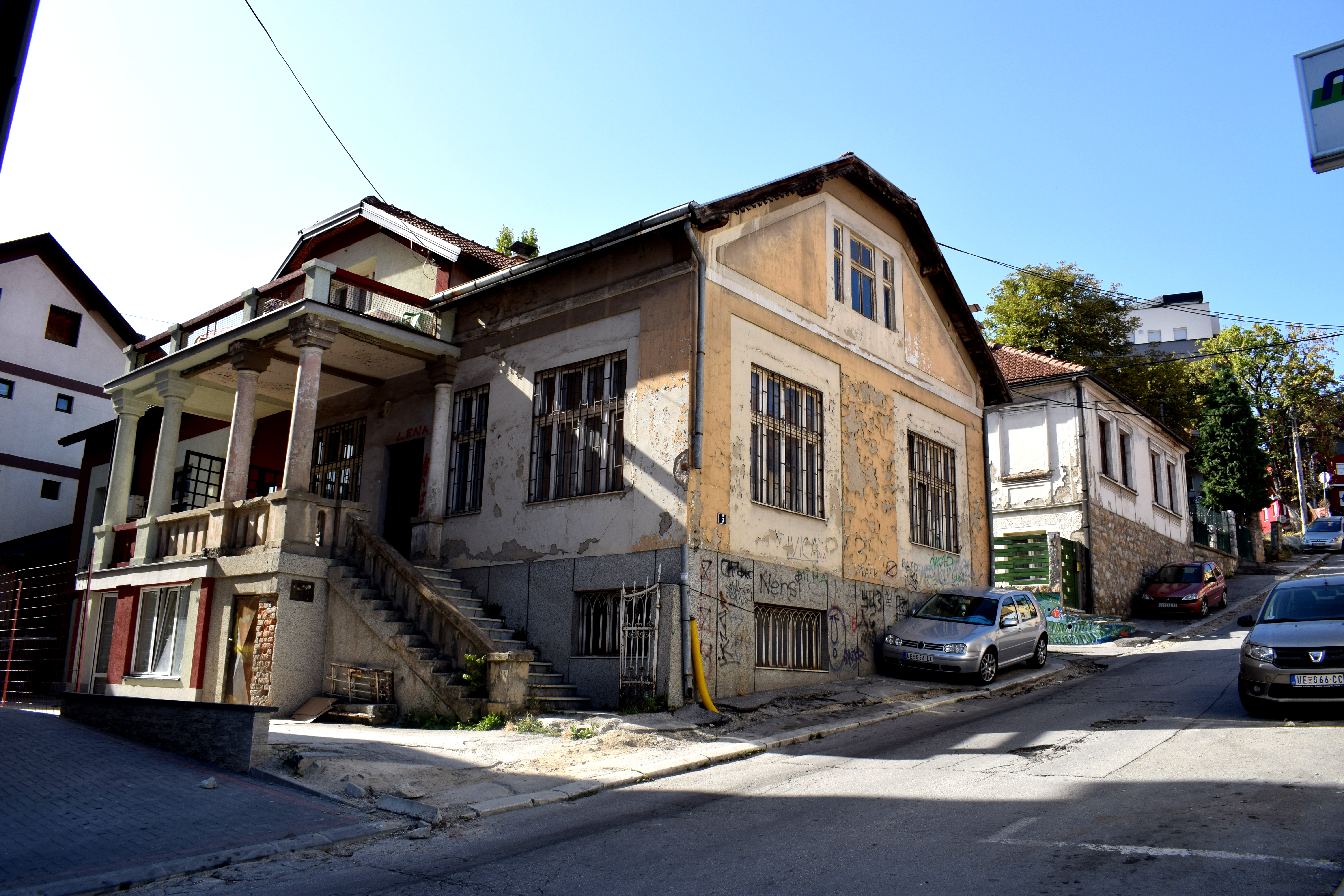 Buildings in Uzice often have the year they were built engraved on the outside. This building is 117 years old and has managed to survive two world wars to still stand today.
Buildings in Uzice often have the year they were built engraved on the outside. This building is 117 years old and has managed to survive two world wars to still stand today.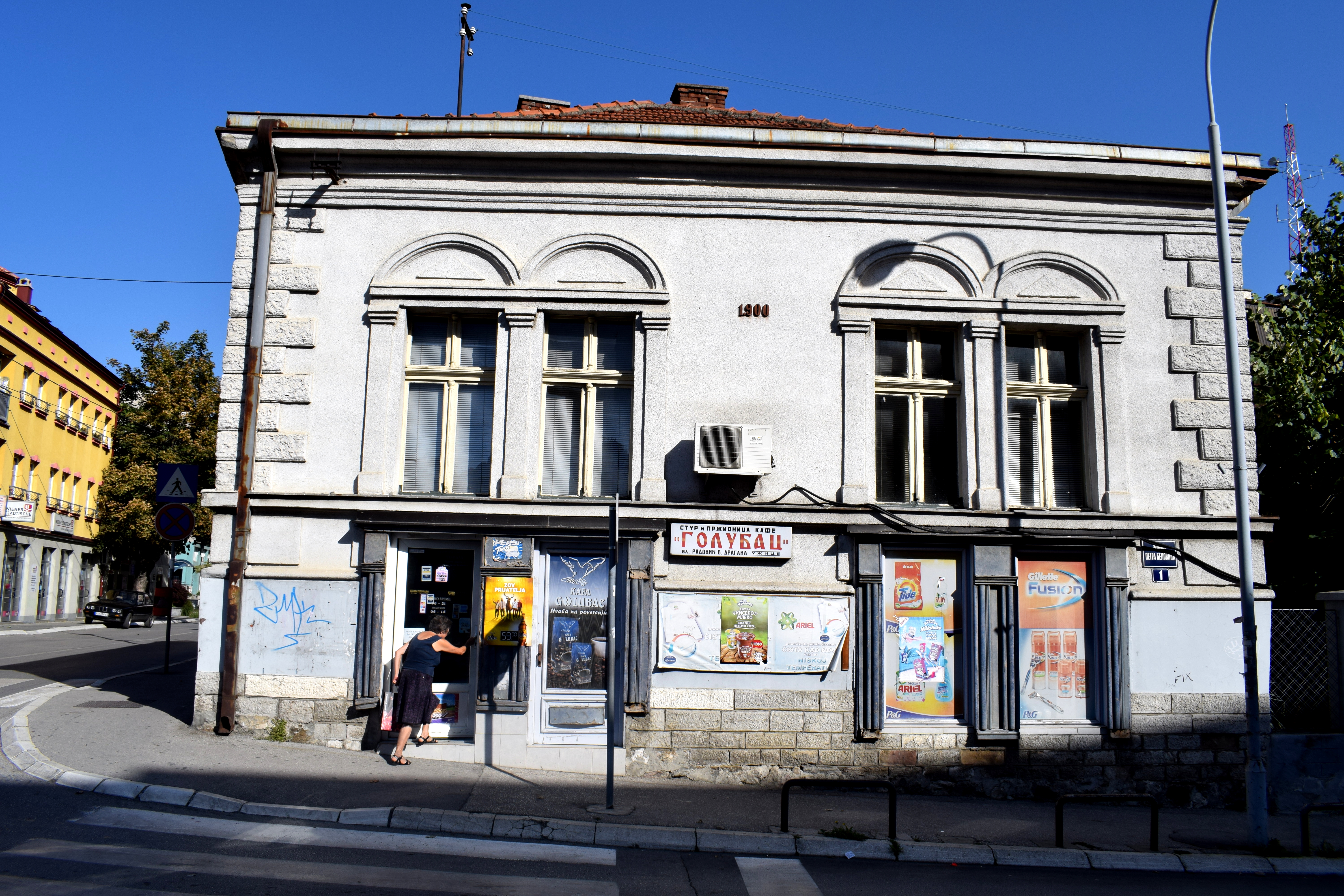 Now to the food. Uzice is famous for a meal that is unique to the city alone: Komplet Lepinja. Rarely found in other areas of the Balkans, it consists of freshly baked white bread stuffed with eggs, butter and kajmak, a form of dairy that tastes like a mix between sour cream and cottage cheese. It’s then all baked together fresh in an oven. The result is a week’s worth of fat in one meal.
Now to the food. Uzice is famous for a meal that is unique to the city alone: Komplet Lepinja. Rarely found in other areas of the Balkans, it consists of freshly baked white bread stuffed with eggs, butter and kajmak, a form of dairy that tastes like a mix between sour cream and cottage cheese. It’s then all baked together fresh in an oven. The result is a week’s worth of fat in one meal.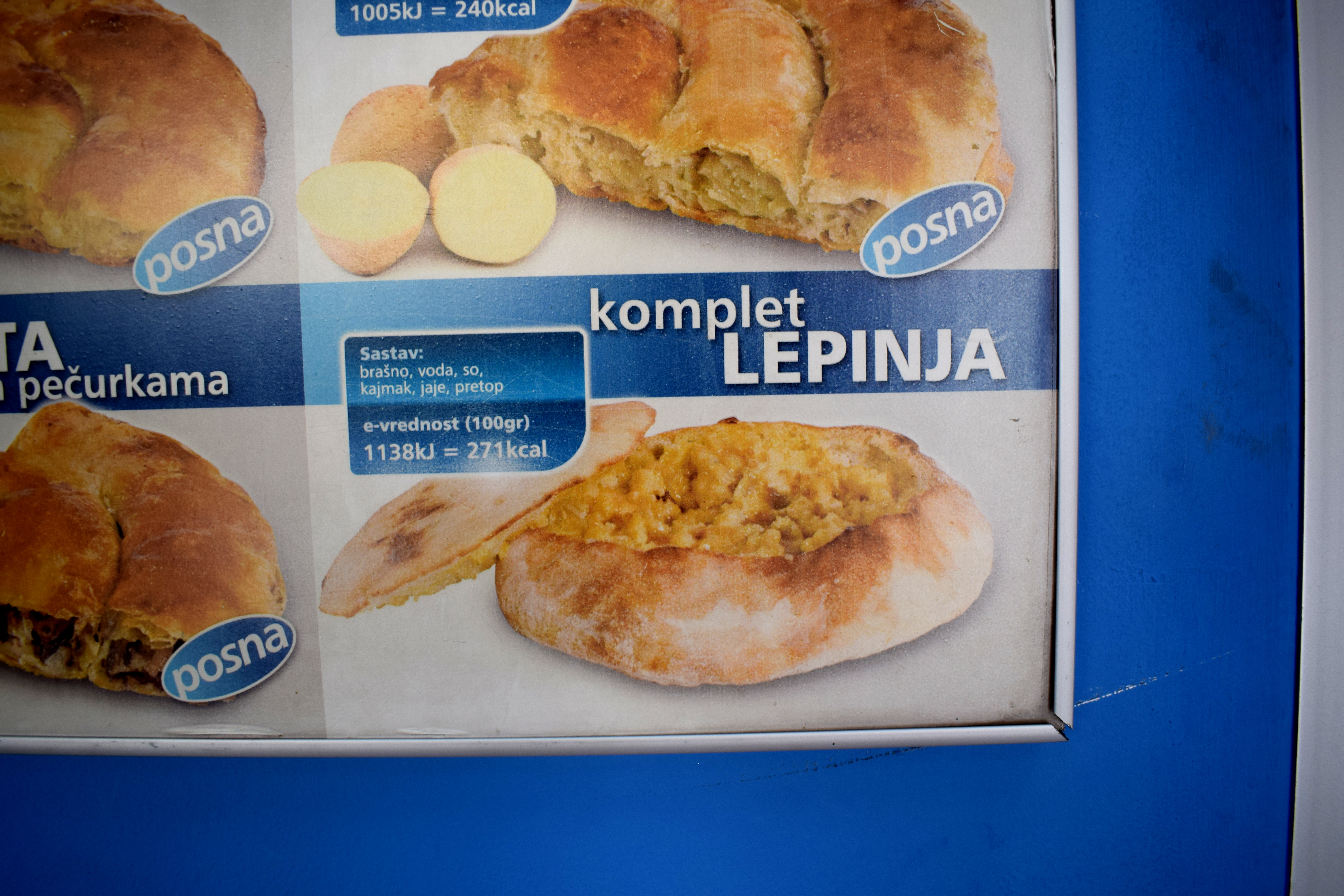 Don’t expect to eat this for lunch and have a productive afternoon in the office.
Don’t expect to eat this for lunch and have a productive afternoon in the office.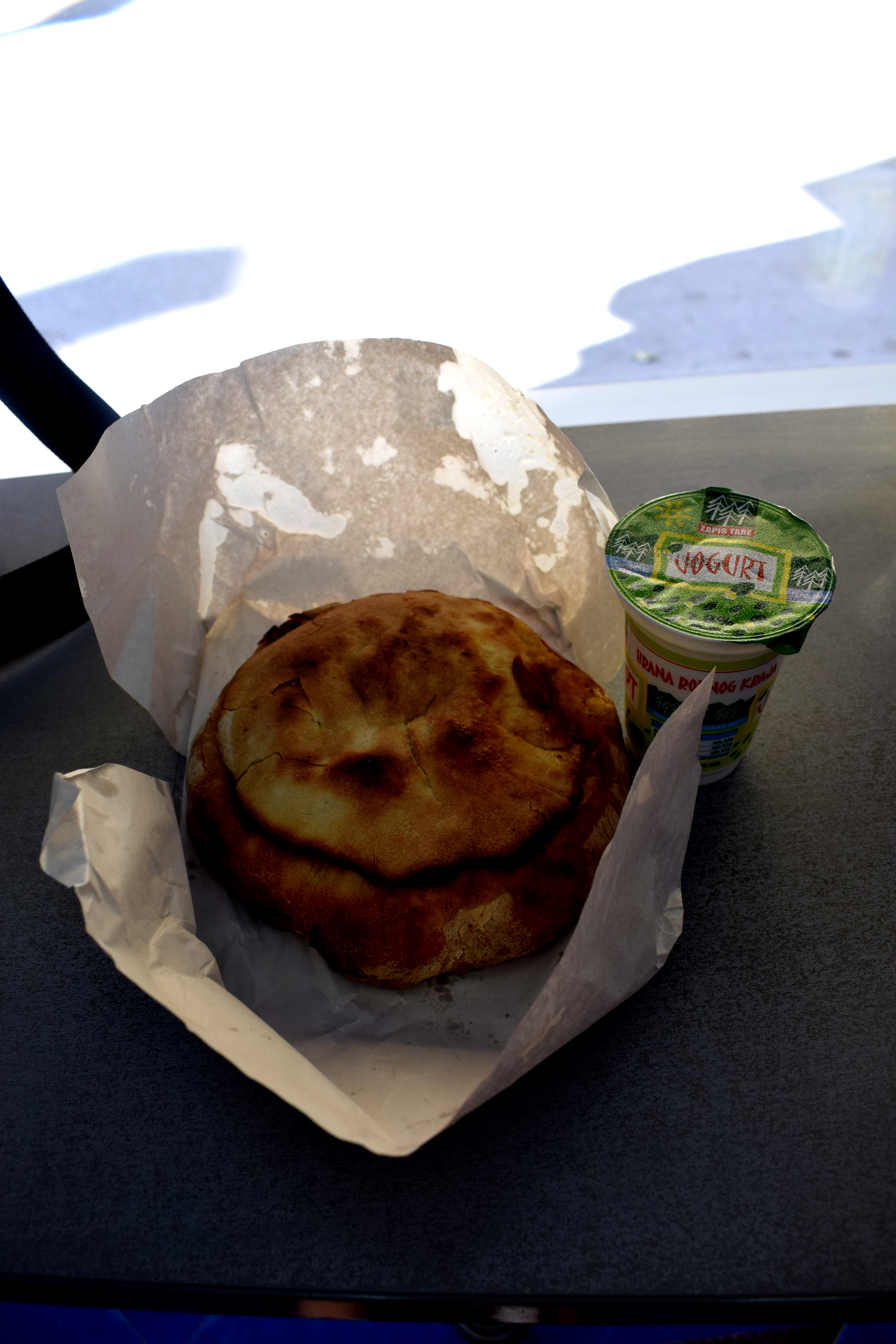 If you prefer not to clog your arteries, there are plenty of fruits and vegetables on sale around the city for very reasonable prices.
If you prefer not to clog your arteries, there are plenty of fruits and vegetables on sale around the city for very reasonable prices.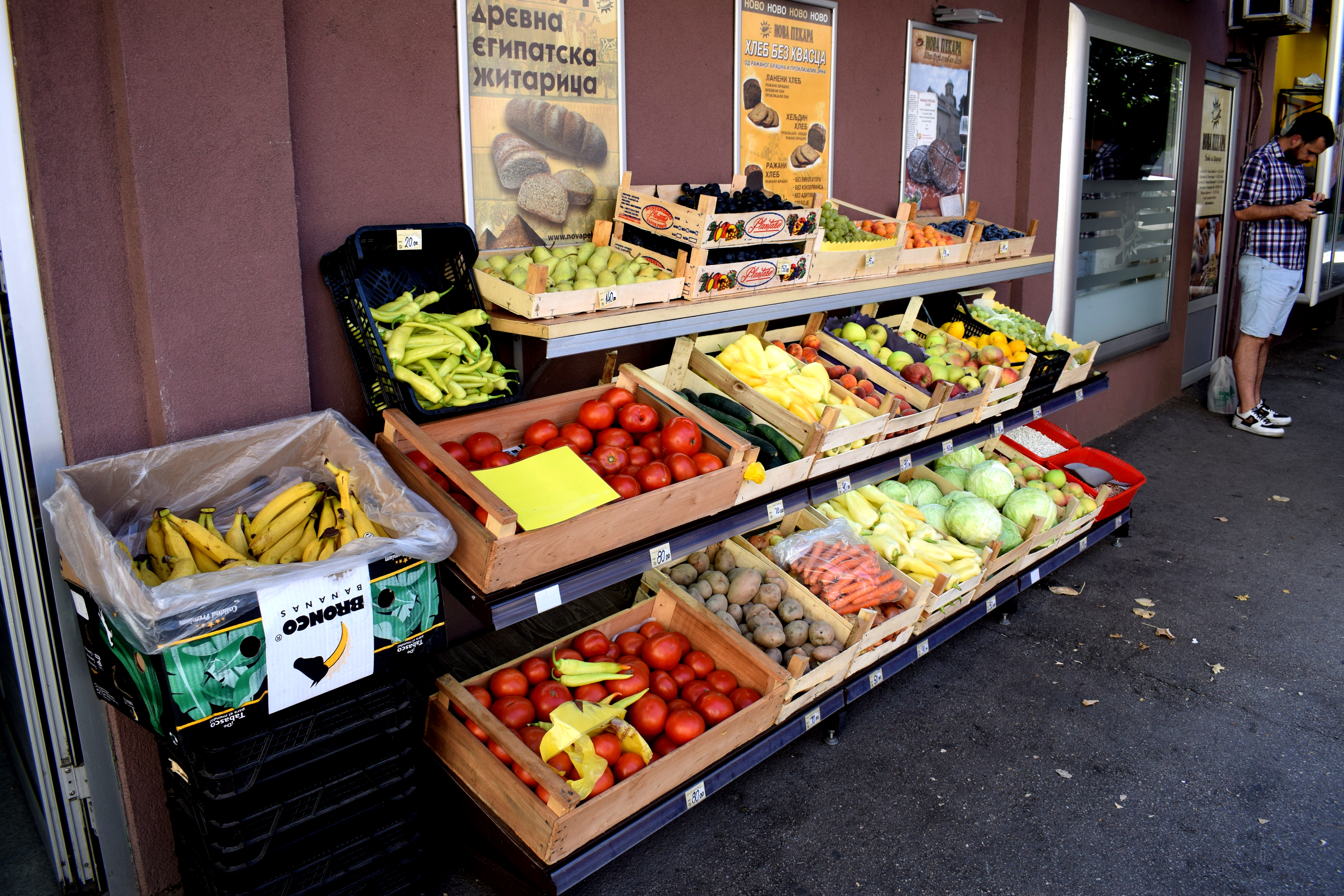 One of my favorite things about Uzice are the small one or two story homes with red tiled roofs contrasted with green mountains in the background.
One of my favorite things about Uzice are the small one or two story homes with red tiled roofs contrasted with green mountains in the background.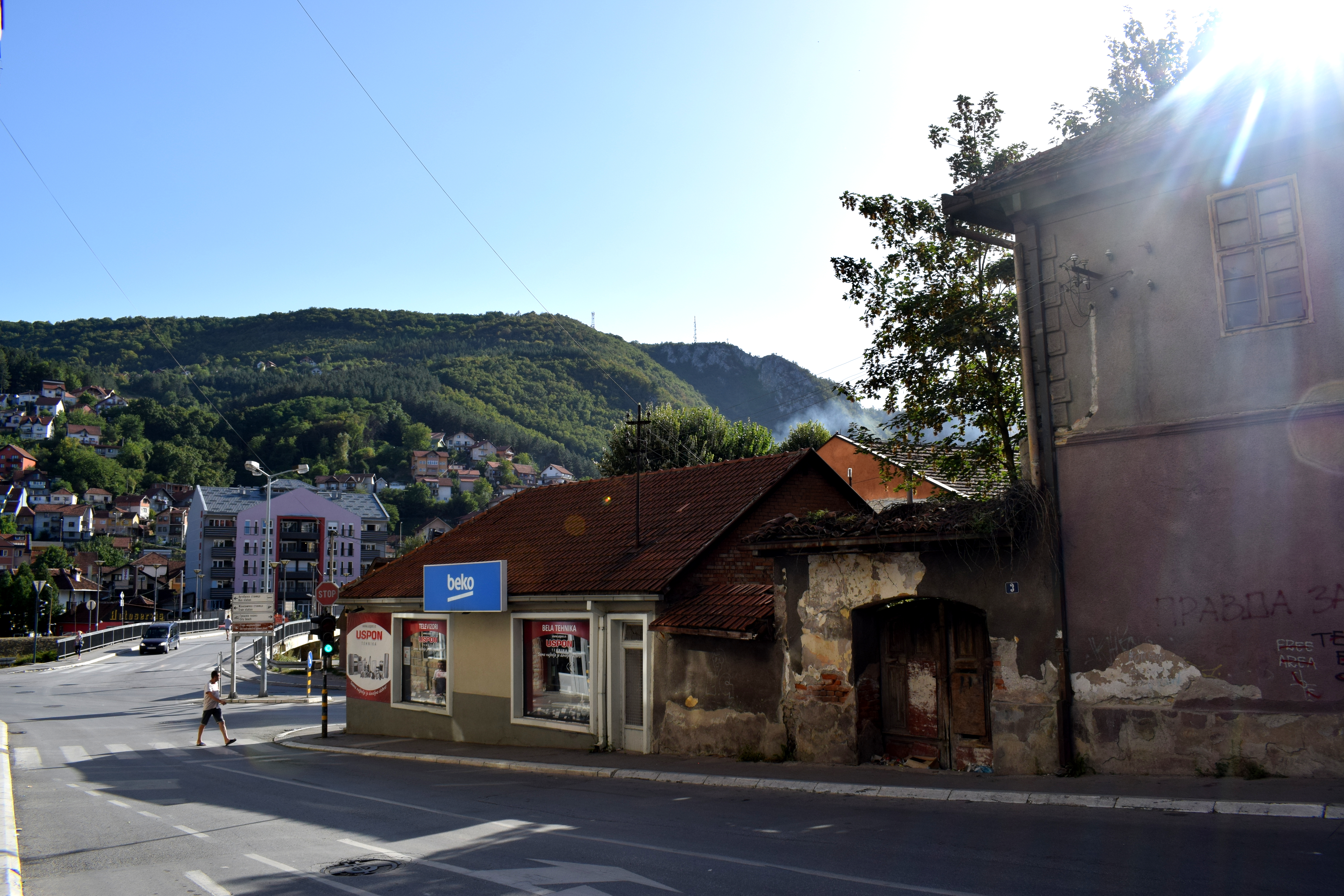 Lots of Serbs own country houses in the surrounding mountains and on the weekends to get away from cities to enjoy the countryside.
Lots of Serbs own country houses in the surrounding mountains and on the weekends to get away from cities to enjoy the countryside.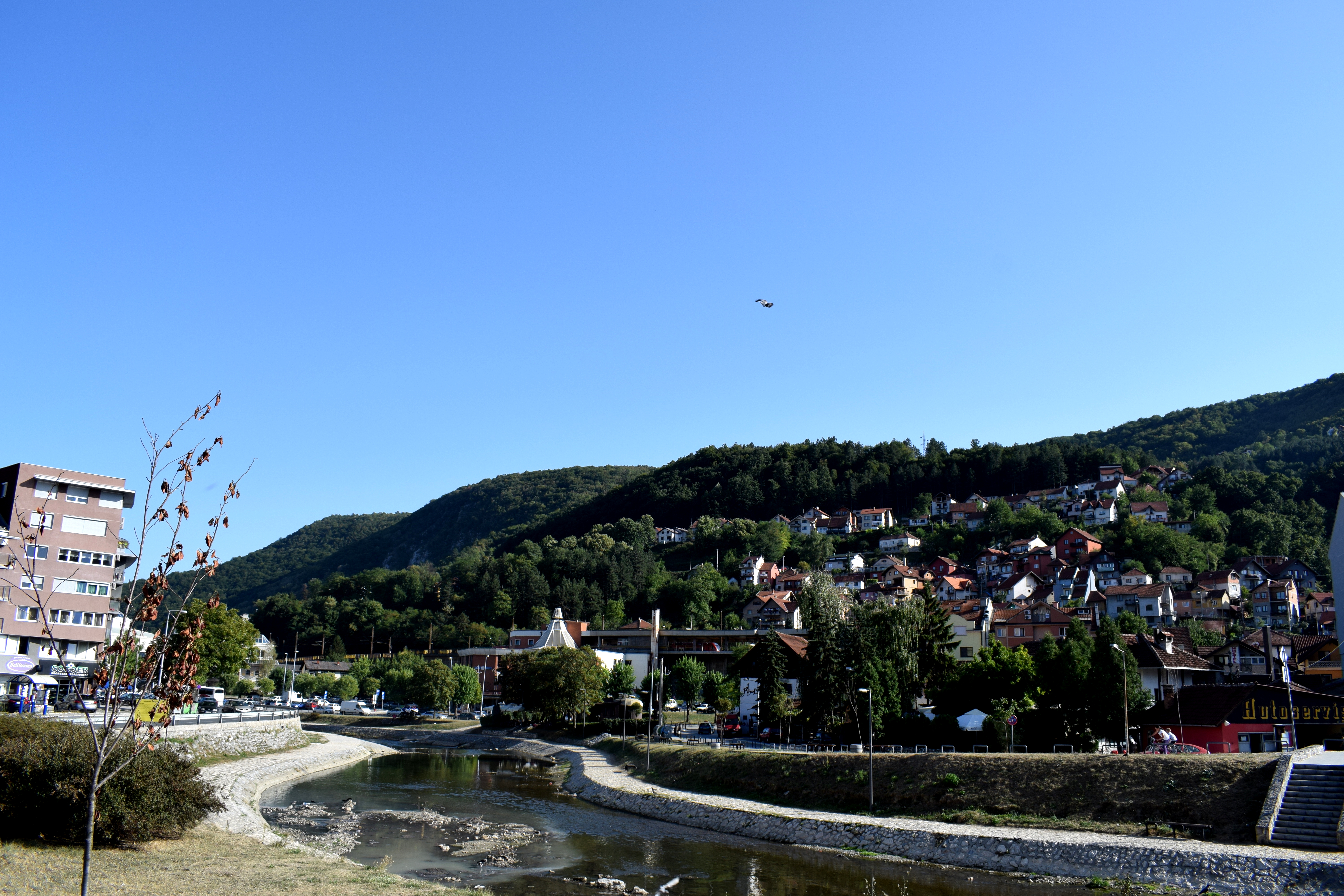 Some local street art.
Some local street art.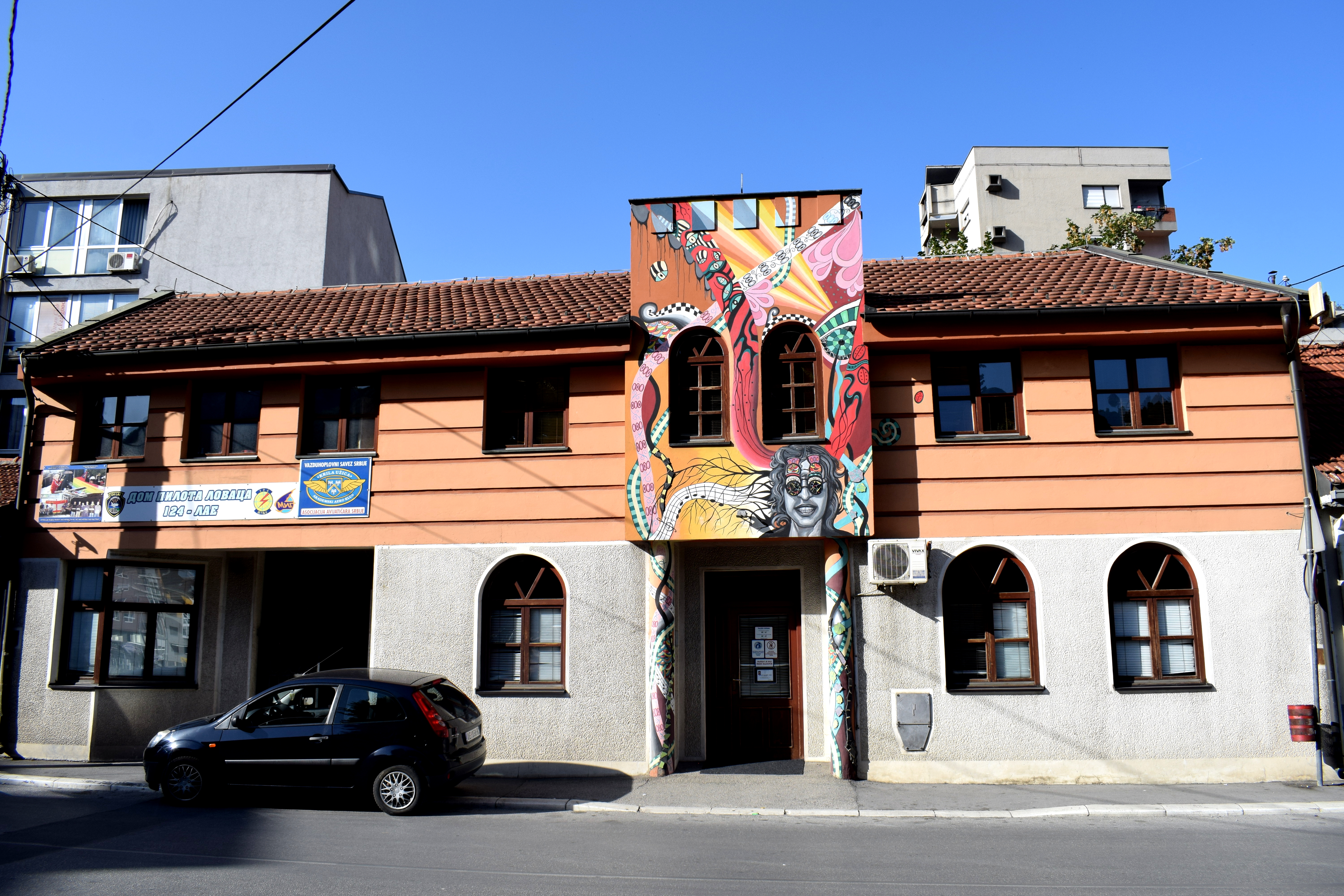
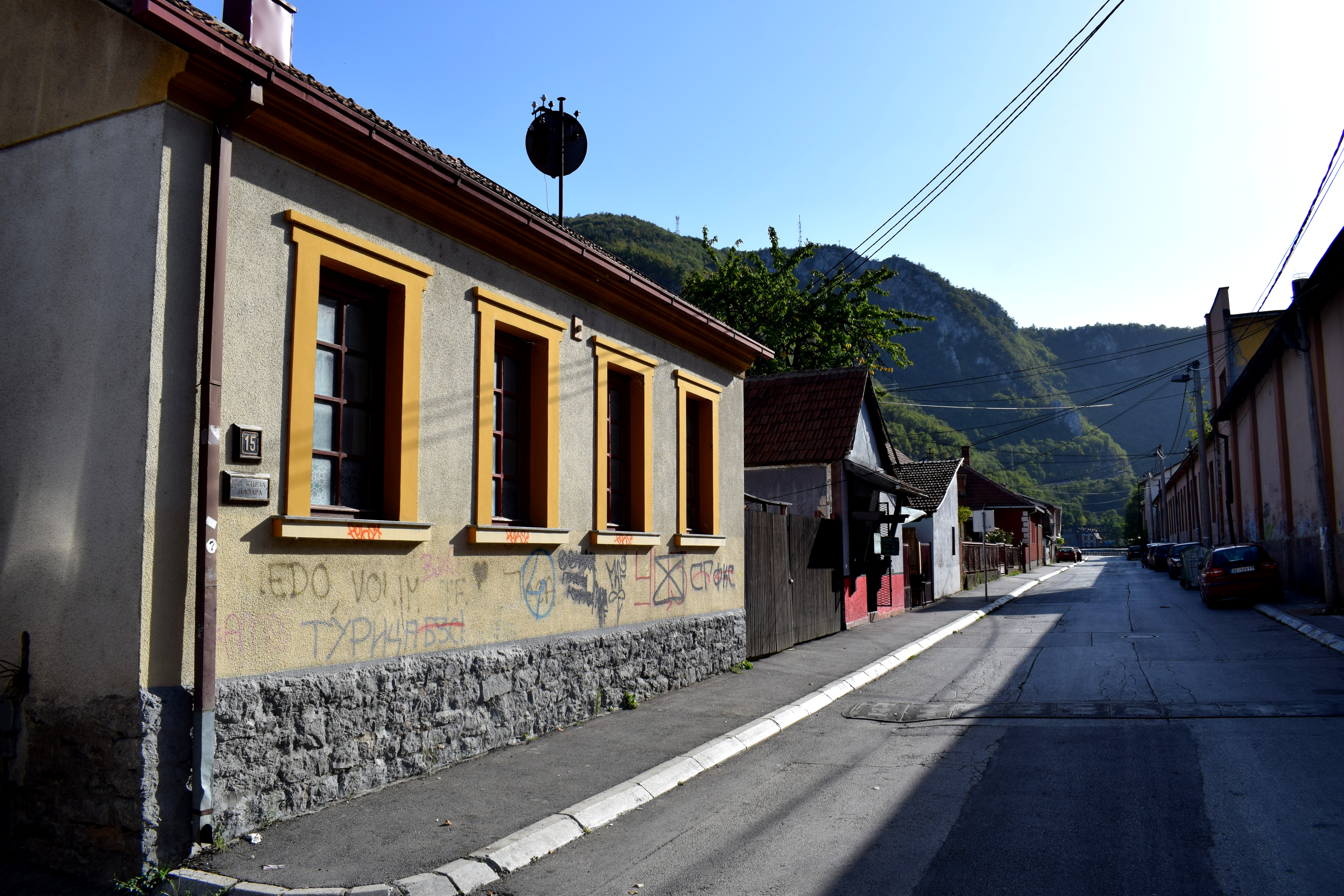 Uzice was the first city in the Balkans and one of the first cities in Europe to build a hydroelectric dam. The Uzice Hydroelectric Dam was built in 1900 based on designs by the famous Serbian inventor Nikola Tesla.
Uzice was the first city in the Balkans and one of the first cities in Europe to build a hydroelectric dam. The Uzice Hydroelectric Dam was built in 1900 based on designs by the famous Serbian inventor Nikola Tesla.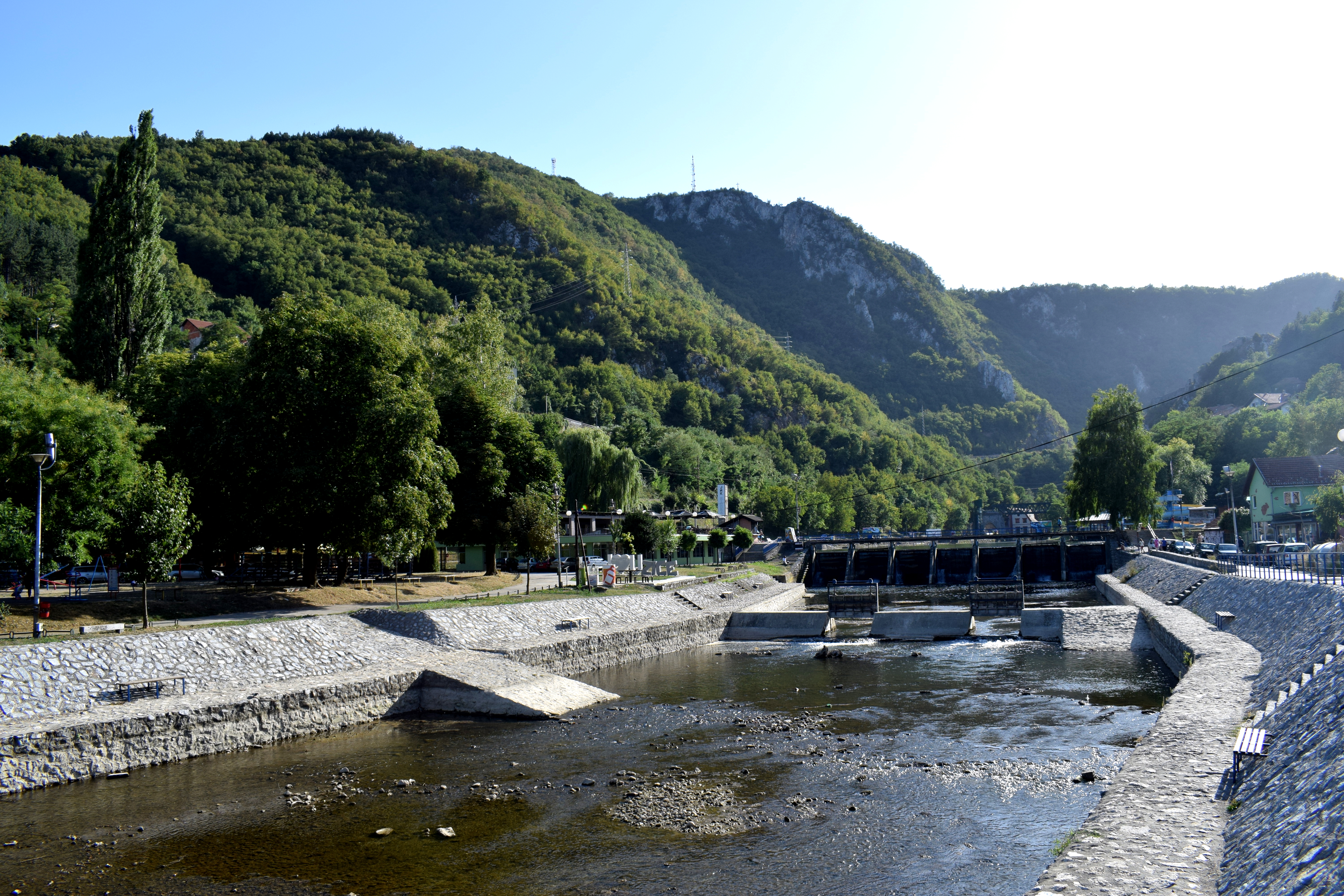 Today a lot of outdoor and sports activities take place around the dam. There are parks for kids to play in, basketball courts, tennis courts, a swimming pool, cycling lanes, even an urban beach for swimming.
Today a lot of outdoor and sports activities take place around the dam. There are parks for kids to play in, basketball courts, tennis courts, a swimming pool, cycling lanes, even an urban beach for swimming.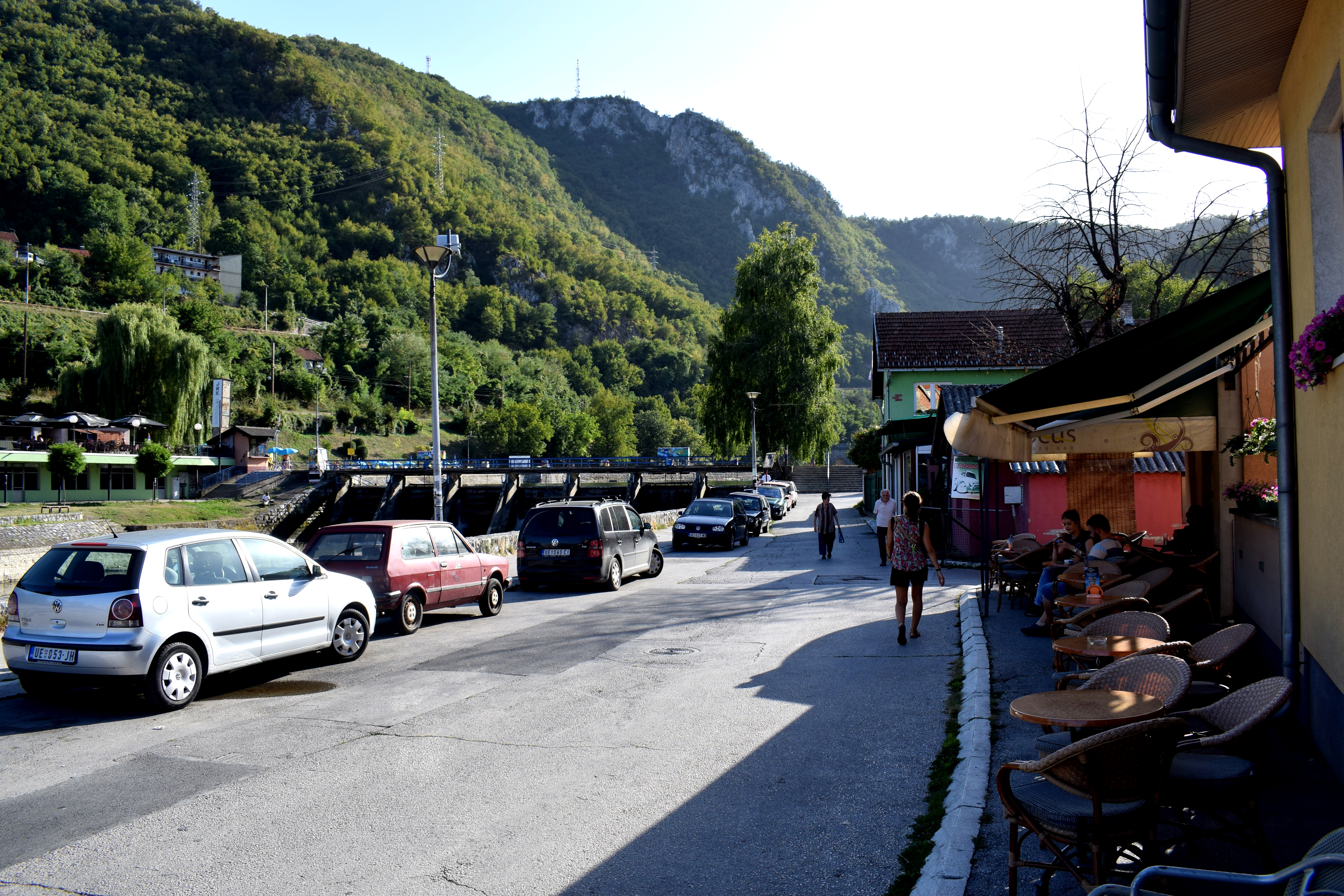 Not a lot of people were swimming in the water, but lots of people were out enjoying the sun.
Not a lot of people were swimming in the water, but lots of people were out enjoying the sun.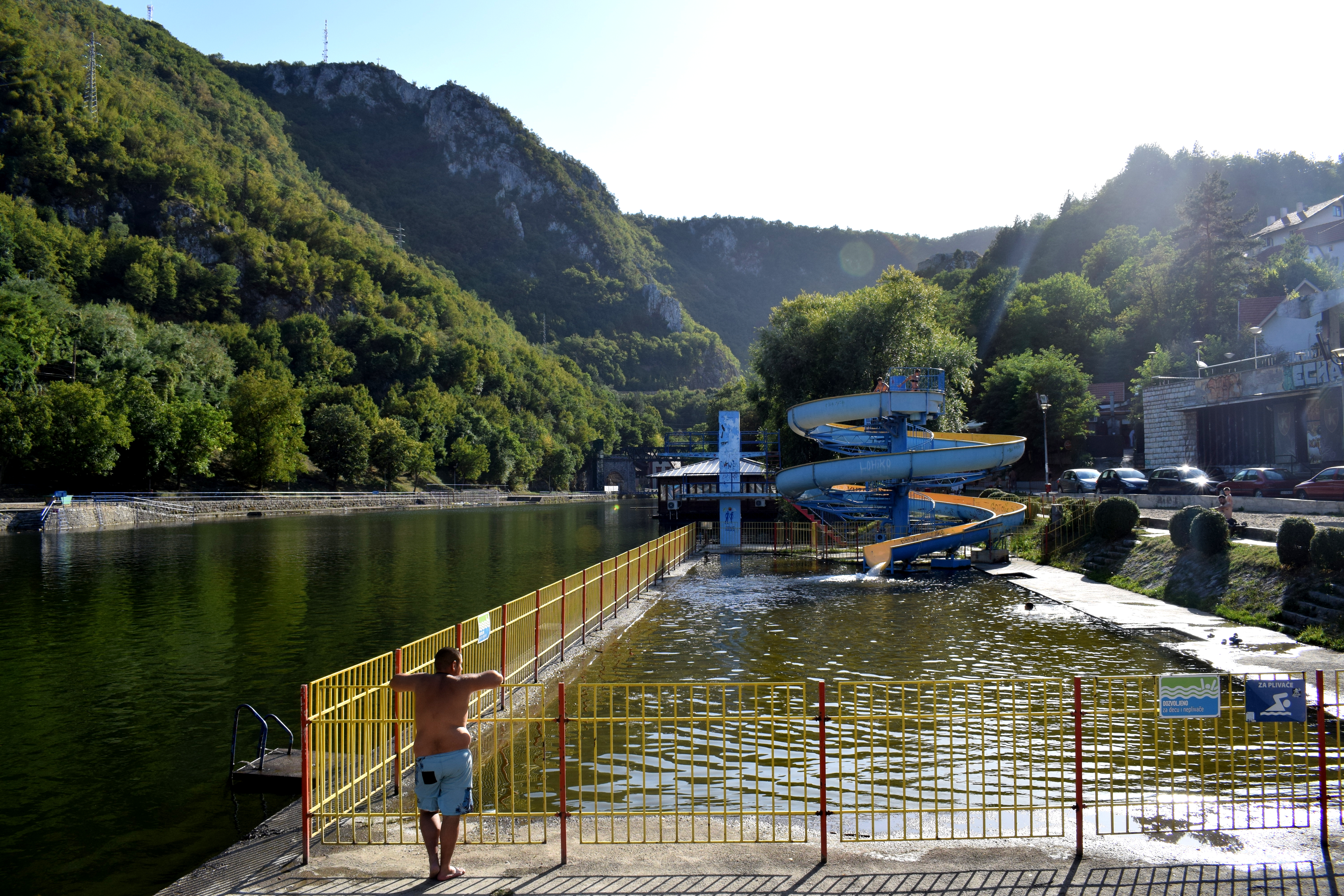 Playing sports.
Playing sports.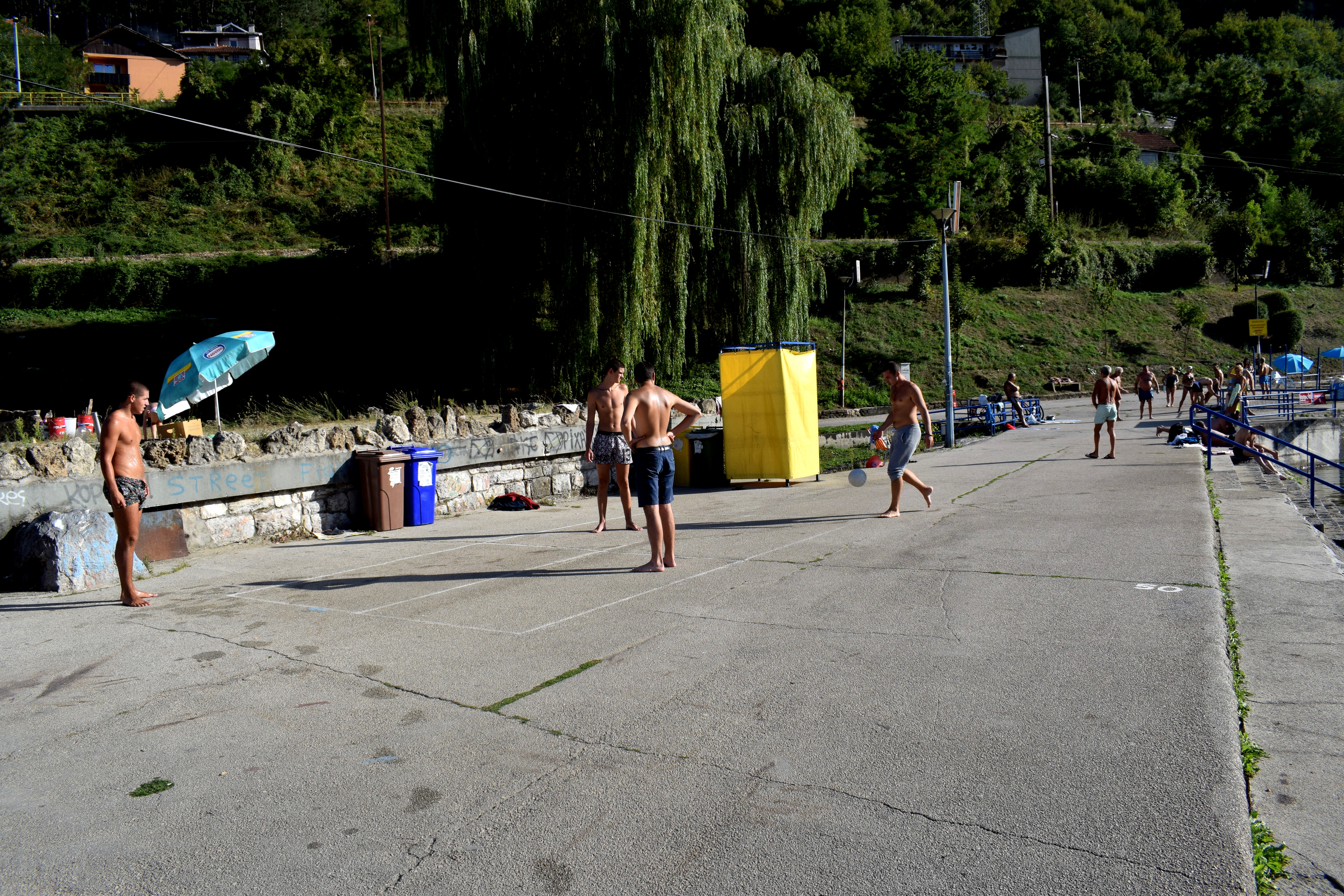 Occasionally fishing.
Occasionally fishing.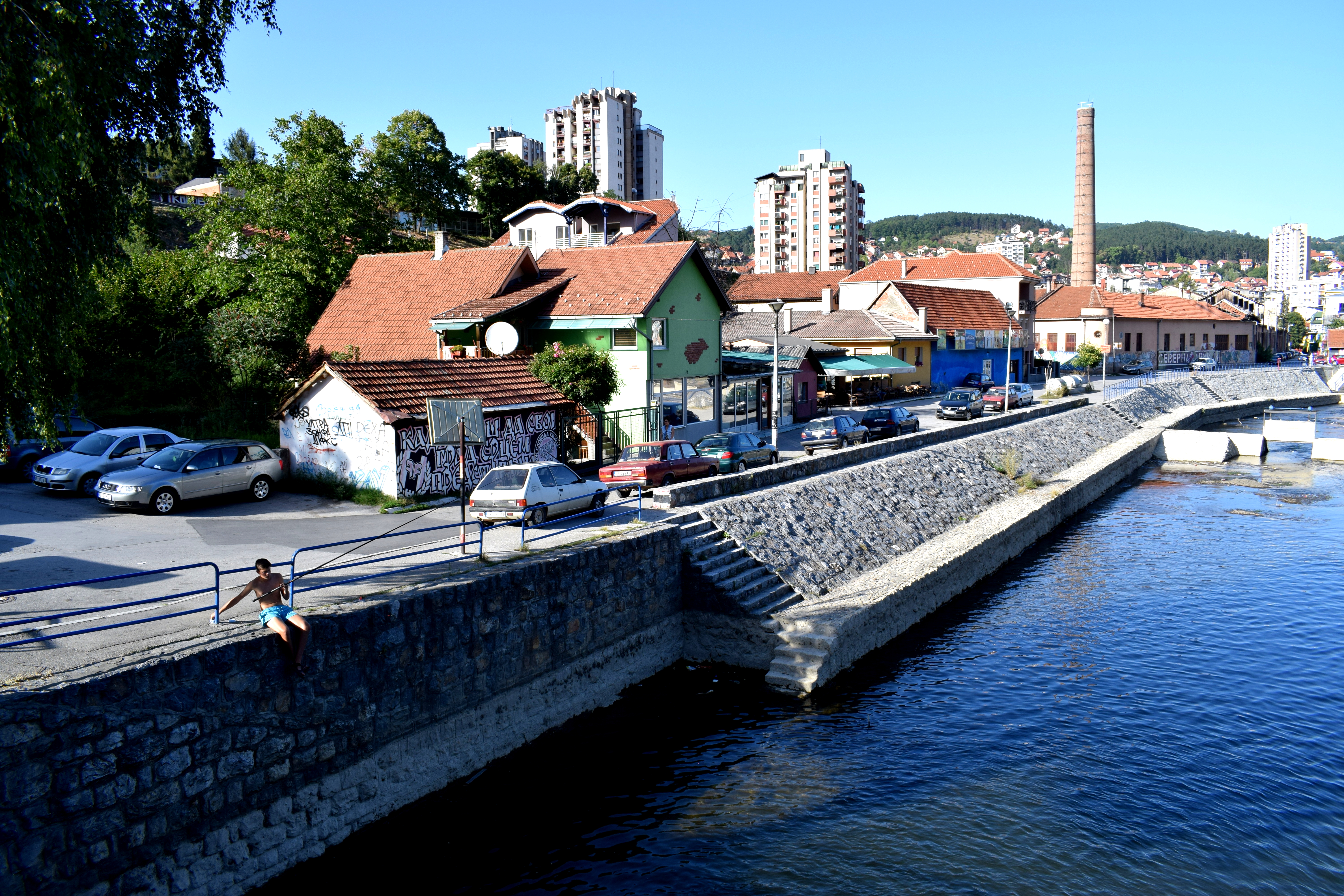 The embankment on the Djetinjia river near the dam.
The embankment on the Djetinjia river near the dam.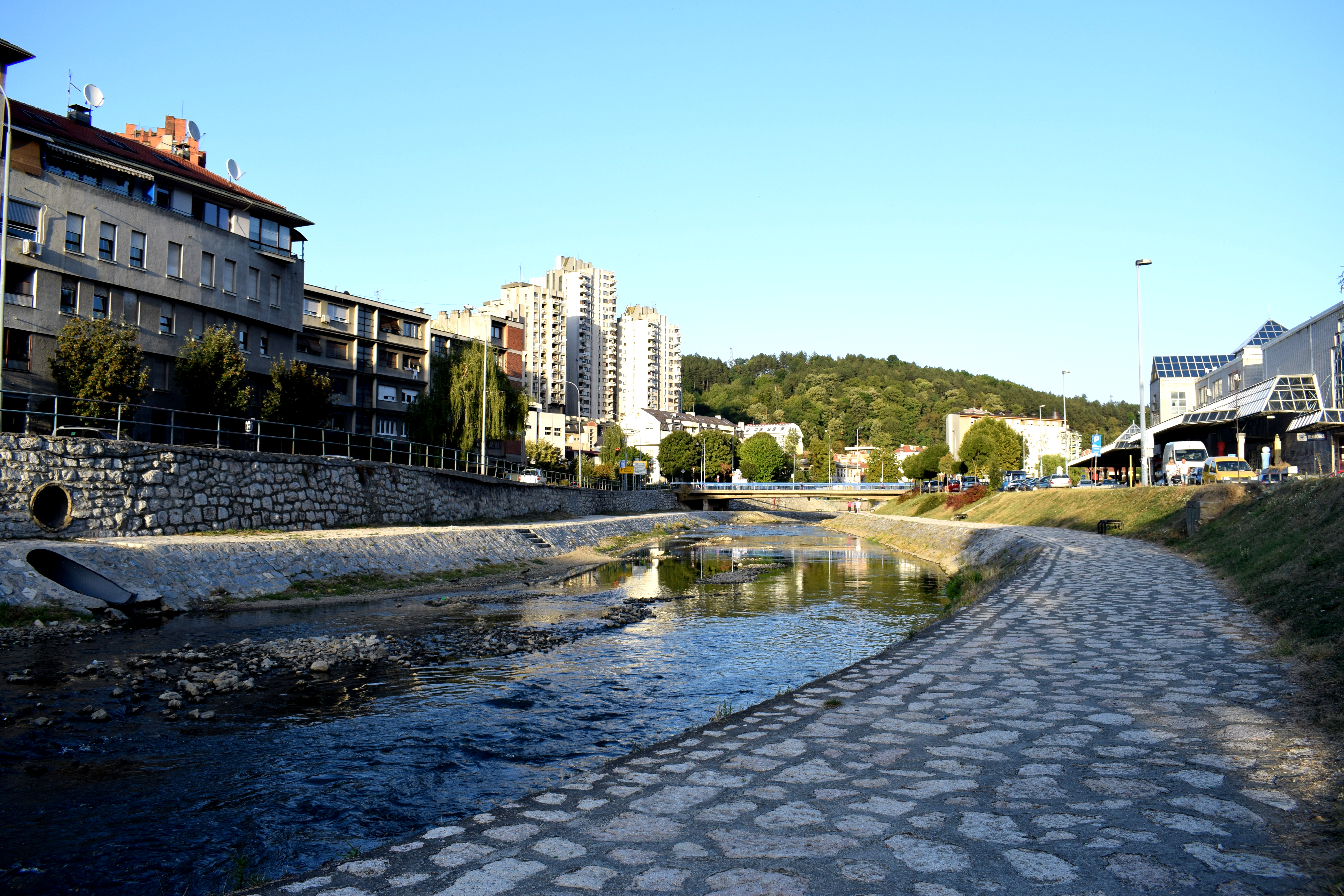 An old railway carriage converted into a restaurant.
An old railway carriage converted into a restaurant.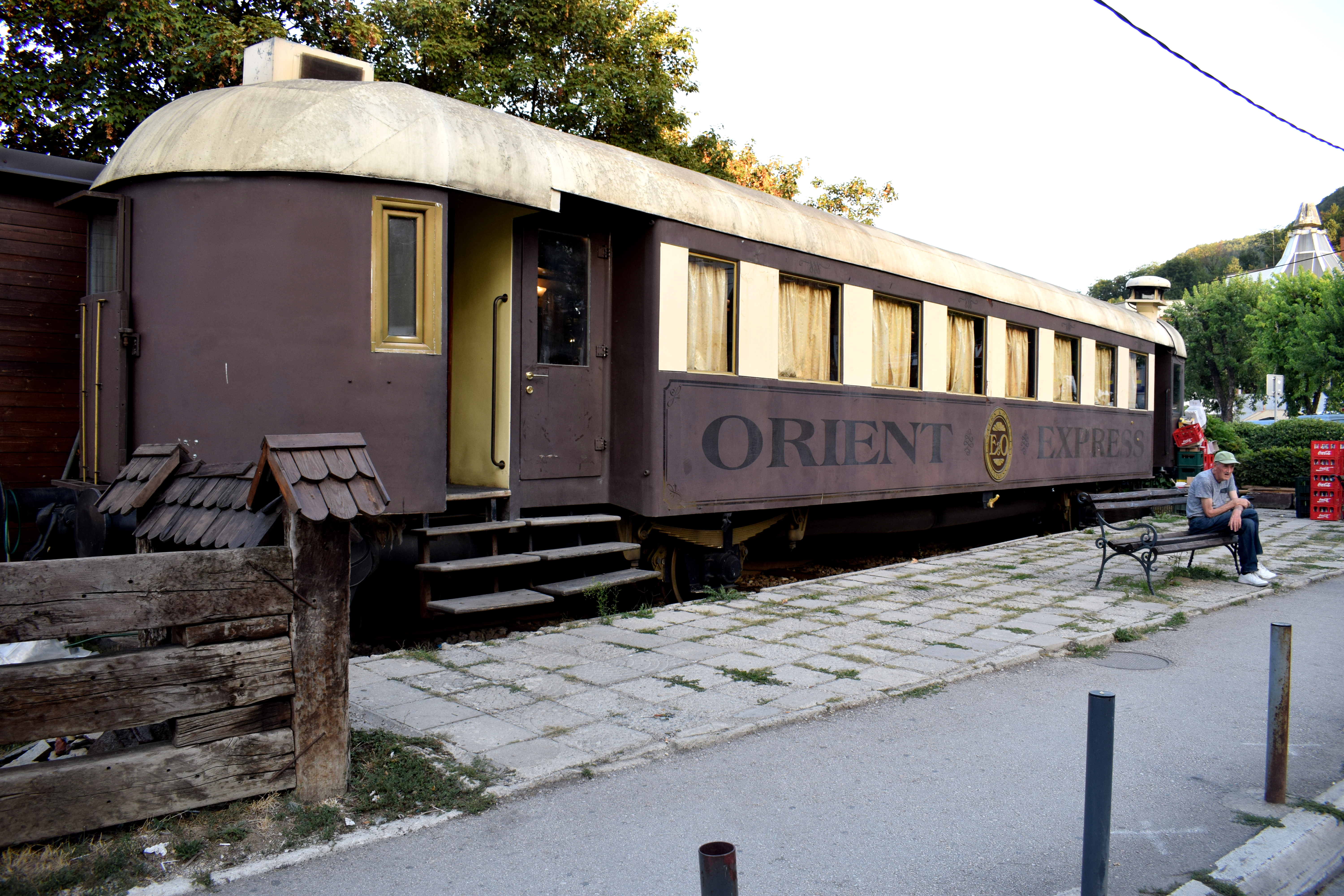 Kid’s playing in the center by the river.
Kid’s playing in the center by the river.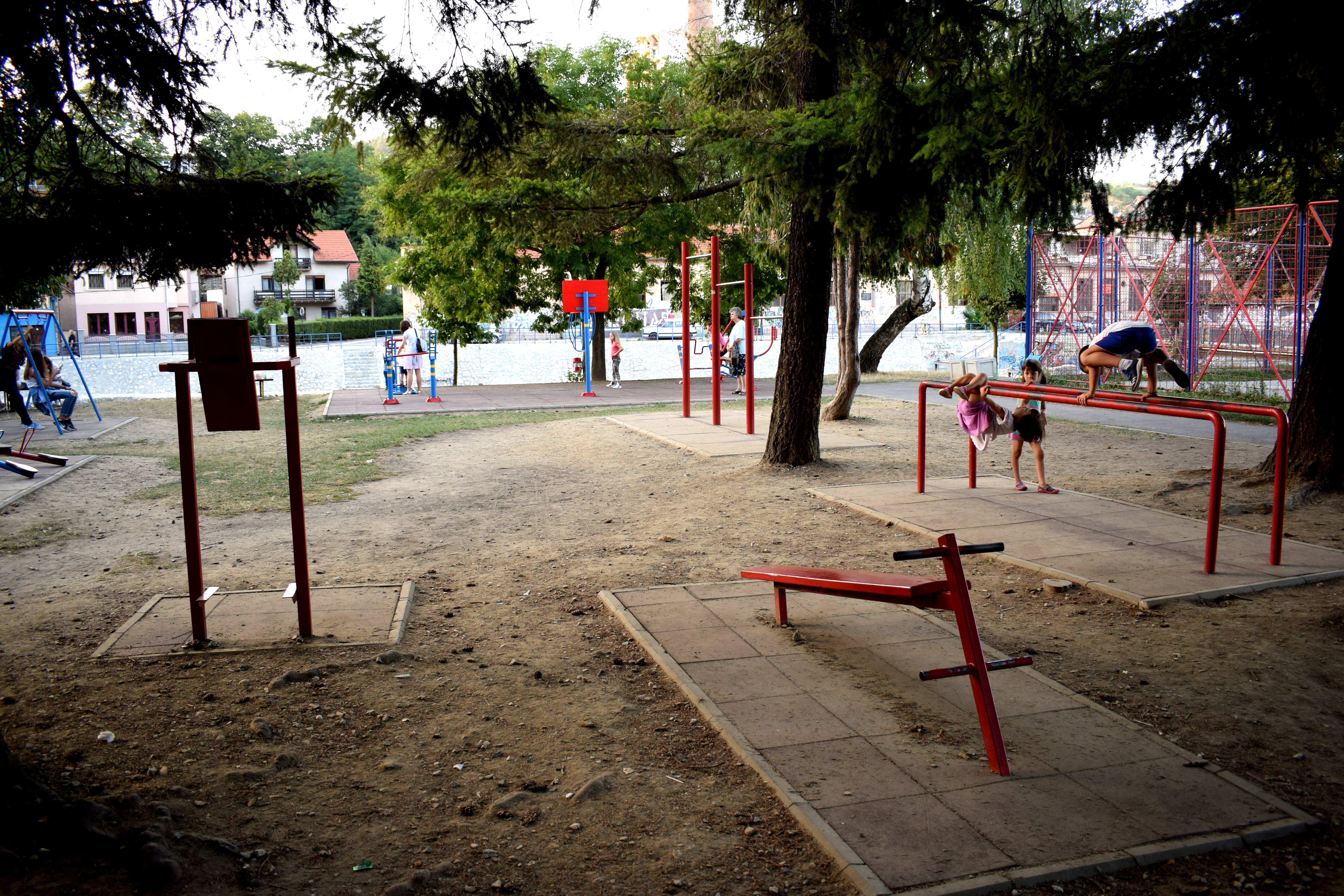 Walking toward the Hydroelectric dam. The Uzice Fortress is situation on top of the steep hill.
Walking toward the Hydroelectric dam. The Uzice Fortress is situation on top of the steep hill.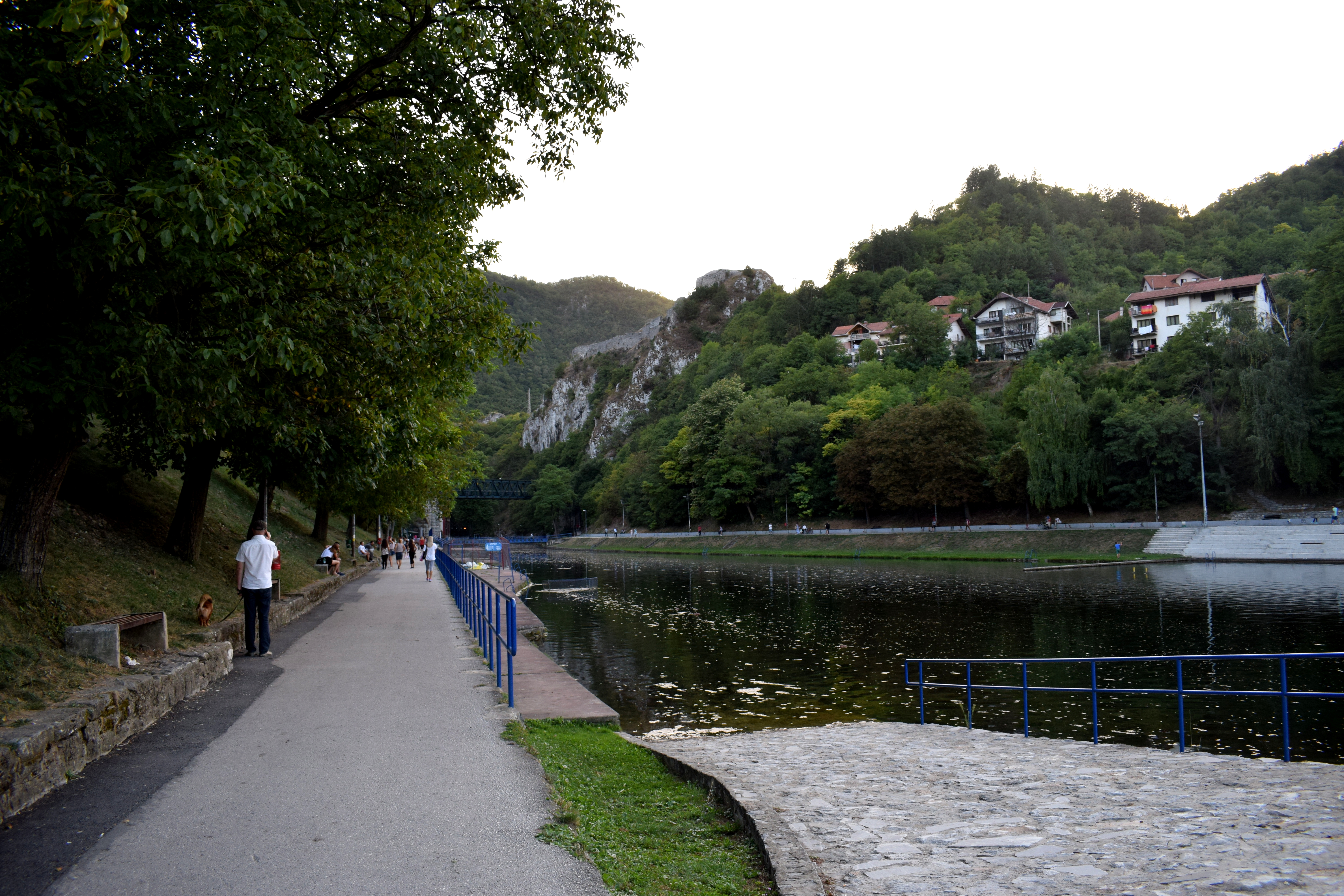 The first hydroelectric dam built in Serbia and one of the first in Europe is in Uzice, built in 1900. It was built using the same principles Nikola Tesla used to power the Niagara Falls dam.
The first hydroelectric dam built in Serbia and one of the first in Europe is in Uzice, built in 1900. It was built using the same principles Nikola Tesla used to power the Niagara Falls dam.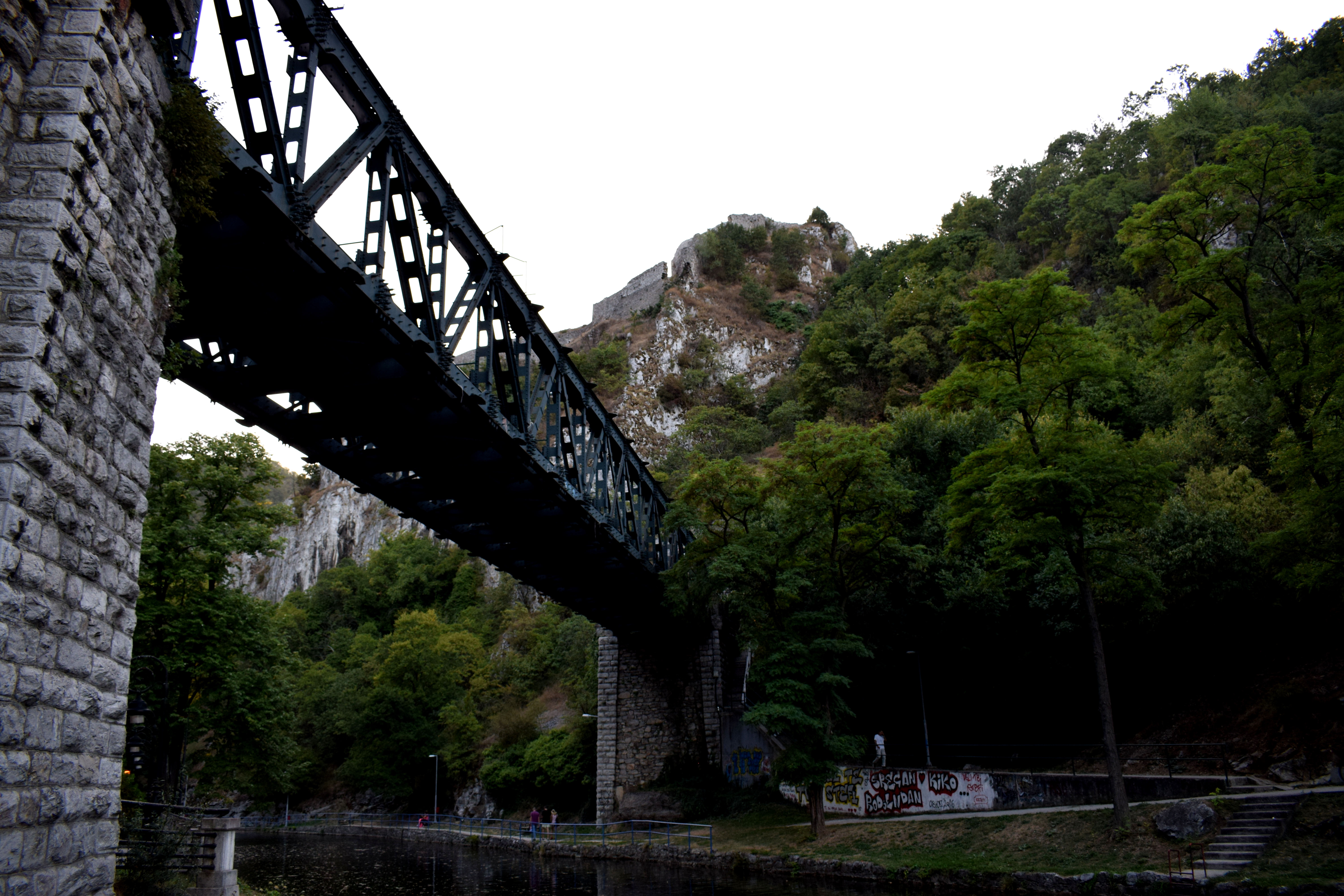 Uzice’s old upper town fortress is located above the dam at the top of the hill.
Uzice’s old upper town fortress is located above the dam at the top of the hill.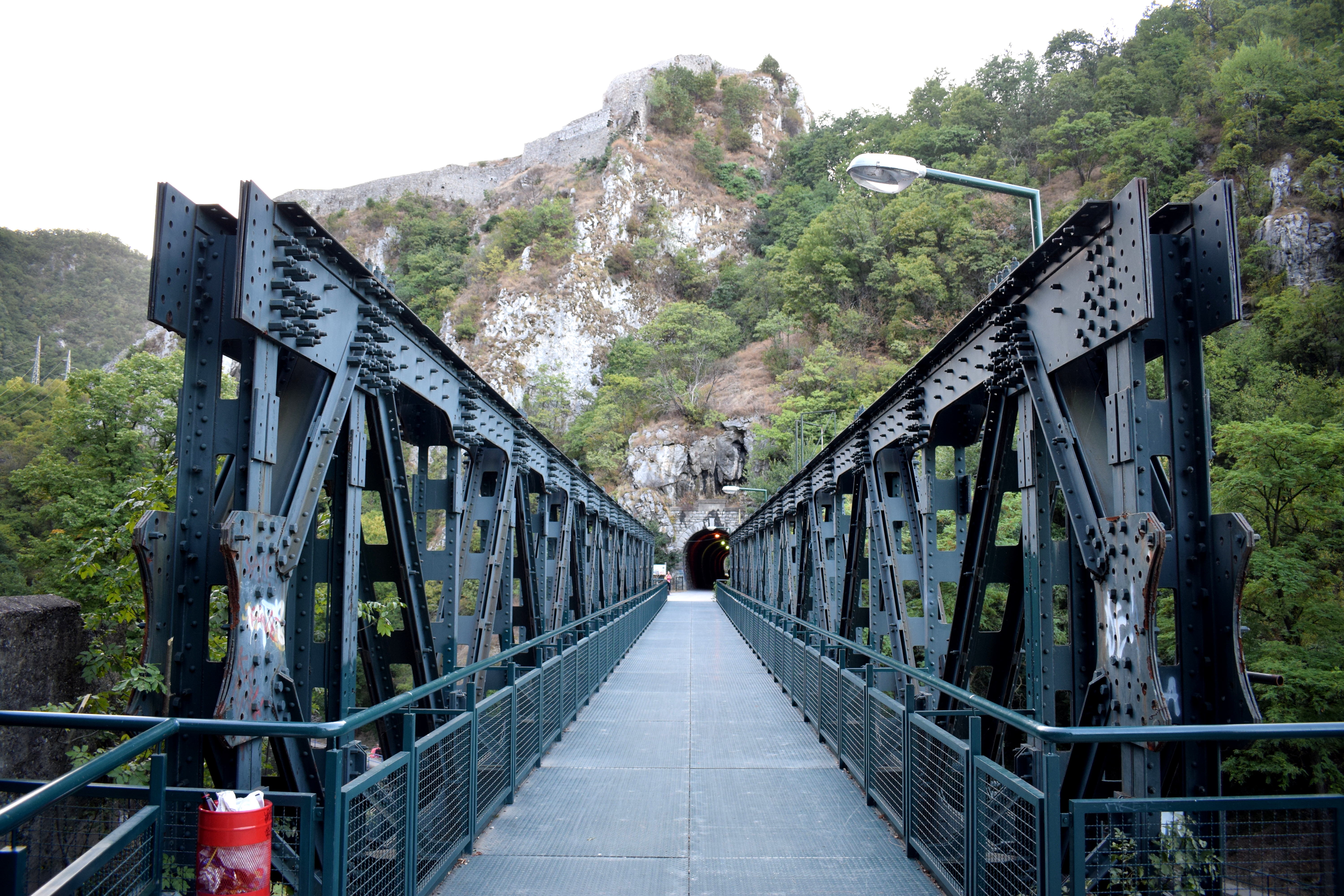 The tunnel above the hill has now been converted into a nature walkway spanning several kilometers using old WWII bunkers that were neglected until recently.
The tunnel above the hill has now been converted into a nature walkway spanning several kilometers using old WWII bunkers that were neglected until recently.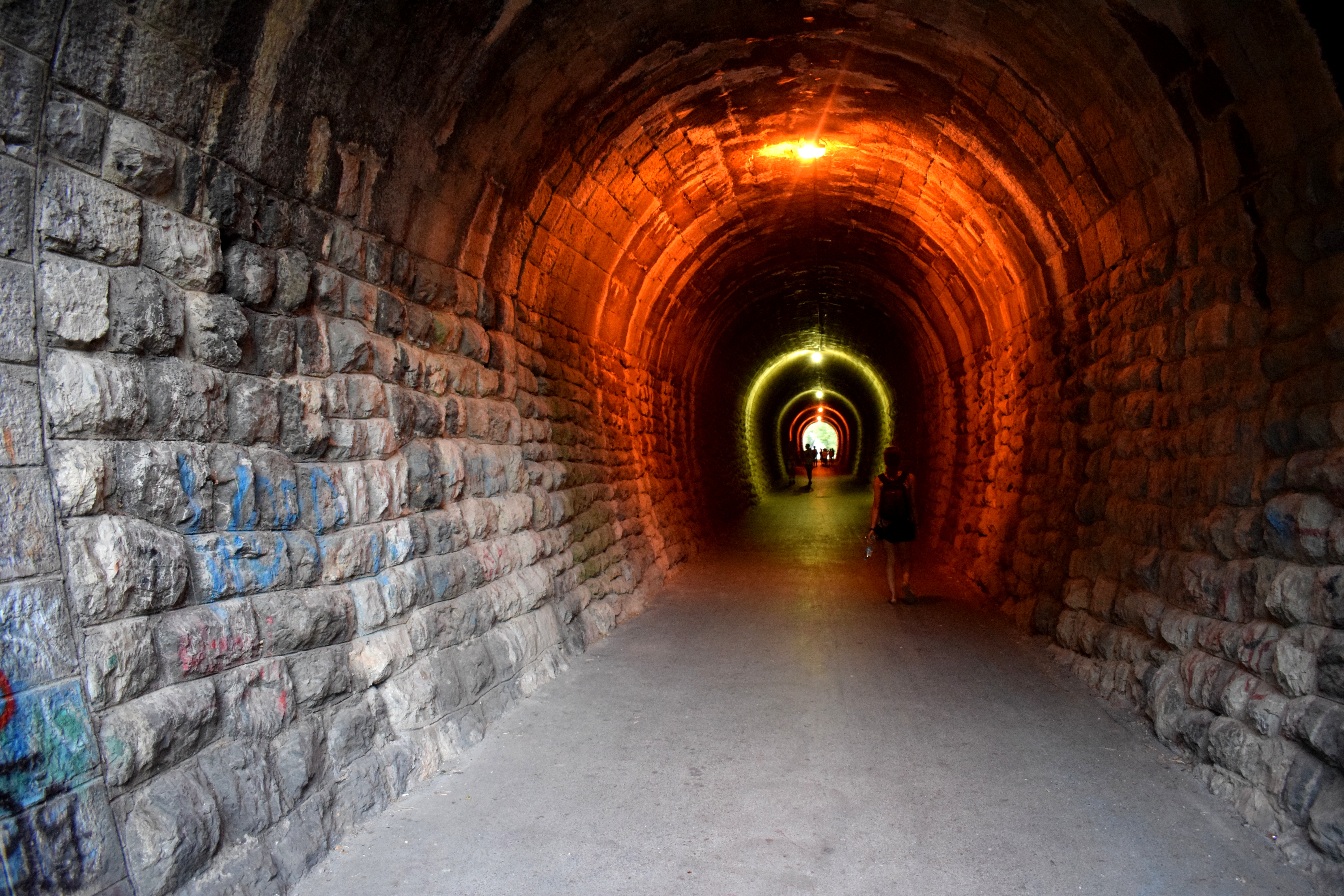 There are plans to extend the path several more kilometers and turn it into a full-scale cycling path.
There are plans to extend the path several more kilometers and turn it into a full-scale cycling path.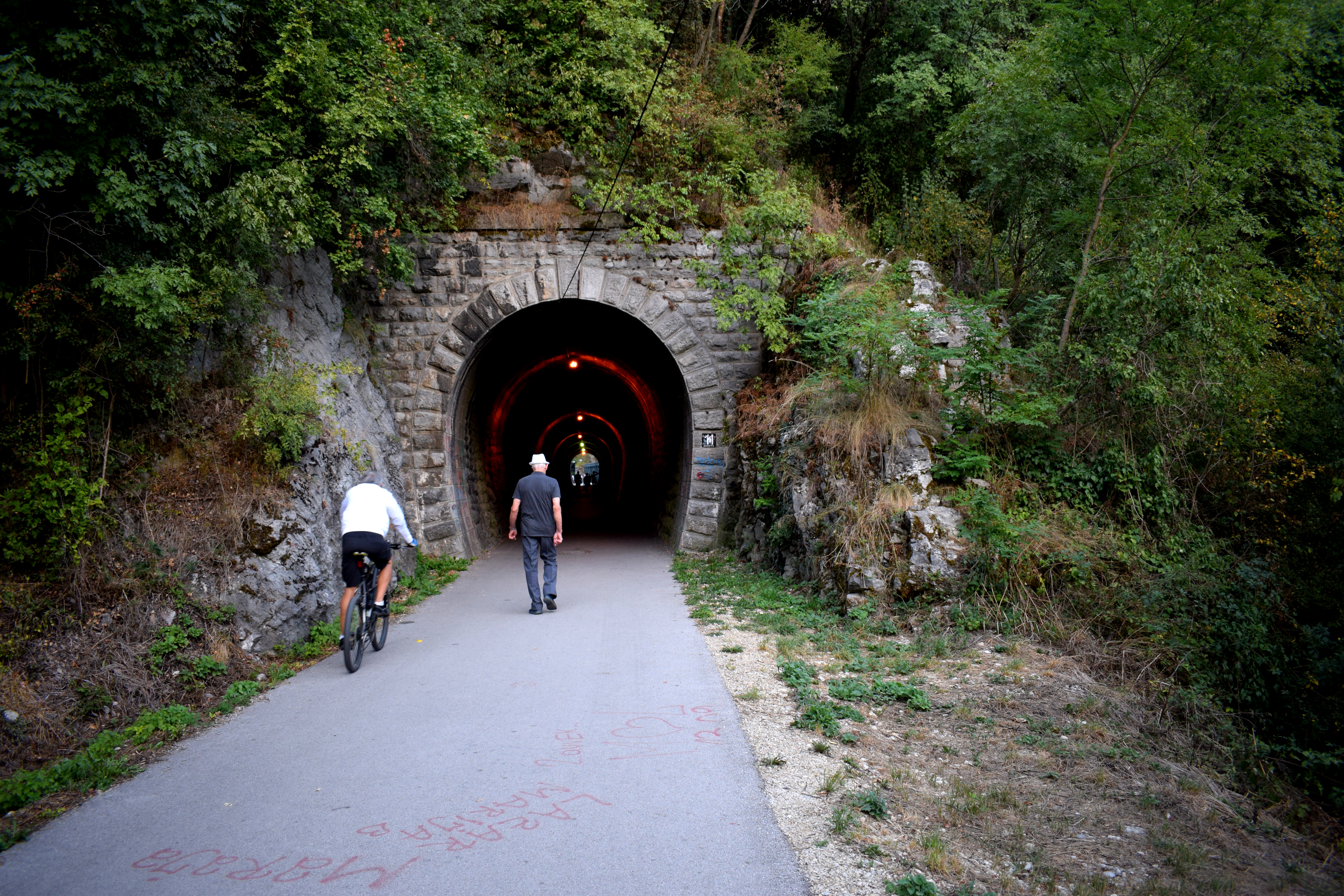 Despite being over 100 years old, the dam still operates today.
Despite being over 100 years old, the dam still operates today.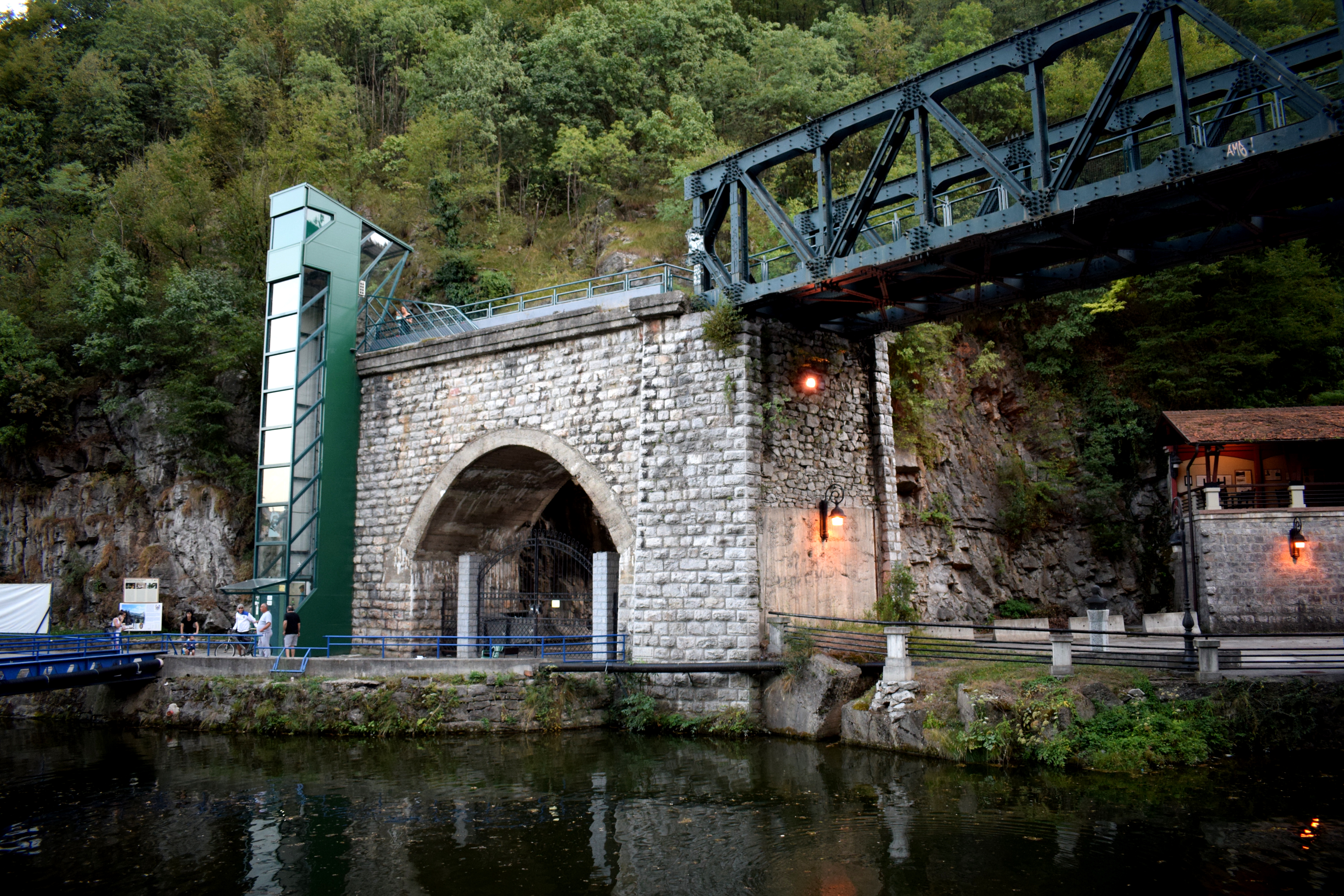
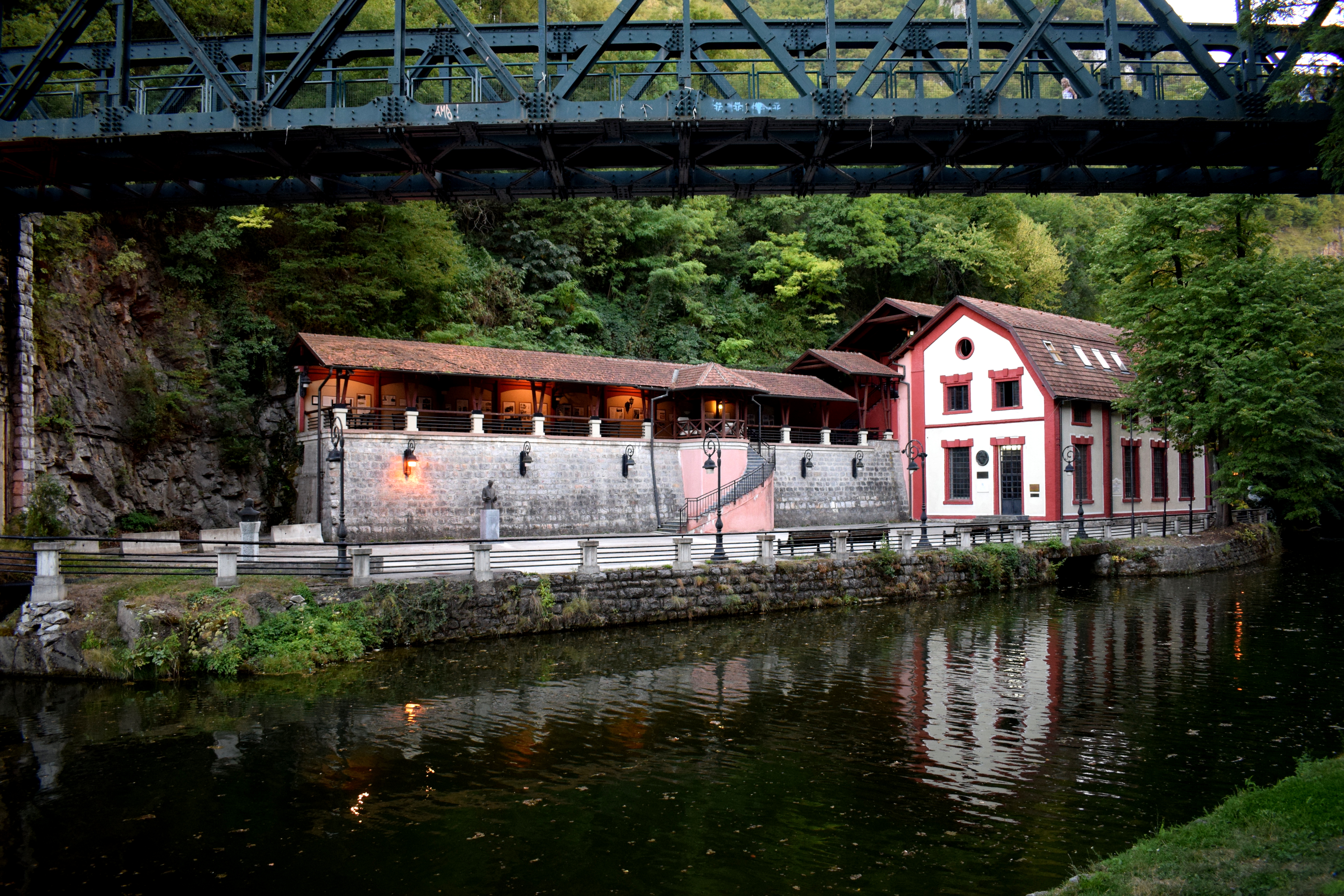 The mountains surrounding Uzice.
The mountains surrounding Uzice.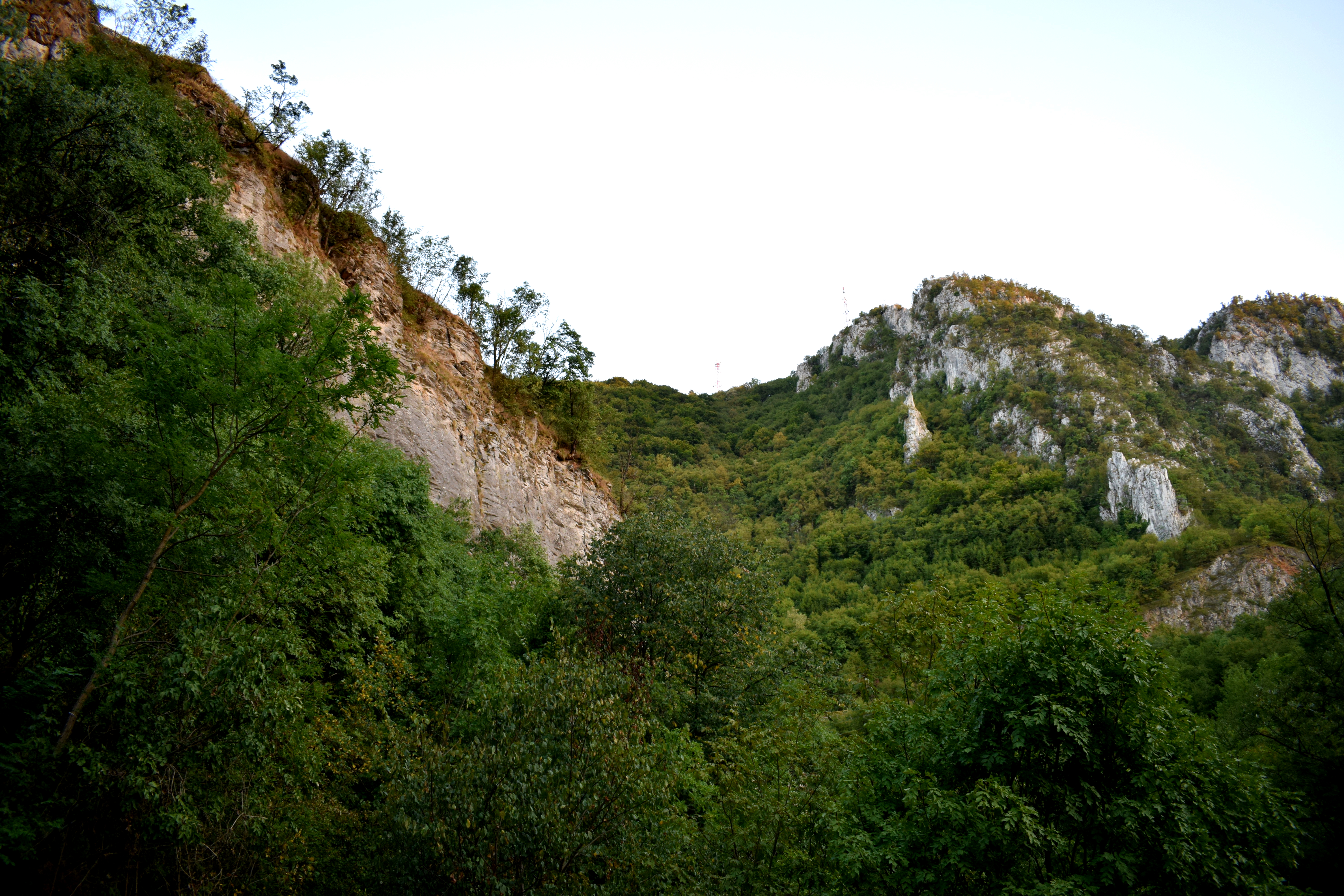
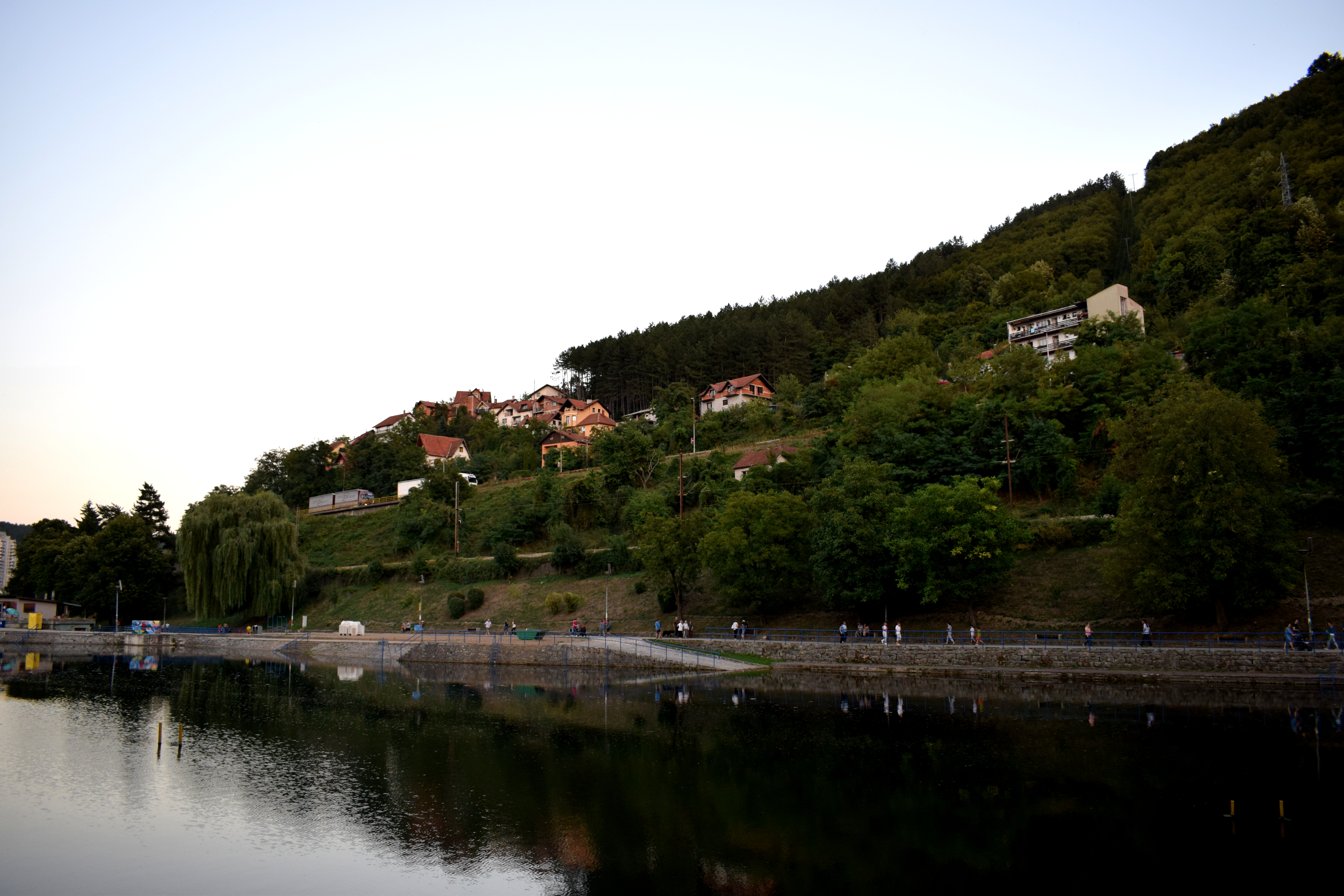 Back in the center at Dimitri Tucovic Street.
Back in the center at Dimitri Tucovic Street.